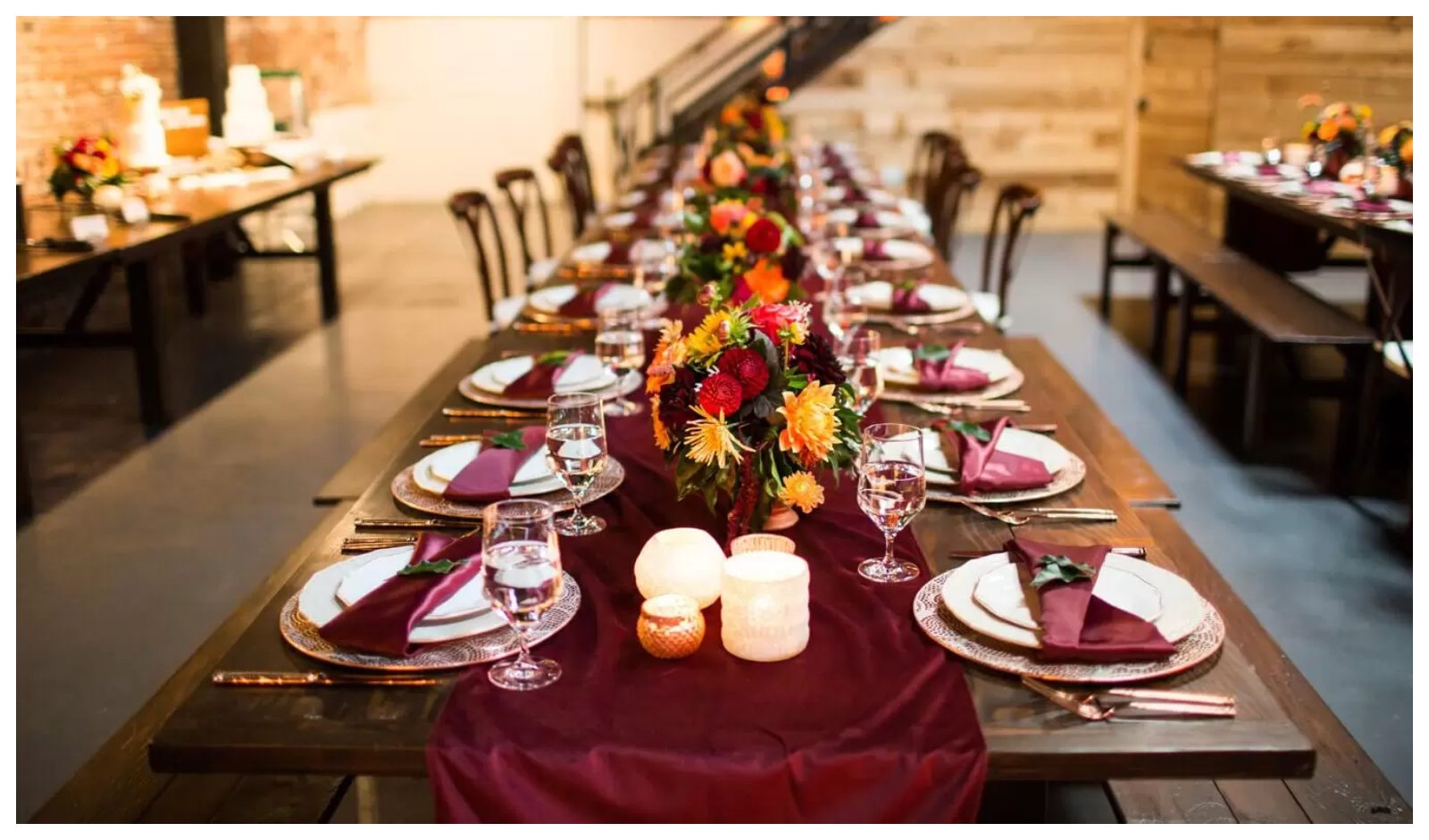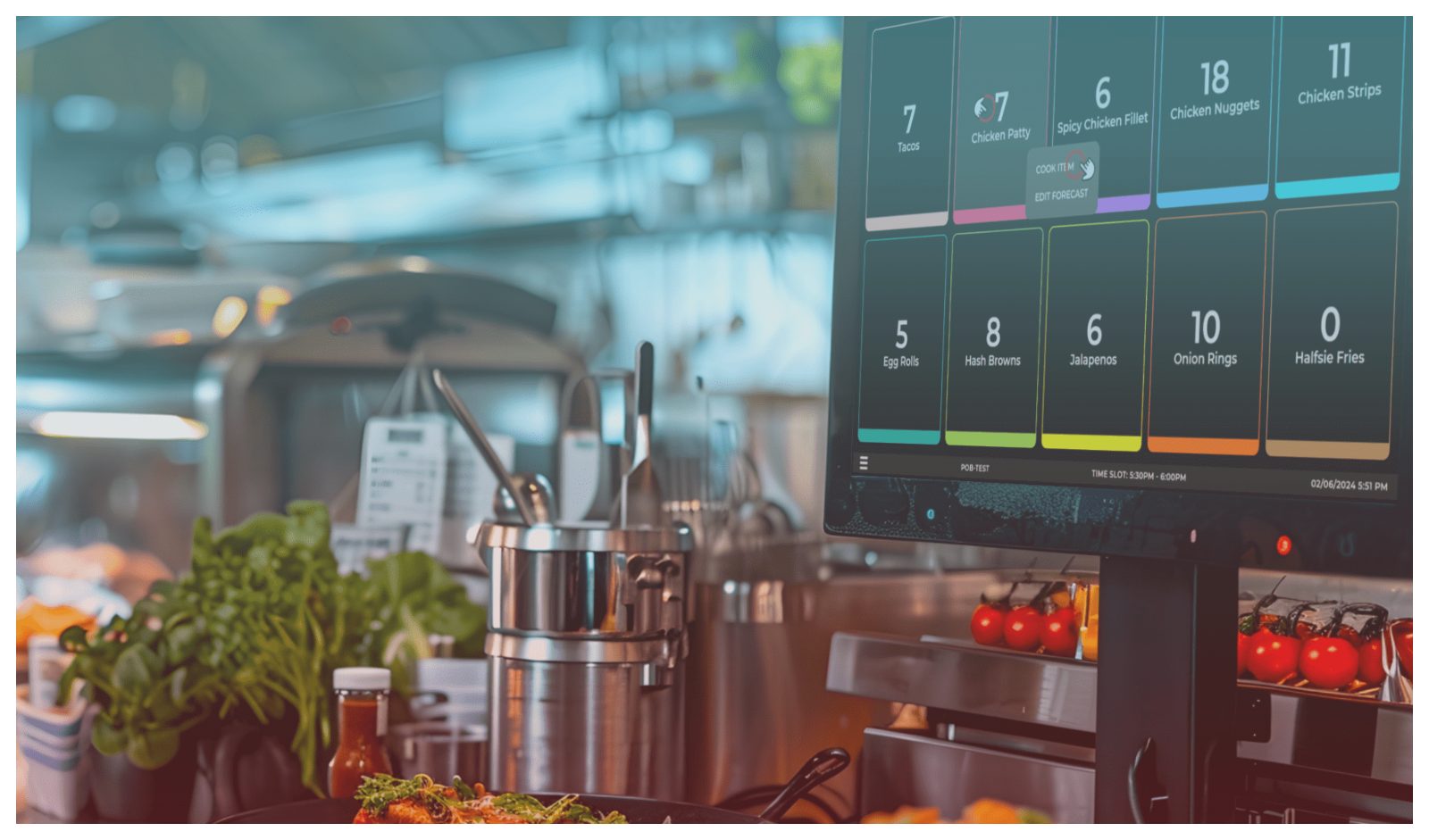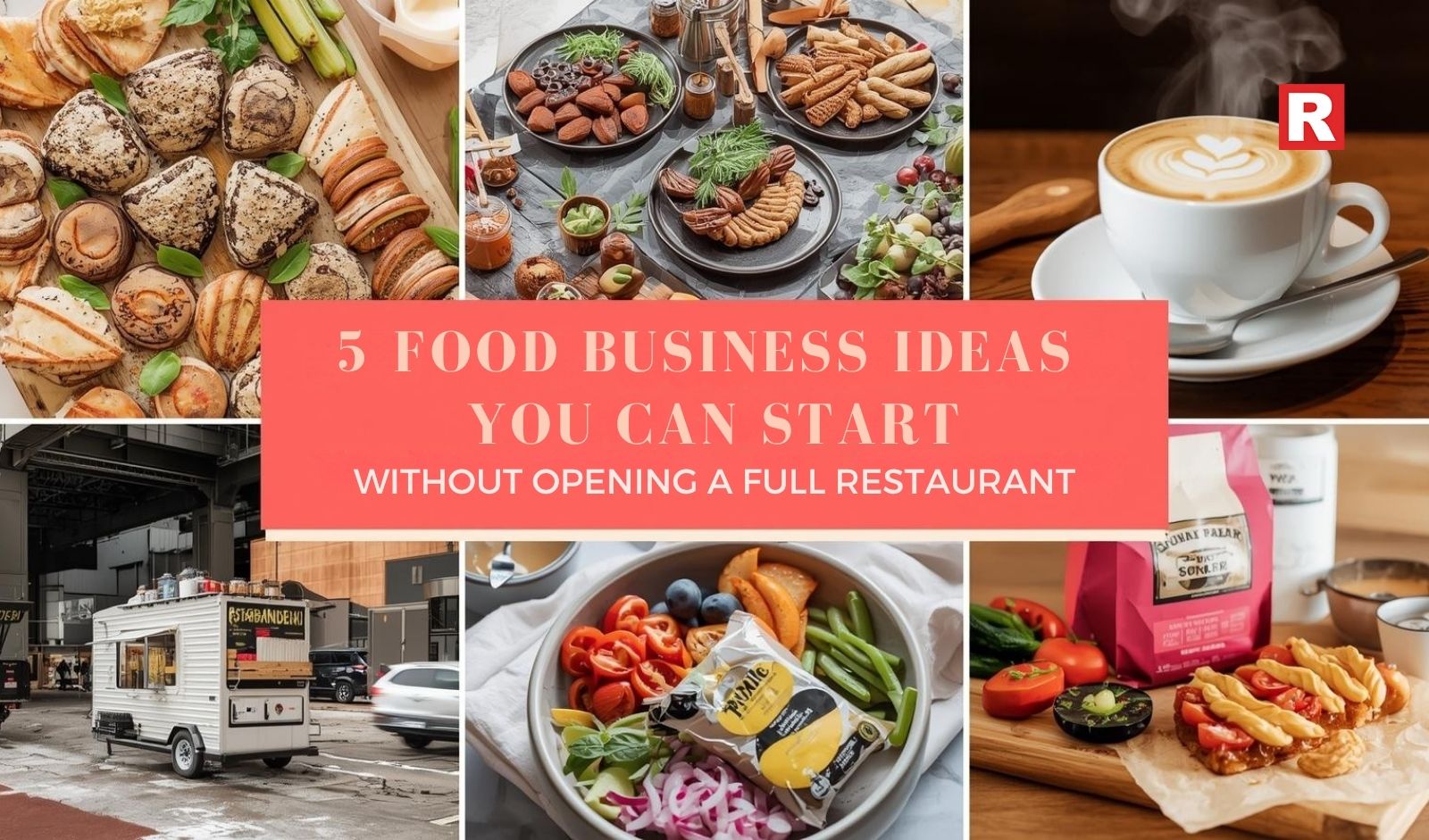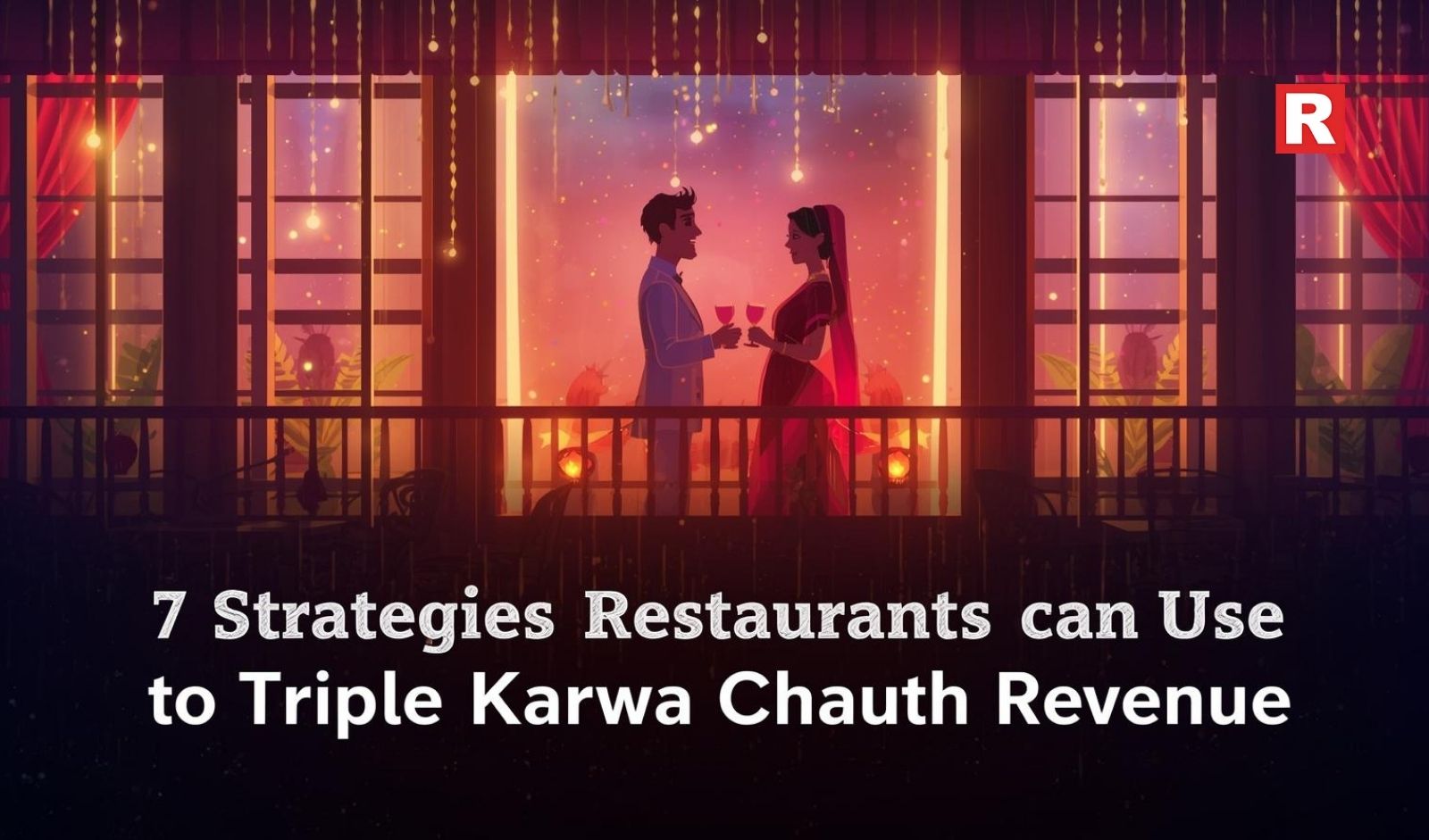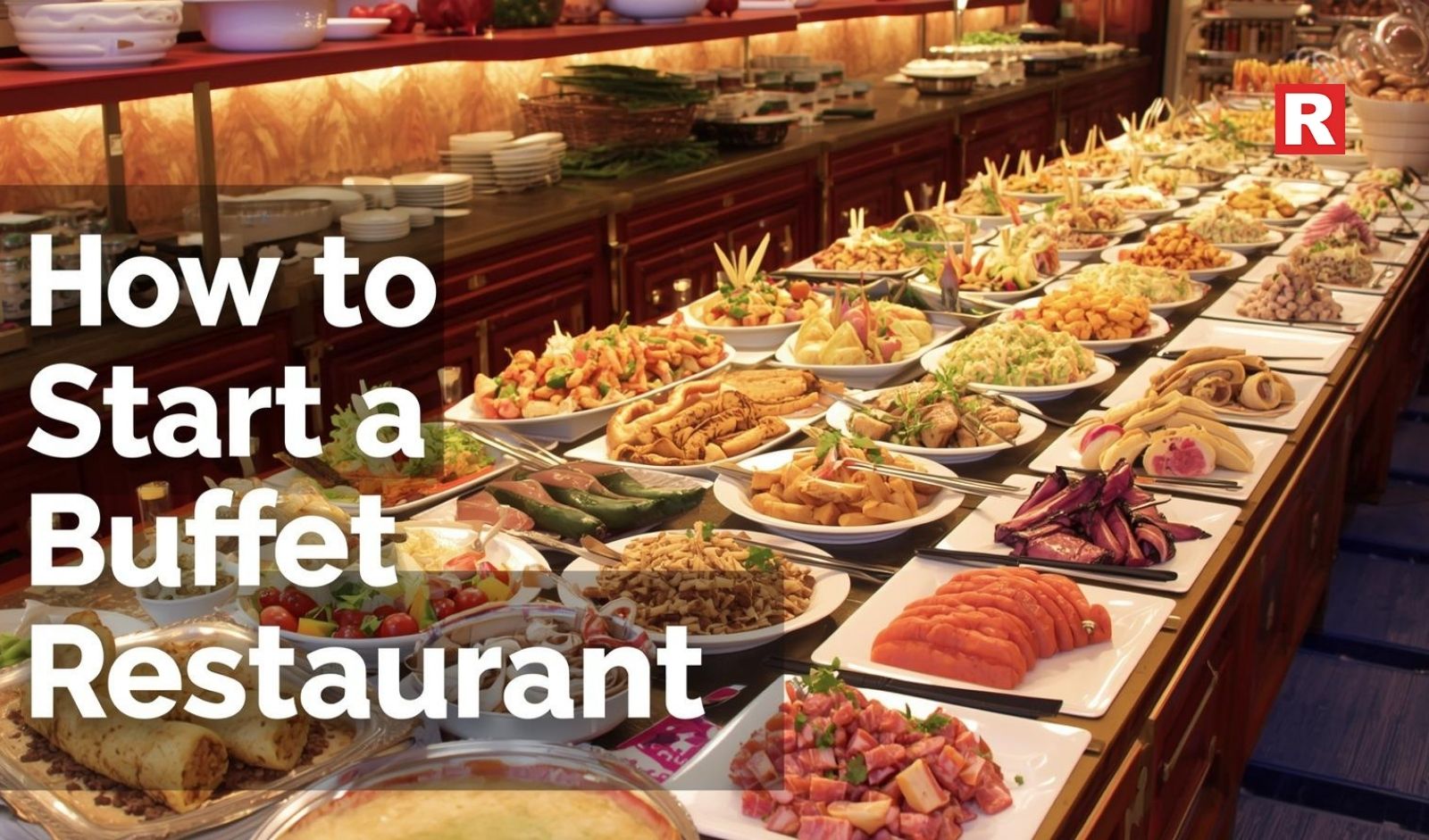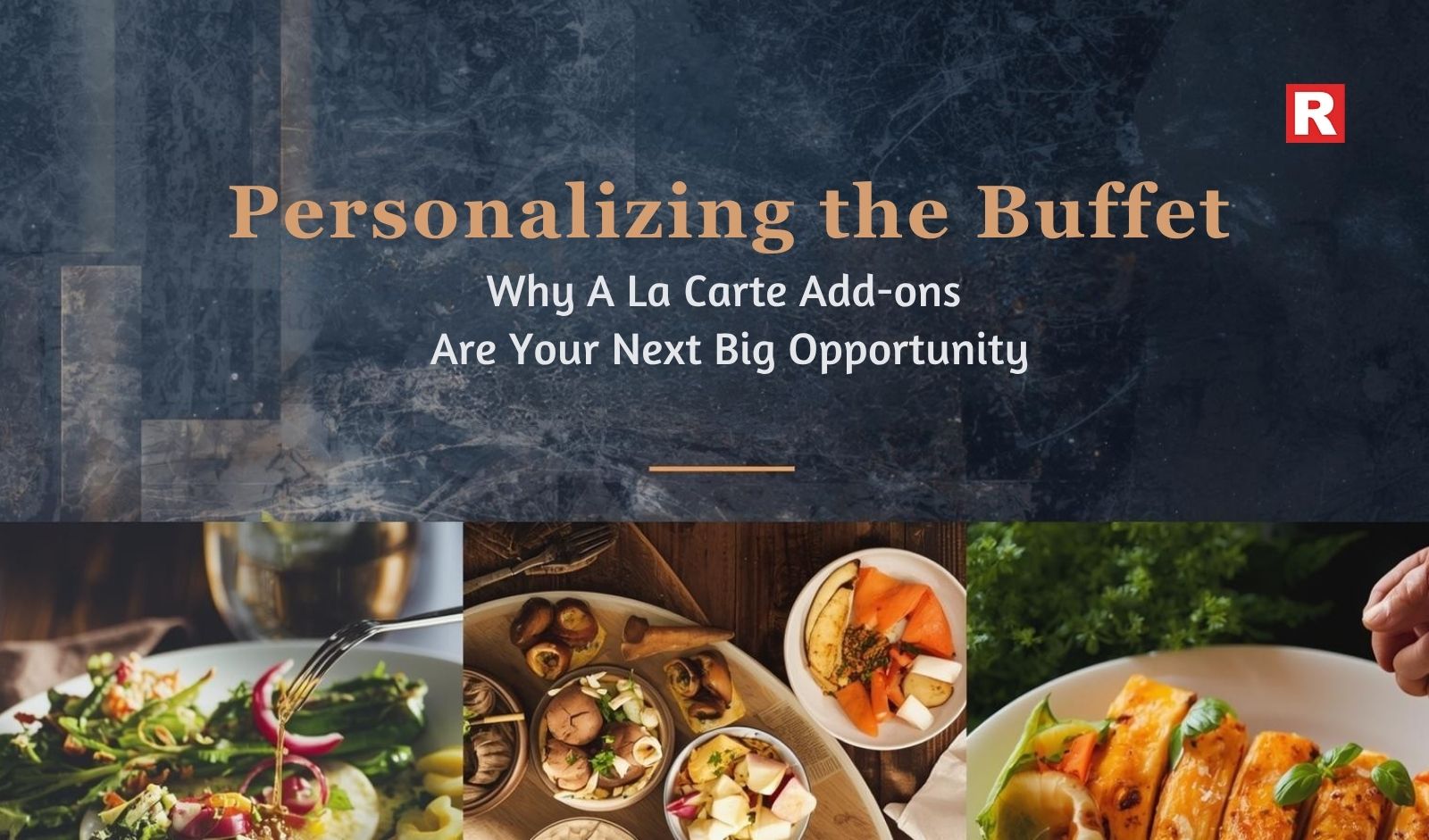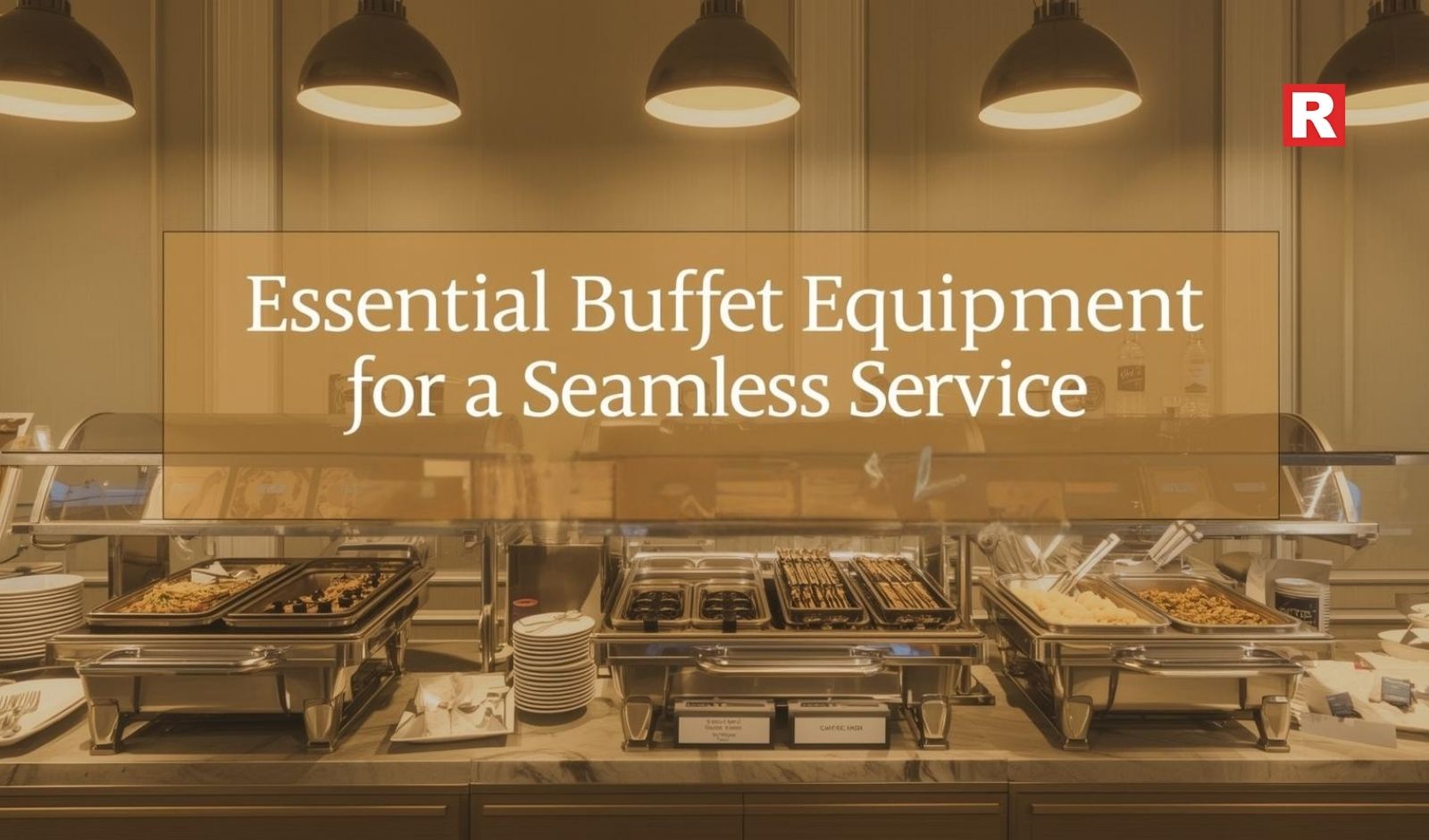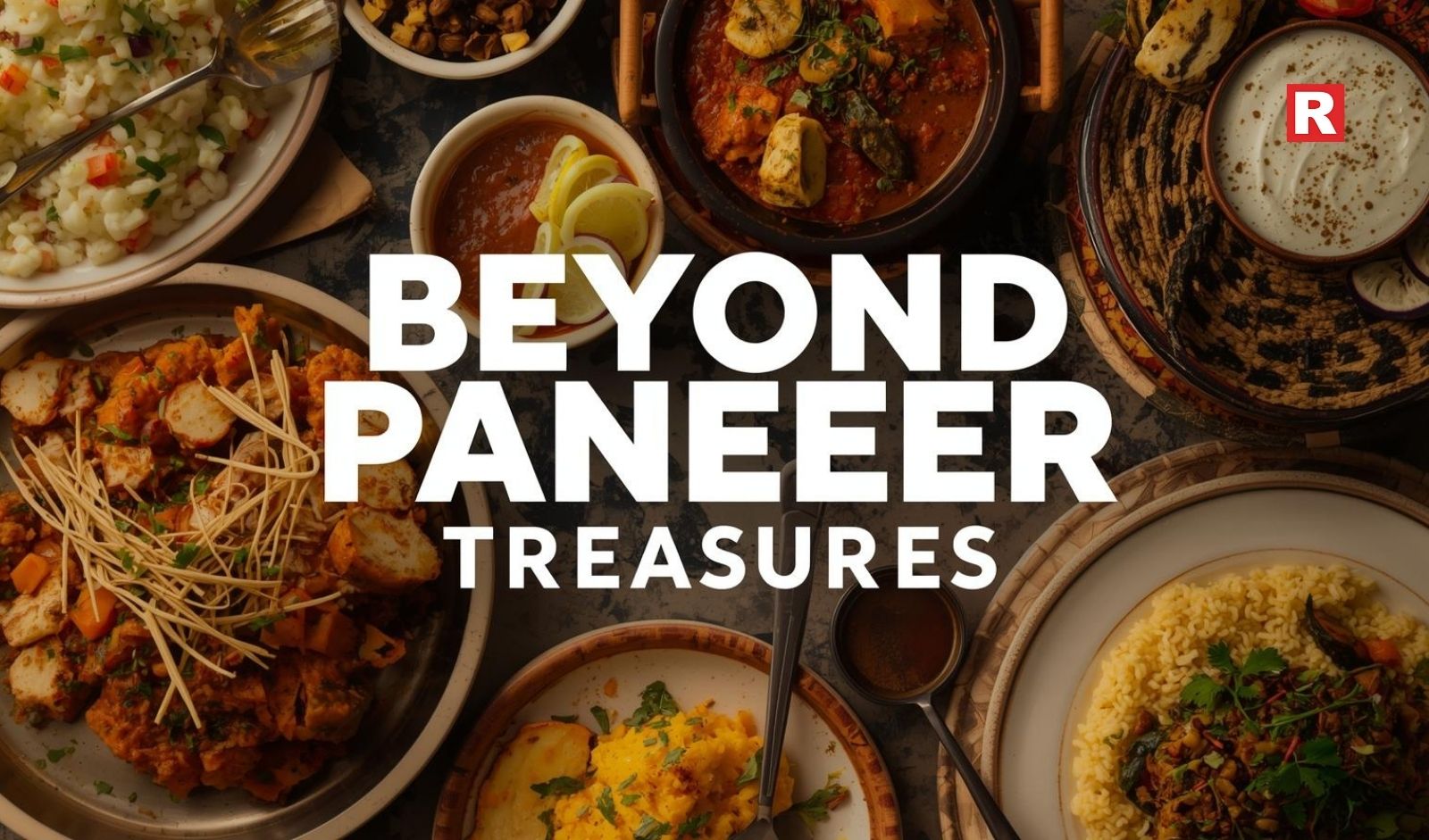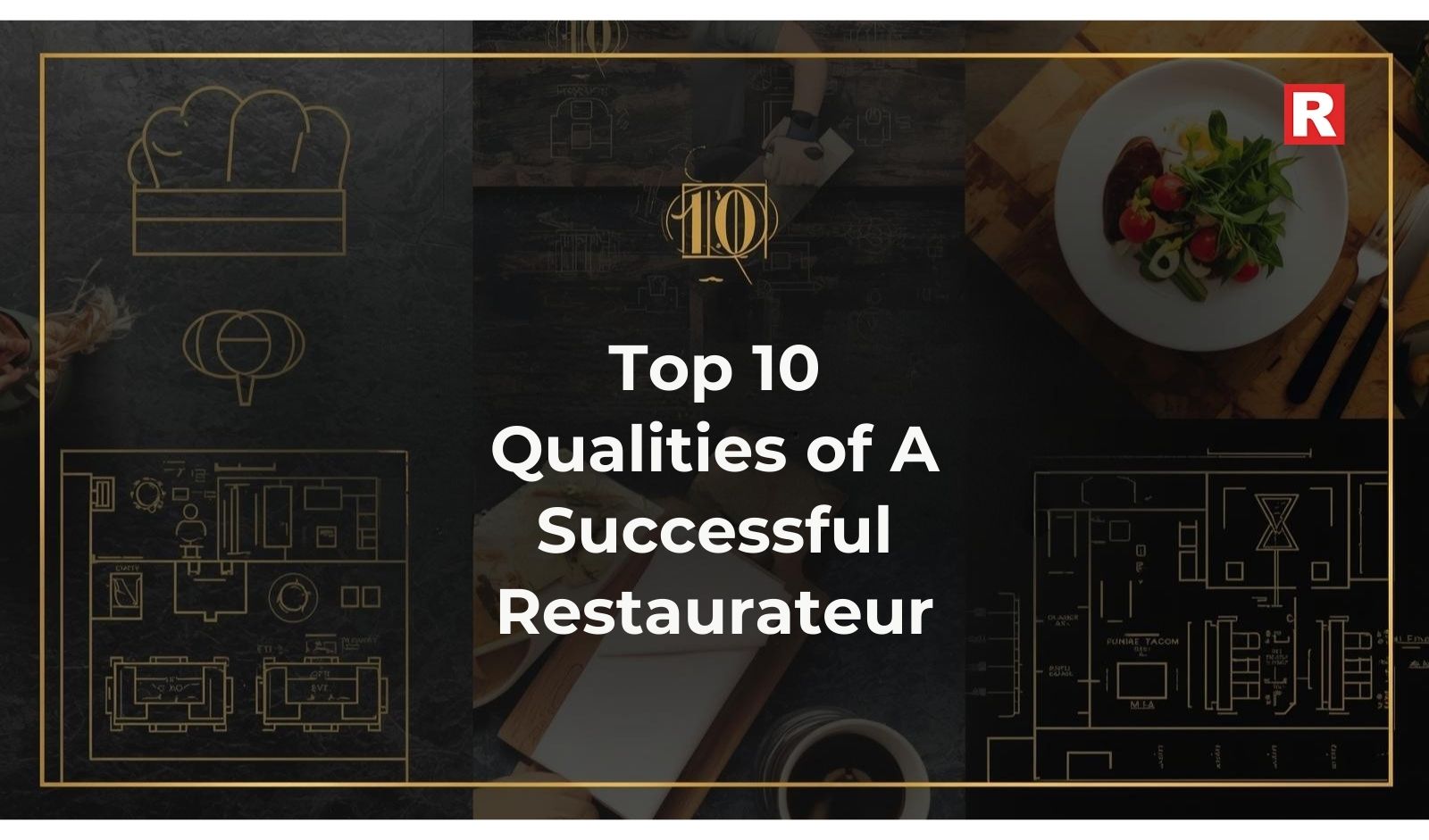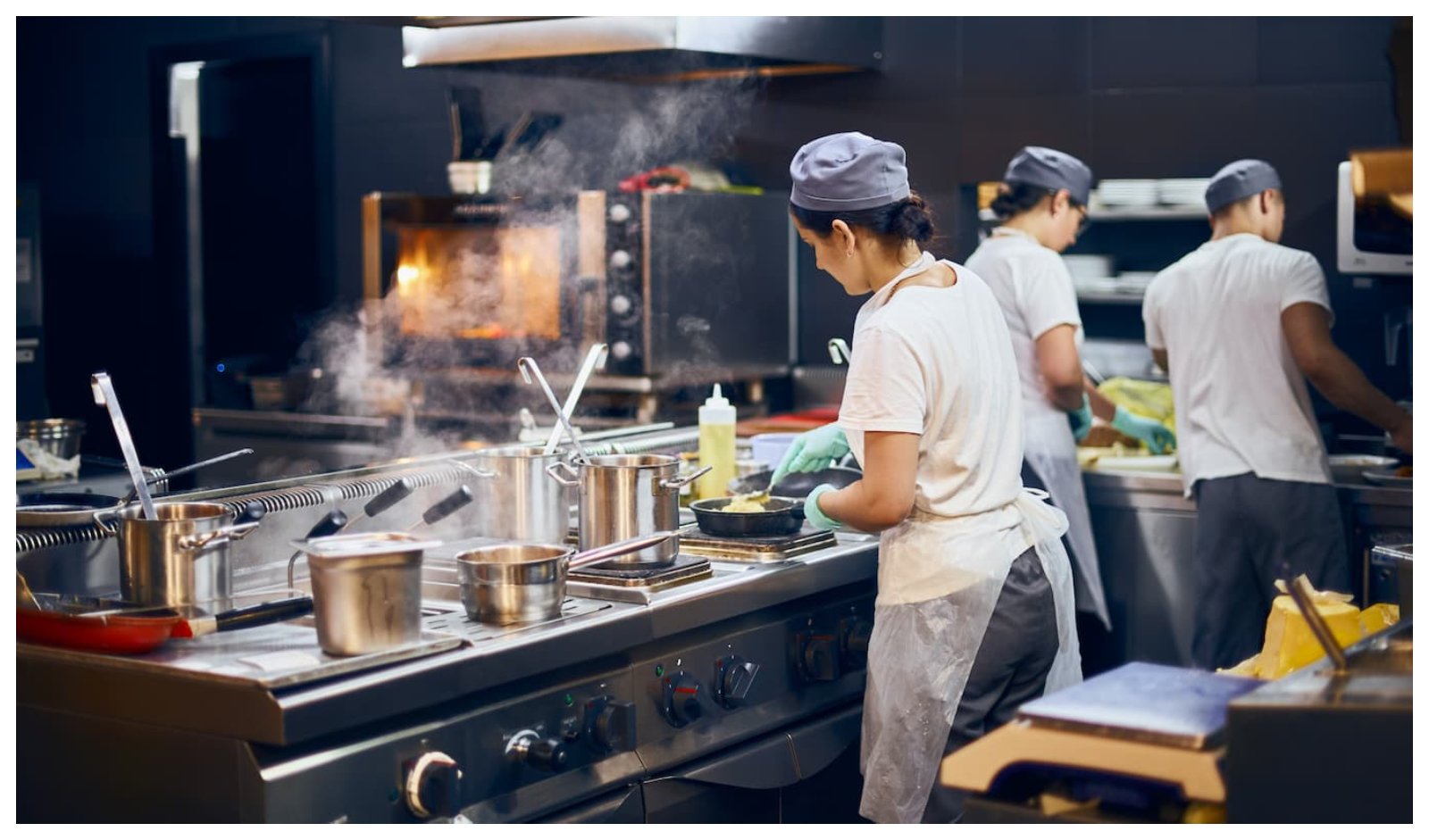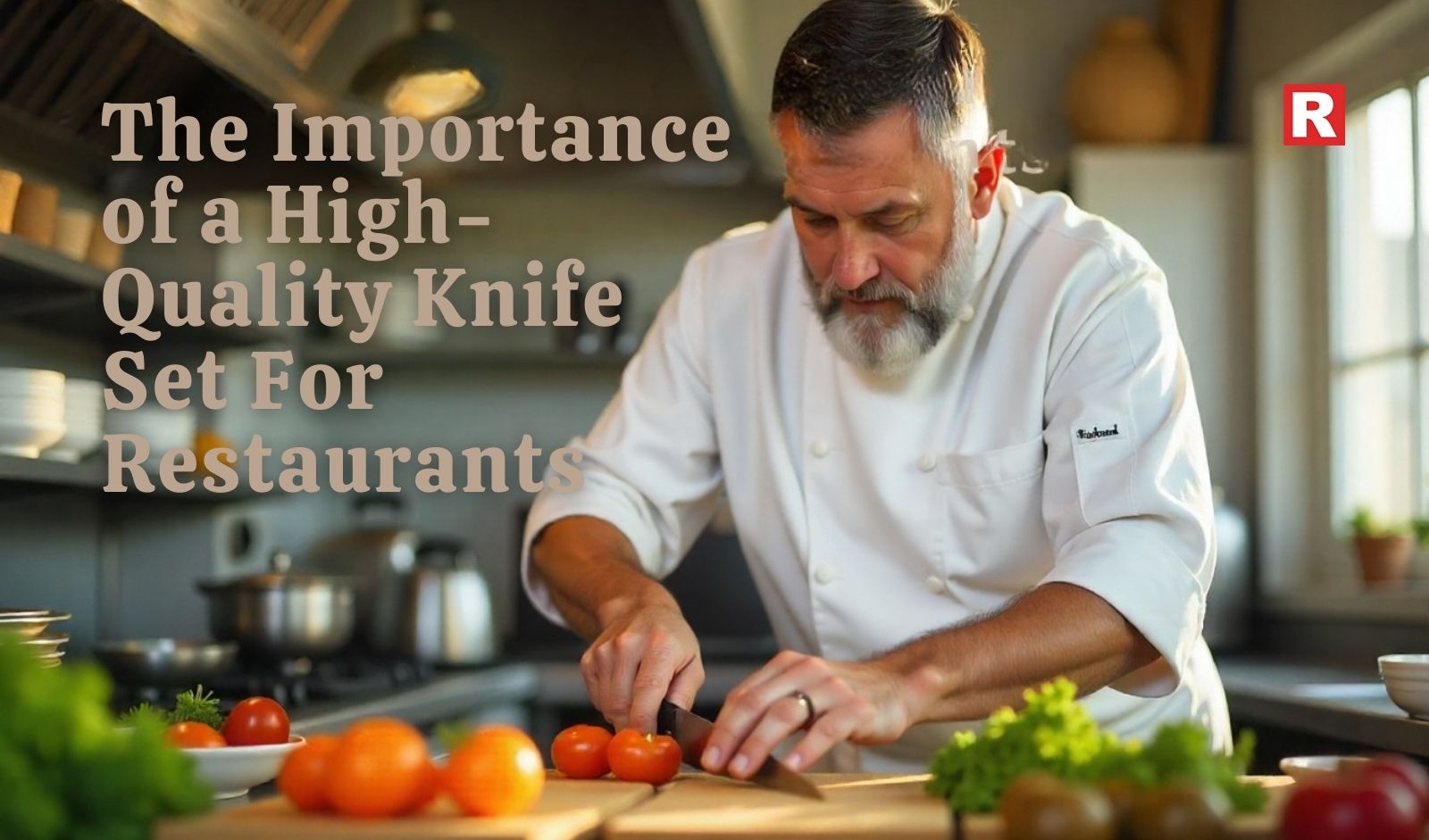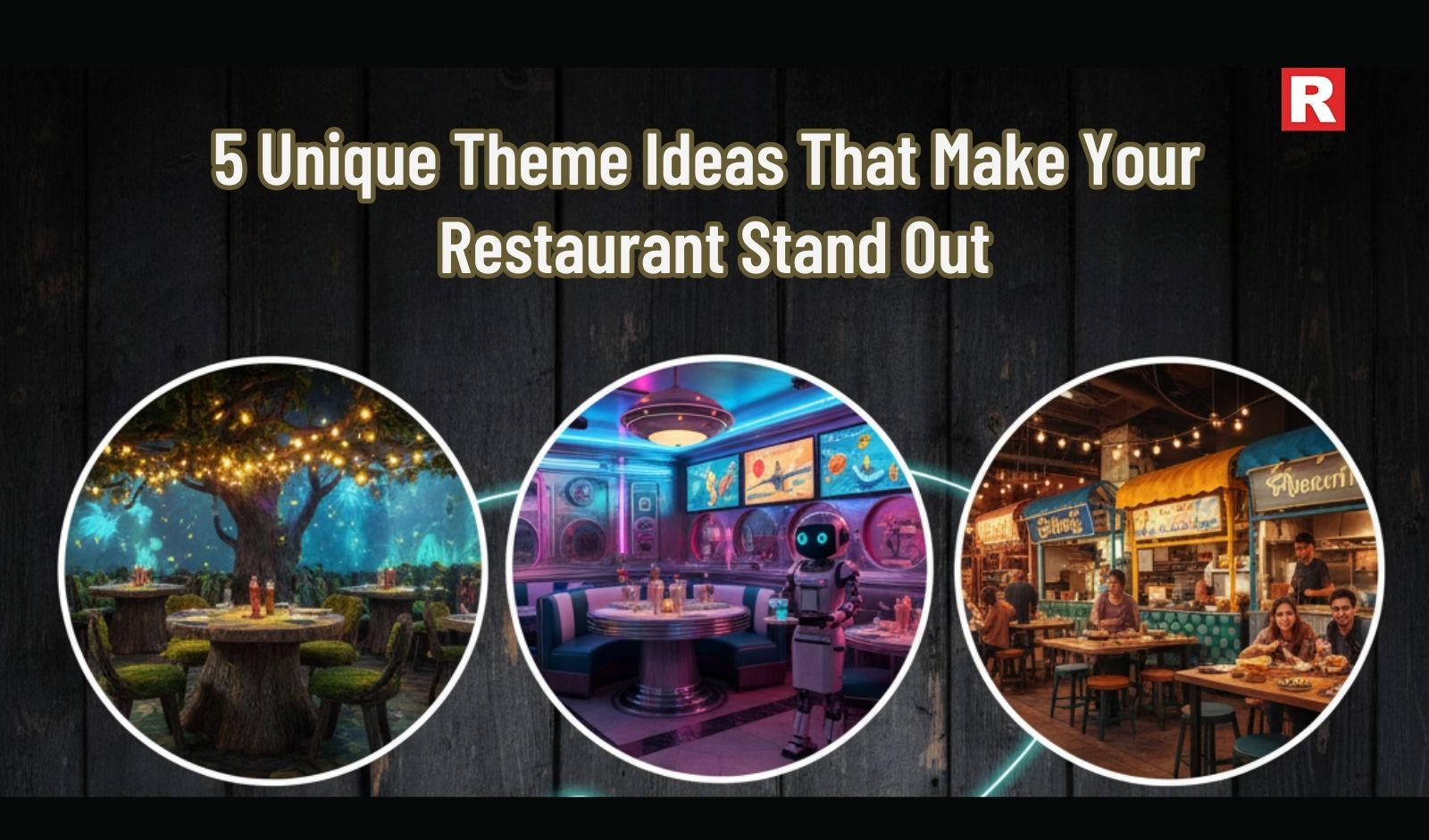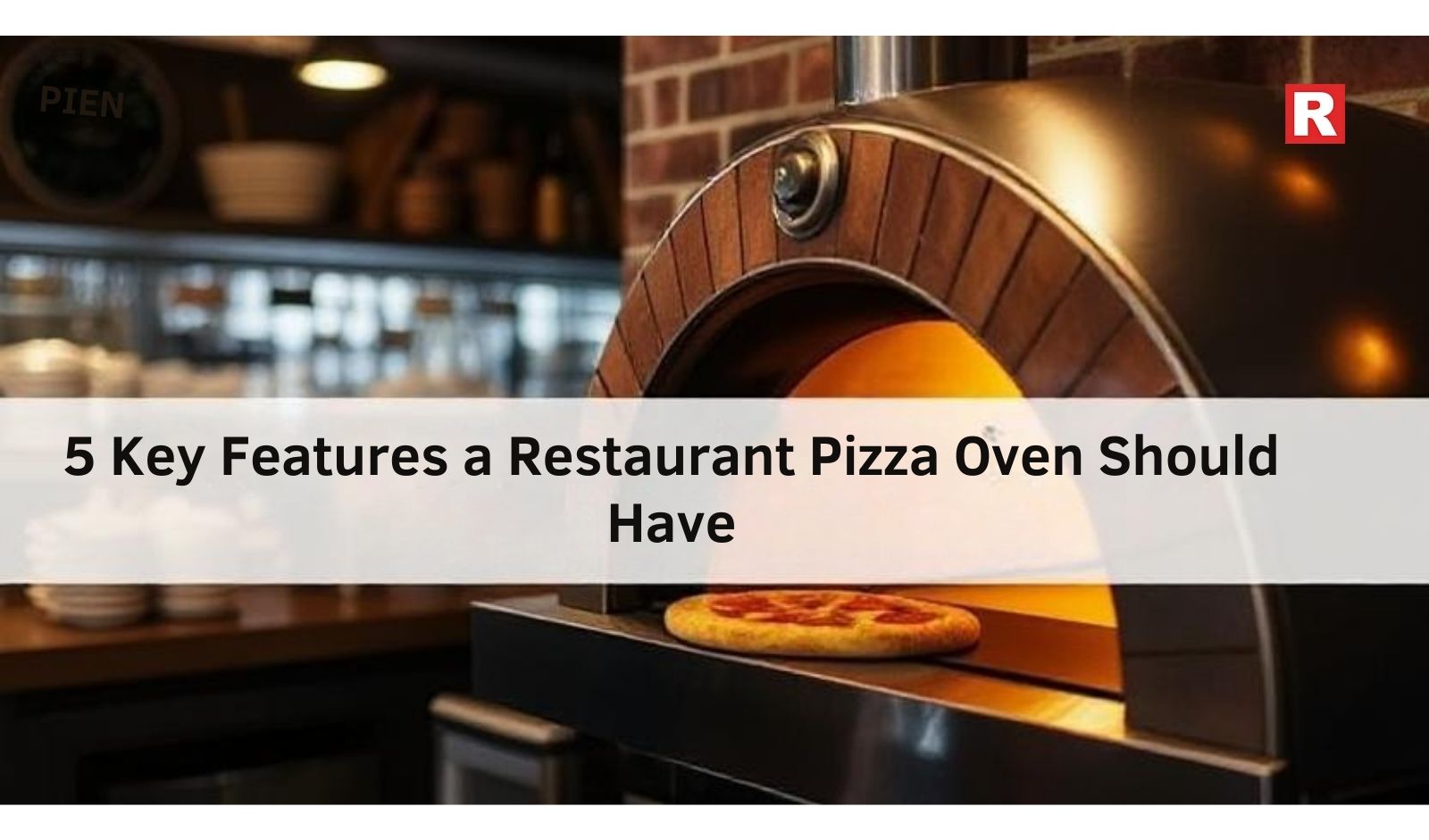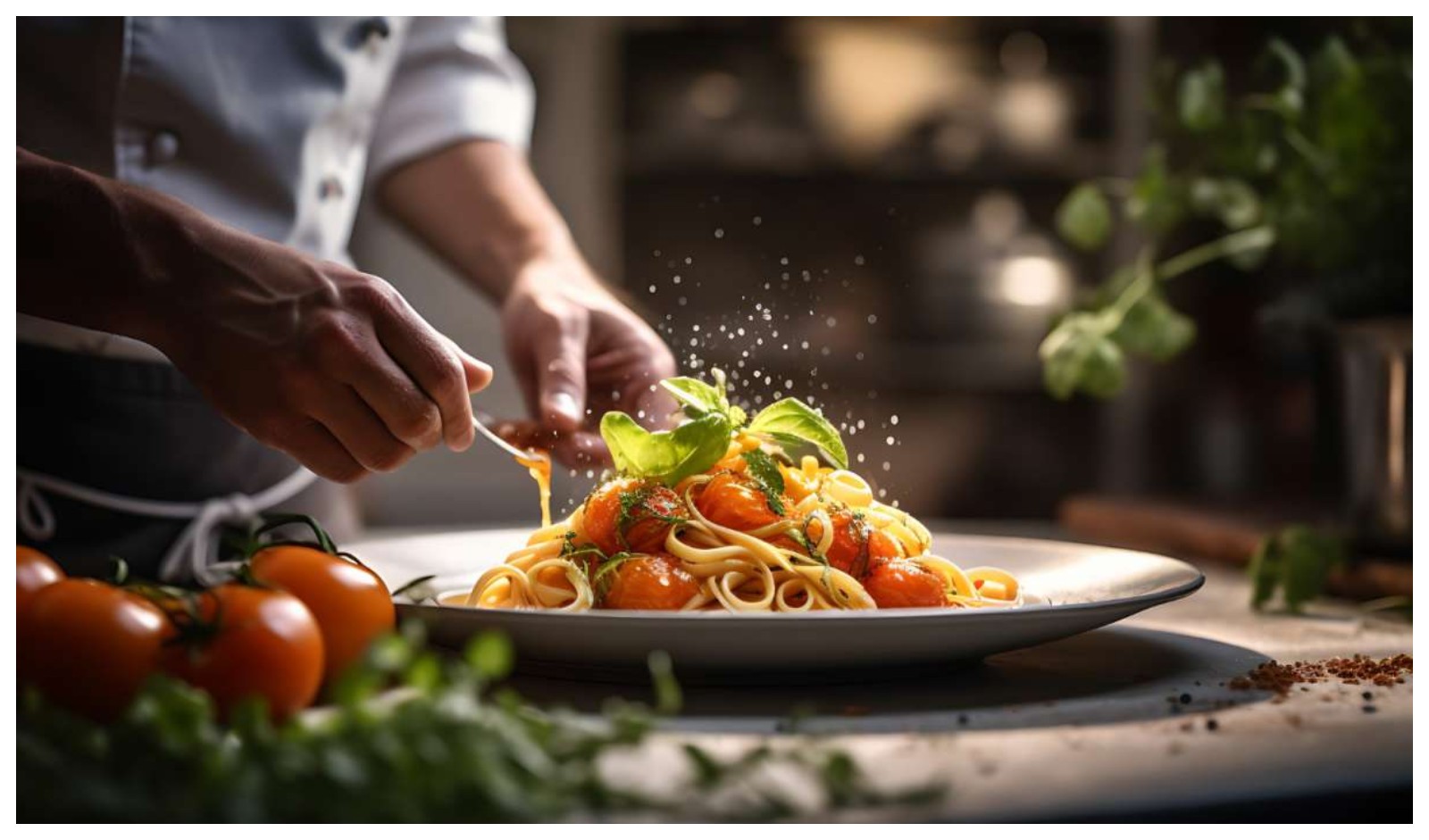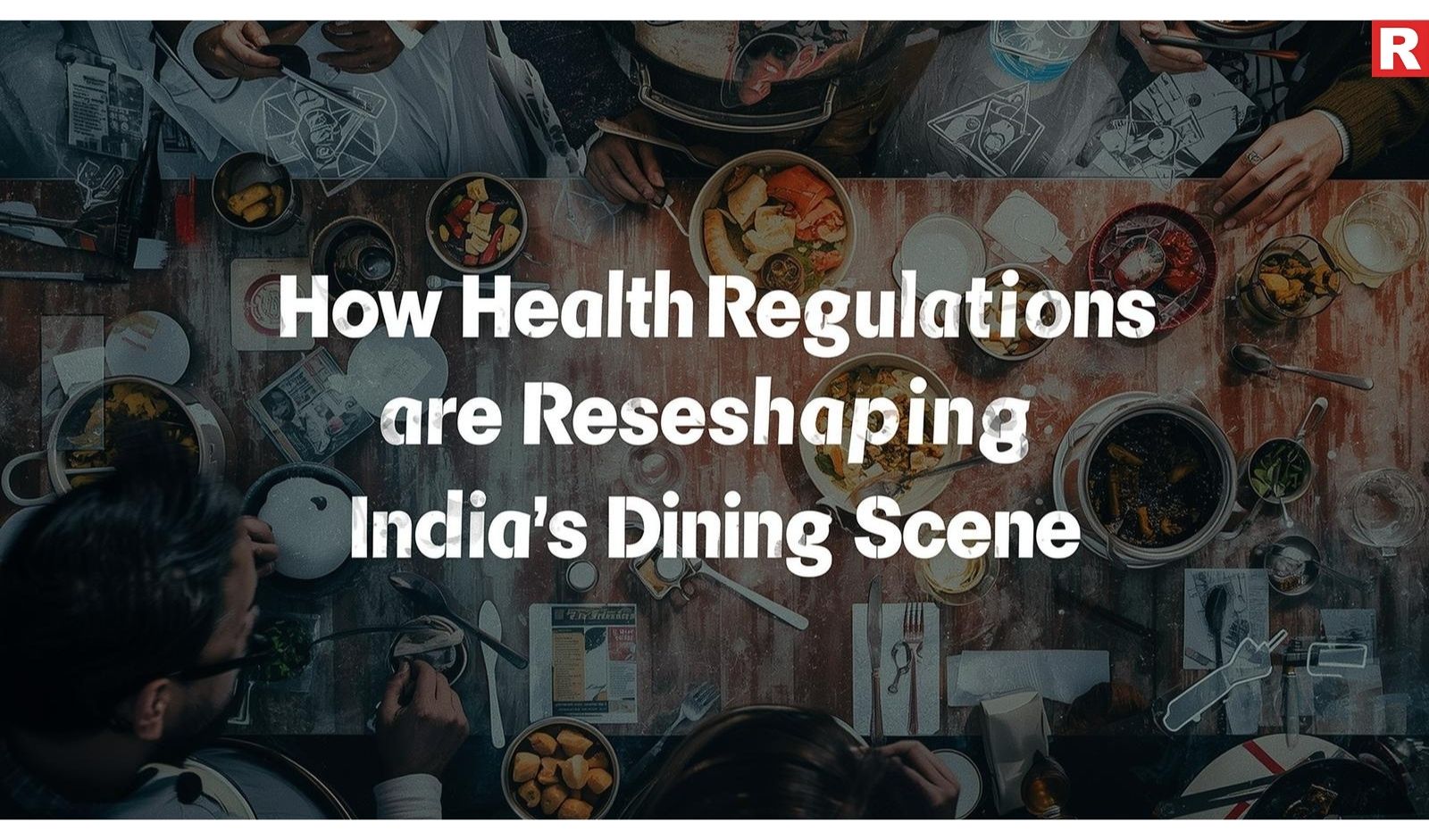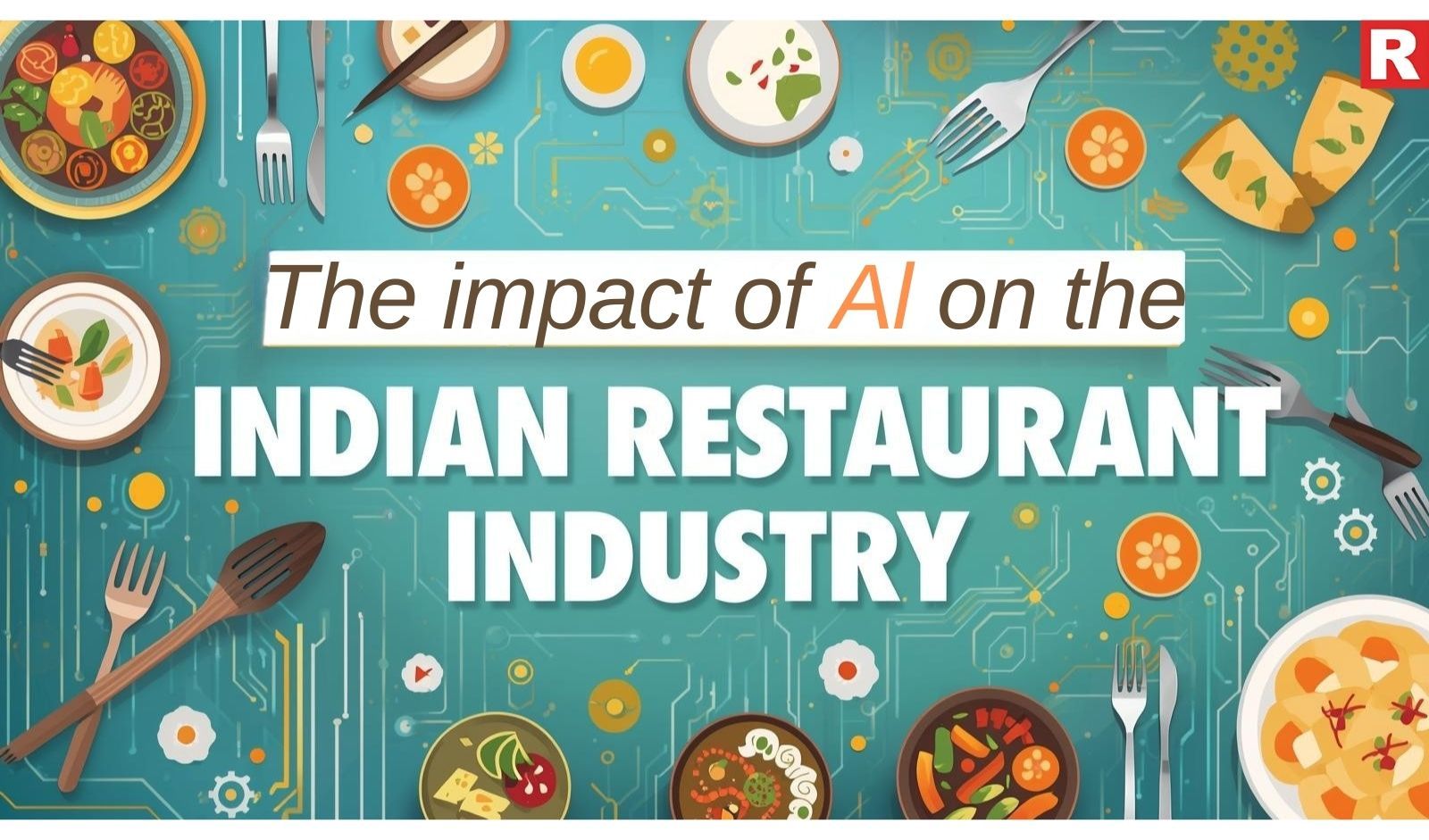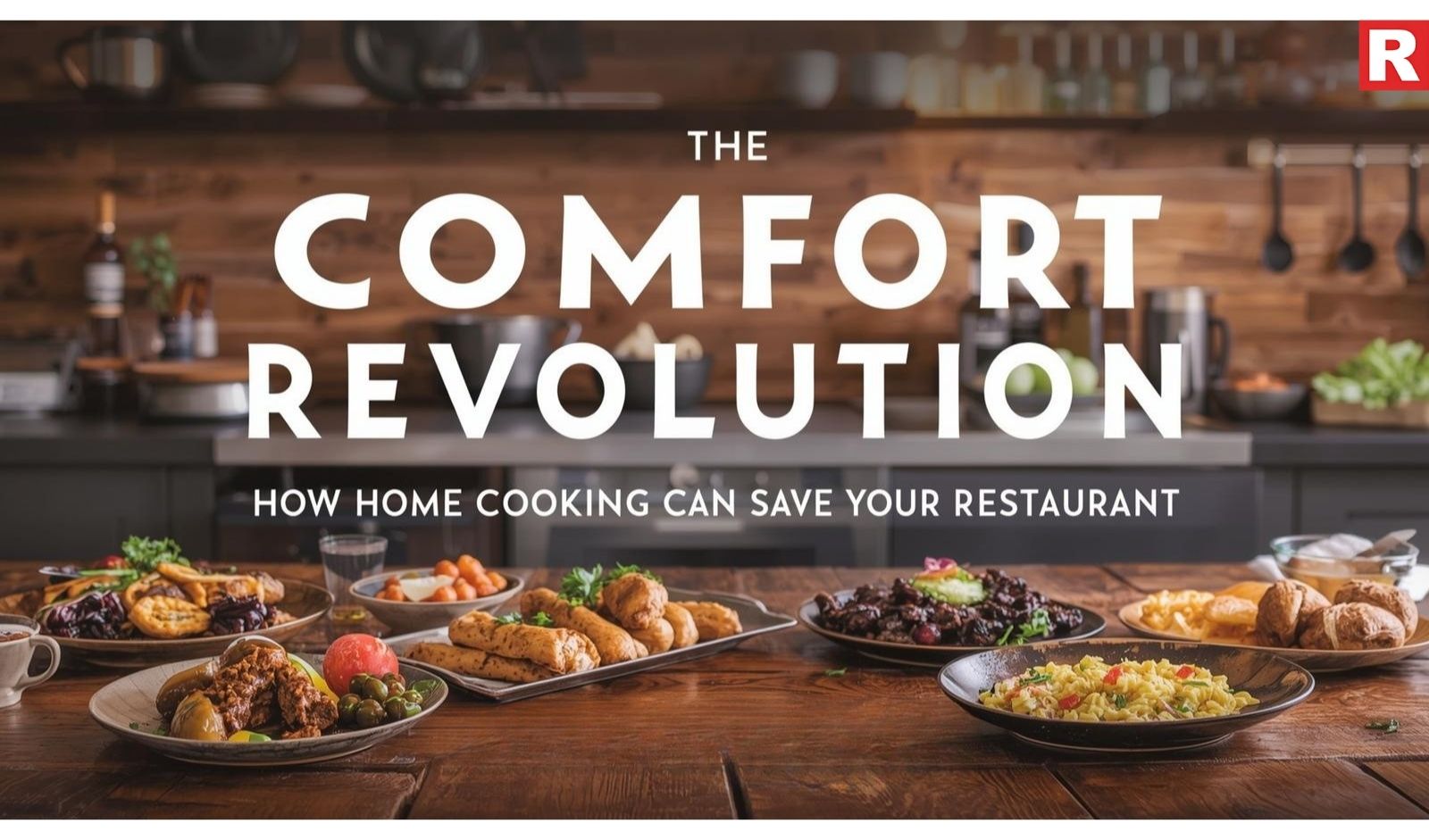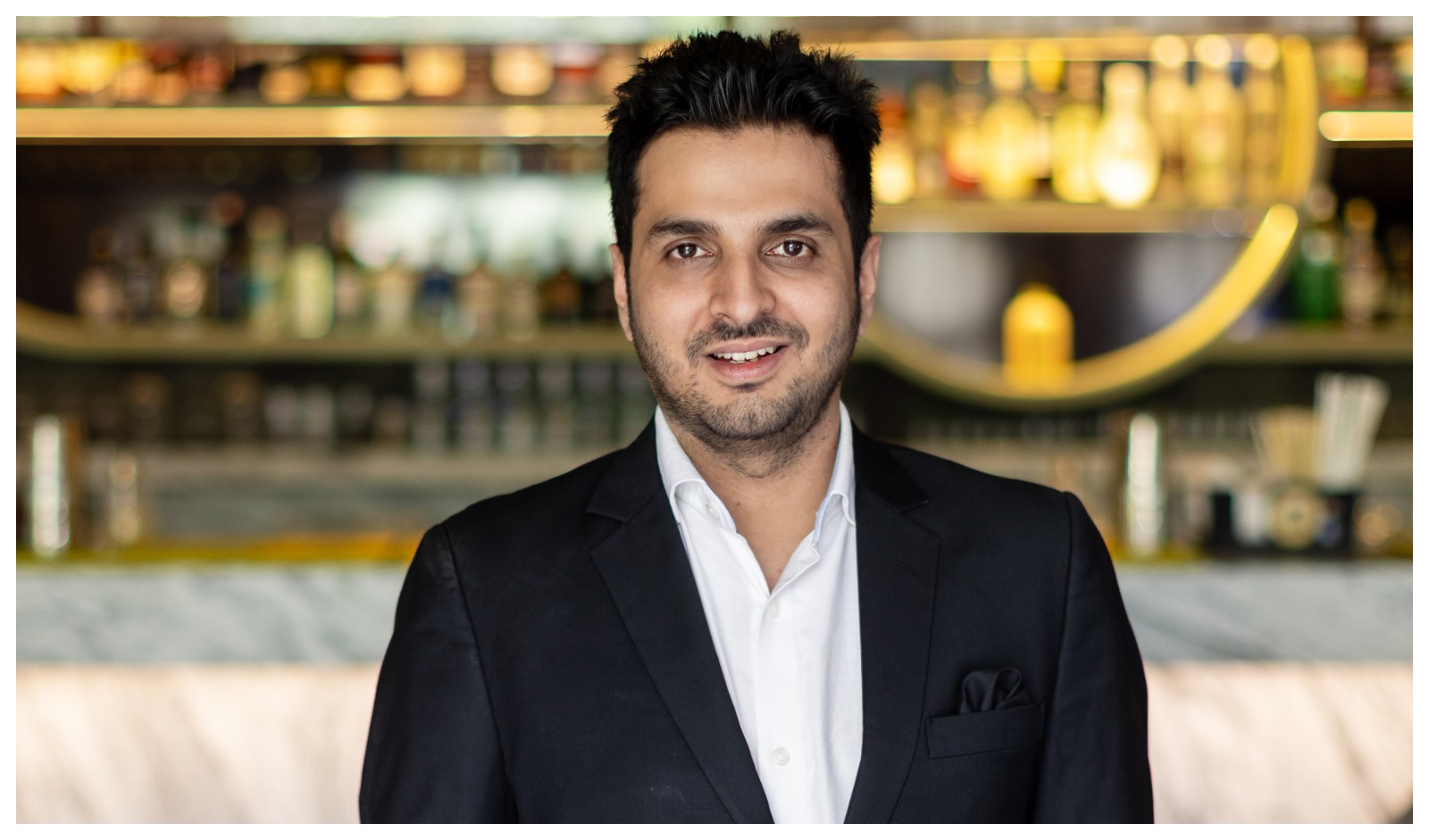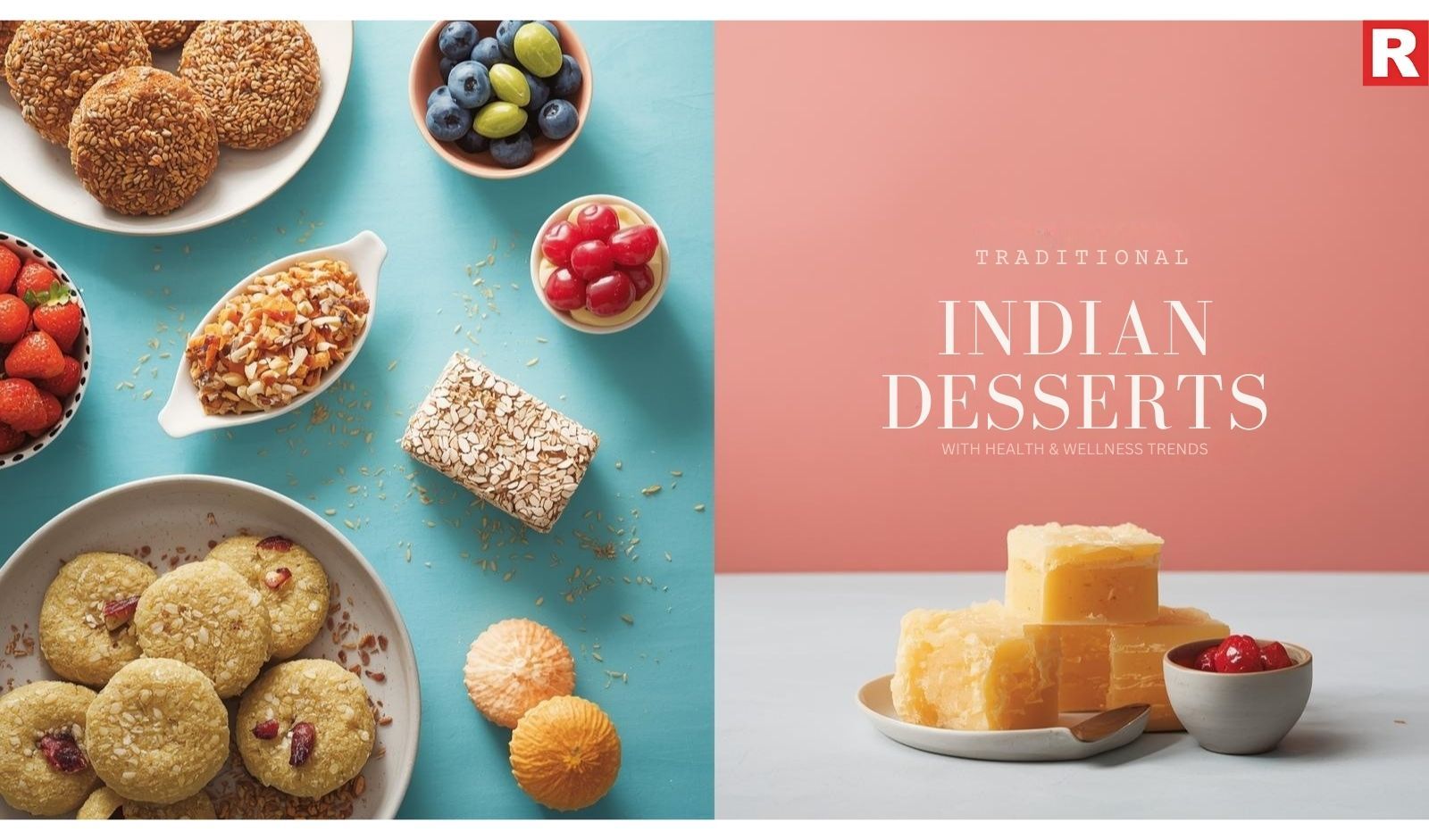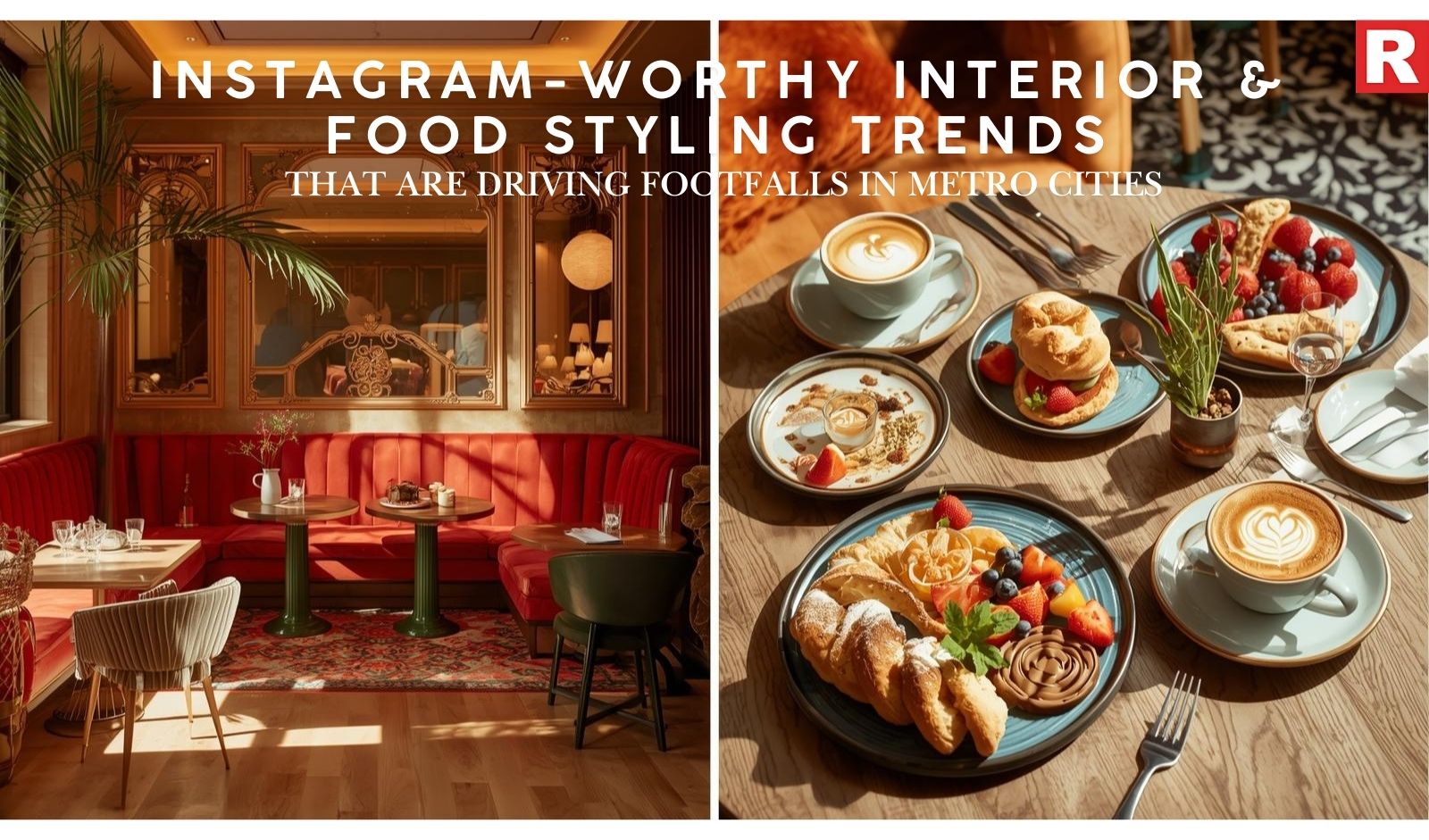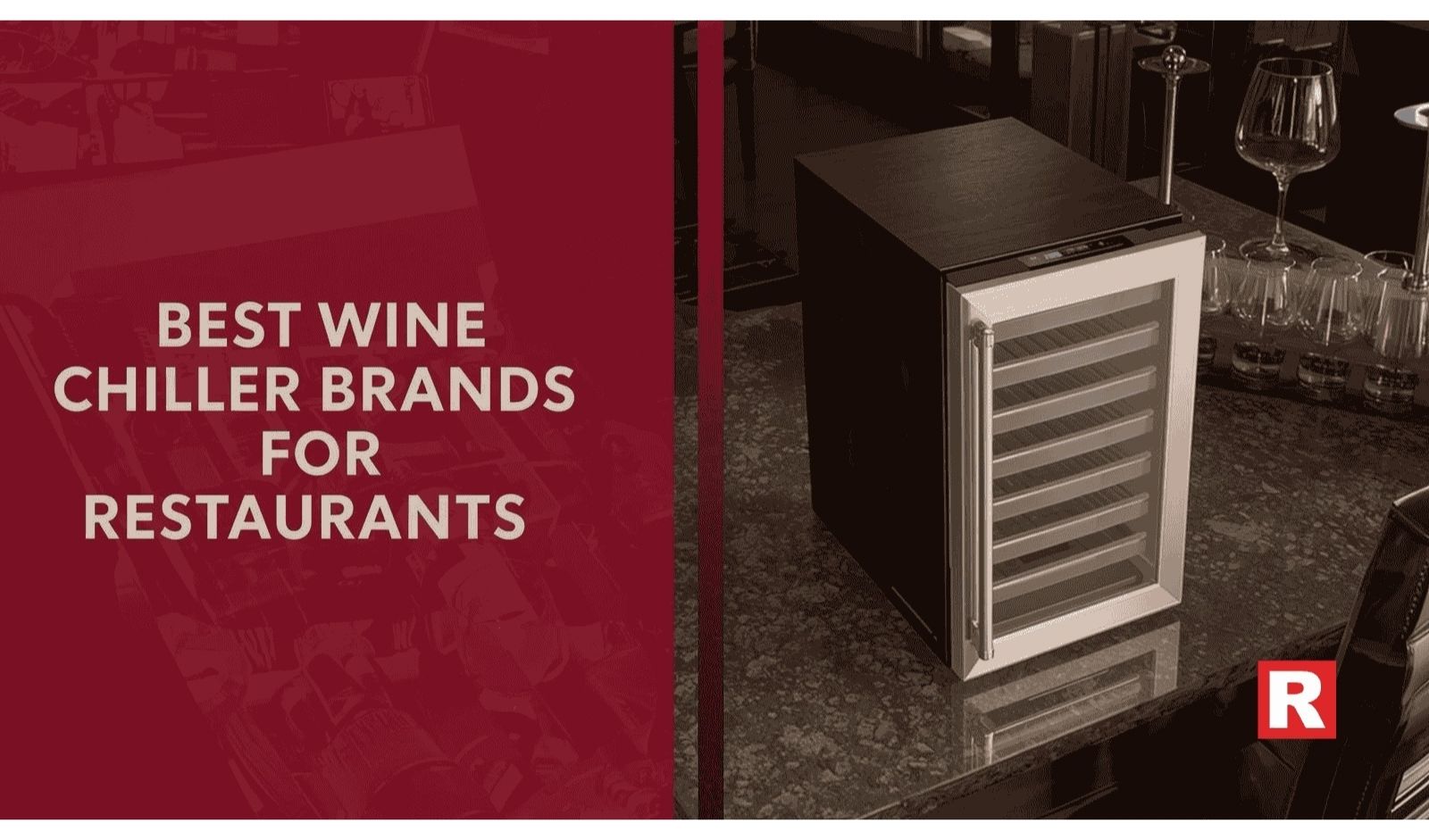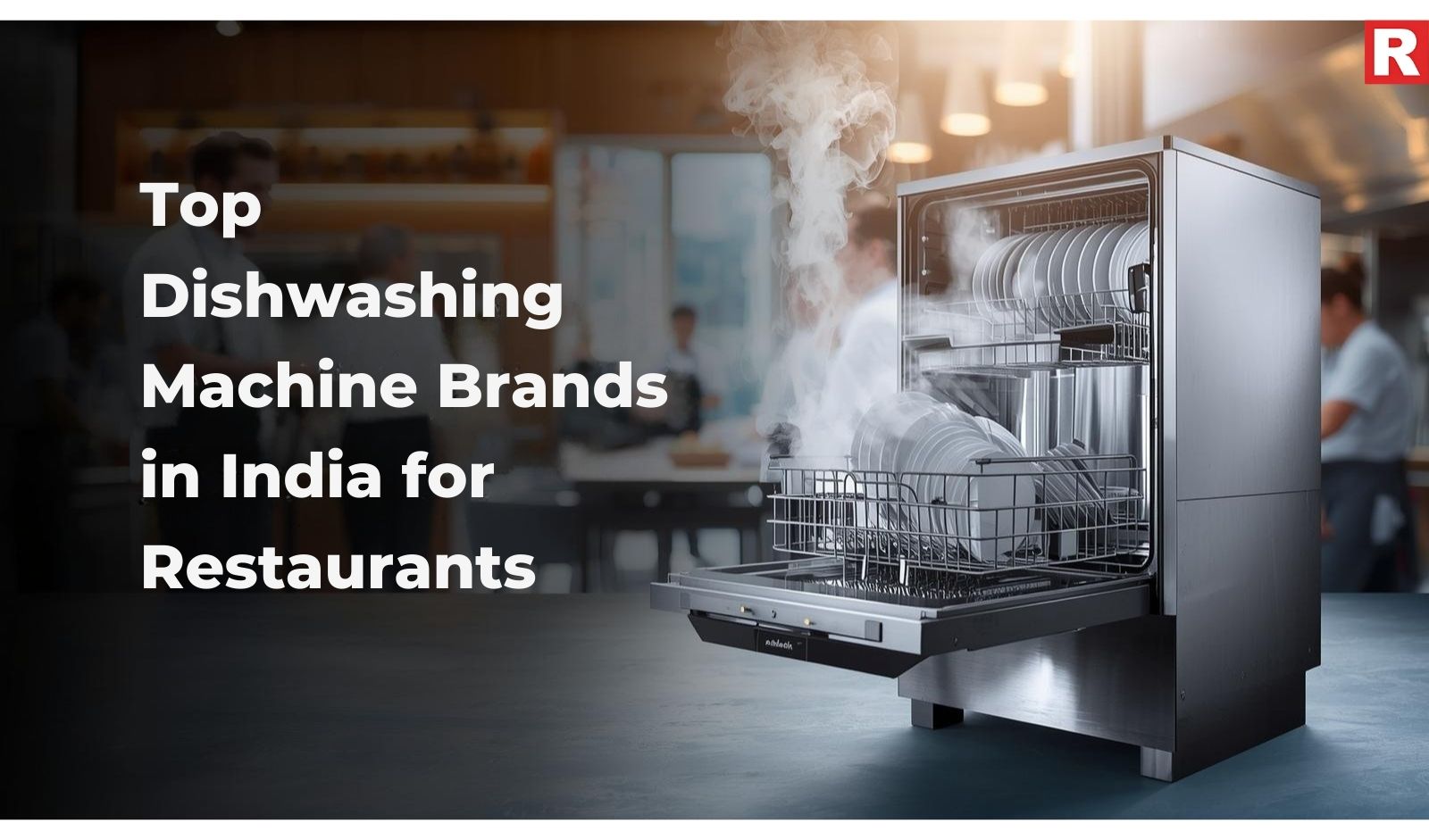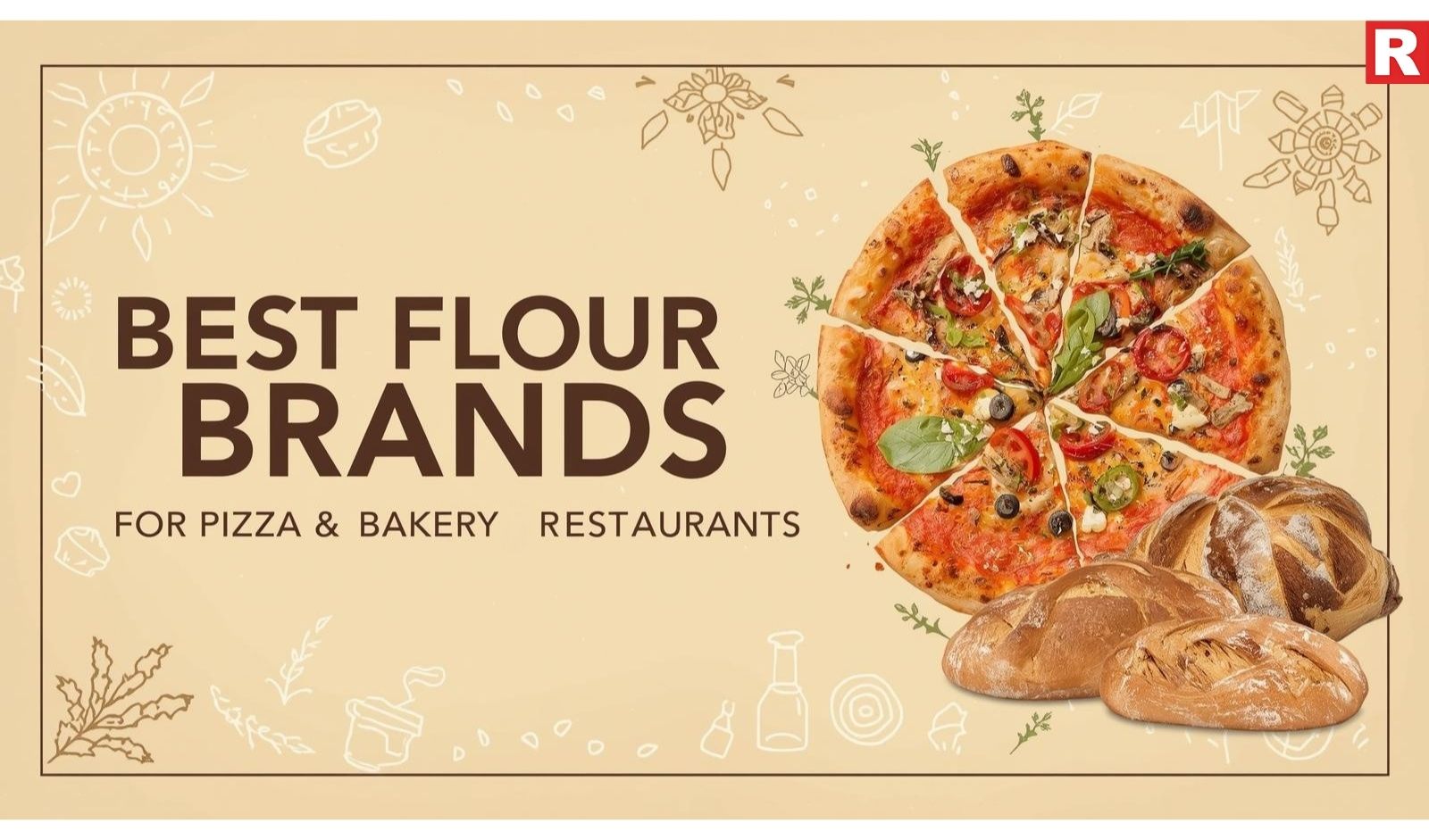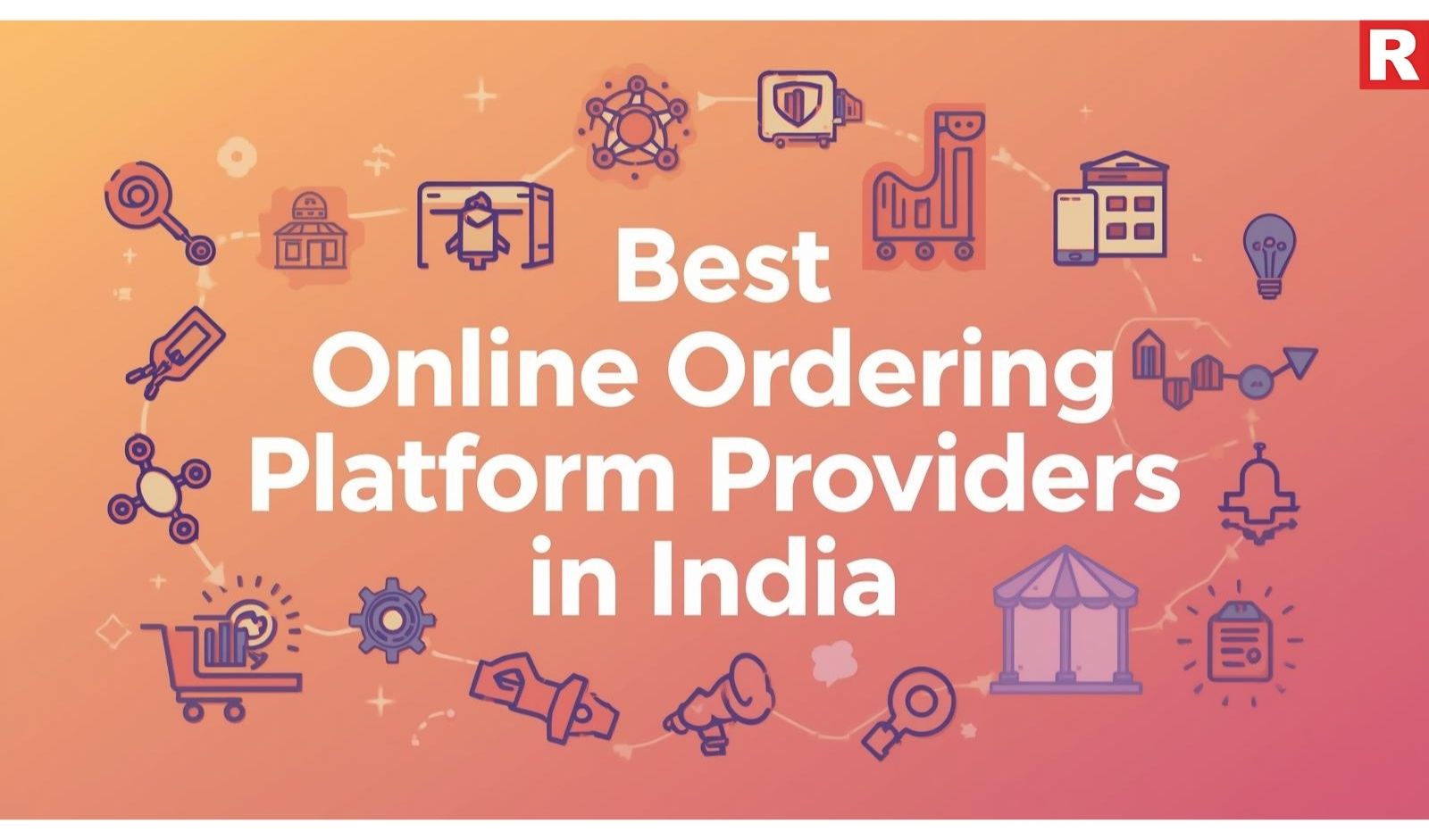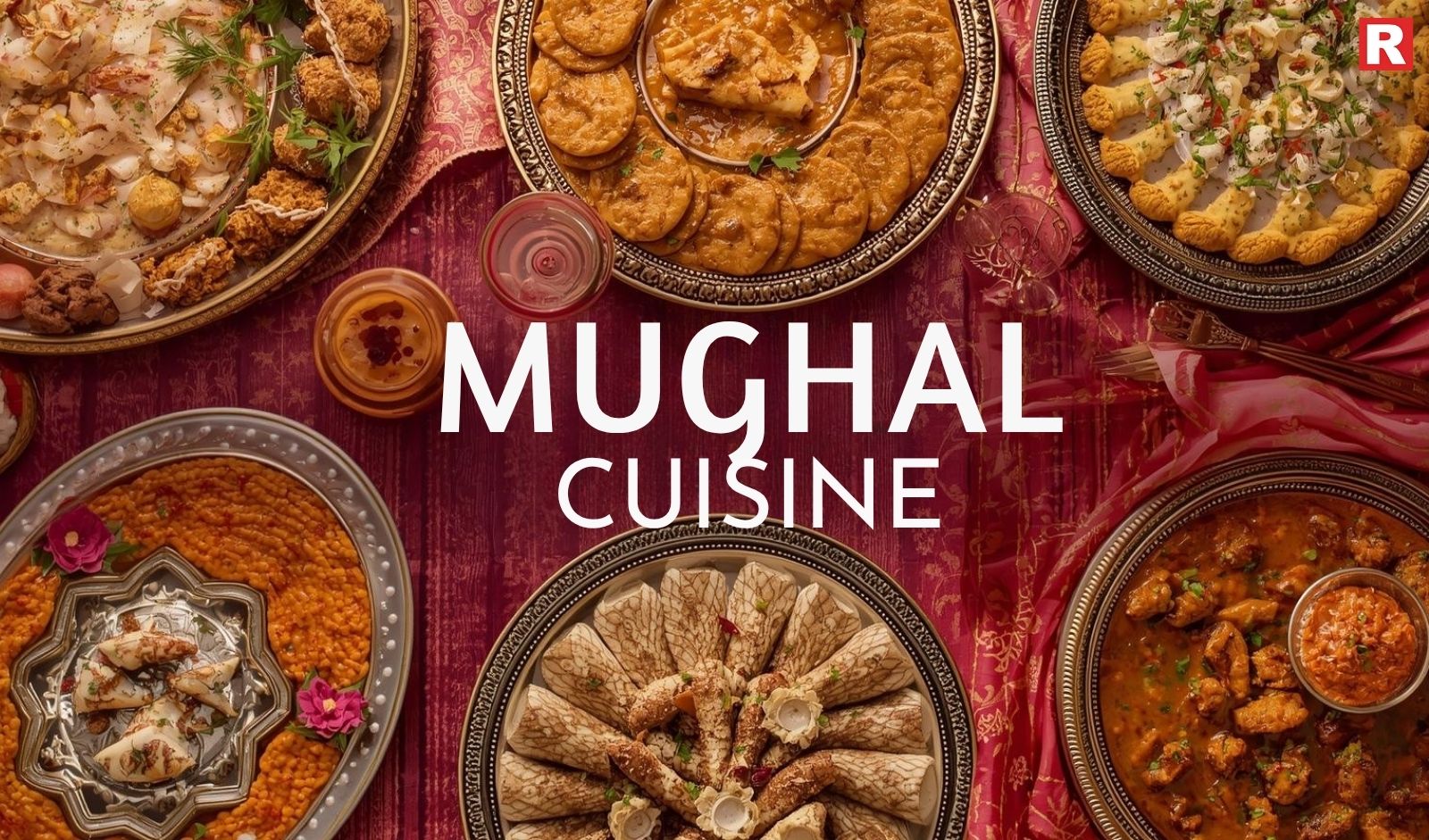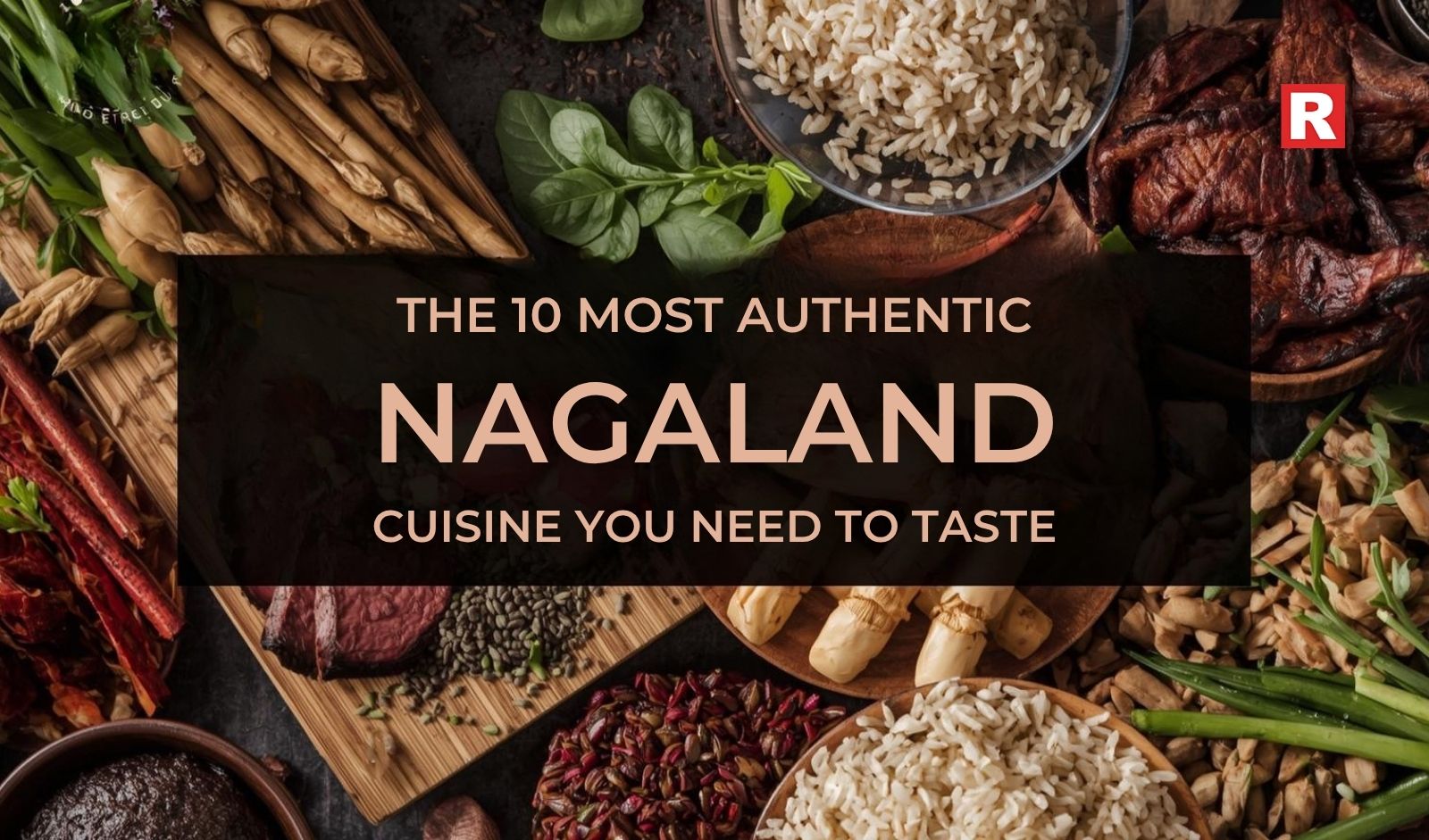
This Diwali, restaurants across India are transforming dining into a celebration of flavours, lights, and togetherness. Special festive menus showcase a blend of traditional Indian delicacies and contemporary twists, from rich biryanis and fragrant curries to artisanal mithai and fusion desserts. Indulge yourself in this flavorful celebration.
1. JW Marriott Kolkata
This festive season, JW Marriott Kolkata invites guests to celebrate the spirit of togetherness, indulgence, and joy with “Diwali Nights” at JW Kitchen, a week-long culinary showcase from October 20 to 26, 2025, available exclusively during dinner. Renowned for its refined ambience and gourmet flair, JW Kitchen transforms into a radiant haven of lights and flavours, offering a sumptuous spread of Indian festive classics and global favourites, meticulously crafted by the hotel’s culinary masters.
Where: JW Kitchen, JW Marriott Kolkata
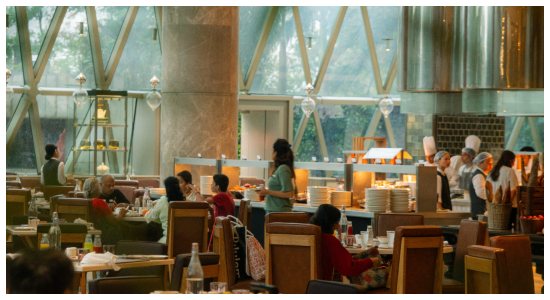
2. Café Out of the Blue, Mumbai
This Diwali, Cafe Out of the Blue in Khar invites you to celebrate with an Indo-Continental brunch that fuses traditional Indian flavors with global culinary twists. From Vegetable Biryani Arancini to Butter Chicken Pasta and festive desserts like Thandai Baklava and Rasmalai Tres Leches Cake, every dish is a celebration on your plate. Set in its cozy Mediterranean-inspired ambiance, the cafe promises a vibrant, joyous feast for friends and family this festive season.
Where: Cafe Out of the Blue, Mumbai
3. Across, Kala Ghoda, Mumbai
This Diwali, let your celebrations shine brighter at Across, Kala Ghoda’s contemporary Himalayan restaurant that brings the warmth of the mountains to the heart of Mumbai. Led by Chef Viraf Patel and Chef Prakriti, Across reinterprets Himalayan cuisine through a modern lens celebrating earthy ingredients, bold spices, and age-old traditions. The festive menu features comforting favourites like Kothey Momo, Mutton Thenthuk, Mushroom Thukpa, and Red Rice Khichu, each dish capturing the raw, untamed spirit of the mountains. Pair your meal with signature cocktails such as the Underbark, Butterfly Pea Gin & Tonic, or Mountain Negroni handcrafted with Himalayan botanicals and mixed to perfection.
Where: Across, Kala Ghoda, Fort, Mumbai
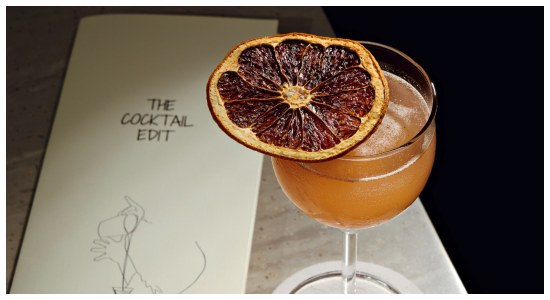
4. Hunaaan, Indiranagar, Bengaluru
As Bengaluru sparkles with festive cheer, Hunaaan invites you to celebrate Diwali the delicious way with a feast that brings people together. The menu takes you on a vibrant journey across Asia, featuring favourites like Kung Pao Chicken, Hunaaan Baby Potatoes, Thai Lemon Basil Tofu, Dim Sum platters, Kimbap rolls, and Signature Sushi. For heartier cravings, savour classics like General Tao’s Chicken, Tianjin Lamb, and Vegetable Dumplings in Hot Garlic Sauce, each crafted with the authenticity that has defined Hunaaan since 2008.
This festive season, skip the ordinary and make your Diwali sparkle at Hunaaan, Indiranagar where soulful Asian flavours, a lively ambience, and a touch of nostalgia come together to create a celebration as warm and joyful as the festival itself.
Where: Hunaaan, Indiranagar, Bengaluru
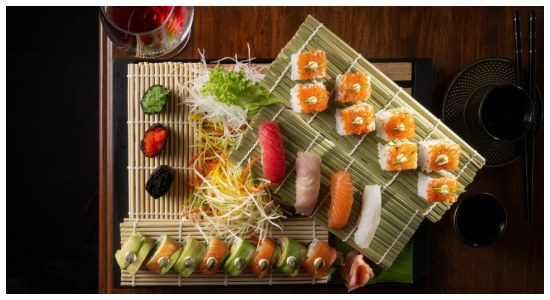
5. Café Blu, Radisson Blu Pune Hinjawadi, Pune
Celebrate the festival of lights in style with a Grand Gala Dinner at Café Blu on 21st October 2025, from 7 PM to 11 PM. Themed “Basking in the Glow of Festive Splendour,” the evening promises a lavish feast that fuses India’s culinary heritage with modern flair. Savour signature delights like Lehsooni Diya Murgh Tikka, Kali Mirch Khushi Paneer Tikka, Awadhi Zafrani Biryani, and Paneer Khurchan-e-Noor, complemented by a Festive Mezze Bar, Live Pasta and Pizza Stations, and a Tandoori Deepmala serving freshly baked breads.
Round off the night with decadent desserts: Balushahi-e-Noor, Rasmalai Rangrez, Kesar Jalebi, and Chocolate Deepmala Pastry — each capturing the true spirit of Diwali indulgence.
Where: Café Blu, Radisson Blu Pune Hinjawadi
6. Persian Darbar (All over India)
This Diwali, celebrate togetherness at Persian Darbar, where royal Mughlai flavours meet festive warmth. Known for its rich heritage and regal ambience, the restaurant offers the perfect setting to share a hearty meal with family and friends.
Immerse yourself in the festive spirit amid elegant interiors, soft lighting, and a joyful atmosphere. Indulge in signature favourites like Mutton Raan Tandoori Dry, Chicken Zafrani Kebab, and Lasooni Paneer Tikka. For mains, savour classics such as Mutton Dum Biryani, Chicken Kepsa Biryani, and Paneer Tikka Biryani. Round off your feast with traditional desserts: Kunafa or Phirni for a sweet ending to a truly royal Diwali celebration.
Where: Persian Darbar (All Outlets)

7. Gaylord, Mumbai
As Mumbai glows with festive cheer, celebrate Diwali with a grand feast at Gaylord, one of the city’s most iconic dining destinations. The menu blends timeless classics like Lobster Thermidor, Chicken A La Kiev, Murgh Makhani, and Pomfret Meuniere with contemporary creations perfect for the season. Enjoy festive starters such as Tomato Chilli Arancini Balls, Mutton Chapli Kebabs, and Tandoori Shakarkandi, or savour seafood delights like Grilled King Prawns and Mangalorean Prawn Curry. For vegetarians, Bharwan Gucchi and comforting pastas hit the right note.
End your meal on a sweet note with Swiss Chocolate Truffle Pastries and Blueberry Hazelnut Tarts. With its signature blend of nostalgia and innovation, Gaylord promises a Diwali dining experience to remember.
Where: Gaylord, Churchgate
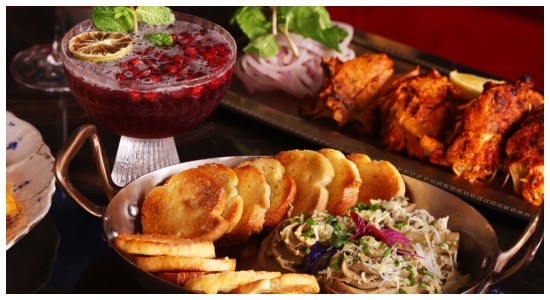
8. Episode One, Mumbai
This Diwali, Episode One, Powai invites you to celebrate with family and friends in a setting that blends playful sophistication with comfort. The festive menu reimagines familiar flavours with inventive flair: Chicken Sukha Quesadilla in methi thepla, Achari Murgh Tikka E Burratta, Paneer Katsu Sando, and Chicken Tikka Masala Bao with tandoori mayo and crisp potato. Sweet endings include the indulgent Sea Salt Caramel Tart and Dulcey Chocolate Pull Me Up. With crafted non-alcoholic beverages made from premium spirits, Episode One offers a warm, family-friendly Diwali celebration for all ages.
Where: Episode One, Powai, Mumbai
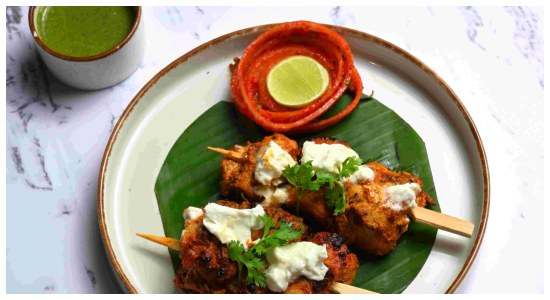
9. Saltt, Karjat
This Diwali, Saltt at Karjat invites guests to experience the sweetness of tradition through an exclusive festive dessert menu in collaboration with P•TAL - a brand that celebrates India’s living legacy of handcrafted metalware.
At Saltt, every dish tells a story - of local produce, seasonal inspirations, and soulful craftsmanship. For the festive season, the culinary team reimagines beloved Indian sweets through modern sensibilities, while retaining their timeless warmth. From decadent halwas to redefined mithais, each creation evokes nostalgia while offering a touch of contemporary flair.
Where: Saltt, Karjat
10. FARRO, Pune
On 17th October, FARRO’s bringing together everything that makes this season special - heartfelt moments, soulful music, and a table full of festive flavours. The festive menu blends comforting Indian classics with FARRO’s signature creativity - familiar favourites, beautifully reimagined. From the playful Passionfruit Puchka with green apple and raw mango to the melt-in-the-mouth Kakori Kefta in charred tomato sauce, and the indulgent Tandoori Thirty Layer Latke crowned with cheddar and cheese aioli every dish tells a story. With soft lights, live music, and flavours that dance with joy, FARRO’s pehli Diwali unfolds in a night of food, music, and memories waiting to be made.
Where: FARRO, Pune
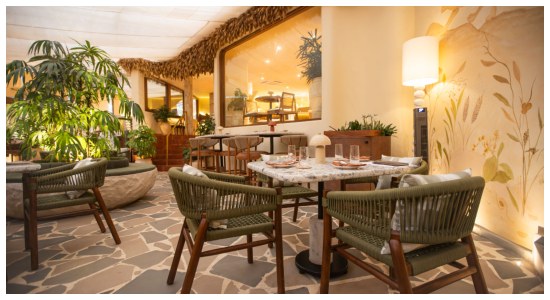
11. Kamats Legacy (All Mumbai Outlets)
Kamats Legacy, the beloved South Indian fine-dining chain from Vikram Kamats Hospitality Limited, is celebrating the Festival of Lights with a delicious twist through its special ‘South Wali Diwali’ menu, available October 17–23, 2025, across outlets in Vashi, Malad, Nariman Point, and Mira Road.
The festive spread features 39 wholesome creations—from Ragi and Rava Idlis and Dosas to innovative Yam Fries, Parappu Vada, and Mushroom Fry. Highlights include Tamarind and Lemon Rice, Guntur Soya Curry, and Balekayi Kayirasa, along with fun picks from the Child Menu like Southizza and Cheesy Benne Dosa. With its signature dishes such as Thenga Chammanthi with Rice and Iddi Stew, plus expanded Jain Speciality options, Kamats Legacy continues to blend authenticity with creativity making this ‘South Wali Diwali’ a true celebration of southern flavours.
Where: Kamats Legacy (All Mumbai Outlets)
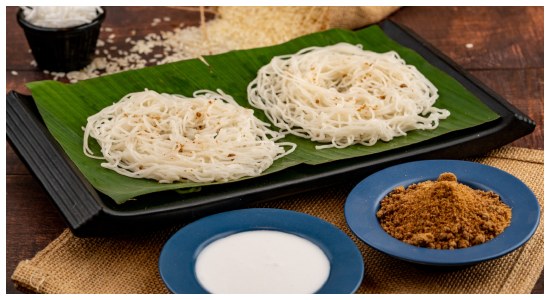

As the world observes World Food Day, marking 80 years of the FAO’s mission, the call to end hunger and build sustainable food systems is more urgent than ever.
This year’s theme, “Hand in Hand for Better Foods and a Better Future,” emphasizes collective action through the FAO’s Hand-in-Hand Initiative uniting governments, farmers, and communities to create resilient, nutritious, and equitable food systems. Let’s focus on how restaurants are celebrating this day.
Local, Seasonal in Focus
The hospitality industry is celebrating this day by focusing on all the aspects as per the theme this year.
Rohit Dadlani, Co-founder of Pause said, “We celebrate food that’s good for you and the planet. This World Food Day, we’re spotlighting the journey from farm to fork - choosing local, seasonal produce that keeps our footprint light.”
Commenting on the same, Abhayraj Singh Kohli, Co-Founder & Director, Torii by Gauri Khan shared, “This World Food Day reminds us that meaningful change comes from working together, from kitchen to guest, ingredient to dish, creating a collective impact for better food and a brighter culinary future.”
Food goes beyond the plate, it's woven into the people one work with, the principles we stand for, and the planet we all share.
“The theme "Hand in Hand for Better Food and a Better Future" strikes a chord with how we have always approached our European-inspired menu: with intention, respect, and a genuine commitment to sustainability,” pointed Timanshu Mokal, Co- Founder, Amelia BKC, Mumbai.
Creativity Meets Consciousness
The balance lies in everything brands do; from the way they craft their food to the way they think about its impact.
Sharing further, Kohli said, “Our approach is rooted in mindful cooking, where creativity meets consciousness. We believe that great food doesn’t just taste good, it should also do well, for both people and the planet. We lean on what's seasonal, portion with care, and look for ways to use ingredients fully. Our bar mirrors this mindset, staying intentional and cutting down on unnecessary waste.”
Balance guides the menu, choosing quality ingredients, using them wisely, and wasting as little as possible.
Focus on Sustainable Eating
It’s always the small and everyday decisions that matter from how we store produce, how we prep in the morning, how we plate before service. These choices add up, shaping not just what ends up on the table, but how brands operate as a team.
Kohli added, “For us, sustainability isn't about making bold claims or chasing trends. It's about consistency, showing up with respect for what we cook with, who we serve, and the impact we leave behind.”
Expressing his views, Chef Vividh Patil, Executive Chef, Pondichéry Café, Sofitel Mumbai BKC said, “We believe that food plays a vital role in shaping a conscious and sustainable future. Our culinary philosophy centres on celebrating India’s diverse flavours while embracing responsible practices that positively impact both people and the planet.”
Dadlani noted, “Our plant-forward menu is crafted from scratch, celebrating the abundance, colours, and flavours of the plant kingdom through comfort food that’s nourishing, kind, and fun. Conscious eating isn’t about giving up - it’s about giving back: to our health, our communities, and our Earth.”
Farm to Fork Dining
It’s all about serving fresh, seasonal food directly sourced from local farms and producers.
“We build our dishes around fresh, locally sourced produce, supporting the farmers and growers around us while keeping our ingredients at their peak. From handmade pasta to wood-fired pizzas topped with what's in season, every choice reflects our belief in quality and responsibility,” said Mokal who further added that behind the scenes, we're meticulous about how we use every ingredient.
Adding further, Patil said, “Through thoughtful menu curation and mindful preparation, we aim to inspire guests to make informed, sustainable dining choices and experience the joy of good food that does well.”
Ensuring Zero waste
Zero waste is a journey brands are deeply committed to. Through mindful sourcing & focusing on in-house production capabilities, Dadlani pointed that they are learning, evolving, and doing their bit to close the loop - even as they recognize that they are still on the path.
Thoughtful portioning and creative use of trimmings ensure nothing goes to waste unnecessarily. “Even our bar programme follows the same principle, cocktails crafted with house-made infusions and fresh garnishes, keeping things minimal and intentional,” noted Mokal.
By embracing responsible sourcing, reducing waste, and celebrating culinary diversity, we can ensure that every meal nourishes both people and the planet.

Imagine relishing a steaming plate of LittiChokha, its smoky aroma filling the air, and realizing that this wonderful experience can now be enjoyed anywhere in the world in mere minutes. The genuine flavors of India are vibrant, rich, and deeply rooted in tradition are undergoing a subtle yet revolutionary transformation. With the rise of smart kitchen technology and the increasing popularity of cloud kitchens, regional cuisines that were previously limited to local restaurants are now easily accessible to a worldwide audience.
This prompts a crucial question: how can we preserve the essence of these recipes—those exact combinations of spices and freshness—while fully embracing the digital age? The journey of LittiChokha from the modest streets of Arrah to the vibrant high street markets of New York showcases the successes of modern advancements in the cloud kitchen industry.
The Evolution of Indian Regional Cuisine
India's food scene is like a colorful mix of regional tastes, each with its own special touch. Traditional meals are rich in stories and history, made with love. Lately, there's been a movement to give these local treasures a modern twist to attract a worldwide crowd, while still keeping the unique traits that set them apart.
For example, look at how LittiChokha has been revamped. What used to be a simple dish from Bihar has now blossomed in the ready-to-eat market. A multitude of companies have rolled out fresh versions of LittiChokha, flaunting a variety of fillings and modern packaging, allowing folks to enjoy this delicacy around the world. The secret to succeeding in these innovations is to keep the true flavors intact while making sure every bite stays true to its roots.
The Role of Smart Kitchens and Cloud Kitchens
Modern kitchens equipped with state-of-the-art gadgets and IoT technology play a vital role in presenting local cuisines on a global stage. These culinary havens enable precise cooking, guaranteeing that each dish is prepared to meet the high standards required to preserve authentic flavors. Automation reduces the likelihood of human errors, ensuring consistency in taste and quality, whether you're in Pune or Paris. Furthermore, smart kitchens support the implementation of cloud kitchen models, which have proven to be a significant advantage for the food and beverage sector.
Cloud kitchens enhance the efficiency of space and resources, allowing businesses to concentrate on refining their culinary creations. Despite these advantages, the ongoing challenge is to provide freshly prepared, fragrant dishes an aspect that traditionalists claim is diminished in a cloud kitchen.
Balancing Authenticity with Modernity
One of the major challenges in this culinary transformation is preserving the authenticity of traditional dishes while incorporating modern aspects. It’s about achieving the ideal balance, which necessitates a sophisticated approach. To solve this, food technologists collaborate with chefs who grasp the core of traditional cooking. Together, they whip up techniques that allow traditional spices and cooking methods to shine, even when scaling up for mass production.
To illustrate this, think about the use of freshly ground masalas and sun-dried preservation methods, combined with vacuum-sealed packaging technology, to make sure that dishes keep their essence. By combining these techniques with efficient smart kitchen practices, brands can uphold authenticity and ensure freshness an essential aspect of any gourmet experience.
As we delve into the fusion of smart kitchens with regional Indian cuisine, we find ourselves in a space brimming with both opportunities and obstacles. The future emphasizes leveraging technology to enhance tradition, making sure that the authenticity and flavors of local cuisines are preserved and celebrated on a global scale. In summary, as we welcome the advancements of smart kitchens, the essence of each dish remains unchanged: genuine taste, cultural depth, and, most importantly, the assurance of a fresh experience with every bite.

In the competitive Indian Restaurant Sector, solely relying on walk-ins and delivery apps is no longer enough to connect to customers. Therefore, to truly thrive and achieve continuous success, smart restaurateurs have started to forge alliances with others in the culinary sector as a strategic move. These partnerships are a new secret sauce for growth, allowing you to tap into new customer bases, share costs, and create unique experiences that set you apart.
Let’s think for one moment. Instead of competing with a business next door, what if both businesses could collaborate and create something big together? What if your restaurant’s specialty is food, and they are famous for their milkshakes, then you both can develop a new menu to attract more customers from each other’s customer base. In this article, five powerful partnership ideas are designed to help the Indian restaurants expand their reach, boost revenue, and build a more flexible business.
Read more: How to Choose the Best Location for Your Cloud Kitchen in India
Key Advantages of Forming Strategic Partnerships
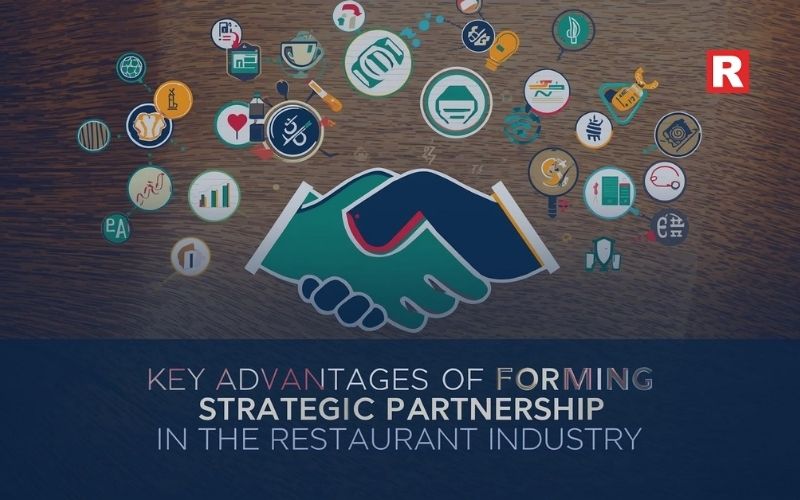
- Cost Sharing: The main advantage of partnership is that it drastically reduces overhead by splitting expenses for rent, utilities, and staff in shared kitchens or collaborative events.
- Access to New Customers: You and your partner can instantly tap into each other’s established and loyal customer base, driving new traffic without expensive advertising.
- Innovation & Buzz: You can co-create unique menus, limited-time offerings, and special events that generate excitement and differentiate you from competitors.
- Expanded Reach: You both can test new locations or delivery-only brands with minimal risk through pop-ups and virtual kitchens, exploring new markets safely.
- Shared Risk: Launching new initiatives becomes less financially draining when the burden and investment are shared with a partner.
1. The Cloud Kitchen Crew: Share the Space, Share the Success
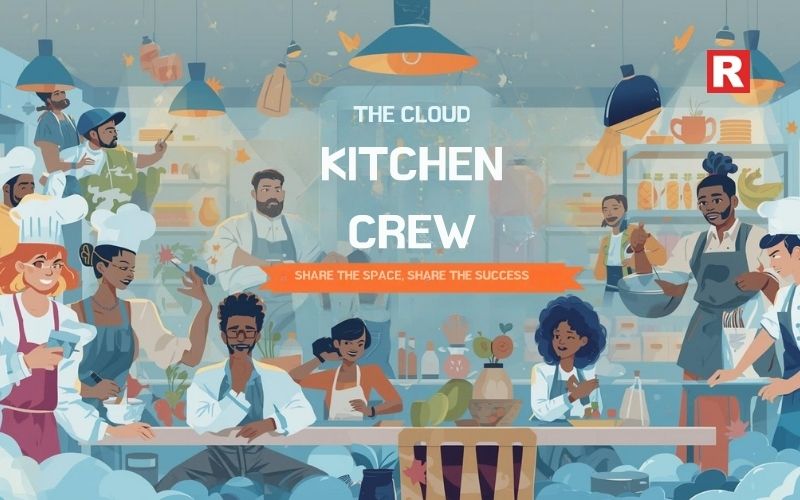
You know what cloud kitchens are. But how about opening one in partnership with your friends?
The Idea: Instead of one brand struggling with the rent of a commercial kitchen, 3-4 different food concepts team up. A biryani specialist, a pizza wizard, a salad maestro, and a dessert whiz all work from the same licensed kitchen, each focusing on their own delivery brands.
Why This is a Game-Changer:
- Your Wallet Will Thank You: You instantly cut down your biggest costs: rent and utilities. Splitting these three ways is a good choice for each of your businesses.
- Become a One-Stop Shop: A family orders a pizza from one brand, sees your legendary biryani on the same app, and adds it to the cart. You just gained a customer without any advertising. It’s cross-promotion on autopilot.
- Test the Waters Safely: Always wanted to try a Korean taco concept? Launch it as a virtual brand from your shared kitchen. If it flops, you won’t have too much loss, as your store was digital and you didn’t bet your life on it.
How to Make it Happen:
- Find partners you trust, whose food doesn't compete with yours but complements it.
- Sit down with a lawyer and draft a clear agreement. Who cleans the grill? How is the electricity bill split? Who gets the prime cooking slot during dinner rush? Spell it all out to avoid any problems later.
Know more: Cloud Kitchen vs. Traditional Restaurants: Which is More Profitable?
2. Partner with Farmers and Artisans

Today’s customer is a cautious one. They care about where their food comes from. So, having the source themselves tell the story of the food is a good idea to attract them.
The Idea: Don’t buy from the anonymous bulk supplier. Partner directly with a local organic farmer, a small-batch cheese maker, or a spice grower from Kerala. Then, market regularly that your ingredients are organic and locally sourced.
Why This is a Game-Changer:
- Your Menu Tells a Story: "Featuring fresh greens from Shanti's Garden in Ooty" sounds a thousand times better than "side salad." It builds trust and lets you charge a little more for the quality.
- You Become a Destination: People will seek you out for that unique, hyper-local ingredient they can't get anywhere else.
- You Support the Community: This builds incredible goodwill. You're not just a restaurant; you're a hub that supports local producers.
How to Make it Happen:
- Visit a farmer's market. Talk to the vendors. Taste their products.
- Create a signature dish together. Maybe it's a "Goan Pork Vindaloo with Artisanal Palm Vinegar" or a "Salad with Rainbow Microgreens from a local hydroponic farm."
- Host a "Meet the Maker" night. Let the farmer talk to your customers. It’s a fantastic event that gets people excited.
3. The Brewery Buddy System: Create Can't-Miss Experiences

Breweries and microbreweries have a cool, relaxed vibe and a built-in crowd. Why not tap into that and make use of it?
The Idea: This is not just about serving food on a platter. This is more than just selling their beer. It's about creating unique food and beer experiences that people will talk about for weeks.
Why This is a Game-Changer:
- Instant Crowd: You get direct access to the brewery's loyal customers, who are already in the mood to eat and spend.
- Events Sell Out: A special, ticketed dinner is far more profitable than a regular Tuesday night.
- The "Cool" Factor: Aligning with a popular brewery makes your restaurant feel more modern and experience-focused.
How to Make it Happen:
- Design a special menu where each dish is paired with a specific craft beer. Think "Spicy Garlic Prawns with a Citrusy Wheat Beer" or "Chocolate Brownie with a Rich Stout."
- Host a "Brewery and Biryani Bash" or a "Tandoori Night" at the brewery itself.
- Run simple cross-promotions: "Show your receipt from the brewery for 15% off your meal," and vice versa.
What's new: How to Attract Customers Beyond Special Occasions and Festivals
4. The "Neighborhood Network" Deal

Look around you. The cinema, the gym, the salon, the bookstore, they all have the possibility of having your potential customers.
The Idea: Team up with a non-food business to create offers that drive customers to both of you.
Why This is a Game-Changer:
- You Reach Ready-to-Spend Customers: Someone who just bought a movie ticket is already thinking about what to eat. Be their answer.
- Value-Added Deals: A "Movie Ticket + Meal Voucher" combo feels more exciting than a simple discount.
- Low-Cost, High-Impact Marketing: You share the cost of promotion and get in front of a whole new audience.
How to Make it Happen:
- Approach a local cinema and propose a deal: they give a "Free Garlic Bread" coupon with every family ticket, and you give a "Buy One Get One Free on Popcorn" coupon with every bill over ₹1500.
- Partner with a bookstore for a "Book Club Brunch." Host their monthly meeting and create a special menu.
- Team up with a gym: offer a 10% discount to all their members. They'll promote you as the perfect post-workout spot.
Check out: Top 6 Brewery Menu Design Ideas (2025) That Pour Creativity Into Every Pint
10 Simple Rice Bowl Recipes For a Quick and Healthy Lunch
5. The Influencer Incubator: Launch a Virtual Brand Together

That food influencer you follow with a million followers? They have an audience but no kitchen. You have a kitchen, but need a bigger audience. Can you see the opportunity?
The Idea: Collaborate with a well-known food blogger or home chef to launch an exclusive, delivery-only brand from your kitchen.
Why This is a Game-Changer:
- Instant Hype: The influencer brings their entire fanbase from day one. That's marketing you can't buy.
- Built-in Trust: People already love and trust the influencer's taste. They'll eagerly order from a brand they recommend.
- Shared Risk, Shared Reward: You handle the cooking and operations, they handle the marketing. You split the profits. It's a low-risk way to launch something new.
How to Make it Happen:
- Find an influencer whose style fits your kitchen's skills. Like, rustic Maharashtrian food or modern Indian fusion.
- Co-create a small, killer menu. Like "Your Grandmother's Lost Recipes" or "The Ultimate Fusion Kathi Rolls."
- Launch with a social media style: live cooking sessions, behind-the-scenes reels, and a limited-time opening offer.
The Secret Recipe to a Great Partnership
A great idea can still fail if it is executed with the wrong partner. Therefore, remember these three things before choosing who to partner with:
- Find Someone You Click With: Make sure you share the same vision and work ethic. You both have to keep your end of the deal and help each other’s business grow.
- Get It on Paper: No matter how friendly you and the other party are, a clear legal agreement is essential. It outlines money, responsibilities, and what happens if things don't work out. It protects everyone.
- Talk Regularly: Regular, honest communication is the glue that binds both partners. Check in often, be open about what's working and what's not, and always treat your partner with respect.
Learn more: Your Guide to Influencer Marketing in Restaurants
Team Up! Profits Double Up!
The future of the restaurant business in India is looking less like a solo race and more like a collaborative festival. By stepping out of your kitchen and looking around, you might find a partner who can help you unlock a world full of shared resources, find customer bases with similar tastes, and innovative ideas. In the end, this is not just about surviving the competition; it is about redefining it. So, take a good look around your community, find a business whose goals match yours, and start your step towards building a partnership.

The festive season is here. And so is the chance for many businesses to earn the most revenue they can at this time of the year. This also applies to the food business industry, where each type of business has the opportunity to generate more revenue, whether it is a high-end dining restaurant or a food stall. Restaurants get a full house more quickly as customers come rushing in to celebrate the festivals with their family and friends. This is also true for food stalls, which get most of their customers from the footfall that is higher because of the people who are on a shopping trip. But what about a random Tuesday in April? Do they get more customers for no reason?
Relying solely on the festive rush to generate more revenue is not a good business strategy. Restaurants need to know how to attract customers beyond any festivals or occasions. To do this, they need to have made a special place in the hearts of customers so that they remember them, festivals or not. And in this article, we will be discussing just that. We’ll provide the reader with some tips that can help to create steady traffic throughout the year, festival or not.
Read more: 5 Key Strategies to Target Repeat Customers
1. Become the "Hangout Place"

People have two important places in their lives - home and work. Besides this, the third place is where people go to relax, connect, and unwind. The restaurant should try to become the third place for customers - “The Hangout Place”.
How to do it:
- Comfort & Connectivity: Ensure you have comfortable seating, free and good Wi-Fi, and enough power outlets. People should feel that they can stay for a while without feeling rushed.
- The Right Ambiance: Create a custom vibe for your restaurant through music, lighting, and decor that encourages people to stay. A cozy and quiet place is good for unwinding, while a vibrant and energetic ambiance is good for hanging out with friends. So, plan your restaurant’s ambiance accordingly.
- Welcome Solos and Groups Alike: Train your staff to be just as welcoming to a person dining alone with a laptop as they are to a large group coming for a birthday party. Don’t look down on customers coming in off-peak hours, like sunny afternoons. They are all still a customer and treat them properly.
The Payoff: If you become the “Third Place” For customers, then you can capture business during off-peak hours too. You just stop being a dining destination and start being a daily refuge.
2. Master the Art of the "Reason to Visit"
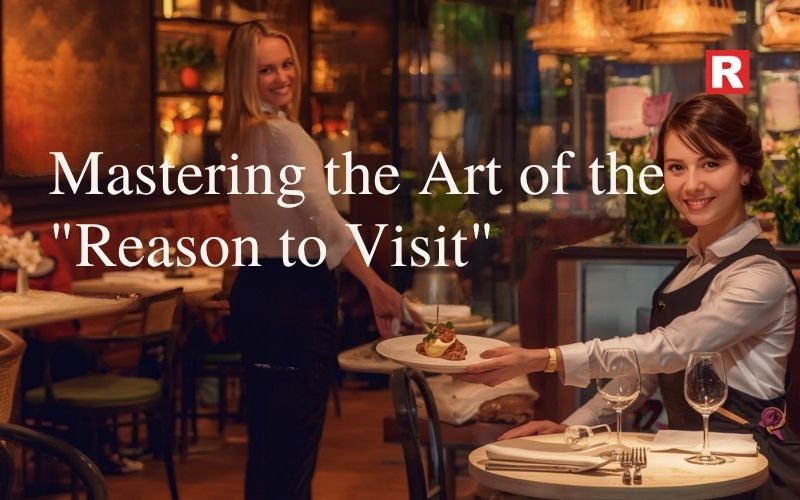
Customers need a push so they have a reason to visit. Without a festival, you will have to create a calendar of repeating, reliable events that give people a good excuse to come in.
How to do it:
- Live Music & Quiz Nights: Contact a local acoustic guitarist for Thursday evenings for a local music night, or have a weekly trivia night on Tuesdays to attract customers. It will create a weekly event for customers so they have a reason for visiting your restaurant.
- Themed Nights: Create themed food nights like "Taco Tuesdays," "Wine Down Wednesdays," "Sunday Brunch with Live Jazz," or "Regional Thali Nights." These concepts are small and easier to execute, which can create buzz and also become a weekly tradition.
- Workshops & Classes: You can also host workshops or special classes to gain potential customers. Host a "Pasta Making Workshop," a "Mojito Mixology Class," or a "Coffee Tasting Session." Using social media to promote these events is a good way to market your restaurant. Remember, you're not just selling food and drinks, you're selling a fun, educational experience that people are happy to pay a premium for.
The Payoff: If you plan your calendar in a structured way, then even dead nights can be considered as your most profitable evenings. This tip can help to build a community of regulars who come for the event and stay for the food, ensuring consistent revenue.
Know more: How Authentic Food Festivals Affect Restaurant Business?
3. Leverage Loyalty, Not Just Discounts

While a 20% discount can fill seats for a day or two, it cannot create long-term customers. This will make customers come only when there is a discount in your restaurant. Loyalty, on the other hand, builds long-term value.
How to do it:
- A Simple, Rewarding Program: Ditch the complicated punching cards; instead, use a digital loyalty app (or even a simple, well-designed physical card) where every ₹500 spent earns a ₹100 credit. This makes it easier for customers to understand and also feel genuinely rewarded.
- The "Inner Circle" Vibe: Create an exclusive SMS or WhatsApp group for your top customers. Give them first dibs on new menu items, invite them to a special tasting event, or send them a "happy birthday" drink on the house. Make them feel seen and valued.
- Surprise and Delight: If you see a regular customer in your restaurant, then occasionally give them a complimentary dessert or an appetizer. This small, but unexpected gesture can create more goodwill than a standard discount ever could.
The Payoff: Loyal customers have a higher lifetime value. They come more often, spend more, and become your most powerful marketing tool, which is free, word-of-mouth advertising.
What's new: 5 Food Business Ideas You Can Start Without Opening a Full Restaurant
4. Own a Signature "Hero" Item
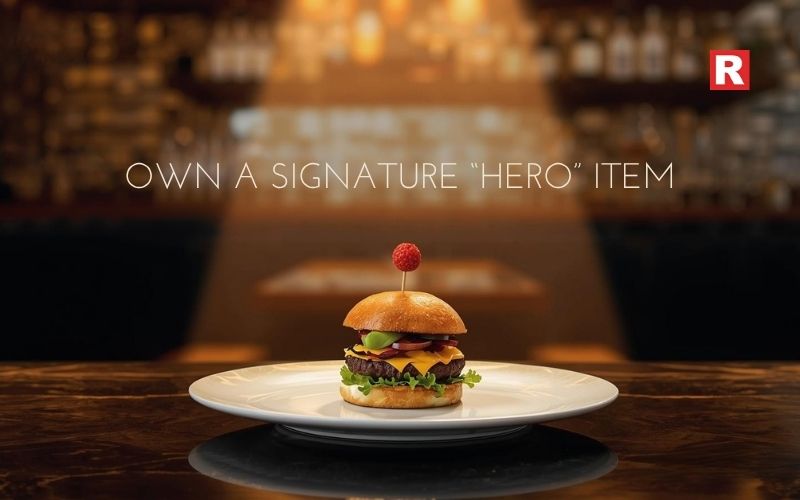
Every restaurant needs its own signature item or niche it’s known for. What's the one dish or drink people absolutely must try at your place? You need a "hero", or you can say, a signature item that is so unique and delicious it becomes the primary reason for a visit.
How to do it:
- Find Your Star: Master one item that can become the star of your restaurant. It can be a specific pasta made with a secret family recipe? A burger with an unforgettable special sauce? A cocktail smoked right at the table? Perfect one thing that nobody else can replicate easily.
- Tell Its Story: On your menu, on social media, tell the story behind the hero item. Where do the ingredients come from? What's the inspiration? Storytelling creates an emotional connection that transcends price.
- Make it Instagrammable: We eat with our eyes first. A visually stunning hero item is free marketing. People will take pictures and share them, bringing in their followers.
The Payoff: A strong hero item gives you a competitive edge. Instead of being "that Italian place," you become "the place with that incredible Truffle Arancini." It gives customers a specific, compelling reason to choose you over the competition.
Check out: Practical ways to train staff for better customer service
Adoption of AI for Personalized Customer Experience In Restaurants
5. Dominate the "Everyday" Occasions

Life will continue while you wait for the next festival or celebration to happen. So do not try to rely too much on them. People need lunch, they need a quick coffee meeting, they need to grab a solo dinner. Try to focus on these “everyday” occasions to attract customers.
How to do it:
- Optimize Your Lunch Service: Create a fast, affordable, and delicious lunch menu. Offer a "Business Lunch" thali or a quick "Grab & Go" counter for office crowds. Speed and value are the keys here for your business.
- Cater to the Solo Diner: Create a counter-seating area or a selection of smaller plates and a well-stocked magazine rack for the diners who come solo, whether for a quick lunch or just for chilling.
- Promote Takeaway and Delivery: Don’t just rely on third-party aggregators. Promote your own website for direct takeaway number or website ordering, perhaps with some offers that are only available on your app.
The Payoff: Grasping the essence of everyday market builds a steady, reliable revenue stream for your restaurant.
6. Build a Community, Not Just a Customer List
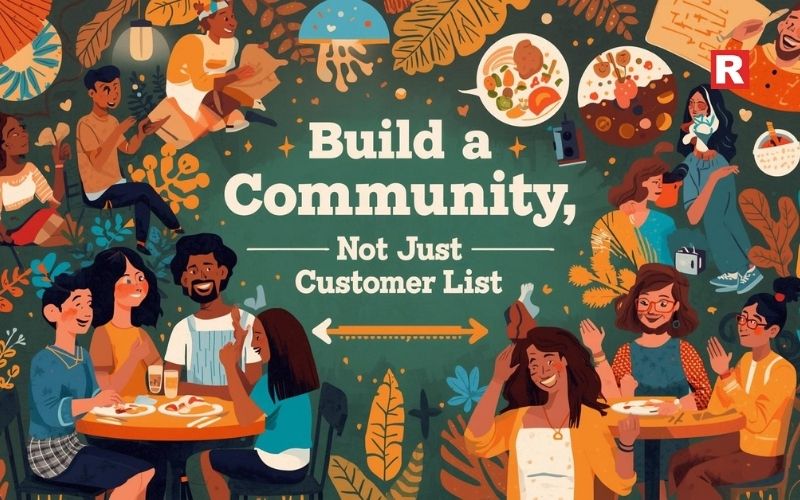
A restaurant should be a part of the community before it is a business. This is because people crave genuine connection. A restaurant that fosters a sense of community becomes indispensable to customers.
How to do it:
- Collaborate Locally: Partner with the nearby bookstore, brewery, or art gallery. Host a book launch, feature a local artist's work on your walls, or create a dinner paired with a local brewery's beers.
- Be a Good Neighbor: Sponsor a local sports team, participate in a neighborhood clean-up, or host a fundraiser for a local cause. Fuse your business into the fabric of the local area.
- Engage Authentically on Social Media: Don't just post your menu. Run polls asking what new dish you should add. Share behind-the-scenes videos of your chef. Introduce your staff.
The Payoff: When you're woven into the community, you're no longer just a business; you're a beloved local establishment. People will choose you because they feel a sense of ownership and pride in your success.
Learn more: 7 Tips That Can Help Restaurants Make More Revenue During Festivals
The Final Ingredient: Consistency
One thing that is common in all of these strategies is consistency. There should be consistency in the quality of your food, the warmth of your service, the comfort of your ambiance, and the value of your offerings. Once customers start believing that they will have a great meal and experience whenever they visit your restaurant, whether it is a festive night or a normal day, they will become your regulars. These customers are the foundation of your restaurant and the source of a steady revenue, who can visit you anytime throughout the year. So stop waiting for festivals to bring you customers and work forward so customers come to your restaurant without any reason.

The Food Business Industry in India is growing bigger day by day. This has given rise to several new restaurants popping up every day. But let’s be real. Not every new restaurant works well, and most new startups fail just after two to three months of opening. For people who want to work in the food industry someday, this will seem quite disheartening. After all, using your skills to run a successful business where people enjoy your food is a dream of many young cooking enthusiasts. But there are several other options to enter the food industry besides restaurants.
And in this article, we will be talking about just this. As the food industry has grown, many new and innovative types of food business ideas have come forward. Ranging on the resources you have, you can open your choice of business where you do not need to pay any overhead costs or sign any lease contracts. This article will introduce you to five food business ideas that do not require much capital and can help you achieve your culinary dream without opening a fully fledged restaurant.
Read more: Beyond the Kitchen: 5 Essential Qualities Required to Start a Food Business
1. The Ghost Kitchen: The Invisible Empire
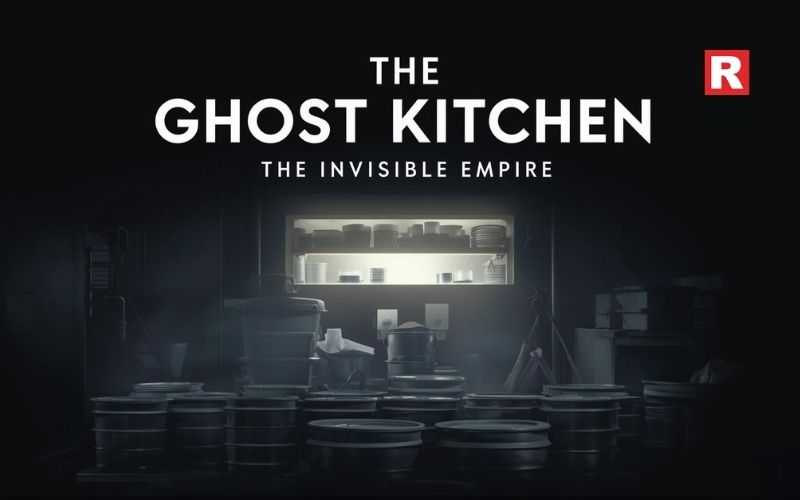
Startup Costs: ₹3 Lakhs - ₹15 Lakhs
A ghost kitchen is a delivery-only food business. There is no physical store, dining room, or waitstaff. Your entire operation is from your kitchen, where you cook the dishes that are ordered through apps like Swiggy, Zomato, or Dunzo and deliver them personally or via these third-party food aggregators.
What’s the Benefit: You have cut down on the single biggest cost in the food industry: prime real estate. Your entire focus and budget can go into the quality of your ingredients and mastering the delivery experience. You can operate from a licensed commercial kitchen, a shared commissary, or even from a home kitchen, wherever the regulations allow.
How to Make It Work:
- Niche Down to Stand Out: Don’t try to cook everything. Firstly, try to master a few dishes from the niche you’re good at. Are you the best at loaded gourmet fries? The pizza parlor with the perfect sourdough crust? The go-to for authentic, regional Thai curries? A focused menu means less waste, lower costs, and a brand that is easy to remember.
- Good Packaging: In a ghost kitchen, your packaging is your greatest problem. You should choose a packaging that can keep food hot, crisp, and secure. A soggy pakora or a leaked gravy will only give you a one-star review. Invest in high-quality, functional, and eco-friendly containers that keep the food secure during travel.
- Market in the Digital World: For a ghost kitchen, the best way to meet with potential customers is via social media. Use Instagram Reels and TikTok to show close-ups of your cooking process. Run "limited time only" specials. Collaborate with local food influencers. Your digital presence is your storefront.
Know more: How “Food Near Me” & “Open Now” Searches are Changing Restaurant Business Models
2. The Food Truck: Your Restaurant on Wheels
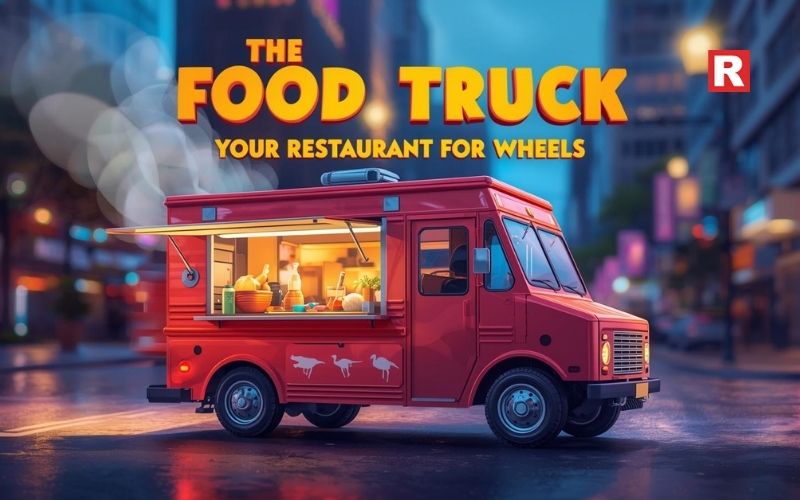
Startup Costs: ₹8 Lakhs - ₹25 Lakhs
This is a mobile kitchen that brings your food directly to your customers. You can park it at office parks during lunch, at breweries in the evening, and at festivals on the weekend.
What’s the Benefit: A food truck offers incredible flexibility and a lower startup cost than a one-spot business. You can test different neighborhoods to find your perfect customer base. Follow what the customers of different areas demand, and also create a "destination" buzz wherever you park.
How to Make It Work:
- Create a Signature Star: Your menu needs a main dish that will be your food truck’s signature. Think of the most successful food trucks. Do your research on them. All food trucks had one amazing thing they were especially known for. What’s your star? Try to find that and brand your food truck according to that.
- Master Location Scouting: Your success is tied to your parking spot. Build relationships with business parks, event organizers, and breweries. A consistent weekly spot builds a loyal customer base.
- Be the Social Butterfly: Your customers need to know where you are! Use social media relentlessly. Post your weekly schedule every Monday. Use Instagram Stories with geotags to show your real-time location. A hungry customer should be able to find you in minutes.
3. The Kitchen Lunch Service: The Office Hero
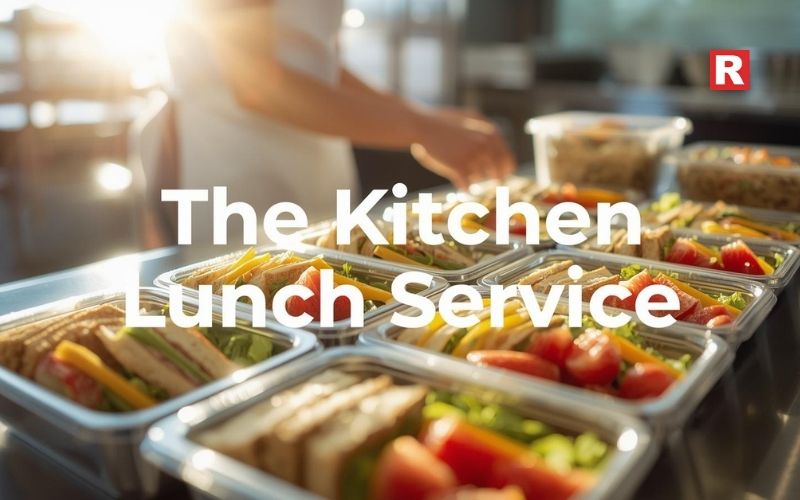
Startup Costs: ₹50,000 - ₹5 Lakhs
Preparing home-cooked lunch for busy office workers who do not have the time to make one themselves is what we call a kitchen lunch service. You prepare fresh, homestyle lunches and deliver them directly to offices or a central pickup point. You’re solving the daily "what’s for lunch?" dilemma for busy professionals.
What’s the Benefit: This model creates predictable, recurring revenue. You get large, bulk orders, which are more efficient than cooking for individual, one-off customers. Also, you become an essential service for your customers.
How to Make It Work:
- Find Your First Clients: Start with your own network. So, try to find office workers or contact offices that can make use of your service. Word-of-mouth is powerful here.
- Create a Simple, Rotating Menu: Offer a weekly menu with 2-3 options per day (e.g., one vegetarian, one non-vegetarian). You can also create a Thali-style system. This simplifies ordering for you and gives customers variety.
- Perfect the Subscription Model: The goal is to move from one-off orders to weekly or monthly subscriptions. Offer a discount for offices that commit to a monthly plan. This gives you financial stability and makes planning a breeze.
What's new: How Taglines and Slogans Affect Your Restaurant Business
4. The Food Stall: The Community Cornerstone
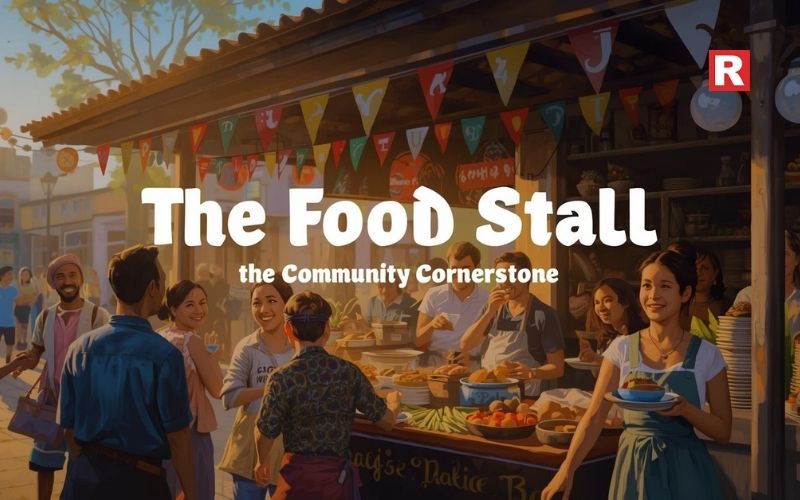
Startup Costs: ₹1 Lakh - ₹8 Lakhs
This business model makes a semi-permanent stall in a high-foot-traffic area like a weekend flea market, a permanent food court, or a mall food hall.
What’s the Benefit: The startup costs are relatively low, and it’s a fantastic way to build a brand and get immediate customer feedback. Also, it offers the vibe of a restaurant without the big rent. You can also benefit from the collective footfall of the market or hall.
How to Make It Work:
- Create an Irresistible, Quick Bite Menu: Your food should be easy to eat while walking. Think about food items like sliders, momos, dosa rolls, loaded nachos, or single-serving desserts. Visual appeal is crucial. As they say, people eat with their eyes first.
- Design a Vibrant, Creative Stall: Your stall is your brand’s face. Invest in a great banner, clear menu boards, and warm lighting. A clean, attractive stall draws people in.
- Engage and Build a Following: Talk to your customers. Offer samples. Ask what they think about your food, the environment, or anything they want to point out. This business requires you to engage with the customers more, so you can turn a one-time buyer into a repeat fan.
Check out: 7 Strategies Restaurants Can Use to Triple Karwa Chauth Revenue
GST Registration for A Restaurant Business: How It Works
5. Cooking Classes: Share Your Secret Recipe

Startup Costs: ₹20,000 - ₹3 Lakhs
Several others like you might like cooking, but don’t know how to cook professionally. Or, maybe a person wants to learn how to cook. Some might even want to learn as a hobby. This is what you’ll do: teach them. You can teach small groups how to cook at the start. This can be done in your own home kitchen, a rented community space, or even virtually.
What’s the Benefit: This business sells an experience, not just a meal. The profit margins on ingredients are high, and people are willing to pay a premium for a fun, social, and educational night out. It requires your knowledge, not just your cooking speed. You need to be slow and teach your students the right way to “cook”
How to Make It Work:
- Pick a Theme: Don’t just offer a "general cooking class." Get specific. Host a "Perfect Pasta from Scratch" night, a "Street Food of Delhi" workshop, or a "Vegan Baking 101" class. Themes are easier to market to the people.
- Create a Seamless Experience: From the welcome drink to the printed recipes they take home, every detail matters. Provide all the ingredients, pre-measured where possible, and high-quality equipment.
- Market to Your Audience: Partner with local companies for corporate team-building events. Promote "Date Night" classes for couples. Offer parent-child baking sessions on weekends. Use platforms like Airbnb Experiences to reach a travel-savvy audience.
Learn more: How to Turn Cricket Fever into Restaurant Revenue
Your Recipe for Success Starts Now
What’s the common ingredient in all of these ideas? They do start small, stay slow for a while, but they can grow big eventually if you make the right business decisions. Also, they help you make genuine connections with the customers. Remember, you’re not just selling any product; you’re selling your skills, your story, your food, and most of all, a solution to their needs.
So, before you decide which food business you want to go for, take a look at your skills and the resources you have. Choose whichever business is right with you, as in the end, your main goal is to show your culinary skills. And take this article as a guide that will help you in deciding the business that is best for you. Good luck!

Calling Karwa Chauth an emotion rather than merely a day would not be any kind of overstatement. This day is celebrated by many couples throughout the country with love and commitment for each other. Fasting and praying are the main parts of the festival, which brings us to the point: how can a restaurant benefit from this?
This day is a big opportunity for restaurants to generate revenue. Gone are the days when this was only a full day of fasting for women. Now, people celebrate the day fully just like any other celebration. This also includes dining out, because having a feast after a full day of fasting is very satisfying. It's also because customers are actively searching for a hassle-free experience, so they can enjoy the day to the fullest.
Karwa Chauth has the potential to be one of your most profitable days of the year if you play your cards correctly. Here is a strategic guide with seven powerful strategies that not only attract customers but also help to triple your revenue during this day of celebration and love.
Read more: 7 Tips That Can Help Restaurants Make More Revenue During Festivals
1. Don’t Just Offer a Meal – Offer a Complete "Karwa Chauth Experience"

Forget about a customized meal. The key to maximizing your revenue is packaging. Customers want everything to get taken care of on this day so they can enjoy themselves completely. They don’t want to think; they just want to enjoy the day.
And your goal is to do just that. You need to create an experience that customers can’t replicate at home.
What you can do:
- A Special Sargi Thali (Pre-Dawn Meal): Create a pre-packed, beautiful “Sargi Kit” for pre-ordering. This kit is for the Sargi ritual. Design a traditional yet elegant thali with fresh fruits, dry fruits, vermicelli (sawaiyan), mathri, and a sweet treat. Pack it within a decorative box that the customers can take home. This creates a new stream of revenue before even your day begins.
- The Evening Feast: Create a customized menu that focuses on nourishing, comforting, and celebratory dishes. Rich curries, fluffy breads, and something that feels like a feast after a long fast are some good choices.
- The "First Bite" Moment: This is the heart of the evening. Make a pretty little platter so the husband can serve his wife the first bite. A piece of jalebi, a date, something sweet on a plate scattered with rose petals. It’s incredibly romantic and very Instagrammable.
- Throw in a Little Gift: A single rose, a piece of good chocolate, or a small diya with your logo. It costs little, but it makes people feel truly valued.
Price this package as a premium item. People are willing to pay more when you sell a memory rather than just a meal.
2. Transform Your Space into a Romantic Haven

Ambiance is everything. Your interior design must bring out "romance and tradition" on Karwa Chauth.
- Ditch the Harsh Lights: Replace the harsh lights with soft, warm ones. Imagine tea-light candles on each table, fairy lights, and dozens of diyas. It must have a gentle, enchanted glow all over the restaurant.
- Embrace the Colors: Make your tablecloths, cushions, and curtains rich in pinks, maroons, golds, and reds.
- Set up a Photo Corner: This is a must in the era of social media. Create a lovely photo spot, such as a traditional chaukhat, a floral background, or a swing decorated with flowers. As props, provide a veil and a puja thali. Couples who take photos here and post them online are giving you free publicity!
Know more: Best Food Festivals Every Foodie Must Attend
3. Help Them Get Ready – Offer a Mehendi & Glam Pre-Booking Deal

The day of Karwa Chauth is filled with a lot of preparation. Women are all getting ready and applying mehendi on their hands for the evening. Your restaurant can become a part of this process.
The Offer: Get into a partnership with a local mehendi artist and a makeup artist. Offer a "Complete Get-Ready Package" for early bookers as a premium add-on or an incentive.
The Win-Win: This does three things:
- It drives early, guaranteed revenue.
- It gets the customer into your restaurant hours before their meal, increasing the likelihood they'll stay.
- It positions your restaurant as a one-stop shop that truly understands and caters to their needs.
4. Create FOMO with Exclusive "Moon-Sighting" Balcony/Terrace Tables
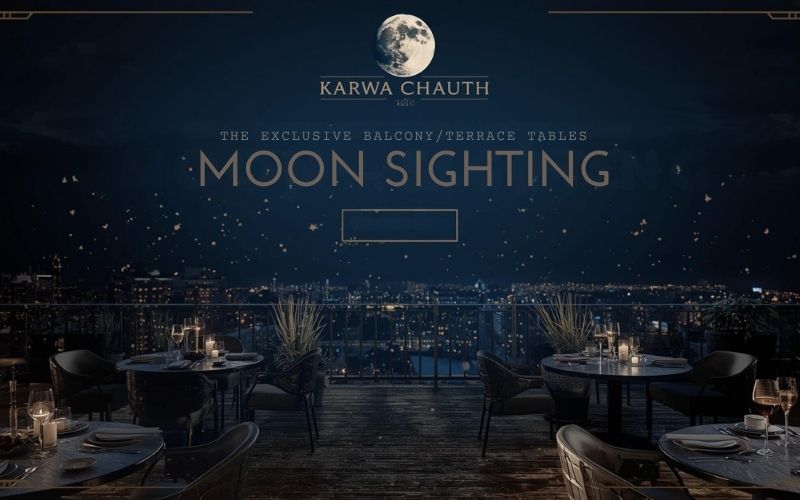
The sighting of the moon is the main event of Karwa Chauth. This moment is the most dramatic and sacred.
- The Idea: Promote your terrace, balcony, or even a few window tables that provide a good view of the sky as "Premium Moon-Sighting Tables."
- The Package: An improved package needs to be included with these tables. Offer a free welcome drink, maybe a small bottle of champagne or a gourmet mocktail to celebrate, and an assigned waiter who will promptly bring the puja thali when the moon is sighted.
- Pricing: These tables can be sold for 20–30% more. The price can be justified by the exclusivity and perfect, flawless experience, resulting in a limited-edition, high-demand offer that creates FOMO.
What's new: Raise a Toast: Best Whiskies to Celebrate This Festive Season
5. Bring the Feast to Their Home

Not all couples are interested in going out on this special day. Most especially after a long day of fasting, some people prefer the privacy of their own homes. However, the last thing they want to do is cook. Take this market as your target.
- The Product: Design a unique tiffin service for the "Karwa Chauth Home Feast." A multi-course meal for two should be served in lovely, elegant, and disposable containers.
- Items: A small, ready-to-use puja thali with a diya, sindoor, and a few sweets, followed by the entire meal, should be included in the package.
- Marketing: Use social media and food delivery apps like Swiggy and Zomato to spread the word about this. Make use of romantic and convenient text, such as "Let us handle the feast, so you can focus on the love." This allows you to reach beyond the actual seating capacity of your restaurant.
6. Get Smart with Bookings and Payments

A full house on Karwa Chauth is a given for most. The goal is to ensure it's a profitable full house with a high average order value.
- Limited-Time Offers: Create urgency with limited-time offers. "First 10 bookings get a free romantic photo print." Or, "Confirm your table with a 50% deposit and get a complimentary dessert platter."
- Promote on WhatsApp: It’s a game-changer idea. Create a beautiful, visual PDF of your package and have your team send it directly to inquiring customers. The personal touch of a chat conversation converts far better than a generic online ad.
Check out: How to Turn Cricket Fever into Restaurant Revenue
What should you keep in mind while selecting juices this Diwali?
7. Ignite Social Media with a "Share Your Love" Contest

In the week leading up to the festival, run a social media contest that gets people talking and sharing. But don't just run a boring "like and share" giveaway.
- Try this: "Tell us your love story! Share the most memorable thing your partner has ever done for you, and the winning couple will enjoy our signature Karwa Chauth experience on us!"
- The Mechanics: Ask them to follow your page and share their story in the comments. The engagement you'll get is unbelievable. You'll be flooded with beautiful, authentic stories that create a powerful emotional connection to your brand. The cost of one complimentary meal is nothing compared to the wave of positive publicity and genuine community you build.
- The Result: It builds a buzz around your restaurant and gives you a ton of real marketing materials. The winner is overjoyed, and you've promoted yourself to hundreds of their friends while also filling a table with potential customers who will probably spend money on drinks and extras.
Learn more: Top 5 Street Foods in Jodhpur You Can’t Miss
The Final Ingredient: Heartfelt Service
Besides all of the strategies, remember that the core of the festival is love and emotion. Train your staff so they give the customers space when needed, remain empathetic all the time, and keep the atmosphere celebratory. Remember, a warm smile, a genuine greeting, and attentive service will be remembered ever after the festival is over. This is what will turn a one-time customer into a loyal one that will also return on anniversaries and other special occasions.

Indians' love of food and cricket go hand-in-hand. When a cricket match or tournament happens, the whole country comes together and holds its breath with every ball bowled. For most people, it is game time. But for you, as a restaurant owner, it’s your prime time to do business.
Don’t think of a cricket match on your restaurant TV as just a background noise for your diners. This cricket fever can be turned into a golden opportunity to attract customers if you plan carefully. When a major tournament like the IPL or the World Cup rolls around, that’s when you can create an opportunity for your customers to truly experience the game that would be even better than enjoying it from the comfort of their homes.
But it will take more than just turning on your TV. You need to create a game plan. And in this article, we will be discussing just that. We’re going to guide you through how to turn this cricket fever into a sales and customer engagement and loyalty boost at your restaurants.
Read more: The Top 5 Sports Bar Menu Design Ideas (2025)
Pre-Match Preparation: Building the Hype
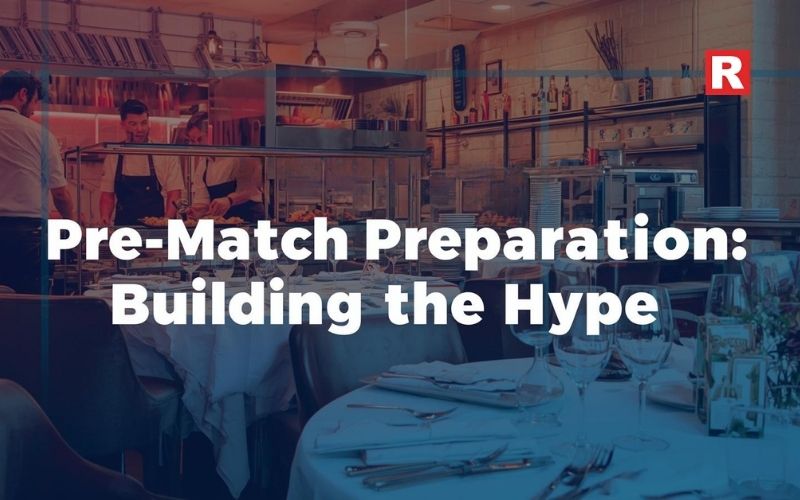
You need to start preparing in advance for success on match days. So don't open your doors on match day without doing your homework first.
1. Secure the Broadcast Rights and Optimize the Viewing Experience
- Legal Broadcast: This is the most important step. Check and then double-check that you have the correct commercial license to display the game in your restaurant. Using your residential streaming service is illegal for businesses and can also risk shutdowns mid-match. It’s worth investing in the proper subscription from the official broadcasters.
- Audio & Visuals: You also need to check how your screen displays the match in your restaurant. Is your screen big enough? Is the sound clear? There's nothing worse than a pixelated picture or muffled commentary. If your space allows it, a couple of extra screens in different corners can make all the difference. After all, no one wants to crane their neck all night.
2. Craft a Themed "Cricket Menu"
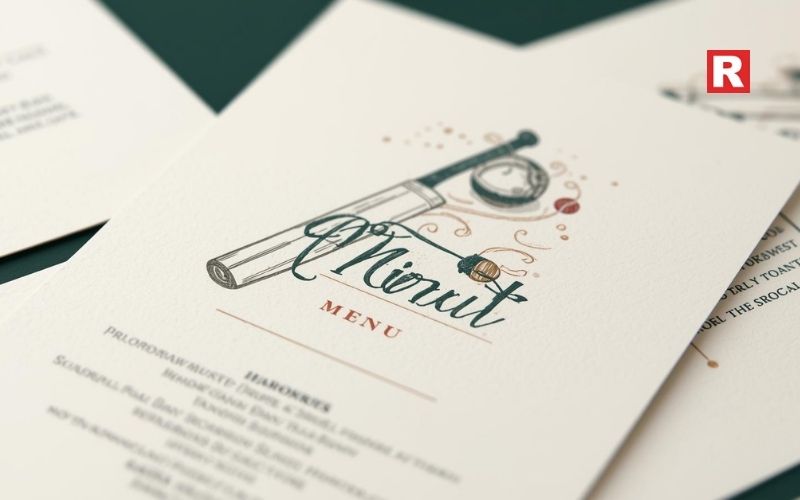
Your menu is your star player. Temporarily rebrand it to create a sense of occasion.
- Themed Naming: This is a simple trick that works wonders. "Dhoni's Finisher Fries," "The Googly Burger," or "Boundary Chicken Wings." It makes the menu feel special and is practically begging to be posted on social media.
- Stadium-Style Snacks: Elevate classic stadium-style food. You should think beyond nachos to include gourmet-style loaded fries, varieties of sliders, spicy chicken wings with different sauces, and different sharing platters.
- Focus on Shareables: Cricket is a social event. People are high-fiving, groaning, and celebrating together. Your menu should encourage that. Create platters for the whole table, buckets of beer, loaded nachos, and sliders—food that's made for sharing and doesn't require too much fussy cutlery.
- Quick-Bite Options: No one wants to wait 20 minutes for a complicated dish during a super over or a tight chase. Have some solid, quick-fire options ready to go. Like a killer plate of fries or some spicy popcorn chicken, that the kitchen can whip up in minutes.
Know more: How to create a restaurant menu from scratch
3. Develop Cricket-Themed Beverage Promotions
Your drink game needs to be as strong as your food.
- Themed Cocktails & Mocktails: Whip up a "Sixer Smash" cocktail or a "Powerplay Punch" mocktail. Make them colorful and fun. People love a drink that feels part of the event.
- Drink Promotions: This is a surefire way to keep the energy up. How about a "Wicket-Taker" shot special every time a wicket falls? Or a "Four for a Four" deal where everyone at a table gets a discount when a batsman hits a boundary? These little interactions and promotions make the crowd feel like they're part of the action.
The Match Day Strategy: Executing a Flawless Innings

All the prep is done. The doors are open. Now it's all about execution and maintaining the atmosphere.
1. Create an Immersive Atmosphere
You're not just a restaurant showing a game. Think of your restaurant as the local stadium.
- Decor: It doesn't have to be expensive. Hang some flags of the playing teams, put up some cricket banners, or set up a mini set of stumps for photos. A little effort goes a long way in making the place feel dedicated to the event.
- Cricket Quest & Music: During the break, why not run a quick cricket quest contest? The prize could be a free dessert or a round of drinks. It keeps people engaged even when the players are off the field.
- Engage with the Game: Train your staff to be engaged in the game. Your servers and bartenders set the tone. A quick cheer from them when a six is hit makes the whole room feel like a community. They don't have to be experts, but a little enthusiasm is contagious.
What's new: 10 Leading Burger Chains With the Most Outlets in India
2. Streamline Operations for Peak Efficiency
A packed restaurant is the goal, but it can be chaos if you're not ready.
Staffing: Schedule extra hands for both the kitchen and the floor. Make sure everyone knows the specials and the game's timeline inside and out.
Optimized Service Model:
- Pre-Orders: For the reserved tables, offer a pre-order option for halftime or intervals, like a timeout, to help ease kitchen pressure.
- Limited Menu: Consider simplifying the main menu to focus on the high-margin, easy-to-execute cricket specials. This will speed up services and also help to reduce errors.
- Simplify Service: Consider using a QR code ordering system for the night. This lets people order and pay directly from their phones, which is a lifesaver when your servers are run off their feet. It also means fans never have to miss a crucial moment to flag someone down.
3. Leverage Technology and Reservations
- Promote Reservations: Promote table reservations on your website and social media. Use a platform for reservations that allows deposits to prevent no-shows, especially for big tournaments like India vs. Pakistan or the finals.
- Live Updates: Use your social media channels to provide live updates from the restaurant. Also, post stories and reels that show the vibrant atmosphere, close-ups of your delicious platters, or customers who are celebrating. This will create FOMO for potential customers.
The Post-Match Analysis: Building Lasting Loyalty

The match is over. The winning team has celebrated, and the crowd is starting to head home. However, your job isn't finished yet.
1. Incentivize Repeat Business
As they're paying their bill, hand them a little "Thank You" note with a discount for their next visit. Something simple like, "Hope you enjoyed the win with us! Come back soon and enjoy 10% off your next meal." This simple gesture turns a single great night into the start of a loyal customer relationship.
2. Gather Feedback and Analyze Performance
Take a moment after the madness ends to talk to your staff. What worked? What didn't? What items on your menu were a hit? Was the sound system okay in the back corner? Read your online reviews and listen to customer feedback. This is how you get better and better each season.
Check out: How Health & Wellness Trends Are Redefining Indian Dessert Menus
How Specialty Restaurants are Redefining the Dining Experience
Advanced Strategies for a Competitive Edge
To truly dominate the restaurant market, you need to go beyond the basics.
- Host a Former Player or Commentator: Organize a Q&A session with a cricket personality by collaborating with a nearby sports radio station or brand. This ensures exclusive media coverage and is a huge lure for customers.
- Family-Friendly Matches: For day-long Test matches or less intense games, create a family-friendly environment where customers of any demographic can visit. You can also create a special kids’ corner, have coloring activities, and offer kids’ special meals. This increases your customer base in the long run.
- Community Partnerships: Have partnerships with local cricket clubs. You can be their post-match hangout in exchange for them promoting your restaurant to their members. This builds a strong, local, and loyal customer base.
Learn more: Top 5 Street Foods in Jodhpur You Can’t Miss
Your Restaurant, The Winning Stadium
Cricket fever presents a powerful opportunity for the restaurant industry to increase its profitability. By moving beyond simply showing a cricket match and changing it to an active, engaging experience, you can do much more than simply increase your everyday revenue. You can create a space for your business in the restaurant market.
A smart restaurateur will use this chance to create a space where strangers become friends in a shared six, where the joy of victory is enhanced by a well-prepared burger and a cold beer, and where friendships are strengthened over a dropped catch. So, create your game plan, train your staff, and get ready to make the maximum revenue with the cricket fever.

India's rich and diverse culinary scene is well-known across the world, but it faces a serious and sometimes disregarded problem: commercial food waste, especially in the large and well-liked buffet style. Buffets are a mainstay of Indian hospitality and are a symbol of abundance at event spaces, upscale hotels, and sizable corporate canteens. But this same abundance frequently results in astounding waste, which is a triple burden: economically, environmentally, and ethically.
Globally, food waste plays a major role in resource depletion and greenhouse gas emissions. The moral responsibility is much more pressing in India, a nation that struggles with food shortages. Additionally, wasted food means wasted money for a business, including wasted labor, raw materials, preparation energy, and disposal expenses. According to a Food and Agriculture Organization (FAO) research, almost one-third of the world's food production is wasted or lost. Although it is difficult to pinpoint exact numbers for the Indian commercial buffet business, expert studies indicate the waste proportion is at an unacceptably high level. In addition to being a question of corporate social responsibility (CSR), addressing this is a crucial tactic for improving brand reputation in a market that is becoming more and more concerned with sustainability, as well as for operational efficiency and F&B cost reduction.
The following article explores five practical, culturally aware, and effective strategies that Indian businesses can use to drastically cut down on buffet food waste, transforming an expensive issue into a chance for both profit and the environment.
Read more: How to Start a Buffet Restaurant
1. Smart Sizing and Stepped Replenishment

The standard buffet concept promotes excessive production and presentation in order to provide an eye-catching "wow" factor—a visual feast that frequently exceeds capacity and causes needless spoiling. Changing the way food is prepared and handled on the service line is the most direct and quickest strategy to reduce waste.
Implementation Strategy:
- Smaller Serving Dishes: Switch to shallower, smaller containers rather than big, deep chafing dishes that need a lot of food to appear filled. A smaller dish that is completely loaded appears full and appealing, whereas a huge dish that is only partially filled appears empty. By making this small adjustment, the amount of food exposed to heat, air, and customer interaction greatly decreases. As a result, less food is wasted when dishes are replaced for hygienic or temperature-related reasons.
- Just-in-Time, Phased Resupply: Get rid of the practice of cooking all of the food in advance of serving. Use a "Cook to Demand" strategy. The first setting should include enough yet controllable amounts. In order to practice "active waste management," kitchen employees (or designated line stewards) should keep a close eye on the buffet line and only put out newly made food in tiny quantities when a dish is obviously running low. By doing this, the food on the line is always guaranteed to be tempting and fresh, and more significantly, it spends less time outside of safe holding temperatures, making it safer for possible donation if protocols permit.
- Buffer Stock Management: Keep cooked food at the ideal safety temperatures in a small, heated holding space in the back-of-house, close to the service line. This prevents the visible line from being overstocked and enables replenishment to happen very instantly.
Impact: This strategy immediately lowers exposure to waste, or food that is thrown out after being left out for too long, and excessive portions. And because food is always being replaced, it also enhances the quality of the meal.
2. Deep-Dive Data Analytics

The 'gut instinct' of an experienced chef is no longer a sufficient method of forecasting buffet consumption in the twenty-first century. Planning for inventory and production is where effective waste reduction begins, not on the buffet line. Consistent data collection combined with modern technologies provides strong prediction insights.
Implementation Strategy:
- Digital Waste Tracking: Implement a necessary and user-friendly system for tracking digital trash. For each item thrown out, kitchen workers should record its kind, weight, and reason (e.g., 'Pre-consumer trimming,' 'Buffet leftover - pasta,' 'Spoilage - improper storage'). Operational faults, high-waste goods, and peak waste times are identified using this data.
- Predictive Demand Modeling: Utilize past waste data along with important operational variables, such as daily foot traffic, special events, weather predictions, and menu rotations, to create predictive demand modeling. For example, a Sunday brunch will be very different from Monday's eating patterns. Reduce the raw quantity requested for high-waste goods, such as certain desserts or less popular side dishes, by using this analysis to improve the Production Planning Sheet.
- A/B Menu Testing: Variations are tested using the waste data. Should the 'Continental Vegetable Gratin' continuously produce 20% more waste than the 'Dal Makhani,' think about cutting back on its serving size, arranging it later in the buffet flow, or switching it out completely for a less wasteful option.
Impact: Waste management is now viewed as a strategic science rather than a reactive behavior. Pre-consumer waste (trimming, spoiling) is addressed, and post-consumer waste (uneaten food off the line) is greatly decreased, by ensuring that the amounts of raw material purchases and early preparation are closely matched with actual consumption.
Know more: Why the Buffet is the Perfect Meal for Corporate Events
3. Rethinking Plate Size and Layout

Human psychology has a significant impact on how much food is consumed. Regardless of hunger, customers often stuff their plates, and the huge plate sizes found at contemporary buffets promote overserving, which results in significant plate waste—the food that guests take but do not consume.
Implementation Strategy:
- Downsize Plates (Strategic): Bring back dinner plates that are a little bit smaller. Typically, this means going from a 12-inch to a 10-inch diameter. Even if customers return for a second serving, studies repeatedly demonstrate that smaller dishes result in them consuming less food. To avoid taking away from the premium experience, the decrease must be discreet.
- Buffet Flow & Layout: Arrange the buffet so that high-value, low-waste goods (like proteins) are placed strategically ahead of high-volume, perhaps higher-waste items (like bread or rice). Since salad and fruit are often lighter and easier to digest, place them at the beginning. The most popular dishes should be positioned halfway through the flow, not at the beginning, to encourage customers to thoroughly examine their options as they go.
- Visible Educational Signs: Use well-crafted, casual signs that convey a relatable message. Without coming across as dictatorial, phrases like "Take All You Like, Eat All You Take" or "Help Us Reduce Waste: Start with a Small Serving" might gently encourage behavior.
Impact: Since plate waste frequently makes up the greatest portion of post-consumer garbage, this technique is essential to reducing it. Without compromising the variety that characterizes the buffet experience, it gives customers the ability to make more responsible choices.
What's new: How to Train Your Staff on Buffet Etiquette
4. Creative Recycling and Advanced Kitchen Utility
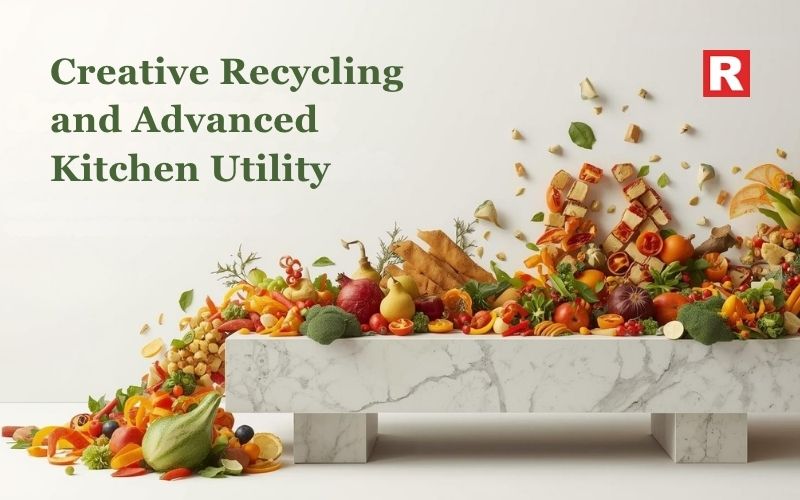
This includes making use of safe, pre-consumer leftovers (such as unused, unopened amounts of prepared sauces or stocks) and inevitable pre-consumer garbage (trimmings, peels, and bones).
Implementation Strategy:
- Bone and Vegetable Trimming Stock Method: Put in place a strict procedure for making flavorful, premium stocks and broths out of bones, vegetable peels, and trimmings. This improves both quality and cost by reducing the need to buy commercial goods and saving waste.
- Repurposing Leftover Components: If procedures permit and the food is of pre-consumer quality, leftover roasted veggies, for instance, can be processed into a soup base the following day. Like croutons, upma base, and bread pudding can all be made with day-old bread.
- Employee Meals Program: Put in place a structure that allows the daily employee canteen menu to include safe, high-quality leftovers that might be too tiny to donate but ideal for a staff lunch. This guarantees that food is consumed within the business and gives staff members healthy meals.
- Composting/Bio-Gas: Invest in or collaborate with nearby organizations for commercial composting or bio-gas conversion for totally unavoidable, hazardous, or post-consumer food waste (plate scrapings). This completes the circular economic cycle by keeping garbage out of landfills and occasionally producing byproducts like fertilizer or renewable energy.
Check out: Personalizing the Buffet: Why A La Carte Add-ons are Your Next Big Opportunity
Essential Buffet Equipment for a Seamless Service
5. Food Recovery and Donation Partnerships

This point discusses the moral and practical measures to lessen the societal and ethical burden of waste by donating safe, extra food.
Implementation Strategy:
- Safety Procedures and Legal Compliance: Discuss the need to follow the Food Safety and Standards Authority of India's (FSSAI) rules when donating food. Draw attention to the difference between "plate waste" and "buffet line excess," which is food that has been kept at an acceptable temperature but has not been served.
- Partnering with NGOs: Formal and continuous agreements should be established with local non-profits, food banks, or charity organizations that specialize in food retrieval and distribution, such as Feeding India and Robin Hood Army. For NGOs to plan their logistics, consistency is essential.
- Logistical Framework: Put in place a simple "recovery window" procedure. As soon as the service window closes, enthusiastic, skilled staff must safely pack, refrigerate, and label extra, safe food so that it may be picked up by NGOs.
- Tax Incentives and PR: If relevant, discuss the possible tax advantages of food donations as well as the tremendously helpful publicity and goodwill that an open, active food donation program may create.
Learn more: Why Zero Waste Cooking is the Next Big Trend in Indian F&B Scene
From Waste to Wealth and Well-being
In India, the problem of commercial buffet food waste is complicated, but it also offers a clear route to increased sustainability and substantial financial benefit. By changing the focus from the "display of abundance" to the "efficiency of service," businesses can more effectively balance their moral obligations with their financial goals. Instead of involving different actions, the five strategies—Smart Sizing, Data Analytics, Strategic Layout, Creative Repurposing, and Food Recovery—form a unified, circular approach. Although there is an initial training and technological investment required to implement these changes, there are significant benefits in the form of lower operating expenses, a smaller carbon footprint, and improved brand recognition. Reducing food waste is the new benchmark for the Indian hospitality industry, turning abundance from an expense into a long-term benefit for society and business.

In today’s competitive market scenario, winning a customer is a task. What helps in the long run is nurturing the repeat customers to drive-in for more businesses. For this, every aspect plays an important role. From attention-to-detail to personalized experiences and timely engagements.
Delivering Exceptional Customer Experience
Consistency is king. Customers return when they know they can rely on the quality of your product or service. But consistency alone isn’t enough as personalization makes them feel seen and valued.
“We believe this begins at the ground level, with a highly motivated and well-trained team that takes genuine interest in making guests feel special. We invest extensively in the training and development of both our front-of-house staff and chefs, ensuring they are empowered to create memorable experiences,” mentioned Aman Talreja, Co-Founder, FARRO, Pune.
Sharing his views, Rohit Dadlani, Co-Founder, Pause, Mumbai said, “We believe repeat visits go beyond food, they are driven by feeling. Our focus is on creating a lifestyle experience where guests slow down, enjoy soulful plant-based food, and feel part of a community.”
Implementing Loyalty and Reward Programs
Loyalty programs are a proven way to encourage repeat business. Points-based systems allow customers to earn rewards for each purchase, while tiered rewards create incentives for frequent engagement. Exclusive offers, early access to new products, or birthday perks give customers a sense of recognition and belonging, making them more likely to return.
Customer loyalty is more about service and communication as it is about creativity and consistency. Akshay Anand, Founder, Cosy Box Delhi stressed that their focus is to make every customer interaction whether it’s online or offline, an experience worth repeating. These moments of surprise encourage not only repeat visits but also positive word-of-mouth.
Engaging Customers through Communication
Regular and meaningful communication keeps your brand top-of-mind. Email marketing allows you to send personalized follow-ups, product recommendations, and promotions. Quick alerts via SMS or messaging apps can remind customers of new offerings or events.
Talreja added, “Our regular patrons are engaged through special dinners, wine tastings, and exclusive previews, allowing them to feel part of a larger community. This sense of belonging ensures that loyalty is not transactional but rooted in relationships.”
“From a consistency standpoint, we prioritize seamless service and attention to detail, ensuring every visit feels personalized and warm. Our teams are trained to actively gather feedback, which not only helps us improve but also makes customers feel heard and valued,” noted Anand who further emphasized those limited time offers, exclusive events, and special memberships also give our repeat guests a sense of belonging and exclusivity.
Building an Emotional Connection
Customers are loyal to brands they resonate with emotionally. Share your brand story, values, and purpose to foster a sense of connection. Create communities through clubs, events, or social platforms that allow customers to engage not just with your brand, but with each other.
Putting up his viewpoints, Dadlani noted, “Our team makes an effort to remember guest preferences and add small touches of warmth that turns visits into relationships. We are increasingly pivoting into storytelling-led marketing to build a community that sees pause as part of their lifestyle.For us, retaining the customers isn’t about discounts or gimmicks. It’s about a meaning.”
Highlighting his views, Nirav A Rajani, Partner & Founder of Gaia said, “On the engagement front, we actively listen. Many of our experimental dishes are born out of conversations with guests, their feedback, and even their challenges when dining vegetarian. That exchange of ideas makes them feel part of our journey, and that sense of belonging is invaluable.”
Highly motivated staff
Driving repeat business starts from ground level, with a highly motivated and well-trained team that takes genuine interest in making guests feel special.
“We invest extensively in the training and development of both our front-of-house staff and chefs, ensuring they are empowered to create memorable experiences. This, in our view, holds greater value than discounts or freebies, as true satisfaction comes from how a guest is made to feel,” commented Talreja.
So, repeat business not just focuses on transactions, but on relationships. These businesses can turn one-time customers into lifelong advocates. Every interaction is an opportunity to reinforce trust, create value, and foster a bond that keeps customers coming back.

The idea of starting a restaurant is often coupled with thoughts of vibrant dining areas, creative cuisine, and excellent reviews. However, transforming that idea into an actual business depends on a crucial but sometimes disregarded document: the commercial leasing agreement. A lease is the blueprint for a restaurateur's future operational, financial, and legal life; it is more than simply a space agreement.
A restaurant lease is more complicated than a typical office or retail lease since it must deal with expensive infrastructure requirements (gas, water, and exhaust), strict operating hours, and special licensing requirements. A single poorly drafted clause can end up in operational shutdowns, crushing financial consequences, or a total loss of investment.
What is a Restaurant Lease Agreement?

A legally binding agreement between a restaurateur (lessee) and a landlord (lessor) gives the tenant the exclusive right to use a commercial space for running a food and beverage (F&B) business.
The Transfer of Property Act of 1882 and the Indian Contract Act of 1872 are the main laws that regulate commercial leases in India. Since the majority of business contracts last longer than 11 months, they must be stamped and registered in accordance with the Indian Registration Act of 1908 to be accepted as evidence in court. To protect the restaurateur's rights and investment, this procedure is essential. The provisions of the agreement are quite customizable and include every aspect of the lease, from the basic rent to the ability to install a grease trap.
Read more: Why the Buffet is the Perfect Meal for Corporate Events
Understanding the Types of Commercial Leases

For a business like a restaurant, which is known for having extremely narrow profit margins, the kind of lease determines who is responsible for covering the property's operational costs over and beyond the basic rent.
1. Gross Lease (Full-Service)
The renter in a gross lease makes a single, set rent payment. The majority of the property's operational costs, such as building insurance, property taxes, and structural upkeep, are the landlord's responsibility. For new, small businesses looking for fixed, total expenses, this is perfect.
2. Modified Gross Lease
In a modified gross lease, the landlord and tenant negotiate which exact running costs will be covered by each side, balancing their responsibilities. Major costs like insurance and property taxes are usually covered by the landlord, although the renter may be responsible for certain interior maintenance and utilities. This provides a compromise between simpler budgeting and cost control.
3. Triple Net Lease (NNN)
In commercial real estate, the Triple Net (NNN) Lease is the most common and imposes the most financial strain on the tenant. Three "nets" are paid by the tenant in addition to the base rent: maintenance expenses, insurance, and property taxes. A business plan can be swiftly wrecked by unforeseen taxes or maintenance expenses, so a restaurant has to be extremely mindful of this structure. Long-term renters who want control over maintenance or well-known businesses frequently like this.
4. Percentage Lease
In places with a lot of traffic, such as malls, a percentage lease is usually used. Tenants are required to pay a reduced base rent in addition to a portion of gross sales above a certain "breakpoint". With this arrangement, the restaurant can match its leasing expenses to its income statistics.
Know more: 7 Tips to Maximise Sales in Your Restaurant
Operational Rights: Securing Your Core Business

These provisions guarantee that you can operate a restaurant lawfully and practically without hindrance.
1. The Use and Exclusive Use Clause
Not simply "restaurant," but also "takeaway," "delivery," "catering," and—above all—"alcohol service" must all be explicitly permitted under the Use Clause. An F&B business's most important safeguard is the Exclusive Use Clause. For example, it stops a rival coffee shop from operating next to your café by preventing the landlord from renting space to a direct competitor in the same commercial property. Therefore, it is important to define a "direct competitor" precisely.
2. Signage and Visibility Rights
The visibility of your business increases foot traffic. It must be specifically permitted under the lease to put up visible and clear signage on the directory boards, poles, or exterior. Because landlords frequently enforce strict rules for aesthetic control, bargain up front about the size, placement, and any limitations (such as lighting and design).
3. Utility and Infrastructure Capacity
A restaurant requires a lot of infrastructure. Sufficient Electrical Load (enough three-phase amps for commercial cooking equipment), Gas and Water Supply, and—most importantly—Exhaust and Ventilation Rights (clear authorization to pierce the roof or wall and install a commercial exhaust system) must all be confirmed in the lease. A grease trap or interceptor must also be included, as required by municipal sanitary regulations.
Financial Obligations: Beyond the Base Rent

A good negotiation protects your margin by guaranteeing easily controllable expenses.
4. Terms of Rent Renewal and Escalation
Rent hikes, or escalation, are a part of every lease. This has to be explicitly stated as a set percentage (for example, 5% every year) or linked to an outside indicator such as the Consumer Price Index (CPI). To prevent a large, unplanned increase in rent, the Renewal Option should be explicitly stated, including the rate for the next period.
5. Common Area Maintenance (CAM) Charges
The restaurant pays its proportionate part of the property's operational costs (cleaning, gardening, security, etc.) under a net lease. This may be an important hidden expense. In order to avoid runaway expenses, restaurateurs must bargain for CAM Caps (a maximum yearly rise, such as 5%), which provide them the ability to examine the landlord's spending records.
6. Percentage Rent Clause
This provision, which is frequently seen in malls and high-street businesses, mandates that the tenant pay a portion of gross sales in addition to base rent—but only once sales above a predetermined Breakpoint. Negotiate to eliminate things like sales tax, customer refunds, and—most importantly—commissions paid to third-party delivery aggregators (Zomato/Swiggy) from the term of "Gross Sales."
What's new: How Restaurants Can Celebrate Dussehra with Themed Events
Exit Strategy and Risk Mitigation

These provisions serve as your business's safety net against unforeseen events.
7. Assignment and Subletting
When you sell your company, the assignment clause establishes whether you can hand over the lease to a new owner. The landlord cannot unjustly refuse permission to a qualified assignee (one with comparable financial status), according to the lease. Without this right, you'll be unable to sell your business without the landlord's full consent.
8. Lock-in Period and Early Termination
The minimal amount of time (such as three years) that neither party may end the lease is known as the lock-in period. There is a severe penalty for breaking this time frame. If, after a certain amount of time, your business does not fulfill agreed-upon revenue objectives (for example, if gross sales fall below ₹X in year 3), you can terminate the lease by negotiating an Early Termination or Kick-out Clause.
9. Force Majeure and Abatement Clause
Unexpected occurrences (pandemics, natural calamities, government-mandated shutdowns) are covered under the unforeseen events clause. If the location has become unsuitable or inaccessible as a result of such an occurrence, the condition must explicitly declare that rent and operational expenditures would be decreased (reduced or delayed).
10. Default and Cure Period
If you miss a payment or breach a non-monetary term, the lease will put you in default. A good lease gives you a window of time (such as seven days for rent or thirty days for non-financial defaults) to resolve the issue before the landlord can lawfully end the lease. This keeps small faults from causing instant eviction.
Check out: Top 10 Qualities of A Successful Restaurateur
The Critical Role of Kitchen Efficiency in Modern Restaurants
How to Find Hidden Costs in Lease Agreements

In order to pass on expenses, landlords frequently use unclear terms. Restaurant owners need to carefully consider the following possible hidden costs:
- Unfair Utility Charges: Given a restaurant's excessively high water and power use, you can be paying an equal amount based on your square footage if utilities are not individually metered. Request certain sub-meters.
- Structural Repairs: Tenants may be held entirely liable for maintenance under certain leases, particularly NNN. Strike a deal to exclude capital expenditures (such as replacing a building-wide HVAC unit) and structural repairs (such as roof, foundation, and major plumbing lines), as they should be the landlord's responsibility.
- Restoration/Dilapidation Costs: This provision specifies that the tenant restore the area to its original, empty state, which would be extremely expensive for a restaurant to do. Strike a deal to avoid having to remove any non-structural tenant improvements, such as permanent countertops, exhaust ducting, and hoods.
- Administrative Fees Charged by the Landlord: Look for provisions that impose an "administrative fee" on you in exchange for your agreement to sublease, sign, or make changes. For each such request, agree on a fair, reasonable cost.
Licensing and Compliance Requirements

For a restaurant, the lease and meeting regulatory requirements are closely related. If one fails, the other can be nullified.
1. Permitted Use and Zoning
The formal zoning certificate for the land must allow "Commercial F&B Use." Since the landlord is in charge of making sure the property is lawfully designated for your business, the lease must support this.
2. FSSAI and Health NOCs
The business needs approval from the Municipal Health Department and a license from the Food Safety and Standards Authority of India (FSSAI). The necessary kitchen setup and safety measures must be specifically included under the lease.
3. Fire Safety NOC
This certificate, which is required, includes specific fire extinguishers, kitchen layouts, and exits. Before you invest in the interior design, the lessor has to verify that the building structure meets fire safety standards for commercial usage.
4. Liquor License
According to state tax legislation, the property location must be outside of forbidden zones (such as those close to schools or places of worship), and the lease must specifically allow the sale of alcohol.
5. Pollution Control Board (PCB) NOC
Required for water discharge and kitchen emissions. To make sure you can get this important environmental clearance, the lease must include the right sewage and exhaust disposal clauses.
Read this: How to Start a Buffet Restaurant
The Final Word
A restaurant lease is a complex agreement intended to safeguard the landlord's property. It is the most important contract the restaurateur will ever sign. A solid understanding of the specific demands of the F&B sector is necessary for successful negotiating. In this step, hiring legal counsel with expertise in F&B and commercial real estate is not a cost; rather, it is an essential investment that protects your financial future. By carefully examining the financial, operational, and risk-reducing rules, you can make sure your legal structure is just as strong as your business's strategy.

A lively and important Hindu holiday, Dussehra, also called Vijayadashami, is celebrated with great enthusiasm by Indian populations both in India and abroad. Whether it's Lord Rama's victory over the demon king Ravana or the conclusion of the Navratri celebrations honoring Goddess Durga's victory, Dussehra is a day of great joy, cultural diversity, and social gatherings. On this day, families gather together, feasts are shared, and customs are respected.
Dussehra offers restaurants a fantastic opportunity that goes much beyond simply serving a festive dinner. It's an opportunity to draw in a diverse customer base, offer distinctive, unforgettable dining experiences, and capitalize on the cultural mood of celebration. Restaurant owners can transform their spaces into lively gathering places by planning themed events and exclusive deals. This will increase foot traffic, revenue, and strengthen ties with the surrounding communities.
The following article will explore useful, creative, and efficient online marketing techniques that restaurants can use to host Dussehra-themed events that will make their restaurant the best place to enjoy this festive occasion.
Read more: From Royal Kitchens to Tribal Feasts: 7 Famous Foods of Chhattisgarh You Must Try
Understanding the Dussehra Diner

It's important to comprehend what customers want to successfully draw and meet their needs during Dussehra:
- Family-Friendly Activities: Dussehra is an important family-friendly festival. Customers are frequently searching for restaurants that are appropriate for celebrations of all ages, from young children to elderly people.
- Cultural Immersion: Customers prefer experiences that match the customs and aesthetics of the festival. They wish to experience the essence of Dussehra.
- Festive Atmosphere: People feel happy and want to celebrate. Their festive spirit is heightened by a vibrant, wonderfully designed setting.
- Special Food: Although cooking at home has long been a tradition, many people want to savor unique, expensive, or regional foods that they might not be able to make. Many people are looking forward to delicious vegetarian and festive non-vegetarian food after the nine days of Navratri fasting.
- Convenience: One of the main draws of attending the festival is not having to worry about complicated home cooking and hosting. A hassle-free way to celebrate is at a restaurant.
The Foundation: Setting the Festive Scene

The first stage in attracting customers and evoking the festive mood is creating a captivating ambiance.
1. Festive Decor & Ambiance
Turn your restaurant into an imaginary world during Dussehra:
- Traditional Elements: Use traditional clay lamps (diyas), glittering fairy lights, and garlands of colorful marigolds to adorn your room. Make lovely Rangoli patterns for the entryway.
- Cultural Motifs: Use Dussehra-related symbols, such as delicate representations of Lord Rama's bow and arrow or ornamental features evoking Durga Puja pandals (especially in Eastern India).
- Warm Lighting: To create a cozy and joyous atmosphere, use soft, warm lighting.
- Traditional Music: Avoid loud or distressing noises and instead play instrumental Indian classical music or gentle spiritual tunes that go well with the festive atmosphere.
- Staff Attire: To improve the immersive experience, encourage staff to dress in traditional Indian clothing (kurtas, sarees) or uniforms with a festive theme.
Know more: How to Start a Buffet Restaurant
2. Special Menu Planning
Your Dussehra meal ought to be an experience of joy in and of itself, capturing the abundance and happiness of the festival:
- Post-Navratri Feasting: Rich, festive dinners are expected by many families following the nine days of Navratri fasting. Make sure to have both vegetarian and non-vegetarian choices on your menu to reflect this.
- Traditional Delicacies: Highlight foods that are traditionally made in various localities for Dussehra. This might include dishes like rich curries and biryanis, Luchi and Alur Dom (Bengal), or Puran Poli (Maharashtra).
- Regional Specialties: To provide a unique dining experience, highlight festive foods from a certain area of India.
- Sweet Desserts: Without sweets, Dussehra isn't complete. Serve a unique range of classic Indian sweets, such as basundi, kheer, gulab jamun, and jalebi.
Creative Events & Engagement Strategies
Look beyond the cuisine and décor to make an impression. Plan activities for your guests that will interest, amuse, and educate them.
3. Dussehra Special Thalis / Buffets
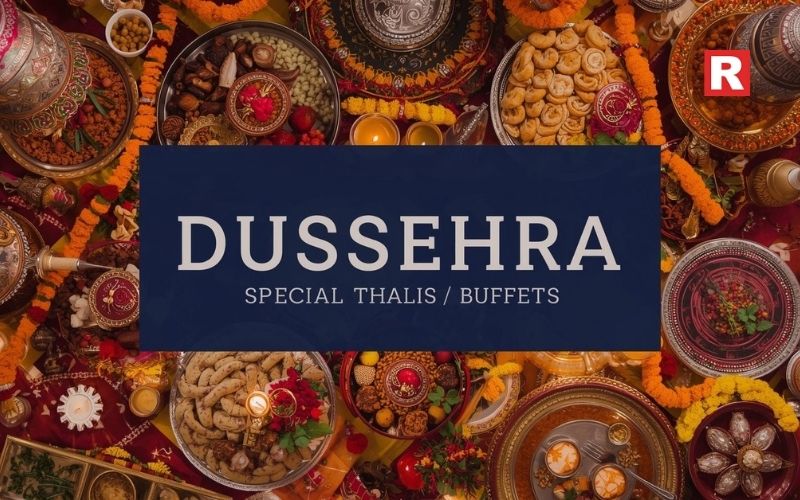
This is a traditional method of providing a full festive dining experience:
- Curated Multi-Course Meals: Create unique "Vijayadashami Grand Thalis" with a variety of celebratory dishes from different parts of the world, offering a varied taste experience.
- "Victory Feast Buffet": In larger restaurants, a lavish buffet could offer a greater variety of dishes, enabling customers to try a bit of each.
- Live Stations: Include live cooking stations to create festive favorites like crispy Chole Bhature, sizzling hot Jalebis, or a customized Dosa counter.
4. Ramlila / Durga Puja Themed Events
Think about adding cultural performances, depending on the size and location of your restaurant:
- Live (or Recorded) Performances: Plan brief live performances of Ramlila scenes, devotional music, or traditional folk dances (such as Garba/Dandiya if they overlap with the immediate aftermath of Navratri).
- Storytelling Sessions: Arrange entertaining storytelling sessions for families with kids that focus on the importance of Dussehra and the great story of the Ramayana.
- Collaborations: To provide your venue with genuine performances, team up with regional artists or cultural organizations.
5. Kids' Activities
Make your business a family-friendly location by providing entertainment for the younger customers:
- Face Painting: Provide face painting services, including figures such as Hanuman, Sita, Lord Rama, or even friendly demons.
- Craft Stations: Establish craft stations where kids can work on easy projects like decorating diyas, creating paper bows and arrows, or creating little Ravana figurines.
- Mini-Ramlila Play: For a genuinely unforgettable experience, encourage kids to take part in a shorter, simplified Ramlila play, maybe including costumes.
6. "Ravana Dahan" Themed Desserts / Drinks

Bring originality to your menu of food and drinks:
- Fiery Desserts: Make desserts with a "fiery" theme, such as a spiced apple crumble that looks like a blaze or a warm chocolate lava cake called "Ravana's Fire."
- Special Celebratory Sweets: Incorporate local delights unique to Dussehra in addition to standard sweets.
- Festive Drinks: Make festive drinks, such as "Vanar Sena Punch" or "Victory Nectar," which are non-alcoholic mocktails or cocktails made with traditional Indian tastes and brilliant colors.
7. Dussehra Bazaar / Pop-up Stalls
Convert a portion of your restaurant or your outside area into a miniature festive market:
- Local Artisans: Ask the local artisans to set up booths where they can offer handcrafted jewelry, traditional Indian attire, festive crafts, or unique regional delights.
- Collaborate with Small Businesses: Work together with small businesses to promote local artists, create a dynamic ambiance, and give your diners a unique shopping experience.
8. "Vijayadashami Pooja" & Blessings
Think about incorporating a spiritual element into restaurants that serve more traditional or religious customers:
- Symbolic Puja: Plan a little blessing ritual or symbolic puja (prayer ceremony) at a particular time on Dussehra.
- Offering Prasad: As a customary and kind gesture, give diners symbolic "Prasad" (blessed food offerings).
What's new: Top 10 Qualities of A Successful Restaurateur
Marketing & Promotion
To draw people in, even the most spectacular occasions require efficient marketing.
9. Early Bird Offers & Group Discounts
Recommend reservations in advance, particularly for bigger parties and families:
- "Dussehra Dhamaka" Early Bird: Give customers who book a week or two in advance a discount.
- Group Packages: Target family get-togethers by offering discounted rates for tables of six or more.
10. Digital & Social Media Blitz

Use internet channels to generate buzz:
- Visual Content: Post crisp images and recordings of your holiday décor, special menu items, and glimpses of your upcoming events.
- Countdown: Create a countdown to Dussehra on your social media platforms to generate excitement.
- Hashtag campaigns: Create original and interesting hashtags for your restaurant that are related to Dussehra.
- Contests: Host online competitions with rewards such as "Best Traditional Attire" or "Share Your Dussehra Memory" photo contests.
- Collaborate: To increase your exposure, team up with neighborhood food bloggers, lifestyle influencers, or community sites.
Check out: Celebrate Durga Puja in Style: Bringing Bengal’s Festive Spirit to Life
Essential Buffet Equipment for a Seamless Service
11. Traditional Media & Local Outreach
Remember the importance of local connections:
- Local Advertisements: Post ads in regional magazines or newspapers.
- Posters & fliers: Hand out fliers to local businesses, community centers, and residential areas.
- Partnerships: To cross-promote your Dussehra activities, work with nearby temples, cultural groups, or event planners.
Operational Excellence for the Festive Rush

A perfect execution guarantees regular business and customer satisfaction.
12. Staff Training & Logistics
Get your staff and operations ready for the holiday rush:
- Cultural Sensitivity: To better interact with and serve customers, train staff about the meaning of Dussehra, its traditions, and the specific menu items.
- Effective Service: Teach employees to process orders more quickly, turn tables quickly, and respond courteously to more inquiries from customers during the busiest holiday hours.
- Logistics: Make sure you have a sufficient supply of specific materials on hand, effectively handle reservations to avoid delays, and have backup plans in case something goes wrong.
Read this: Raise a Toast: Best Whiskies to Celebrate This Festive Season
Conclusion
Restaurants have a rare opportunity to establish a cultural and emotional connection with their community during Dussehra. Restaurant owners can turn their spaces into lively celebration centers by carefully incorporating festive décor, creating unique menus, planning captivating themed events, and putting strong marketing plans into action. It's all about crafting a genuine, happy, and unforgettable event that appeals to the spirit of triumph and unity, ultimately generating a sizable profit and developing a closer, more enduring bond with your valued customers. In the middle of the joyous celebration, embrace the Dussehra spirit and see how your restaurant shines.

There is no denying the appeal of buffet restaurants in India. For a set fee, customers can try several cuisines, choose from a wide variety of meals, and choose their portion sizes in this food playground. Families, business groups, and individuals seeking variety and value are among the many customers that the buffet concept serves, ranging from luxurious five-star meals to busy, reasonably priced restaurants. The "all-you-can-eat" idea appeals greatly to Indian diners, who frequently appreciate variety and sufficient portions on a single plate.
But opening a successful buffet restaurant in India is a difficult task that calls for careful preparation, a large financial investment, and a deep comprehension of the operational and culinary complexities. It takes more than just setting out a large amount of food; it also requires logistics expertise, hygienic practices, and the creation of a welcoming environment that promotes repeat business.
In order to provide a strong basis for long-term success, this article offers prospective restaurateurs a thorough guide that covers all the necessary procedures and factors to start a buffet restaurant in India, from concept to grand opening, along with afterward.
Why the Buffett Business Might Be Profitable in India
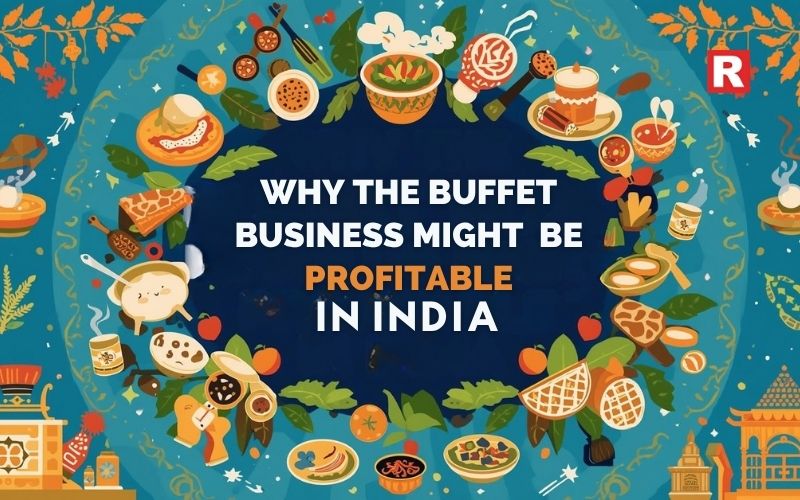
The buffet model has several strong benefits that are ideal for the market dynamics and attitude of Indian consumers:
- Value Perception and Volume: Paisa vasool, or value for money, is highly valued by Indian diners. Large families, parties, and business meetings are directly attracted to a fixed-price model with endless servings, which ensures high volume.
- Operational Efficiency: A buffet enables bulk cooking, in contrast to an independent restaurant, where the kitchen is always processing tiny, diverse orders. This greatly improves your cost of goods sold (COGS) management by cutting down on prep time, labor costs per plate, and enabling bulk ingredient purchases.
- Labor Cost Savings: Because a buffet is self-service, fewer serving workers are needed, which frees up manpower for distribution, floor cleaning, and refilling rather than table service.
- Beverage Upselling: Since the price of meals is set, high-margin items like water bottles, mocktails, and soft drinks are frequently what generate revenues because consumers always buy them.
Read more: Essential Buffet Equipment for a Seamless Service
Location Tips for a Buffet Restaurant

A buffet's enormous volume makes location an unavoidable consideration. Easy access and the capacity to accommodate large numbers of people are essential for a buffet to be effective.
- Proximity to Target Audience: Target locations should be close to major corporate offices (for lunch on weekdays), retail centers, or high-street commercial districts (for foot traffic on weekends).
- Space and Layout: Three crucial elements need to be included in a spacious, open floor plan.
- Buffet Line: Enough room to provide a smooth flow and avoid obstructions.
- Seating Area: Comfortable table-to-table space and plenty of seating.
- Parking: For the family and group customers, there must be enough easily accessible parking.
- Kitchen Dimensions: The back of the house needs to match the volume. Large storage (for buying in bulk), strong exhaust systems, and high-capacity equipment (such as walk-in coolers and enormous bhatis) are all necessary for a buffet kitchen.
The Legal Procedure – Mandatory Licenses and Documentation

In India, starting a food business requires a multi-step regulatory procedure that involves Central, State, and Municipal authorities. Following the rules for a buffet with a large capacity is a must.
What is the Legal Procedure?
The legal process involves obtaining several required permits that address public health, fire safety, commercial operation, and food safety.
Below are the important permits and licenses that are required to open your own buffet business.
FSSAI License
Issuing Authority: Food Safety and Standards Authority of India (FoSCoS Portal)
Purpose: Mandatory certification for food quality and hygiene.
Estimated Annual Govt. Fee (₹): ₹2,000 - ₹5,000 per year
Key Documents Required: ID proof of owner/partners, Proof of Premises (Rent/Lease Agreement), Layout plan, Food Safety Management Plan.
Health Trade License
Issuing Authority: Local Municipal Corporation (e.g., MCD, BMC, GHMC)
Purpose: Certifies the premises meet health and sanitary standards.
Estimated Annual Govt. Fee (₹): ₹10,000 - ₹50,000 (Varies by seating capacity)
Key Documents Required: Site plan, Ownership proof, Water quality report, Medical certificates of staff, Sewer connection proof.
Shop & Establishment Act Registration
Issuing Authority: State's Labour Department
Purpose: Mandatory for commercial operations (regulating working hours, holidays).
Fire Safety NOC
Issuing Authority: Chief Fire Officer/Local Fire Department
Purpose: Certifies that the building and kitchen are compliant with fire safety norms.
Estimated Annual Govt. Fee (₹): ₹0 (New application) to ₹2,500 (Annual renewal)
Key Documents Required: Building structure stability certificate, Floor plan/Layout showing fire safety measures.
Eating House License
Issuing Authority: Commissioner of Police/Local Police Headquarters
Purpose: Required for places where food/drinks are consumed on the premises.
Estimated Annual Govt. Fee (₹): ₹5,000 - ₹25,000 (Varies by state)
Key Documents Required: FSSAI License copy, Trade License copy, CCTV installation affidavit, and Site plan.
GST Registration
Issuing Authority: Central/State Tax Authorities
Purpose: Mandatory for turnover above prescribed thresholds (usually ₹20 lakhs).
Estimated Annual Govt. Fee (₹): ₹0 (Official registration fee)
Key Documents Required: PAN Card, Aadhaar Card, Business registration proof, Bank account details.
Music License (PPL/IPRS)
Issuing Authority: Phonographic Performance Ltd./Indian Performing Rights Society
Purpose: Required for playing background music/live performances.
Know more: 7 Tips to Maximise Sales in Your Restaurant
The Application Process and Timeline
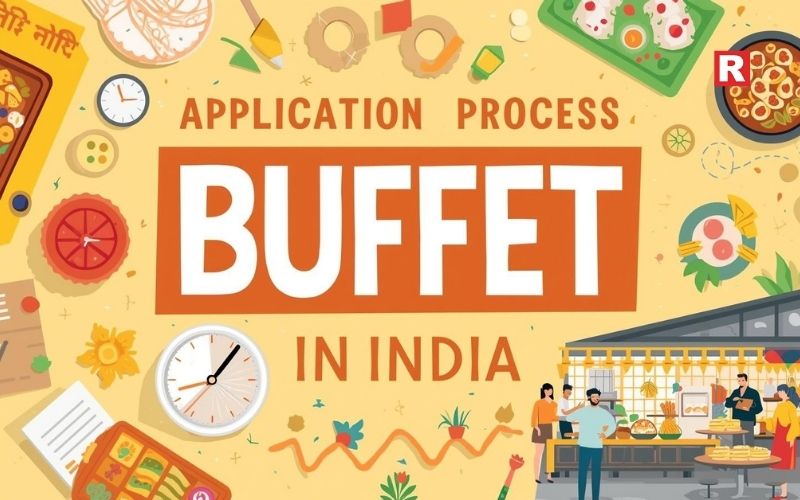
Pre-opening expenditures can be reduced by effectively navigating the application procedure.
Application Process: Focus on FSSAI
The basis for all other licenses is the Food Safety and Standards Authority of India (FSSAI) license.
- Identify the Category: You would most likely require the FSSAI State License (turnover between ₹12 lakh and ₹20 crore) or the FSSAI Central License (turnover over ₹20 crore or operating in several states) for a mid-to-large buffet restaurant.
- Online Registration: The Food Safety Compliance System (FoSCoS) site (foscos.fssai.gov.in) is where all applications are uploaded.
- Submission of Form B: Complete and send in the full application form (Form B) along with all necessary attachments, such as the Food Safety Management System (FSMS) plan, which describes your procedures for temperature control and buffet hygiene.
How to Submit the Application
All submissions must be made online using the FoSCoS portal:
- Sign Up & Login: Register for a FoSCoS portal account.
- Choose Kind of Business (KoB): Depending on your main business, select "Food Services" followed by "Restaurant" or "Catering."
- Complete Form B: Enter the location address, projected turnover, and business/owner data.
- Upload Documents: Provide PDF versions of all required documents, including layout, ID proofs, and proof of premises.
- Fee Payment: Use the gateway to make an online payment for the relevant government fees.
What's new: Why the Buffet is the Perfect Meal for Corporate Events
Time Process for the Application to be Expected

The licensing procedure is frequently unpredictable and long. Therefore, starting early is important.
FSSAI License
Expected Time Process: 30 to 60 days
Key Activity: Officer inspection is mandatory; requires compliance with all hygiene directives.
Municipal Trade/Health License
Expected Time Process: 15 to 45 days
Key Activity: Local inspector visit for verification of sanitation and waste disposal.
Fire Safety NOC
Expected Time Process: 45 to 60 days
Key Activity: Detailed building and equipment check; can be a major source of delay.
Overall Pre-Opening Compliance
Expected Time Process: Minimum 2 to 3 Months
Key Activity: Total time to get all non-liquor licenses. Liquor licenses can take 3 to 6 months.
Important Timeline Note: The licensing authority has a window to raise questions following submission (e.g., 7 days for Basic, 15 days for State/Central). Your application can be denied if you don't provide the necessary information in response to these questions within the time limit specified, which is typically 30 days.
Key Steps to Open Your Buffet Restaurant (After Licensing)
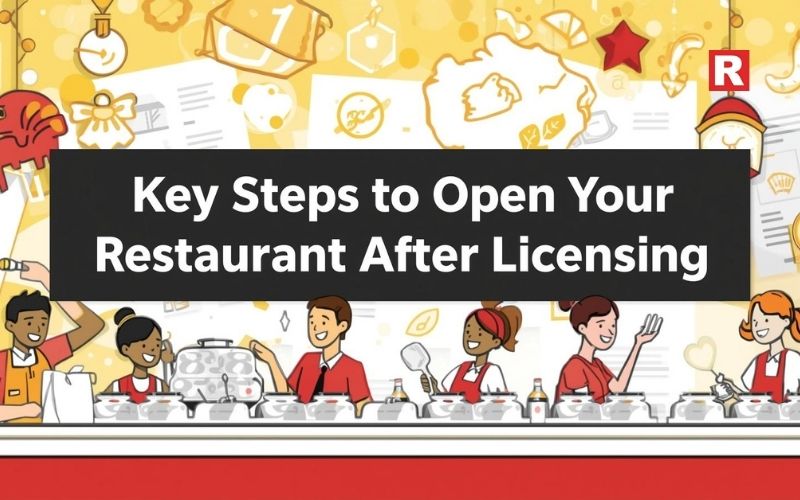
1. Physical Infrastructure and Setup
- Kitchen Installation: Set up all required commercial-grade kitchen appliances, paying particular attention to their capacities for large-scale cooking and preparation.
- Buffet Line Setup: Set up the special buffet counter with chafing dishes for hot food, cold wells for cold food, and sneeze barriers for protection.
- Dining Area Furnishings: Set up tables and chairs to make the most of your floor area and seating capacity while guaranteeing that customers can walk about comfortably.
2. Menu Planning and Sourcing
- Menu Finalization: To control expenses and improve customer satisfaction, design a well-balanced menu that includes a thoughtful combination of high-profit products (carbs, sides) and premium goods (proteins).
- Vendor Contracts: To guarantee constant quality and quantity, negotiate and execute trustworthy supply contracts for all raw materials (fresh produce, meat, and dry items).
- Inventory Control System: To preserve profit margins, put in place a system (software or manual) for keeping track of supplies, keeping an eye on food consumption, and reducing waste.
3. Staffing and Operations
- Recruitment: Employ the whole operational staff, which includes the cooks, dishwashers, and committed floor workers in charge of keeping the buffet line stocked and running smoothly.
- Hygiene & Safety Training: Provide all kitchen and floor staff with the required training on food safety, temperature control, and FSSAI hygiene requirements.
- Service Protocols (SOPs): Clearly define SOPs for table clearance, customer flow, and effectively handling peak hours.
4. Technology and Launch
- POS System: Installing and configuring the Point-of-Sale (POS) system is necessary for integrated inventory tracking and quick billing.
- First Stock Purchase: Place the first sizable purchase for all cleaning supplies, crockery, cutlery, beverages, and meal ingredients.
- Marketing Strategy: To promote the grand opening and draw in the first clients, create and implement a local marketing strategy (both online and offline).
Check out: Top 10 Qualities of A Successful Restaurateur
5 Unique Theme Ideas That Make Your Restaurant Stand Out
Challenges and the Path to Success

High Food Waste: The fundamental danger associated with the buffet model is the inherent food waste, which is frequently estimated to be between 40 and 50 percent in the sector. Customers overindulge, and for safety, food must be thrown out after a certain amount of time (often two to four hours).
Solution: Use "live counters" for fresh, regulated quantities (e.g., pasta, dosas, grills), employ specific waste management techniques, and use reduced batch sizes for expensive goods.
Regulatory Obstacles and Delays: The largest time waster is organizing inspections from several agencies (FSSAI, Health, Fire, and Police). Opening can be postponed by weeks due to a single missing document or a failed inspection.
Solution: Employ a corporate attorney or specialist consultant with extensive knowledge of hospitality licensing in India to oversee the procedure and ensure that all paperwork is submitted accurately the first time.
Maintaining Buffet Quality and Consistency: To maintain buffet quality and consistency, it is always difficult to keep food hot (above 60 °C or 140°F) and cold (below 5 °C or 41°F) for long periods of time. This is essential to preserving quality and preventing foodborne disease.
Solution: The best solution is to make significant investments in long-lasting, high-quality chafing dishes, under-counter refrigeration, and necessary recorded temperature checks every two hours (per FSSAI requirements).
Staffing and Training: Because they frequently handle a large number of customers, buffet employees need to be specialists in food replenishment, hygiene, and subtle customer service.
Solution: Create strict SOPs for the buffet line that emphasize rapid utensil change, jootha prevention (contamination management), and table cleaning in less than 30 seconds.
Read this: The Importance of a High-Quality Knife Set For Restaurants
Mastering the Buffet for Sustainable Growth
Establishing a buffet restaurant in India is a business that combines the skills of supply chain management and legal obligations with the love of cooking. A well-defined, high-volume concept, a well-chosen site, and the perfect execution of legal processes are all necessary for success.
You may overcome the obstacles by giving the FSSAI License and any municipal permissions top priority early on, making operational technology investments to reduce waste, and creating a menu that is best suited for batch production. In the end, the fixed-price buffet model is an effective way to provide outstanding value, volume, and long-term profitability in the vibrant and constantly expanding Indian market.

Every aspect of a corporate event, from the opening address to the coffee break, is a deliberate strategic tool intended to accomplish particular goals: promoting client loyalty, enhancing teamwork, or expressing an interest in employee well-being. This is especially true in India's highly competitive and quickly changing business ecosystem. In this complex structure, the meal format selection goes beyond providing basic nourishment and becomes a crucial component of the event's overall success criteria. It is quite difficult to choose an eating style that is effective, inclusive, and networking-friendly in a nation known for its unmatched regional and cultural variety.
The buffet emerges as the definitive, ideal culinary solution for the vast majority of Indian corporate gatherings, from high-stakes conferences to large-scale training sessions. In addition to being an economical solution, the buffet format is a potent logistical and cultural answer that is especially well-suited to the size, variety, and fast-paced nature of the Indian business sector. This arrangement effectively manages the complexities of dietary classification while fostering the professional connection that characterizes business gatherings.
This article discusses the corporate buffet's structure, best practices for implementing it, and the significant strategic benefits that make it the go-to lunch style in India's modern business world.
Read more: Essential Buffet Equipment for a Seamless Service
What is a Buffet for Corporate Events?

Within the corporate setting, the buffet is a self-service, professional, large-scale catering arrangement. It is made to accommodate both diversity and volume, guaranteeing that each visitor is satisfied and served effectively. It transforms the traditional eating arrangement from one of strict service to one that is tailored to the individual.
A modern corporate buffet in India typically includes:
- Several Themed Stations: Different counters serving international/fusion, North Indian, and South Indian cuisine, sometimes marked with dietary restrictions.
- Temperature Control: To ensure food safety and quality, which is crucial for hot Indian cuisine, rely on premium chafing dishes and induction equipment.
- Live Culinary Counters: Interactive stations that provide freshly prepared food and give the meal a more immersive experience, such as chaat, dosa, or bespoke grills.
Because of the fundamental ideas of flow and customization, the lunch serves as a purposeful break in the schedule that advances rather than detracts from the objectives of the gathering.
Know more: 7 Tips to Maximise Sales in Your Restaurant
Types of Corporate Buffets
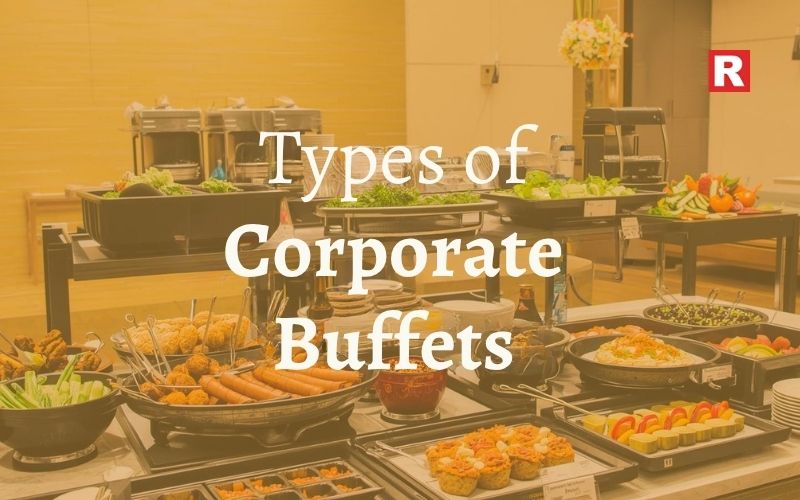
Indian corporate catering has advanced beyond the traditional spread to provide customized buffet layouts that closely match the scheduling and goals of events:
- The Full-Service Executive Buffet: This is the best option for large gatherings since it offers a wide range of options (such as more than five main dishes), several cooking areas, and sophisticated live counters. Ideal for: major conferences, client dinners, and AGMs.
- The Working Lunch Buffet (Express Buffet): The Express Buffet, also known as the Working Lunch Buffet, is a simplified, time-efficient menu with an emphasis on quick-service, simple-to-eat items, including light wraps, single-bowl meals, and desserts that are already portioned. Ideal for: Time-bound meetings, training sessions, and workshops.
- The Fusion or Thematic Buffet: A menu designed around a particular theme (such as Mediterranean, Coastal Seafood, or Indian Street Food) to produce a distinctive experience that supports the event's target market or brand. Ideal for: Brand-building events, international delegations, and product launches.
- High-Tea Buffet: A more casual, frequently mid-afternoon meal that emphasizes a premium beverage selection while offering a well-balanced variety of light savory snacks (pakoras, small sandwiches) and sweets (jalebi, pastries). Ideal for: Post-event networking and client meet-and-greets.
What's new: Top 10 Qualities of A Successful Restaurateur
Reasons Buffets are the Perfect Choice for Corporate Events
The buffet format's sustained appeal in the Indian corporate MICE (Meetings, Incentives, Conferences, and Exhibitions) market is evidence of its overall success in four crucial areas.
1. Unmatched Cultural and Dietary Inclusion

One menu is an issue in a workforce as diverse as India's, with guests from various geographic locations, different religious beliefs, and an increasing number of health-conscious people. Due to its ability to simultaneously showcase different culinary cultures and key nutritional approaches in unique ways, the buffet is the ultimate promoter of diversity.
- Navigating Regionality: By making sure the menu includes a variety of staples ranging from the rich, butter-laden curries of the North to the lighter, tangier versions of the South and West, the format skillfully achieves regional harmony. Every guest is certain to discover a comfortable and familiar choice thanks to this essential diversity.
- The Assurance of Separation: Most importantly, the buffet makes it easier to physically separate vegetarian and non-vegetarian counters, which is frequently a cultural need that cannot be negotiated in Indian social and business contexts. Additionally, the burden of adherence is transferred from the planner to the visitor by offering separate, clearly marked stations for modern dietary requirements (such as Jain, vegan, and gluten-free alternatives). This ability communicates a strong message of respect and thoughtfulness that is crucial for modern employee and client interactions, removing the social discomfort or health risks associated with inflexible service.
2. Maximizing Networking and Interaction

The level of professional engagement is an essential marker of the success of any business event. The buffet concept transforms the lunch break into a lively, social extension of the main event by subtly and aggressively encouraging discussion and easy mobility.
- Breaking the Seating Constraint: Visitors are not restricted to a single group or pre-assigned seats. Micro-networking opportunities naturally arise from the ordered movement required to choose a table, choose meals, and go through the serving line. Strong, non-intrusive icebreakers are short, low-pressure exchanges, such as a mutual choice to eat a dessert, a brief welcome while waiting for a live chaat counter, or a shared comment about a new dish.
- Encouraging Fluidity: Delegates have the option to sit with one group for the appetizer meal and then join another group for coffee, increasing their exposure to a variety of coworkers, connections across departments, or possible clients. The buffet style immediately improves the return on the networking expenditure, which is the main objective of the majority of business events, by turning the meal into a self-paced, sociable activity.
Check out: Beyond Toast: 10 Deliciously Easy Bread-Based Snacks
5 Unique Theme Ideas That Make Your Restaurant Stand Out
3. Logistical Superiority and Scalability
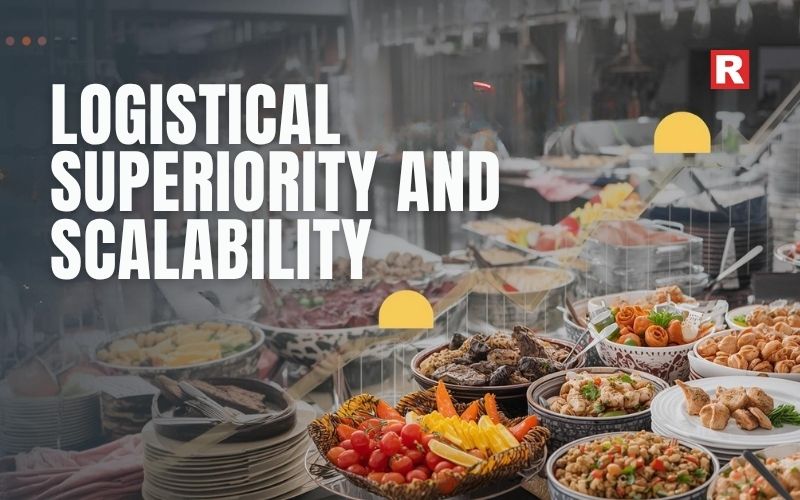
In Indian business events (town halls, yearly sales meetings, etc.), catering for the typically enormous number of attendees is often more logistically demanding than elegant, high-touch services can handle. A reliable and highly scalable solution designed for efficiency and volume is provided by the buffet.
- Fast Flow and Throughput: A buffet delivers a far faster service rate than a plated dinner, provided it is set up correctly with several well-positioned serving lines (preferably one full line for every 100–150 customers). For events with strict time limits, this efficiency is essential since it guarantees that the lunch break is finished on time and that the scheduled program is followed.
- Controlling the Planning Variable: The buffet's bulk preparation strategy provides essential flexibility in handling the inescapable last-minute RSVP variations, which are a common problem in corporate event planning. Managing a controlled over-production volume (which may be securely reused) is less wasteful and logistically easier than running the risk of financial loss and service turmoil due to either too many or too few fixed plated pieces. The buffet is the safer and more reliable operating option because of its built-in logistical flexibility.
4. Predictable Cost Control and Efficiency

The buffet offers a more visible and controllable cost structure from the standpoint of finance and purchases, demonstrating that plenty need not translate into inconsistent spending.
- Simplifying Budgeting: By removing the variable expenses and hidden complexity associated with multi-course plated menus, the standard set all-inclusive per-head pricing for a buffet simplifies the budgeting process. The corporate financial and administrative departments place a great priority on this transparency.
- Optimized Resource Allocation: The buffet relies on fewer attendants for upkeep and flow control, whereas plated service needs a large proportion of highly compensated front-of-house staff members for synchronized distribution. Significant labor cost savings result from the reduced need for specialist front-end labor.
- Cost-to-Volume Ratio: Although food waste needs to be regularly controlled, the buffet's overall financial plan frequently results in a lower cost-to-consumed-volume ratio. Additionally, a well-run buffet offers a better financial result overall than the expense of unsold or unconsumed set-plated portions since it enables smart inventory control and the ethical recycling of safe, undisturbed extra food (e.g., for staff lunches).
Read this: 7 Easy Rice Paper Recipes for Quick & Healthy Meals
How to Organise a Perfect Buffet for a Corporate
Planning a genuinely professional buffet involves more than simply arranging the food; it also involves using creative layouts to engineer the visitor experience:
- Strategic Menu Design: Use a 60:40 vegetarian/non-vegetarian ratio. Make sure each dish has big, clear labels that list all of the ingredients and allergies.
- Flow Layout: To avoid lines, create a serving area with several parallel lines, one for every 100 visitors. To spread traffic, place in-demand products (such as live Dosa counters) a little bit distant from the main lines.
- Service Protocol: To minimize the amount of food exposed at any given moment, use shallower chafing dishes and smaller serving utensils. Assign specialized Buffet Stewards to oversee the phased, just-in-time kitchen replenishment, listen to inquiries, and keep an eye on traffic.
The Unmatched Power of the Corporate Buffet
In India, modern business events require a meal option that is both aesthetically pleasing and strategically smart. The ideal combination of operational information and culinary aid is the buffet concept. It functions as a social catalyst for networking, delivers the financial stability and logistical efficiency essential for large-scale commercial operations, and provides the inclusiveness required for India's varied corporate culture. Event planners who are skilled at executing a well-planned buffet go beyond simply providing food for their guests; they create a dining experience that actively advances the goals of their event, demonstrates their company's value for each guest, and establishes a benchmark for smooth, contemporary Indian hospitality.

For many years, the buffet has been the mainstay of lavish Indian hospitality, representing ample diversity and the giving nature of a host. The buffet line's visual spread conveys size and diversity, from the sumptuous wedding feasts that shape cultural memory to the large business conference meals that drive India's thriving MICE (Meetings, Incentives, Conferences and Exhibitions) industry. Nonetheless, the typical, set-price buffet model is hitting a barrier on perceived luxury and profitability in the quickly changing 21st-century environment, where increased disposable incomes and worldwide exposure have fueled the desire for customized, individualized experiences.
Whether they're a business delegate, a wedding guest, or a high-end leisure traveler, today's demanding Indian customer wants an experience catered to their unique dietary requirements, status, and palate rather than merely selecting from a buffet. The Personalized Hybrid Buffet is a ground-breaking possibility for the hospitality industry brought about by this growing need. À La Carte Add-ons are strategically introduced to accomplish this concept.
This strategy combines the uniqueness, accuracy, and perceived value of a customized dish with the logistical efficiency and fundamental diversity of a typical buffet. It is the intricate transition from mass catering to mass customisation. This article examines the strong reasons why this hybrid model is not only a trend but rather the next big strategic pillar for generating F&B income, differentiating brands, and attaining unmatched guest pleasure in the premium sector of India's vibrant hospitality business.
Read more: Essential Buffet Equipment for a Seamless Service
The Buffet Challenge: Commoditization vs. Customization
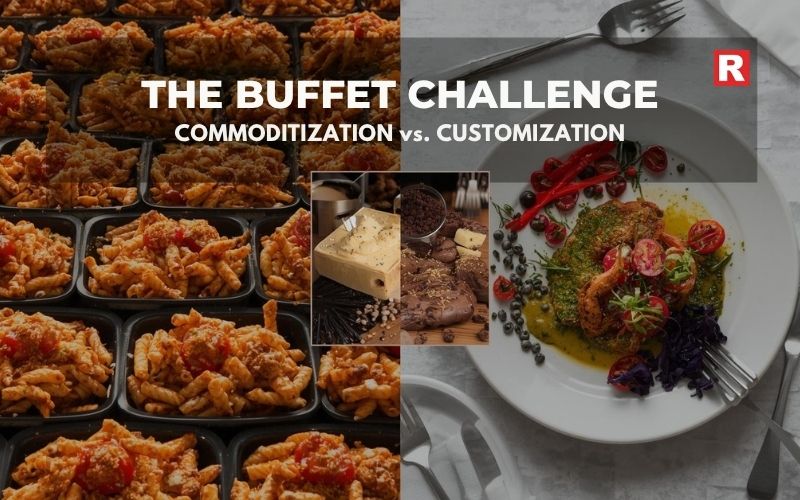
Commoditization and a lack of high-touch customization are two major, interconnected issues that the traditional buffet suffers in the premium market, despite its logistical advantages.
The traditional "all-you-can-eat" arrangement, which was once a symbol of unmatched luxury, today frequently finds it difficult to support a high pricing point. Instead of exclusivity, guests link the set, upfront payment with volume. Expensive hotels and caterers run the risk of being judged only on the quantity of food they provide, disregarding their investment in fine ingredients and culinary creativity.
The buffet model's limits clash directly with the modern consumer's expectation of tailored service, and the À La Carte Add-on is the exact tool designed to break through this ceiling, reintroducing rarity, service, and exclusivity to the abundant buffet experience. Additionally, although the buffet offers choice (variety), it rarely offers true customization. It can separate vegetarian from non-vegetarian, but it cannot elegantly accommodate the demand for a certified, allergen-free meal or a specific, ultra-premium ingredient.
What Constitutes a Premium À La Carte Add-on?
In contrast to the self-service buffet spread, an add-on is a carefully chosen food or service that is prepared à la minute and served directly to the table, all for a premium price. Among the examples are:
- Signature Proteins: Slow-cooked Champaran Gosht made in a particular regional way, imported Atlantic salmon, or pan-seared jumbo prawns.
- Artisanal and Live Concepts: Hand-rolled, customized Saffron Naans, tableside molecular gastronomy desserts, or truffle-infused Gucchi Galouti Kebab are examples of artisanal and live concepts.
- Bespoke Beverage Pairings: Premium foreign wine choices, exclusive single-malt whiskey flights, or specially made artisanal cocktails matched to the main buffet meals are examples of customized beverage pairings.
Know more: 7 Easy Rice Paper Recipes for Quick & Healthy Meals
Pillar 1: Elevating Perceived Value and Driving Premiumisation
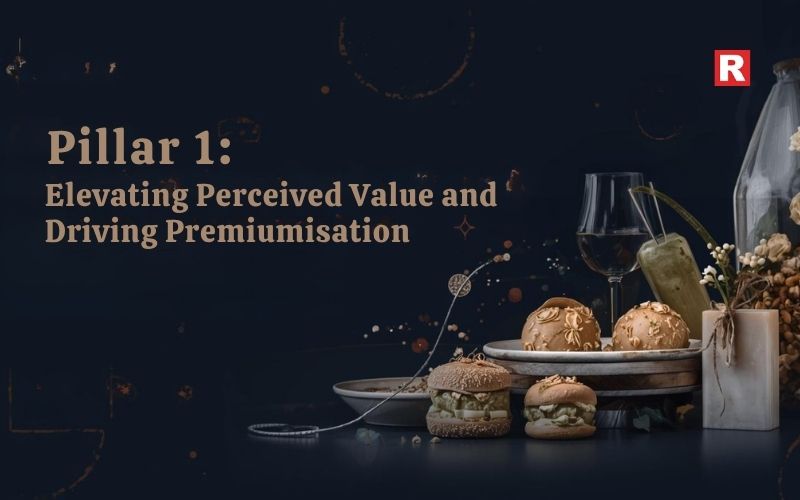
The hybrid model's capacity to instantly increase the buffet's perceived elegance and add a significant new income stream is its main strategic advantage.
A. The 'Curated Extra' as a Value Differentiator
With this addition, the visitor experience is immediately changed from "self-service volume" to "curated premium access." The psychological effect of having a plated, chef-finished dish brought to the table while others are navigating the buffet creates a moment of specialized attention and a visible status symbol.
This service element drastically changes the guest's mental assessment of the buffet's value. The fact that it is optional shows confidence: the hotel is aware that its main buffet is great, but it offers further personalization for individuals who want true exclusivity. The presence of the ultra-premium alternatives validates the host's (the hotel or the event planner) claim of a higher premium pricing point for the standard buffet itself.
B. Revenue Uplift and Controlled Costing
By implementing high-margin, incremental sales, this model directly solves the fixed-revenue limitations found in traditional buffets.
Premium Pricing Strategy: To make the most of the captive audience, add-ons might be priced competitively with the hotel's current menus for upscale restaurants. While the core buffet continues to consume the majority of the kitchen's output, a carefully selected, high-margin item can provide large incremental income with no related labor expenditures.
Waste Minimization and Inventory Control: The massive waste produced by serving expensive, perishable foods (such as specialized cheeses, foreign meats, or delicate seafood) in large quantities is one of the main inefficiencies of the traditional buffet. Making these delicate ingredients available on the à la carte menu forces production to be "cook-to-order." By guaranteeing that expensive materials are only utilized when paid for by a paying customer, this significantly reduces exposure to waste, theft, and overproduction, reducing food expenses and significantly increasing total margin.
Pillar 2: Catering to Hyper-Personalization and Dietary Precision
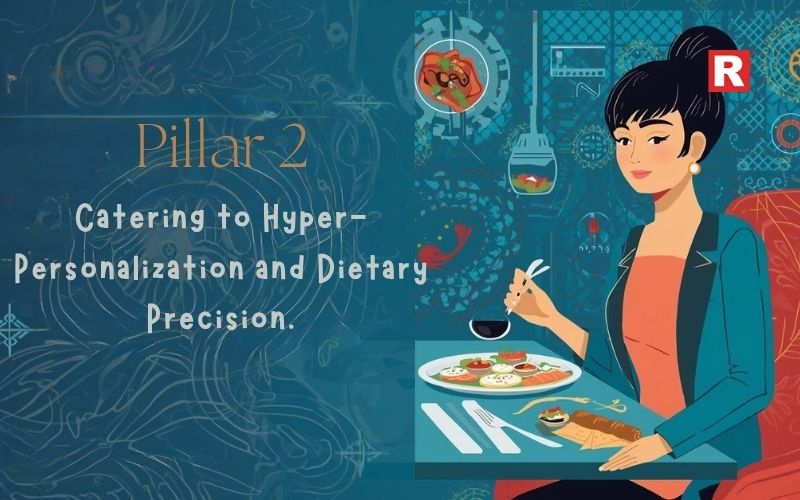
The modern Indian diner expects not just variety but also quality in their meal. The traditional buffet offers diversity, but because it is mass-produced, it frequently falls short at high levels of customization. À La Carte Add-ons perfectly fill this need.
A. Addressing Specific Dietary Requirements with Elegance
Even while the buffet can effectively separate vegetarian from non-vegetarian food, it is still difficult and risky to properly accommodate certain medical conditions, severe allergies, or specialized religious diets (such as strict veganism, ultra-pure Jainism, or severe nut allergies) in a large setting.
Certified Diet Solutions: Licensed, well-prepared foods may be included in the add-on menu. To prevent cross-contamination, a visitor with celiac disease, for example, might request a "Guaranteed Gluten-Free Indian Bread Selection," which is made completely in a separate, designated part of the kitchen. In addition to providing a safer dinner, this raises the bar for professionalism, care, and liability management in the service.
Controlled Indulgence: The extras serve the expanding market of customers who are interested in fitness or health. A "Macro-calculated Grilled Protein Platter" or a "Zero-Sugar, Stevia-Sweetened Indian Dessert," both of which have calorie counts, are examples of carefully weighed, nutrient-dense alternatives that can be included on the menu. This feature turns the meal into a controlled, customized enjoyment rather than a possible nutritional compromise.
What's new: 7 Tips to Maximise Sales in Your Restaurant
B. The Experiential Touch of Culinary Storytelling
The à la carte feature enables the serving of food items that need prompt, focused attention and tell a particular, high-end storyline that cannot be communicated by a huge chafing dish.
Elevated Culinary Theatre: The extras can be prepared in a special, upscale finishing station in addition to the typical live station. This might be the molecular construction of a dessert at the table or the custom preparation of a fish meal in the Keralan tradition, with a tarka applied only before serving. The evident elegance is greatly increased by this kind of theater.
The Chef's Special: By showcasing a unique dish, either an item too complex or costly to mass-produce or the Executive Chef can transform the add-on into a marketing statement that sets the restaurant apart with its culinary talent and philosophy.
Pillar 3: Optimizing Corporate and MICE Event Profitability

The hybrid model is a game-changing tool for package differentiation and profit maximization in the huge Indian MICE industry, which is the heart of hotel banquets income.
A. Tiered Event Packages and VIP Customization
The difficulty for corporate customers (event planners) is to impress or reward important stakeholders (CXOs, foreign delegations) without drastically raising the price for more than 500 guests. The ideal option for tiered event packages is offered by the add-on menu.
Platinum Upgrades: The "Executive Add-on Package" is available to the organizer for the top five tables or the 20 most significant customers, but the basic buffet pricing has been determined for the remainder. This enables a high-value, discreet upgrade (such as a special VIP counter, personalized wine service, or a variety of imported cold cuts brought to their tables) that gives the most important attendees a great sense of value and personalization without going over the event budget.
Making Money from Sponsorship: The corporate customer can purchase the specialized add-on station as a "Premium Branding Opportunity." By branding a "Live Dessert and Premium Coffee Bar" with the client's logo, for example, a simple F&B cost may be transformed into a sponsored, high-visibility component that generates a direct, high-margin income stream from the event client itself.
B. Flawless Execution for High-Stakes Gatherings
High-profile business gatherings require perfection. It is an essential operational buffer that the hybrid approach offers. While the smaller, specialized à la carte staff is in charge of immaculate, exact execution of the high-end, impactful items, the standardized buffet guarantees volume and speed. The primary meal flow is less likely to be impacted by a high-value mistake because of this division. It is a calculated division of labor that guarantees a successful, excellent result throughout the event.
Check out: Top 10 Qualities of A Successful Restaurateur
Beyond Toast: 10 Deliciously Easy Bread-Based Snacks
Pillar 4: The Technology Enabler and Future of Data Collection

Modern digital technology has an unbreakable link to the effective implementation of the hybrid model, which completely transforms kitchen operations from an instinct-based art to a data-driven science.
A. Seamless Digital Ordering and Service Flow
Digital alternatives like table-based QR code menus and specialized smartphone applications for ordering add-ons will eventually replace cumbersome, sluggish paper menus.
Improved Visitor Experience: Visitors can place orders, view high-resolution photos, and even pay online. By removing waiter bottlenecks, this procedure guarantees a quick, elegant, and self-directed visitor experience.
Kitchen Integration: The committed à la carte preparation staff receives digital orders instantly. This makes it possible to set clear, accurate deadlines, reduce delivery wait times, and guarantee that the fundamental goal of quick, "served-to-the-table" efficiency is fulfilled.
B. Data-Driven Menu Refinement and Predictive Modeling
Each add-on purchase serves as a vital source of market data, giving real-time insight into the actual demand for high-end, specialized products from customers.
Menu Optimization: The computerized platform keeps track of which expensive goods are actually liked (for example, the international cheese platter doesn't sell out, while the truffle galouti does). Managers can use this data to improve future add-on menus, maximize buying, and guide core buffet selections, transforming the kitchen from an amateur's hunch to precise science.
Dynamic Pricing: Long-term features like dynamic pricing for specific goods are made possible by technology. These features maximize profitability in real-time by modifying prices according to factors like peak demand periods, ingredient spoiling risk, and current occupancy.
Read this: The Importance of a High-Quality Knife Set For Restaurants
Conclusion
Even though the traditional Indian buffet is a symbol of warm hospitality, it needs a smart update to satisfy the needs of today's internationally connected customer.
With this hybrid arrangement, caterers and upscale hotels can maintain exclusivity while managing growth. Establishments can immediately improve perceived value, get previously unattainable nutritional accuracy, open up new corporate income streams, and take advantage of data-driven growth by using carefully chosen, made-to-order components. This development transforms the buffet into a high-end, customized eating experience from a high-volume demand. The customized hybrid buffet is not only a trend for the Indian hospitality industry; rather, it is the strategic new standard for efficiency and elegance in the years to come.

There is nothing like the charm of a well-prepared buffet in India. It's a culinary festival, a lively "food mela" where customers are encouraged to create their own eating adventure by sampling a wide range of regional flavors, fragrant spices, and varied textures. A successful buffet service is a monument to 'atithi devo bhava' (the guest is God) and a masterclass in operational skill and unmatched customer pleasure for the smart Indian restaurateur. However, beneath the seeming ease of such a lavish spread is a carefully planned system of specialized equipment, each of which is essential to guaranteeing that every pakora stays crispy, every paneer dish stays warm, every salad is perfectly fresh, and every customer has a smooth, enjoyable experience.
Imagine, if you will, the disappointment of a guest at a corporate lunch buffet or wedding reception when the hot biryani becomes lukewarm, the fresh raita becomes cold, or the excited guests create an unanticipated queue. For any business owner, these situations are a direct hit to their reputation and a surefire way to experience operational difficulties. A good Indian buffet involves more than just serving a lot of food; it is intrinsically linked to the cuisine's careful preparation, accurate temperature control, and sophisticated service. This detailed article is not just a list of equipment; it is a strategic guide for the essential buffet equipment that transforms possible chaos into elegant beauty.
Read more: 7 Easy Rice Paper Recipes for Quick & Healthy Meals
Maintaining Ideal Food Temperatures

The ability to keep each traditional dish at the ideal, secure, and delicious temperature is the foundation of any great Indian buffet. This is not only a question of taste; it is also a vital component of food safety, health regulations, and, most importantly, customer pleasure, particularly in India's diverse climatic conditions.
1. Chafing Dishes: The Guardians of Warmth
The foundation of the hot buffet line is chafing dishes, which are meant to maintain popular Indian meals at a steady, secure temperature, usually higher than 60°C (140°F).
- Purpose: Their major responsibility is to make sure that hot foods, such as aromatic biryanis, toasty parathas, and rich curries like butter chicken and dal bukhara, stay delectably warm without drying out or overcooking. This is crucial for stopping the growth of bacteria and maintaining the real texture and flavor of the meal.
- Types: There is a great deal of diversity in modern chafing dishes. Roll-top covers are convenient and effectively retain heat, whilst lift-off covers are easier to handle. Many options include more modern electric and induction-ready types that provide exact temperature control and a flame-free environment, improving safety, energy economy, and overall ambiance in a busy location, or more conventional fuel-filled heated devices (using chafing fuel or spirit lights).
- Key Considerations: Stainless steel structure is essential for hygienic regulations, longevity, and simplicity of cleaning. To accommodate diverse Indian meal kinds, take into account different shapes and sizes (round for gravies, rectangular for dry veggies or rice). The entire visual attractiveness of your restaurant should be enhanced by the aesthetic design, which could include sleek modern finishes or historic themes.
2. Food Warmers / Heat Lamps: Precision Holding
In addition to chafing dishes' broad warmth, certain foods, particularly cut meats or live counter preparations, frequently need focused temperature management.
- Purpose: By adding extra heat, these devices guarantee that foods like newly prepared tawa sabzis, tender tandoori kebabs after they've been carved, or temporarily stored, plated appetizers keep their perfect temperature without sacrificing quality.
- Types: A serving area is softly and radiantly warmed by overhead heat lights. Large banquets frequently have heated carving stations that combine overhead lighting and a heated base. For storing smaller side dishes, breads, or sauces, such as a basket of warm garlic naan, countertop food warmers are perfect.
- Key Considerations: In order to avoid cold patches and guarantee constant quality, even heat distribution is essential. Protective guards and other safety precautions are crucial, especially in self-service Indian buffet setups.
Know more: 7 Tips to Maximise Sales in Your Restaurant
3. Induction Cooktops / Warming Plates: Modern Efficiency
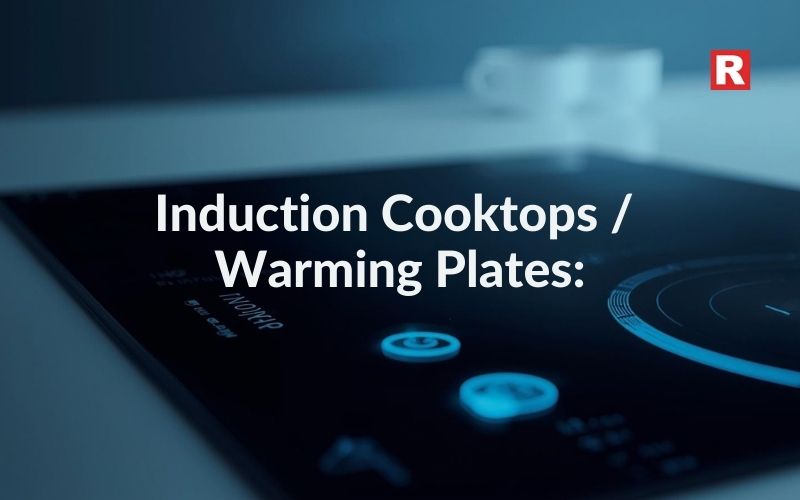
Induction technology provides a number of benefits for a smart and energy-efficient buffet heating method that complements current kitchen styles.
- Purpose: The devices' purpose is to precisely and flamelessly heat pots and pans used on the buffet line, such a live pasta or noodle stations, or induction-compatible chafing dishes.
- Benefits: The controlled heat effectively maintains constant temperatures and avoids burning, which is common with open flames. They use less energy, are safer by nature (no hot fuel or exposed flame), and add to a sleek, modern look that picky customers like.
- Why Essential: They provide a high-end solution for better temperature control and more operational security, enhancing the elegance and effectiveness of your buffet arrangement, particularly in luxurious or busy settings.
4. Refrigerated Display Units / Cold Wells: Preserving Freshness
Making sure cold food stays precisely chilled and appealing is just as vital as keeping hot food hot. In India's climate, this is especially crucial for dishes like salads, raitas, and sweets.
The crispness and freshness of foods like kachumber salads, boondi raita, fresh fruit platters, chaat ingredients, and delicate Indian desserts, such as rasmalai or gulab jamun with rabri, are all preserved by these machines. They maintain these things at safe temperatures, which are usually lower than 41°F or 5°C.
- Types: Drop-in cold wells provide a countertop with a sleek appearance by blending in perfectly. For smaller buffets, countertop cold displays allow versatility. Refrigerated salad bars provide self-service by combining display and built-in cooling.
- Key Considerations: It's critical to cool the unit regularly and equally. Guests can view the fresh items, and the attractiveness is increased when there is clear visibility through glass or acrylic coverings. To control condensation, proper drainage is crucial, especially in humid environments.
- Why Essential: They are essential for keeping cold foods fresh and appealing, avoiding spoiling, and, most importantly, preserving food safety and cleanliness.
What's new: Beyond Paneer: India's Vegetarian Treasures That Can Become Your Restaurant's Charm
The Flow Enablers: Serving & Dispensing
Guests' experience and the overall operational efficiency of your buffet are significantly impacted by how simple and hygienic it is for them to serve themselves, especially during peak times in Indian restaurants.
5. Serving Utensils: The Hygienic Handlers
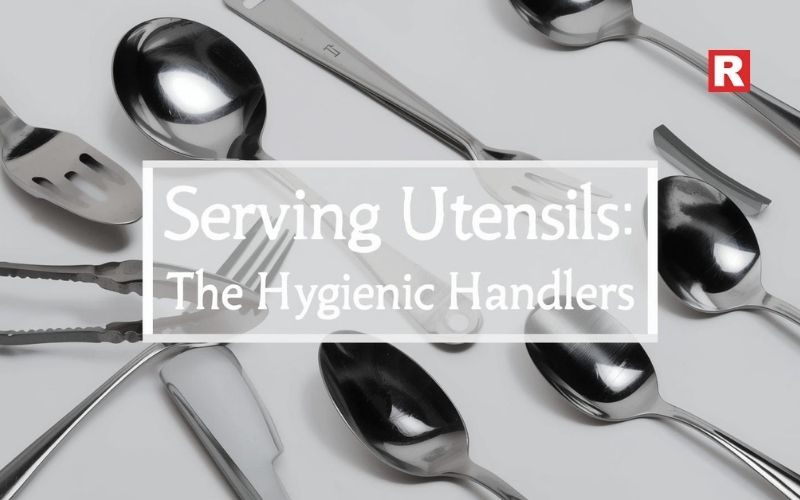
These are the unsung heroes of self-service; they are essential for maintaining proper portion control and hygiene.
- Purpose: In order to prevent cross-contamination between various rice dishes, dals, or curries and to let customers serve themselves hygienically, it is essential to provide each dish with a clean, suitable utensil.
- Types: A wide variety includes flat spatulas for dry veggies or snacks, deep ladles for soups and gravies, robust tongs for salads and breads (such as naan or roti), and serving spoons in different sizes for rice and smaller meals.
- Important Points: For Indian spices, stainless steel construction is the best option because of its longevity, hygienic qualities, and corrosion resistance. When handling hot food, utensils should be heat-resistant and of a comfortable size for visitors. To maintain a clean buffet line and keep handles away from food or the table surface, each utensil has its own designated holder or rest.
Check out: Top 10 Qualities of A Successful Restaurateur|
Beyond Toast: 10 Deliciously Easy Bread-Based Snacks
6. Beverage Dispensers: Efficient Hydration
In order to keep customers refreshed, cut down on staff work, and eliminate lines, it is essential to serve beverages efficiently.
The purpose of these units is to make it easier for customers to serve themselves by streamlining the provision of both hot (like filter coffee and masala chai) and cold (such as fresh juices, jaljeera, water, and iced tea) drinks.
- Types: Insulated beverage dispensers, sometimes known as "airpots" for hot beverages, maintain the warmth of hot water, tea, or coffee for prolonged periods of time. Cold beverages stay absolutely refreshing thanks to juicers with cooling cores. High-volume hot beverage service is served by chai steamers or coffee pots with large capacities.
- Key Considerations: Capacity should be equal to expected demand, particularly at peak meal times. To maintain the appropriate temperatures, good insulation is essential. Maintaining cleanliness and avoiding sticky messes requires drip trays that are easy to wipe and placed precisely.
7. Bread Baskets / Dispensers: Organized Offerings
The way traditional Indian breads and sides are presented greatly enhances the overall appearance and customer experience.
- Purpose: Their function is to maintain a range of breads, such as different rotis, naans, kulchas, or even pav, fresh, arranged, and within easy reach of customers—often next to a live counter.
- Why Essential: Fresh bread presented neatly and attractively improves the buffet's appearance and ensures a smooth flow by reducing crumbs and clutter on the serving line.
8. Condiment & Sauce Stations: Personalizing Flavor
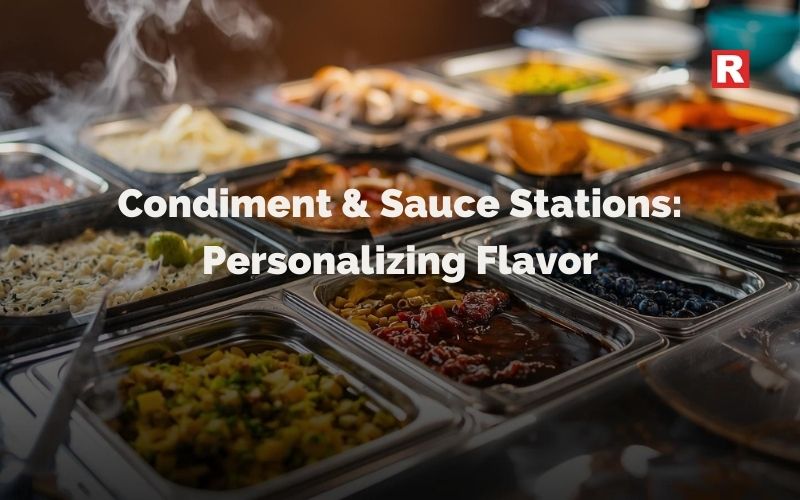
A key component of the Indian dining experience is providing a variety of chutneys, raitas, and pickles so that customers can personalize their meals.
- Purpose: By offering a variety of accompaniments, these stations enable customers to customize flavors to suit their tastes and improve their meal.
- Types: transparent pumps or squeeze bottles for liquid sauces and dressings (like mint chutney or tamarind chutney), small, stylish ceramic or steel bowls for dry condiments (like chili flakes or roasted cumin powder), and special trays for lemon wedges, chopped onions, or fresh herbs.
- Why Essential: Aside from providing different options, this also provides a layer of real Indian taste and keeps the presentation tidy and welcoming, which greatly improves the eating experience.
Read this: 5 Unique Theme Ideas That Make Your Restaurant Stand Out
Beyond Equipment: Maintenance & Training
Even the most advanced equipment needs expert handling and careful maintenance to function at its best, particularly in the demanding setting of an Indian commercial kitchen.
- Frequent Cleaning: After every service, establish a strict routine for thoroughly cleaning and sanitizing all buffet equipment. This keeps bacteria from growing, prolongs the life of the equipment, and keeps it looking nice.
- Staff Training: Make sure that every member of your staff receives complete training on how to use each buffet item correctly, as well as sanitary refilling methods, exact temperature monitoring procedures, and efficient waste management best practices. Your biggest asset is skilled staff.
- Preventive Maintenance: Create a schedule for routinely inspecting and maintaining all mechanical and electrical equipment. Regular inspection ensures longevity and constant, dependable performance by preventing unexpected incidents during crucial peak service periods.
Conclusion
It takes an intricate balance of food creativity, logistical accuracy, and careful guest experience design to create a buffet service in an Indian restaurant that is genuinely seamless. However, the strategic placement of necessary, superior buffet equipment is at its heart. These essential instruments are the foundation of every successful buffet, working nonstop to preserve culinary perfection, maintain the highest standards of sanitation, and make it easy for your valued customers to move about. Through wise investments in these essential tools, careful planning, and a committed, well-trained staff, restaurateurs can improve the dining experience, strengthen their reputation for excellence, and guarantee a consistently smooth and incredibly profitable operation that makes their buffet a true "feast of champions."

Paneer is usually the vegetarian star in the rich complexity of Indian food. Many restaurateurs who want to provide appealing vegetarian options to their customers turn to this popular item because of its creamy texture and exceptional adaptability. With dishes like Paneer Tikka's smokey char and Shahi Paneer's luscious gravies, this dairy treat has earned a place in people's hearts (and stomachs) all across the world. However, what if we told you that beneath this well-known hero is a wealth of vegetarian ingredients and recipes that are bursting with distinctive tastes, textures, and tales that are just ready to enthrall your guests?
For far too long, Indian vegetarian cuisine has been seen narrowly in many restaurants, frequently restricting the dining experience to a few well-known dishes that focus mostly on paneer. By encouraging restaurateurs to discover the amazing depth and breadth of India's plant-based customs, this article seeks to shatter that stereotype. By breaking out from the norm, you can improve your menu and build a distinctive brand for your restaurant that will appeal to a wider range of adventurous, health-conscious, and ethically aware customers. It's time to learn how India's lesser-known vegetarian treasures can turn your restaurant into a culinary hotspot renowned for its inventive and authentic dishes.
Read more: 5 Cities That Serve the Best Non-Vegetarian Street Food
Why Look Beyond Paneer?
Understanding new trends and customer preferences is essential to remain ahead of the constantly evolving culinary world. There are some strong benefits to expanding your Indian vegetarian menu:
- Market Demand & Health Consciousness: There is no question about the global trend toward veganism, plant-based diets, and healthier food choices. Customers are actively looking for vegetarian solutions that are both inventive and nourishing. You can directly reach this expanding and profitable market group by providing a wider variety of plant-based cuisine.
- Culinary Innovation & Differentiation: Being different is valuable in the cutthroat restaurant industry. By branching out from the typical paneer meals, you can add unique flavors and textures that will give your restaurant a unique edge and make it a topic of conversation among foodies.
- Authenticity & Regional Exploration: Every region of India has its own unique ingredients and cooking methods, resulting in an extraordinarily varied food map. Presenting these lesser-known products and dishes gives customers who yearn for authentic cultural experiences a more realistic look into India's extensive culinary heritage.
- Sustainability and Ethical Sourcing: Compared to dairy production, the production of several traditional Indian vegetables uses less water and resources, making them naturally sustainable. By using these items, your restaurant can attract eco-aware customers and align with eco-friendly policies.
- Allergy & Dietary Needs: Naturally, broadening your menu gives customers with dairy or lactose intolerance additional choices, making the eating experience more welcoming and friendly.
Revealing India's Vegetarian Treasures: Ingredients to Explore
Let's explore some of the amazing vegetarian products from India that ought to take center stage on your menu:
1. Jackfruit (Kathal): The "Vegetarian Meat"

The most fascinating and versatile "meat substitute" from India is probably jackfruit. Its fibrous texture, when young and unripe, makes it a fantastic alternative to shredded chicken or pulled pig. It is ideal for thick curries, biryanis, and even kebabs because of its excellent flavor absorption capabilities.
- Flavor Profile: When young, the flavor profile is mild and absorbing.
- Signature dishes: "Pulled Jackfruit" tacos or Indian-style burgers, Jackfruit Biryani, and Kathal ki Sabzi (hot jackfruit curry).
- Why it's so appealing: Its remarkable ability to replicate the texture of meat will astonish and please even the most die-hard carnivores, promoting your restaurant as a leading cuisine artist.
2. Lotus Stem (Kamal Kakdi / Bhein): Crunchy & Nutty

The visually appealing, hollowed-out pieces of lotus stem have a genuinely unique texture: they are crunchy on the outside, slightly soft on the inside, and have a faintly nutty taste. Because of its capacity to absorb spices, it is a widely used ingredient, particularly in Kashmiri cooking.
- Flavor Profile: Earthy, mild, and mildly sweet.
- Signature dishes: Kamal Kakdi Fritters, Crispy Honey Chili Lotus Stem (a well-liked Indo-Chinese appetizer), and Nadru Yakhni, a Kashmiri lotus stem stew.
- Why it's so appealing: It's a remarkable ingredient because of its unique look and delicious texture, which give any recipe an exotic touch.
Know more: Slurping Through India: 6 Iconic Noodles You Can’t Miss
3. Raw Banana (Kachha Kela): The Starchy Chameleon
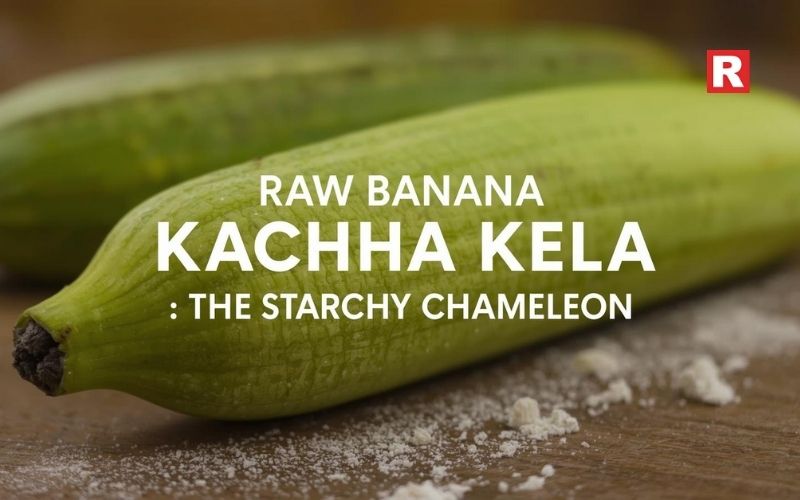
Raw bananas are a common ingredient in many South and East Indian recipes, yet they are occasionally overlooked. They make a great base for a variety of recipes because they are solid and starchy. They have a surprisingly wide variety of uses and can be cooked, fried, or grated.
- Flavor Profile: Subtle, earthy, and neutral.
- Signature dishes: raw banana cutlets, chips, Vazhakkai poriyal (a South Indian raw banana stir-fry), and kela kofta curry.
- Why it's appealing: Its simple appearance conceals its versatility. You can turn it into warm, cozy recipes that provide an alternative to potato-based side dishes.
4. Bottle Gourd (Lauki) & Ridge Gourd (Turai): Humble Heroes
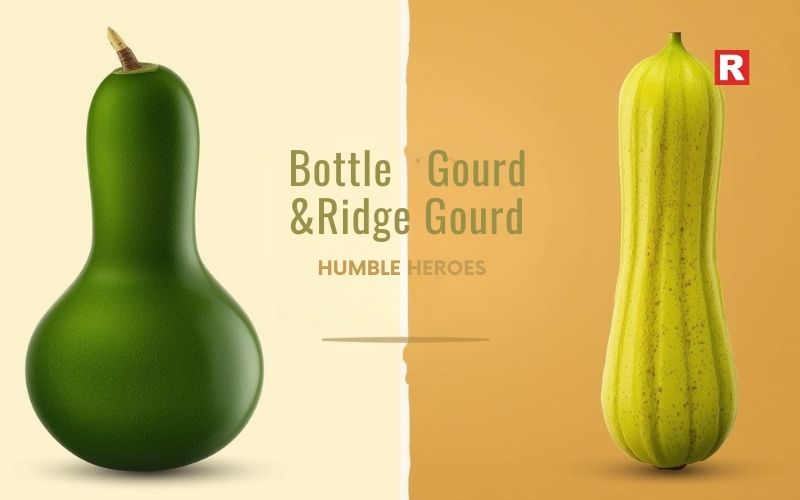
Although they are rarely found on restaurant menus, these gourds are frequently used in Indian home cooking. They are exceedingly light and healthy, and they have a delicate, refreshing flavor. For diners looking for healthier, lighter options, they are ideal.
- Flavor Profile: mild, mildly sweet, and watery.
- Signature dishes: Turai ki Sabzi (ridge gourd curry), Lauki Halwa (dessert), Lauki Kofta (gourd dumplings in sauce), and nourishing dals made with these gourds.
- Why it's appealing: Unlike heavier restaurant meals, these vegetables give a comfortable simplicity that reflects the real "soul food" of Indian families.
What's new: Beyond Toast: 10 Deliciously Easy Bread-Based Snacks
5. Colocasia / Taro Root (Arbi): Earthy & Satisfying
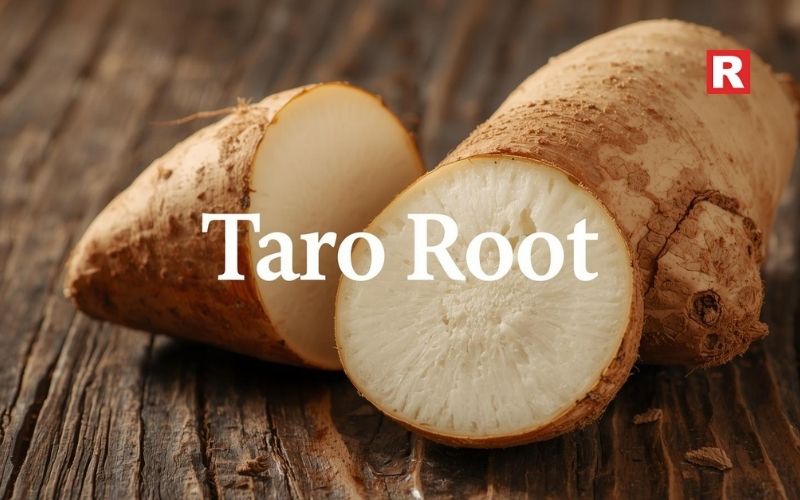
When cooked, arbi, also known as taro root, develops a starchy, slightly sticky texture that can become quite crispy when fried. It also has a satisfyingly fibrous flavor. It's a great addition to gravies and dry dishes.
- Flavor Profile: nutty and earthy.
- Signature dishes: Arbi ki Curry, Arbi ki Sukhi Sabzi (dry spiced colocasia), and Arbi Tuk (crispy fried slices).
- Why it's appealing: Its powerful, grounding flavor and pleasant textural contrast make it a charming addition to a vegetarian main course.
6. Drumsticks (Moringa Pods / Sahjan): The Nutrient Powerhouse

The long, thin pods of the Moringa tree, called drumsticks, are a popular vegetable in South Indian and some West Indian cooking and are frequently acknowledged for the superfood status of its leaves. They have a soft, fibrous pulp that can be scraped out and a distinct, savory, slightly bitter flavor. Rich in vitamins and minerals, drumsticks provide any meal a unique flavor and health boost.
- Flavor Profile: Earthy, savory, slightly bitter, and distinct.
- Signature dishes: drumstick curry, which is frequently made with coconut milk; drumstick fry, which is a simple stir-fry; and sambar, which is a traditional South Indian lentil stew, all of which are served with kadi, a gravy made with yogurt.
- Why it's appealing: Its strong flavor makes a strong impact and gives food a raw, rustic feel. Its amazing nutritional worth might be emphasized to attract health-conscious consumers searching for superfoods. It's a taste of authentic regional Indian cuisine that many people might've never had.
Check out: Top Navratri Dishes You Can Relish Without Guilt
Best White Bread Brands in India
Transforming Your Menu By Integrating These Treasures
Careful preparation and creativity are necessary for the successful integration of these ingredients in your menu:
- Create Unique Menu Items: Don't merely include a generic "vegetable curry." Make special main dishes (like "Kashmiri Nadru Delight" or "Spicy Jackfruit Pulao") that showcase that particular ingredient especially.
- Appetizers & Small Plates: Present unique appetizers and snacks. Consider Arbi Chaat, Raw Banana Fritters, or Crispy Lotus Stem Honey Chili. For diners who want to sample something new without paying for an entire meal, these are excellent starting points.
- Regional Specials: Set aside a portion of your menu to serve vegetarian dishes from a specific area. This offers your customers an engaging and educational experience.
- Fusion Possibilities: Try new things without fear. Indian ingredients may be incredibly versatile when used in fusion recipes, combining with international cooking methods to produce genuinely inventive dishes. Imagine Lotus Stem Risotto or Jackfruit Biryani Arancini.
- Descriptive Menu Language: Use descriptive menu language to inform and persuade customers. Make use of detailed descriptions that draw attention to the distinct flavors, textures, and places of origin of these items. Describe the traditional importance or health advantages.
- Chef Training: Invest in your kitchen staff. To guarantee constant quality and genuine flavor, offer instruction on the preparation, cooking methods, and flavor profiles of these new dishes.
Read this: Easy & Delicious Meal Prep Ideas for a Busy Week
Marketing Your Unique Vegetarian Offerings
The secret to success after diversifying your menu is efficient marketing:
- Storytelling: Use your menu, website, and social media to highlight the cultural significance, health advantages, and special features of these items. People enjoy food with a backstory.
- Visual Appeal: It's essential to have your new dishes professionally photographed. Using top-notch photos for your menu, social media, and internet platforms can draw customers in and tempt them to try it.
- Promotional Events: To present these new products, hold tasting menus, chef's specials, or special "Taste of India's Vegetables" weeks.
- Targeting Demographics: Adapt your advertising to appeal to health-conscious people, vegetarians, vegans, and bold foodies who are constantly looking to try new foods.
It's Just A Start
Indian vegetarianism encompasses much more than just the familiar staples of paneer. The earthy deliciousness of raw bananas, the delicate crunch of lotus stems, and the meaty texture of jackfruit are just a few of the plant-based riches that restaurateurs can embrace to create an unmatched opportunity. You can develop a menu that appeals to a modern, health-conscious, and adventurous customer while simultaneously being incredibly authentic and culinarily innovative. It's an opportunity to set your restaurant apart, share a more comprehensive tale of Indian cuisine, and genuinely establish yourself as a food destination in the cutthroat dining industry. Go beyond paneer and see how your restaurant thrives.

The Indian restaurant industry is a thriving, intensely competitive, and immensely rewarding sector in India and around the world. The food scene of the country is as varied as the nation itself, ranging from busy street-side restaurants to fine dining venues with Michelin stars. However, in this colorful tapestry, some restaurateurs continually stand out from the others, turning their ideas into successful, well-liked dining establishments. What separates these people? Is it only a talent for delicious food or something deeper?
To be successful in the Indian restaurant industry, one needs a complex combination of dedication, enthusiasm, and an exceptional array of skills. It involves more than just cooking; it involves leadership, creativity, adaptation, and interpersonal connections. It is crucial for prospective restaurateurs or those seeking to improve their current businesses to have an understanding of these fundamental skills. This article explores the top ten essential characteristics of a genuinely successful Indian restaurant, providing guidance and motivation to overcome obstacles and take advantage of possibilities in this ever-changing sector.
Read more: The Critical Role of Kitchen Efficiency in Modern Restaurants
The Foundation: Core Business Judgement
A strong business structure is the foundation of any successful restaurant. A successful restaurateur knows that good business procedures are the foundation of sustainability and that excellent food isn't enough on its own.
1. Sharp Business & Financial Acumen

A successful Indian restaurateur has a strong grasp on statistics. They are skilled businesspeople as well as cooks and hosts. This means:
- Comprehending Profit and Loss (P&L) Statements: being aware of the precise location of money's inflow and outflow.
- Mastering Inventory & Cost Control: To keep food expenses under control, manage ingredients effectively, cut waste, and improve supplier relationships.
- Strategic Pricing: Setting menu prices strategically involves striking a balance between their perceived worth and profitability.
- Cash Flow Management: Maintaining steady cash flow to pay for operating costs and make growth investments.
- Data-Driven Decisions: Using market trends, sales data, and customer reviews to guide operational, marketing, and menu modifications.
This knowledge enables them to manage changes in the economy and guarantee the restaurant's long-term survival.
2. Unwavering Passion & Vision

Every successful restaurateur is driven by a profound, constant passion that extends beyond the operational charts and spreadsheets. It's a dedication to crafting a whole dining experience rather than only a passion for food.
- Clear Concept: They have a clear idea of what they want their restaurant to offer in terms of food, atmosphere, target market, and USP.
- Drive and Willpower: Working in the restaurant business is notoriously difficult. The strength required to overcome obstacles, adjust to emergencies, and endure long hours and taxing circumstances can be gained by determination.
- Inspiration: This enthusiasm spreads easily, motivating employees to give their best work and connecting with consumers to win their loyalty. It's about realizing a dream and keeping it going in the face of hardship.
Know more: The Importance of a High-Quality Knife Set For Restaurants
3. Strong Leadership & Team Management Skills

In a restaurant, the restaurateur is the conductor of a symphony of moving parts. A positive and productive work atmosphere is largely dependent on effective leadership.
- Inspiration & Motivation: They provide outstanding service and cooking expertise by motivating their staff, which includes both front-of-house and back-of-house staff.
- Effective Communication: Everyone is on the same page when there are clear instructions, open lines of communication, and transparent goals.
- Delegation: Knowing how to give employees responsibility to empower them.
- Conflict resolution: The art of effectively resolving conflicts and cultivating a friendly, cheerful workplace culture.
- Talent Retention: Establishing an atmosphere where employees feel appreciated, heard, and given growth chances is essential for talent retention in a field with a high employee turnover rate.
The Culinary Edge: Product & Innovation
In the end, the food and beverages are the main attractions. Successful Indian restaurateurs have a forward-thinking mindset and a deep understanding of their profession.
4. Deep Culinary Knowledge & Innovation

Even if they are not all head chefs, restaurateurs need to have a deep love and knowledge of cuisine.
- Authenticity & Roots: A solid knowledge of local Indian ingredients, cooking methods, and customs.
- Willingness to Experiment: The guts to come up with fresh ideas, modify traditional recipes, and present mouthwatering flavor combinations.
- Balancing Tradition with Trend: Knowing when to embrace contemporary culinary trends, dietary choices (such as plant-based), and global influences while remaining loyal to one's background.
- Ingredient Sourcing: Finding fresh, high-quality ingredients to enhance each dish.
This enables them to create dishes that appeal to a modern audience while remaining authentic.
5. Commitment to Quality & Consistency
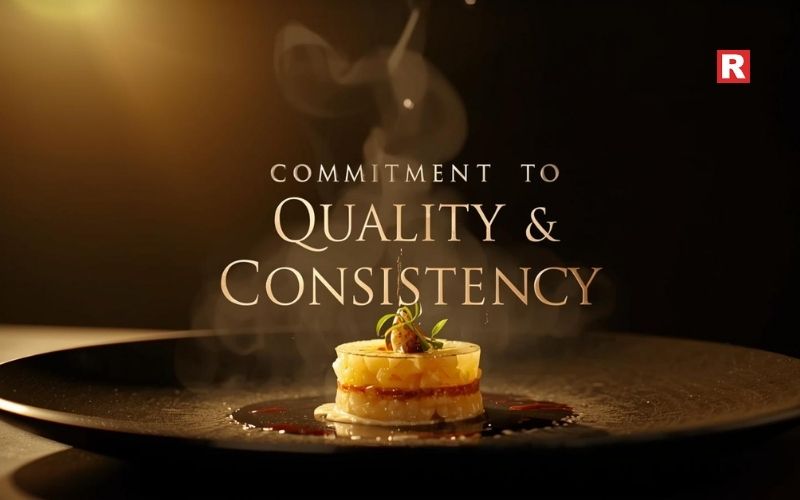
In the restaurant industry, consistency is king, and quality is crucial.
- Non-Negotiable Standards: Unwavering commitment to the best possible preparation, flavor, freshness, and quantity management for every meal, every day.
- Hygiene & Safety: For the sake of consumer trust and legal compliance, meticulous attention to food safety procedures, kitchen hygiene, and overall cleanliness is essential.
- Supplier Relationships: Establishing solid connections with trustworthy suppliers who regularly provide ingredients of the highest caliber.
By fostering trust and loyalty, consistency converts new diners into devoted customers who know they can always count on great service.
What's new: 5 Unique Theme Ideas That Make Your Restaurant Stand Out
The People Factor: Customer & Community
A restaurant's relationships with customers, staff members, and surrounding communities are what make it prosper. A successful restaurateur is an expert at connecting with people.
6. Exceptional Customer Service Orientation
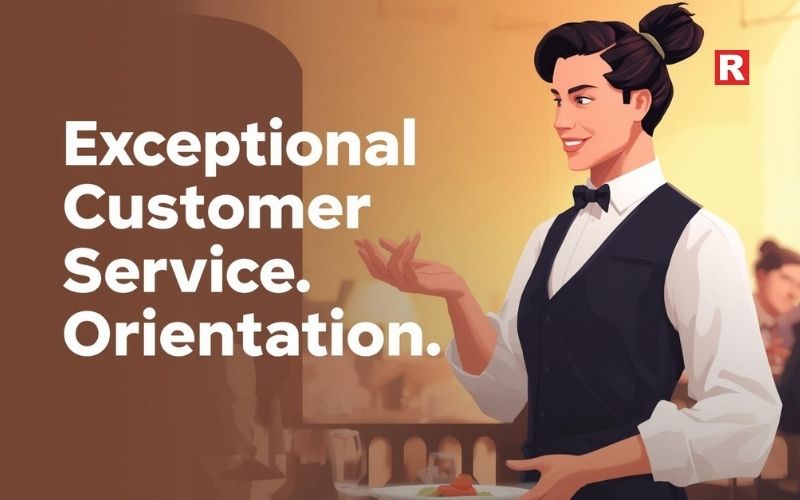
A good restaurateur knows they are in the industry of creating experiences, not just serving food.
- Anticipating Needs: The innate capacity to recognize and foresee the wants and needs of customers.
- Memorable Experiences: Going above and above to make every visit unique, such as remembering a regular's favorite meal or making a considerate gesture.
- Graceful Feedback Handling: Effectively handling complaints, swiftly and politely settling conflicts, and transforming potentially bad experiences into good ones.
- Personal Connection: Creating a feeling of warmth and hospitality that extends beyond a simple transaction by making customers feel valued and appreciated.
7. Effective Marketing & Branding Savvy

Even the best food needs to be discovered. A successful restaurateur is skilled at drawing customers in and sharing their story.
- Target Audience Understanding: Clearly identifying their target customer and adjusting their advertising to suit them accordingly.
- Digital Presence: Using a strong website, social media, and online review sites to interact with customers and highlight dishes.
- Brand Identity: Developing a compelling brand story that conveys the restaurant's distinctive idea, core principles, and cooking philosophies.
- Promotional Creativity: Creating creative collaborations, unique events, and marketing strategies that create excitement and increase foot traffic is known as promotional creativity.
They are aware that the internet presence of their restaurant is just as crucial as its physical one in the current digital era.
8. Strong Networking & Community Engagement

Establishing a restaurant's position within its immediate surroundings requires building bridges.
- Supplier Relationships: Maintaining solid ties with suppliers guarantees reliable quality, advantageous conditions, and access to special ingredients.
- Local Companies: Working together with other local companies, whether for community activities or cross-promotion, improves local relationships.
- Media & Influencers: Establishing a good connection with local media, bloggers, and food reviewers to get favorable publicity.
- Community Involvement: Taking an active role in neighborhood activities and events shows dedication to the community, which fosters goodwill and patronage. They know that a restaurant frequently serves as a gathering place for the community.
Check out: Dishwasher vs. Three-Compartment Sink: Which is Right for Your Restaurant?
How to Train Your Staff to Spot Bad Seafood in Five Easy Steps
The Adaptability Factor: Growth & Resilience
The restaurant business is a dynamic one that is always impacted by shifting economic conditions, emerging trends, and unanticipated difficulties. Adaptability is essential for development and survival.
9. Adaptability & Resilience

One of the characteristics of success is the capacity to deal with change and overcome hardship.
- Market responsiveness: The ability to quickly adjust to changing customer demands, recessions, or new health laws.
- Learning from Setbacks: Seeing setbacks as important teaching moments to hone tactics and enhance operations rather than as final destinations.
- Embracing Technology: Being willing to incorporate new technology into restaurants, such as kitchen automation and online ordering platforms, to improve productivity and patron satisfaction.
- Crisis management: The process of creating solid strategies to handle unanticipated emergencies, such as pandemics or natural catastrophes, while maintaining business operations.
10. Attention to Detail

Every little thing at a restaurant adds to the overall experience and impression.
- Operational Excellence: No detail is too little, from the immaculately clean toilets to the finely plated silverware, menu display, and meal temperature.
- Service Flow: Making certain that the service is smooth, effective, and subtle.
- Ambiance: Carefully arranging the furniture, music, lighting, and table settings to provide the ideal ambiance.
- Consistency: This attribute is related to consistency in that it guarantees that the high standards are upheld daily in every facet of the business.
Read this: Easy & Delicious Meal Prep Ideas for a Busy Week
Conclusion
There are many obstacles in the way of being a prosperous Indian restaurateur, but there are also many rewards. It calls for more than just culinary skill; it calls for a well-rounded person who possesses keen business sense, endless enthusiasm, powerful leadership, a dedication to quality and creativity, outstanding people skills, and extraordinary flexibility. Together, these 10 characteristics provide a potent recipe for turning a restaurant into a cherished institution. A space where cuisine, culture, and community perfectly blend to guarantee not just survival but also long-term, prosperous success in the dynamic realm of Indian cuisine.

Kitchen efficiency plays a vital role in the success of any restaurants because it directly impacts both operations and the dining experience. So, why kitchen efficiency is important? Kitchen efficiency is the backbone of smooth operations enabling restaurants to deliver great food, maximize profitability, and scale successfully.
Importance of Kitchen Efficiency: A well-organized kitchen streamlines prep and cooking, allowing meals to reach guests faster while improving both table turnover and customer satisfaction. Speed enhances the dining experience, while consistency in food quality ensures every dish looks and tastes the same, reinforcing trust through standardized processes.
Commenting on this, Pema Takchung Lepcha, Chef & Director, Hunaaan, Bengaluru said, “Efficient processes and standardized recipes ensure that dishes are prepared accurately and consistently, maintaining high food quality with every order.”
Proper storage and prep systems keep food safe and compliant with hygiene standards.
“For me, kitchen efficiency is the backbone of any restaurant. No matter how creative the menu is, if the kitchen doesn’t function like a well-oiled machine, the guest experience suffers. Efficiency ensures consistency, speed, and quality—all of which directly impact how diners perceive the brand,” added Parvez Khan, Chef and Co-founder at Sozo Izakaya.
Boosting Efficiency: Effective menu is a key component of an efficient kitchen. Lepcha noted that one need to focus on dishes that kitchen staff can prepare with time.
Sharing his views, Khan said, “The key factors are clear SOPs, training and communication, smart use of equipment, and a team that understands timing and flow. A structured prep culture and inventory control also go a long way in preventing chaos during service.” Brands have to define staff roles clearly and provide proper training to minimize confusion and errors.
Elaborating on this, Chef Rohit Tokhi, COO, Toscano India said, “Ensure consistency in food quality, reduce food waste, and control costs. Optimize workstation placement, storage, and workflow to reduce bottlenecks and improve productivity.Implement kitchen display systems (KDS), inventory management software, and point-of-sale (POS) systems to streamline operations.” Train staff in multiple roles to improve flexibility and adaptability during peak hours.
Improved Staff Productivity & Morale: Clear workflows minimize stress and confusion during peak hours, allowing staff to focus on cooking and creativity rather than searching for ingredients or tools. With a streamlined setup, the kitchen can manage higher volumes without sacrificing quality, making it easier to roll out new menu items and support future expansion.
Common Challenges: When a kitchen runs efficiently, food quality is consistent, waste is reduced, and staff morale is higher. The challenges are usually staff turnover, inconsistent training, or lack of communication.
“The only way to overcome these is to build strong systems, invest in people, and create a culture of discipline and respect,” pointed Khan.
Improves customer satisfaction by streamlining processes like inventory and staffing. Lepcha added, “Maintaining a consistent standard of food and service across all shifts is a persistent challenge.”
Putting up his views, Tokhi shared, “For Inefficient Inventory Management, use inventory tracking software, conduct regular stock checks, and optimize ordering practices. Brands need to standardize recipes, portion sizes, and cooking procedures to ensure consistency. Provide regular training, cross-training, and performance feedback to improve staff skills and adaptability.”
Impacting Restaurant Success: A guest may never see the kitchen, but they’ll always feel its efficiency on the plate and in the service. So, kitchen efficiency has a direct impact on restaurant success like influencing customer satisfaction, productivity, and profitability.
“A well-managed kitchen ensures consistency, quality, and timely service, ultimately driving customer loyalty and repeat business,” expressed Tokhi.
Khan highlighted that smooth operations mean happier guests, repeat business, and ultimately a stronger brand. “Efficiency isn’t just an internal goal—it’s directly tied to the restaurant’s long-term success.”
While Lepcha stressed that well-trained staff ensure that quick and reliable service leads to happier customers, which improves their overall dining experience and encourages repeat visits.
By prioritizing kitchen efficiency, restaurants can boost performance, drive revenue, and strengthen their brand identity. An efficient kitchen reduces costs, enhances customer satisfaction, and ensures seamless operations while making it the foundation of every successful restaurant.

A professional kitchen is a high-pressure and fast-paced environment, where every member needs to do their work properly and efficiently so that the customer can enjoy their food in the end. The preparation of this food begins when the chef picks up their knife. And a chef's knife is more than a tool. It's an extension of their hand, a trusted partner, and a symbol of their craft. While we know that an Indian restaurant's reputation is founded on the rich, complex tastes of its curries, kebabs, and biryanis, the path of this culinary art begins even before the first spice hits the pan. It begins with a precise cut, a clean slice, and efficient preparation. And for all of this, having a high-quality set is an absolute requirement, not just a luxury.
This detailed article will explain why investing in a high-quality knife set is one of the most important decisions an Indian restaurant owner can make. We'll look at both real and invisible advantages, such as enhancing kitchen safety and staff morale, as well as elevating the overall quality of every dish served.
Read more: India’s Top 5 Vegetarian Restaurant Brands You Can’t Miss
Safety First, Always
Safety is a major concern in a busy Indian kitchen, where speed is of the essence and the floor might be sticky from spills. In such a case, a dull knife becomes a hazardous tool. When a blade is not sharp enough, the chef has to use extra force to make a cut. This added pressure increases the likelihood of the knife slipping, resulting in severe cuts and injuries. However, a dull knife is often thought to be safer, but this is not the case.
A high-quality, sharp knife cuts through ingredients with little effort. This precision needs less force, allowing the chef greater control over the blade and greatly reducing the risk of an accident. Investing in a quality knife set also means equipping your staff with well-designed cutting tools, which reduces hand fatigue and the possibility of slips during long, difficult shifts. A sharp knife ensures that tasks are accomplished with maximum control and least risk, whether delicately chopping onions for a base sauce or dicing potatoes for an aloo sabzi.
Efficiency and Consistency: The Pillars of a Profitable Kitchen
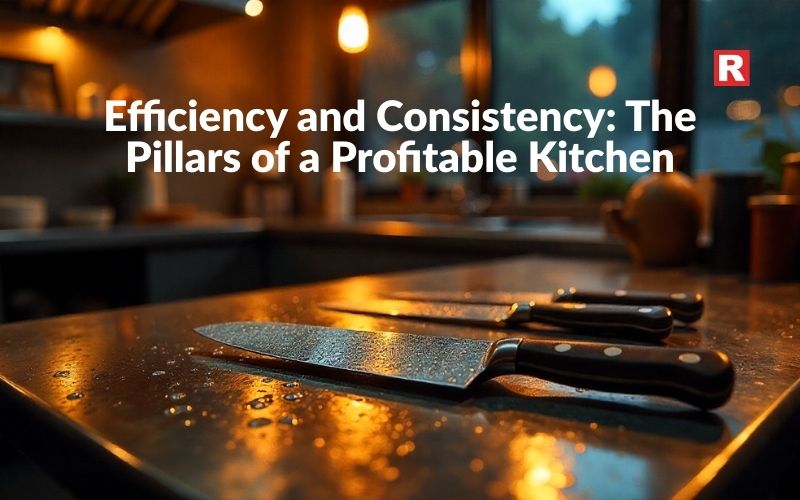
Time is money in the restaurant industry. A kitchen's profitability increases as it produces dishes faster and more consistently. A great knife set is the secret weapon for increasing efficiency from the start.
Consider how many veggies and meats need to be prepared in a busy Indian restaurant. Gravies are often made with onions, tomatoes, and ginger; stir-fries with potatoes, cauliflower, and carrots; and a variety of chicken, mutton, or fish cuts. A sharp, well-balanced knife enables a chef to operate faster and more accurately. This efficiency is more than just speed; it is also about consistency. Every slice of chicken for a kebab, every dice of paneer for a curry, and every clove of garlic for a tadka are equal. This uniformity is important because it guarantees that all ingredients cook at the same rate, resulting in a flawlessly prepared and attractively presented dish every time.
Know more: 5 Unique Theme Ideas That Make Your Restaurant Stand Out
Elevating the Quality of Your Food

The quality of your finished dish is directly linked to the quality of your ingredients and how they are prepared. A high-quality knife set enhances your meal in ways you may not have expected.
- Preserving Integrity: Whether you're slicing delicate fish for a coastal curry or tenderizing beef, a sharp knife cuts cleanly. A neat cut maintains the ingredient's structural integrity, keeping it from bruising or ripping. A sharp knife keeps herbs like coriander and mint from smashing, which releases harsh tastes and causes them to wilt faster. This makes your garnishes appear colorful and fresh.
- Flavor Release: When you make a clean cut, you are not only creating the meal, but also managing how its flavors are released. This is especially crucial with aromatics like garlic and ginger. A finely minced garlic clove has a distinct, more strong flavor than a coarsely chopped one. A great knife enables a cook to attain this level of detail, bringing out the full flavor potential of each ingredient.
- Food Presentation: Presentation is key. We consume with our eyes first. Uniformly chopped veggies and carefully portioned meats result in a visually beautiful plate that improves the dining experience. A high-quality knife set is required to achieve the clean lines and flawless presentation that customers have come to expect from high-end restaurants.
Staff Morale and Professionalism
Chefs take pride in their tools. Giving your kitchen staff a high-quality knife set demonstrates that you value their work and are dedicated to their success. This investment in their professional development goes a long way toward improving morale and instilling a sense of ownership.
When a chef feels that they have the best tools, they are more likely to take pride in their profession and perform to their full potential. A well-maintained knife set promotes professionalism and discipline in the kitchen. Staff will be more likely to care for their instruments, keeping them clean, sharp, and ready for the next task. This shared responsibility helps to create a more connected and productive work atmosphere, which is essential in an industry notorious for high turnover.
What's new: Dishwasher vs. Three-Compartment Sink: Which is Right for Your Restaurant?
Durability and Long-Term Value
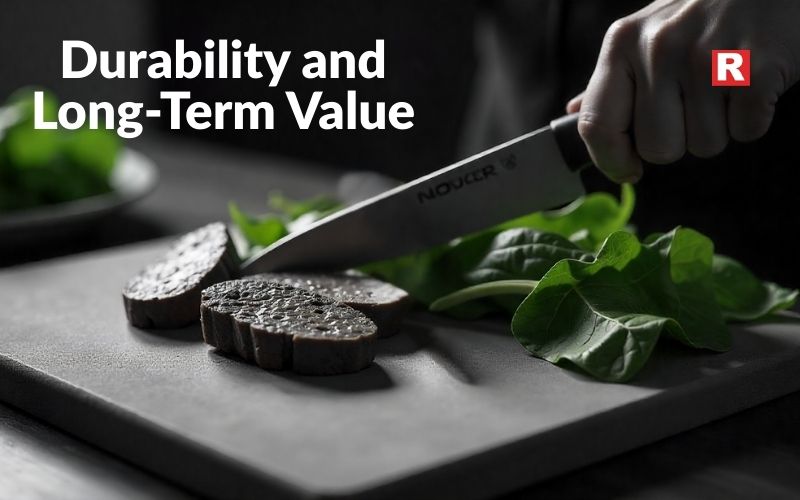
While the initial cost of a high-quality knife set may appear excessive, it is a sensible investment when considering its durability. Mass-produced, low-quality blades are composed of lower-quality steel that quickly loses its edge and needs frequent sharpening. They are also more prone to chipping, bending, and breaking, requiring frequent replacements.
A premium knife set constructed of high-carbon stainless steel maintains its edge for longer and is more robust. They can survive for years, if not decades, with proper care (such as frequent cleaning and sharpening). When you consider the cost of repeated replacements and the time lost sharpening dull blades, the initial investment in an expensive set is well worth it.
Choosing the Right Knives for Your Indian Kitchen
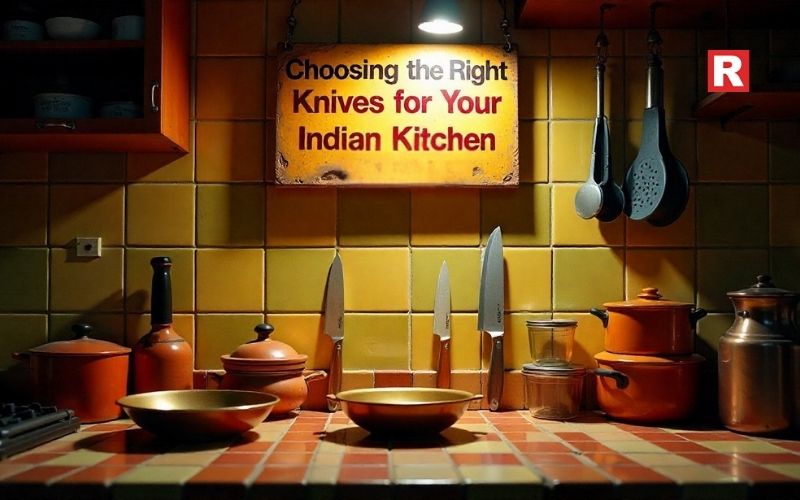
Understanding Your Needs: Before purchasing, consider the specific requirements of your cuisine. Preparing veggies for a sabzi requires different knives than deboning chicken for butter chicken.
- The Chef's Knife: It is the most crucial piece of equipment. Choose a multipurpose, well-balanced chef's knife for chopping onions, slicing tomatoes, and mincing garlic. An excellent quality one is the foundation of your knife collection.
- The Paring Knife: It is ideal for precise jobs such as peeling vegetables, deveining prawns, and making garnishes. Its compact size provides excellent control and precision.
- The Serrated Knife: Used to cleanly slice breads like naan or kulcha without shattering their soft inside. It's also useful for cutting up vegetables with hard skins but soft insides, such as tomatoes.
- The Boning or Filleting Knife: If your menu involves meat or fish, you must have a boning or filleting knife. The flexible, thin blade is ideal for separating meat from bone and making fillets, resulting in less waste.
- Maintaining the Set: A high-quality set requires an investment. Train your employees in proper cleaning (hand washing only, no dishwashers) and sharpening practices. A sharpening steel should be used on a regular basis to keep the blade's edge between each professional sharpening.
Check out: How to Train Your Staff to Spot Bad Seafood in Five Easy Steps
Easy & Delicious Meal Prep Ideas for a Busy Week
The ROI: Calculating the Value of Quality Knives
Reduced Food Waste: A sharp knife makes precise cuts, resulting in less waste of ingredients. You can get more usable portions from each vegetable or piece of meat, which directly affects your food cost %.
- Labor Cost Savings: A sharp knife set can reduce prep time by a few minutes. In a busy kitchen, this adds up to significant labor savings over the course of a week, more than covering the original cost.
- Enhanced Customer Experience: Quality knives result in consistent cuts, which lead to foods that are cooked evenly and presented beautifully. This improves the dining experience, resulting in more good reviews and repeat business.
- Reduced Risk and Liability: A sharp knife lowers the likelihood of major cuts. Preventing workplace injuries saves you money on medical expenditures, insurance claims, and lost work due to injured staff.
- Durability Over Time: While initially pricey, a high-quality knife set is a long-term investment. Its durability means you won't have to replace damaged or dulled blades on a regular basis, saving you money over time.
Read this: 5 Key Features a Restaurant Pizza Oven Should Have
Conclusion
In the competitive Indian restaurant business, where every detail counts, the value of a high-quality knife set cannot be emphasized enough. It's a foundational investment that has an impact on every element of your business, from safety and efficiency to food quality and staff morale. A sharp, well-maintained knife is more than simply a tool; it's a quiet partner in the kitchen, allowing your chefs to perform at their peak.
When you choose to equip your restaurant with the correct tools, you are not just purchasing a product; you are investing in your staff, your brand, and the amazing dining experience you provide for each customer. It's an investment that will improve your operations, enhance your food, and, eventually, lead the way to long-term success.

You've worked tirelessly to create your dishes, hone your service, and create a warm and inviting space. Yet, is "great food and good service" enough to draw customers in and cultivate an engaged customer base in the highly competitive Indian restaurant industry of today? The Indian restaurant industry is already flooded with several restaurants competing for the title of the best. In such a situation, restaurant owners who want to succeed must see beyond the obvious and harness the potential of a unique concept.
When a theme is carried out well, a meal becomes an experience. It evokes feelings, tells a story, and provides customers with an excellent reason for picking your restaurant over the many others. It all comes down to creating an unforgettable experience that begins the minute they enter your restaurant and lasts long after the last bite.
This article is intended especially for progressive restaurant owners and managers of India who are prepared to transform their business from "just another restaurant" to a destination that people will remember. We'll go over five original theme concepts that can help your restaurant stand out, along with helpful advice and practical strategies to help you put them into practice.
Read more: How to Choose the Perfect Spooky Theme for Your Restaurant
Why Theme Matters More Than Ever
Diners are seeking more than simply food in an era where social media and experiencing new things rule the day. They are also seeking stories, moments to share, and a break from the ordinary dining experience. In such a culture, an engaging theme can provide:
- Differentiation: It makes your restaurant stand out from the competition by carving out an area of specialty in a crowded market.
- Brand Identity: It makes your brand more desirable to your target audience and more easily recognizable.
- Improved Customer Experience: It transforms a meal into an adventure, elevating the eating experience.
- Marketing Gold: It offers an enormous amount of content for PR, social media, and word-of-mouth advertising.
- Enhanced Loyalty: Experiences help customers become more loyal than merely enjoying delicious meals.
- Pricing Power: Premium prices are frequently justified by exceptional customer experiences.
Theme Idea 1: The "Secret Supper Club" - Exclusivity as an Experience

The appeal of the secret and exclusive is more powerful than ever in a society where people are always connected. The topic of "Secret Supper Club" appeals to this need for exclusivity, closeness, and a feeling of belonging. A private dining area is only one aspect of this; suspense and restricted access are the foundations of a whole operational strategy.
Concept Deep Dive:
Consider a restaurant that isn't clearly visible on the street. Bookings can be made by invitation, recommendation, or a secret internet booking gateway that requires a "password" that is updated every month. It may be a permanent, unmarked venue, or the location could change over time. A surprise until guests are seated, the fixed-price meal is frequently seasonal. The ambiance is refined, conversation-friendly, and intimate.
Elements to Consider:
- Location: An unmarked door, a secret passageway, an old industrial building, or even temporary pop-up sites. Less noticeable is preferable.
- Booking System: An email list for "members," an internet portal with a changing password, or collaborations with service providers like concierges. Emphasize exclusivity and scarcity.
- Marketing: Make extensive use of influencer partnerships (with strict restrictions until after the event), word-of-mouth, and focused social media campaigns that tease but do not reveal everything. Your best ally is a teaser.
- Menu: A changing tasting menu with several courses that highlight creative cooking. The narrative can include information about the origin of the ingredients (e.g., "tonight's mushrooms foraged locally"). It is necessary to communicate dietary restrictions well in advance.
- Service: Knowledgeable, specialized employees who have a role in the "secret." They enhance the sense of drama by acting as guides rather than merely servers.
- Ambiance: Minimalist décor that exudes refinement and interest, soft seating, handpicked music (possibly live, subdued jazz), and dim lighting. There should not be any noticeable advertising in the dining area.
Why It Stands Out: This theme immediately evokes feelings of privilege and curiosity. Customers feel as though they are finding a hidden treasure, which generates strong word-of-mouth advertising and an engaged customer base. It provides a diversion from the usual as well as a unique discussion topic.
Target Audience: Foodies, wealthy diners, those looking for unusual experiences, privacy-conscious people, and social media influencers searching for unique material are the target audience.
Know more: How to Set a Goan-Themed Restaurant
Theme Idea 2: The "Culinary Time Machine" - A Journey Through Eras
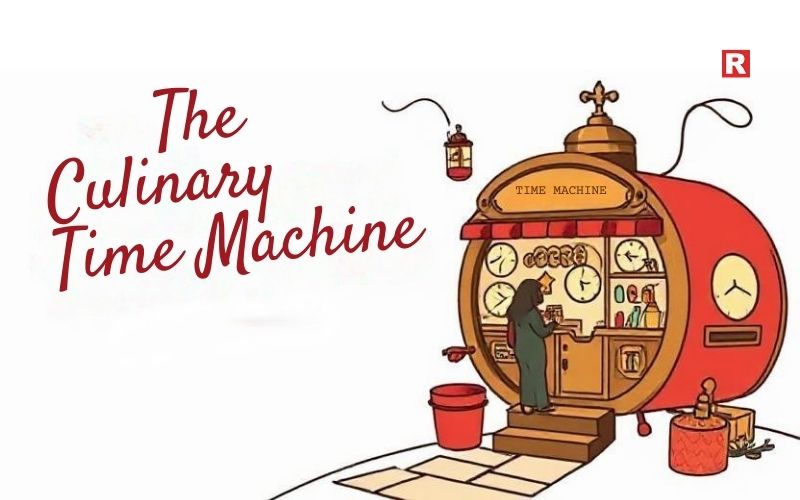
All people are drawn to history, nostalgia, and the romance of past times. The "Culinary Time Machine" concept immerses guests in a particular era of history, providing an experience that transcends simple décor. From the cuisine and beverages to the attire and entertainment, it's all about precisely re-creating the physical atmosphere of a selected era.
Concept Deep Dive:
Choose a specific time period to explore in your concept deep dive, such as the lavish courts of the Mughal Empire, a regal feast from the Rajput kingdoms, an elegant party during the British Colonial era, a bustling cafe in Bombay in the 1950s with Bollywood influences, or even the old, spiritual atmosphere of Vedic times. Everything is in keeping with this time period, including the background music, waiter uniforms, and menu language. The cuisine itself should either be a modern, enhanced version of period cuisine or true to the time period.
Elements to Consider:
- Selecting an Era: Research is crucial. Which cultural customs, culinary traditions, and artistic movements characterized this era? Make sure there is sufficient information to create a rich experience.
- Interior design: This is very important. Find genuine or replica wall coverings, lighting fixtures, furniture, and décor. Retrofits should be avoided at all costs.
- Menu Development:
- Authenticity: Is it possible to bring back real recipes from that era?
- Adaptation: How may classic recipes be improved while preserving their core using contemporary methods and ingredients?
- Presentation: In that time period, how was food served? Think about vintage platters, particular glassware, or even meals for groups during particular times.
- Drink Program: Wines, cocktails, or even non-alcoholic drinks that are suited for the time.
- Staff Training & Attire: Uniforms must reflect the time period. Staff should be knowledgeable about the historical background and may even use language or mannerisms that are appropriate for the time period (without being overly dramatic).
- Entertainment: The options include period-specific games, live music from the time period (e.g., classical Indian music, Ghazals, Qawwali, traditional folk dances), or even storytelling.
- Marketing: Make use of the nostalgic appeal. Make use of period-appropriate language, images, and typography in your advertisements. Emphasize the immersive experience you provide.
Why It Stands Out: This theme gives customers a completely immersive experience that lets them spend an evening in another world. It appeals to people who value history, freshness, and a distinctive kind of entertainment to go with their meal, and is very Instagrammable.
Target Audience: History buffs, families seeking an entertaining and informative activity, couples searching for a special date night, organizers of themed parties, and anybody with nostalgia for a certain time period.
What's new: Dishwasher vs. Three-Compartment Sink: Which is Right for Your Restaurant?
Theme Idea 3: "The Storyteller's Kitchen" - Culinary Narratives on a Plate
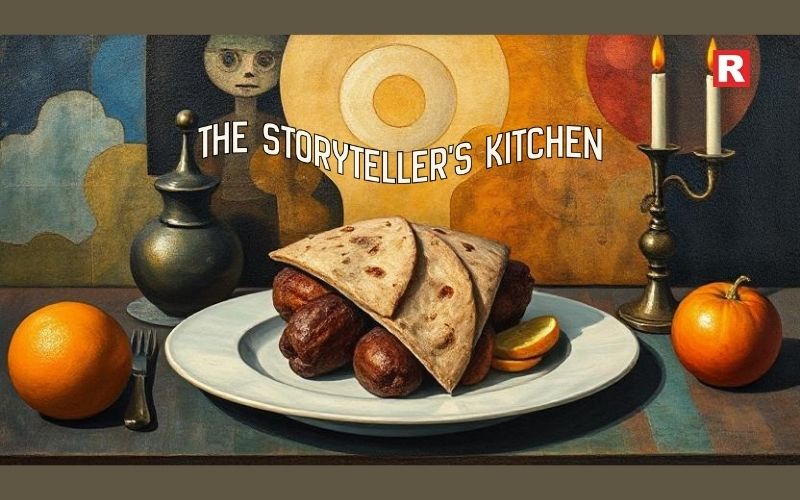
The journey of ingredients from farm to table, family customs, cultural history, and travel memories are all intrinsically linked to food. By incorporating captivating tales into every aspect of the dining experience, the "The Storyteller's Kitchen" theme makes the most of this potential. This idea emphasizes the human element in the food as well as its origins and tradition.
Concept Deep Dive:
The diner is informed of the story behind each dish on the menu. This might be the story of the fisherman who caught the fish, the farmer who farmed the food, the recipe passed down from the chef's grandmother, a dish that was inspired by a trip, or the cultural value of an ingredient. This story is supported throughout the restaurant's atmosphere, possibly via the use of maps, old photos, or handcrafted implements in the décor.
Elements to Consider:
- Menu Design:
- Dish names: They are vague phrases that relate to the story itself.
- Descriptions: In-depth, narrative explanations of each dish's history, inspiration, or significance, along with a list of its main ingredients.
- QR Codes: Provide links to brief essays or films on your website that tell the backstories of particular foods or ingredients.
- Ingredient Sourcing: Prioritize using ingredients that are ethically, locally, or traditionally procured. Develop a connection with your vendors and highlight their achievements.
- Open Kitchen/Chef's Table: If at all possible, an open kitchen lets customers see the "story in the making." The culinary staff can communicate directly and exchange ideas at a chef's table.
- Decor & Ambiance: Vintage cookbooks, framed stories of local producers, maps showing the origins of ingredients, "storytelling corners" with cozy seats, and literary themes. Music that generates a feeling of cultural heritage or travel.
- Server Training: Staff need to be knowledgeable about the backstories of every dish and be fascinating storytellers themselves. They might enhance the dinner experience by exchanging stories.
- Interactive features: It includes "story cards" for guests to submit their personal food memories or a "dish of the month" contest where customers can vote on the winner's backstory.
- Marketing: Highlight the genuineness of your ingredients and recipes, as well as the human connection. Make use of wonderfully appealing phrases and imagery.
Why It Stands Out: This subject engages diners on a personal level. People who like transparency, honesty, and a deeper understanding of their food will find it appealing. It turns eating into an emotional and intellectual adventure, making it a very memorable and meaningful experience.
Target Audience: It includes foodies, travelers, morally concerned diners, anyone interested in cultural history, and everybody who enjoys a meal with a backstory.
Check out: Best Theme Idea for a Rooftop Restaurant: A Starlit Bohemian Escape
Best Theme Cafes to Explore in 2025: Where Coffee Meets Imagination
Theme Idea 4: "The Sensory Lab" - Engaging All Five Senses (and Beyond)

Taste and appearance are the main priorities of most restaurants. This is elevated to a new level by the "The Sensory Lab" theme, which carefully creates an experience that actively appeals to all five senses and possibly a sixth sense of surprise and inquiry. The goal is to create an engaging, multi-layered environment with purposefully crafted sensory inputs.
Concept Deep Dive:
This topic could appear in a restaurant where customers dine in total darkness to enhance scent and flavor, in a setting where each course is accompanied by shifting sounds and projections, or in a location with touch-sensitive interactive features. To improve the whole experience, deliberate sensory manipulation is essential.
Elements to Consider:
- Soundscape: In addition to background music, think about ambient sounds that change as the meal progresses, sound effects that are triggered by particular dishes, or even just silence for particular courses.
- Aroma: Mild woodsmoke, citrus, fresh herbs, or even little aromatic "palate cleansers" in between courses are examples of diffused fragrances that go well with food.
- Lighting & Visuals: Food displayed on glowing plates, dynamic lighting that shifts color or intensity, or projected images on tables or walls that produce abstract patterns or moving art.
- Texture & Touch: Different textures in tablecloths, cutlery, and chairs. Dishes with a variety of textures (soft, chewy, silky, and crunchy). Hand-held dishes or edible "pebbles" are examples of interactive elements.
- Taste (The Core): Unexpected ingredient pairings, creative flavor combinations, and molecular cooking methods. Experiment with texture and temperature.
- Mystery & Surprise (The Sixth Sense): Unexpected components, amusing displays, and foods that defy expectations.
- Technology integration: It includes augmented reality components that disclose secret facts about food, interactive tablet menus, and projection mapping.
- Server as Facilitator: Employees lead guests through the sensory experience while explaining the purpose of each sensory component.
Why It Stands Out: This theme provides a genuinely innovative and remarkable dining experience. Because of its bold creativity, it appeals to daring diners seeking something genuinely unique. It creates a lot of buzz and offers countless chances for innovative marketing.
Target Audience: They include tech enthusiasts, artists, designers, adventurous foodies, people looking for unusual "experience" items, and anybody else who wants to think outside the box when it comes to eating.
Read this: How to Train Your Staff to Spot Bad Seafood in Five Easy Steps
Theme Idea 5: "The Global Crossroads" - A Culinary Fusion of Cultures

Through the creation of a unique fusion experience, the "Global Crossroads" theme honors the diverse weave of various cuisines in a world growing more interconnected by the day. Offering a few different international cuisines isn't enough; what's needed is a careful blending of culinary traditions to produce something completely original and fascinating.
Concept Deep Dive:
Select two or more unique culinary traditions that can be harmoniously combined despite their differences by sharing certain underlying ideas or flavor characteristics. Such as "Japanese-Peruvian Nikkei," "Tex-Mex with a Mediterranean Twist," and "Nordic-Asian Fusion." A lively, multicultural ambiance can be created by gently combining aspects of many cultures in the décor, music, and even staff dress.
Elements to Consider:
- Selecting a Cuisine: Learn about the origins and components of the cuisines you have selected. Determine which contrasting and similar components can be effectively combined. Stay clear of random pairings that don't make sense in the kitchen.
- Menu Design:
- Harmonious Fusion: Instead of just putting the flavors and cooking methods of the two cultures next to each other, create recipes that truly enhance them.
- Innovation in Ingredients: Incorporate lesser-known components from one culture into recipes of a different origin.
- Presentation: Combine different presentation techniques. For example, serve a Latin American item in an Asian-inspired cuisine.
- Interior design: A unique fusion of diverse cultural decor components. Aim for elegant integration rather than superficial or stereotypical depictions. For instance, colorful Peruvian textiles are combined with minimalist Japanese style.
- Drink Program: Create concoctions using flavors and spirits from both areas. A wine list including selections from geographically important regions.
- Music & Ambiance: A carefully selected playlist that delicately combines musical genres from the selected cultures to produce a lively yet unified ambiance.
- Staff Diversity & Knowledge: By describing the foods' origins and inspirations, staff members who represent or are informed about the fused cultures can enhance the experience.
- Marketing: Highlight the delightful fusion of cultures and the daring culinary adventure. Emphasize the unique ingredients and flavor qualities.
Why It Stands Out: This concept appeals to diners who are becoming more daring and knowledgeable about the world. It celebrates diversity, gives something new, and pushes the limits of cuisine. It establishes your restaurant as a center for unusual cuisines and a culinary innovation.
Target Market: Travelers, cultural explorers, adventurous foodies, people with a variety of palates, and urban diners looking for unique and interesting cuisine.
You might also like: 5 Key Features a Restaurant Pizza Oven Should Have
Conclusion
The restaurant business in India is a vibrant mix of tastes and experiences. Restaurant owners need to embrace innovation and look beyond tradition if they want to succeed. By carefully choosing a unique theme, you're doing more than just delivering food; you're telling a story, setting the mood, and providing a memorable experience that your customers will find very meaningful.
Whatever your preference is, the hushed exclusivity of a Secret Supper Club, the nostalgic voyage of a Culinary Time Machine, the moving tales of a Storyteller's Kitchen, the cutting-edge stimulation of a Sensory Lab, or the colorful tapestry of a Global Crossroads, authenticity, consistency, and an unwavering attention to detail are crucial if you want to succeed.

In the fast-paced world of Indian dining, every decision, from menu items to design, has a significant impact on profits. However, there is an issue that is less talked about, but is equally important to the proper functioning of the restaurant: that is, how to wash the dishes. The simple three-compartment sink has been a kitchen staple for years, but modern dishwashers are becoming a strong challenger day by day. When choosing between the two, Indian restaurateurs need to consider cost, efficiency, and hygiene in addition to convenience.
This detailed article will compare the benefits and drawbacks of dishwashers versus three-compartment sinks, allowing you to make a smart decision that is appropriate for your restaurant's specific requirements. We'll look at the most important factors, from initial expenses to long-term savings, as well as the perfect hygiene standards that your customers expect.
Read more: 10 Tips to choose the best Dishwasher for your restaurant
The Traditional Three-Compartment Sink
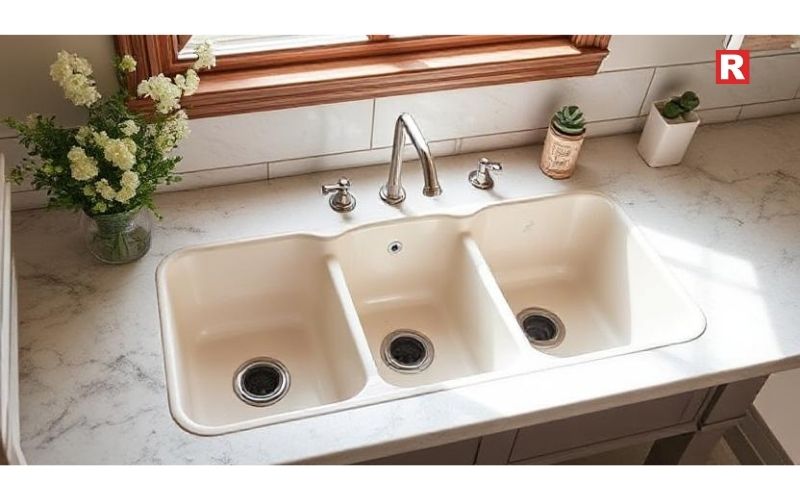
The majority of commercial kitchens in India are equipped with a three-compartment sink. It is a simple, efficient solution that does not require complicated technology to achieve basic hygiene criteria. The procedure is simple and complies with basic sanitary guidelines.
How it works:
- Wash: Hot, soapy water is used to wash dishes in the first compartment.
- Rinse: Use clean, hot water to rinse the soap off in the second chamber.
- Sanitize: The dishes are cleaned in the third and last container, typically using very hot water or a chemical sanitizer solution.
Pros of the Three-Compartment Sink:
- Low Initial Investment: The largest benefit is probably the low initial investment. The initial cost of a three-compartment sink is significantly less than that of a commercial dishwasher. For newly opened restaurants with little funds, this may be a deal-breaker.
- Zero Operating Costs (Apart from Water and Chemicals): You don't have to be concerned about electricity usage or equipment servicing. Water, detergent, and sanitizer are the only continuous expenses, and they are affordable.
- Versatility: Dishes are not the only function of the sink. You can soak tough stains, wash veggies, and even clean big pots and pans that might not fit in the dishwasher.
- Ease of Use & Repair: It is an easy-to-use technology that requires little training. In most cases, a local plumber can swiftly and reasonably fix anything that breaks.
Cons of the Three-Compartment Sink:
- Labor-intensive: The true expenditure can be found here. The entire procedure is done by hand and takes a lot of staff time and energy. This can eat up important man-hours that could be spent on other things in a busy kitchen.
- Inconsistent Outcomes: The individual performing the cleaning has a significant impact on how effective the procedure is. Staff members may hurry through the procedures in a high-pressure setting, which could result in improperly sanitized dishes.
- High Water and Energy Consumption: The manual procedure frequently wastes a lot of water, even if the equipment is not using energy. Significant energy is also needed to keep the water in all three compartments hot, particularly in a large operation.
- Space Requirements: In most Indian commercial kitchens, floor space is a valuable resource, and a three-compartment sink takes up a significant portion of it.
Know more: How to Train Your Staff to Spot Bad Seafood in Five Easy Steps
The Modern Solution: The Commercial Dishwasher

In India, huge restaurant chains and luxurious hotels have been using commercial dishwashers more frequently in recent years. They provide a more effective, sanitary, and reliable way to deal with the persistent problem of dishwashing.
How it works:
- Pre-Rinse: To get rid of big food particles, staff members rinse the plates beforehand.
- Load: The machine is filled with dishes that have been arranged in racks.
- Wash, Rinse, Sanitize: To wash, rinse, and sanitize the dishes, the machine automatically cycles through a mix of high-pressure water jets and extremely hot water.
Pros of the Commercial Dishwasher:
- Superior Hygiene and Consistency: The main benefit of a dishwasher is its superior hygiene and consistency. Every dish is consistently cleaned thanks to the high-temperature water (typically above 82°C or 180°F) or chemical sanitizing system, which is essential for the health and safety of customers.
- Labor and Time Savings: One dishwasher can quickly clean a large number of dishes. This increases the productivity and efficiency of your kitchen by freeing up staff to concentrate on other duties.
- Water and electricity Efficiency: Modern dishwashers are made to use very little water and electricity. They utilize just the right amount of water each cycle, which can lower your utility bills over time.
- Space-Efficient Models: Compact under-counter versions that are suitable for tiny kitchens and bigger conveyor units for high-volume operations are examples of space-efficient models. This lets you select a machine based on the amount of space you have available.
Cons of the Commercial Dishwasher:
- High Initial Investment: The cost of a commercial dishwasher is high. For new businesses or small-to-medium-sized restaurants with little funding, this could be a significant challenge.
- Costs of maintenance and repairs: These devices have complex structures and moving parts that are prone to malfunction. Dishwasher repairs often call for a skilled expert, and the parts could possibly be costly.
- Electricity Use: Although they use less energy every cycle, they do use electricity, which is something to take into account in areas where electricity prices are high.
- Not Ideal for All Items: You may still need a sink for really large pots and pans, as well as some delicate utensils that may not fit or should not be cleaned in a dishwasher.
What's new: Easy & Delicious Meal Prep Ideas for a Busy Week
Key Considerations for Indian Restaurateurs
For Indian restaurateurs, analyzing the pros and cons is not enough to make a decision. It is necessary to consider specific local circumstances.
- Water Quality: Mineral buildup and gradual damage to dishwashing components can result from hard water, a common issue in many regions of India. The cost may increase if you need to use particular detergents or buy a water softener.
- Staff Training and Skill Set: Although a dishwasher makes things easier, your staff must receive the necessary training to operate it, load it quickly, and deal with small problems.
- Power Supply Reliability: "Load shedding," or power outages, might cause a dishwasher's cycle to be interrupted. Even in the event of a power outage, a three-compartment sink keeps your business running smoothly.
- Labor Costs: Although dishwashers reduce labor costs, labor costs in India are frequently less than in many other nations. You must carefully determine whether labor savings balance the dishwasher's expensive initial cost and possible repair expenses.
A Three-Point Checklist to Make the Final Decision

Asking yourself these three important questions will help you make the best decision:
1. What volume do you have?
A three-compartment sink is probably the most sensible and economical option if your restaurant is a small, small-scale business. A commercial dishwasher is a smart investment that will pay for itself in labor and efficiency, whether you're managing a busy café, a high-volume restaurant, or a hotel with meeting space.
2. What are your priorities?
Is cutting initial expenses your key priority? In that case, the sink is the obvious winner. Is maintaining constant, superior efficiency and hygiene your top priority? In that case, a dishwasher is the best option.
3. What is your long-term vision?
Are you a new restaurant testing the waters with plans to expand? You can begin with a sink and then upgrade to a dishwasher as your business expands. If you're a well-established brand trying to improve your operations and raise your standards, a dishwasher is the logical next step.
Check out: 5 Key Features a Restaurant Pizza Oven Should Have
10 Surprising Health Benefits of Having Plant-Based Diet
Beyond the Kitchen: The Customer's Perspective
- Building faith: A sparkling clean glass or a spotless plate creates immediate, natural faith in your business.
- Hygiene as a Differentiator: A high-tech dishwasher demonstrates your attention to hygiene, setting you apart from the competition.
- Efficiency for Better Service: Fast dishwasher cycles ensure that staff always have clean dinnerware, reducing delays during peak hours.
- Satisfied Customers: Smoother operations result in a better dining experience and more favorable feedback.
- Enhanced Reputation: Outstanding cleanliness portrays a skilled staff, which benefits your restaurant's reputation.
- Justifying Pricing: High hygiene standards help you justify higher prices by indicating greater quality.
- Repeat Business: Customers who are satisfied with your hygiene are more likely to return.
- Professional Image: Cleanliness on all objects, from silverware to plates, conveys a professional and meticulous image.
- Better Reviews: A smooth, clean experience generally results in great online reviews.
- Marketing from the Back: Back-of-house hygiene might be one of your many powerful marketing weapons.
Read this: 7 Tips That Can Help Restaurants Make More Revenue During Festivals
Conclusion
Both the three-compartment sink and the commercial dishwasher have their uses in the Indian restaurant industry. The classic sink is a dependable, low-cost solution that offers versatility and is simple to maintain. It's ideal for small-scale businesses or those just starting. On the other hand, a commercial dishwasher is an effective tool for updating your kitchen, providing unparalleled hygiene consistency as well as significant long-term labor and utility cost savings.
The ideal option for your restaurant relies on your specific circumstances. It's not about whether the solution is generally superior, but rather which one best fits your company's size, budget, priorities, and long-term goals. By carefully considering these criteria, you can make a decision that assures your back-of-house operations run as smoothly and successfully as the great food you offer.

The quality of a restaurant's ingredients determines its reputation, and when it comes to seafood, this cannot be compromised. Knowing how to recognize rotten seafood is essential for any restaurateur in India's thriving food industry, where seafood from inland and coastal fishermen is a delicacy. Serving anything other than clean seafood in a restaurant, seafood market, or catering business can have serious consequences, ranging from unhappy consumers and a damaged reputation to severe health issues. That is why providing your staff with the skills and expertise to detect poor seafood is not just a good idea, but also essential.
This complete article will simplify the crucial elements of seafood quality into five easy steps, offering a strong foundation for staff training. Your staff will have the sensory skills necessary to guarantee that every piece of seafood that enters your restaurant meets the strictest requirements of freshness by the conclusion of this article.
Read more: Pouring Festive Cheer: Beers & Spirits Winning Consumer Carts This Season
Step 1: The Visual Inspection – What Meets the Eye

Examining seafood carefully is the first line of defense against contaminated seafood. Similar to evaluating a book by its cover, you can conclude a lot about the freshness and handling of fish, shellfish, and crabs based on their first appearance.
For Whole Fish(e.g., pomfret, rohu, kingfish):
- Eyes: This is usually the most obvious indicator. The eyes of fresh fish should be bright, clear, and bulging with black pupils. Eyes that are dull, sunken, or cloudy are instant warning signs of aging or poor storage.
- Gills: The gill plate should be raised. In addition to being moist and devoid of slime or discoloration, the gills should be a vivid crimson or pink. Strong signs of spoiling include brown, grey, or sticky gills.
- Skin and Scales: The skin should be taut, shiny, and moist, and the scales should be securely attached to the body. Scales that are easy to rub off or dull, dry, flaky skin indicate that the fish is beyond its best. Check for cuts, bruises, or indications of rough treatment.
- Flesh: When inspecting fish fillets, their meat should be juicy, firm, transparent, and naturally shiny. Steer clear of any fish whose flesh is discolored, gaping, dry, or opaque.
For Shellfish (Shrimp, Scallops, Mussels, Clams, Oysters):
- Shrimp: Particularly around the shell's edges, they should be firm, glossy, and free of black spots. An overpowering ammonia odor is an apparent sign of spoiling.
- Scallops: They should have a light, pleasant scent and be firm, juicy, and translucent. Spoiling is indicated by a milky liquid or a strong, fishy smell.
- Clams, oysters, and mussels: Store live shellfish in their shells in breathable (not airtight) containers on ice. Make sure they are securely closed. Tap them gently if they're open, and throw them away if they don't close. The shells of cooked shellfish should be open; throw away those that are still closed. Their liquor ought to be clear rather than cloudy.
For Crustaceans (Lobster, Crab):
Live Crustaceans should be lively and responsive. They should have hard, undamaged shells that aren't cracked or discolored. They are not fresh or alive if they are not moving or have an unpleasant odor.
Training Tip: Use visual assistance as a training tip! Make a poster including "Good vs. Bad" pictures of different kinds of seafood. While receiving and preparing, go over these with your employees regularly.
Know more: 7 Essentials to Keep Staff Trained in Your Restaurant
Step 2: The Odour Test – Trust Your Nose

One of the most effective ways we can detect spoiling is by using our sense of smell. The scent of fresh seafood is unique, subtle, and frequently oceanic—think of a crisp sea breeze or a cucumber. Anything different from this is enough for concern.
- Fresh fish: These should have a clean, slightly pleasant smell, or perhaps a hint of the water. It should never have a noticeable "fishy," sour, rancid, or ammoniated scent.
- Shellfish: A fresh, salty scent is characteristic of live shellfish. Shellfish that have been cooked should smell sweet and delicious. If it smells strong, pungent, or sour, throw it out right away.
- Ammonia Smell: An important sign of bacterial breakdown is the smell of ammonia, which is particularly common in shrimp and other crustaceans. Major spoiling is indicated by any trace of ammonia.
Training Tip: Perform a "smell test" as part of your training. Offer samples of seafood that are actually fresh, as well as some that are starting to change (but not so much that it is dangerously spoiled), if at all possible. This enables staff to adjust their noses to pick up on minute differences. Emphasize that it is safer to throw away anything that has any questionable odor.
Step 3: The Touch Test – Feel for Firmness

Another important indicator of seafood quality is its texture. While rotten seafood tends to get soft and mushy, fresh seafood typically has a strong, elastic texture.
For Fillets & Whole Fish:
- Firmness: Use your finger to gently massage the flesh. It should bounce back right away and be firm. The fish is probably old if its dent is still there or if the flesh is mushy and soft.
- Slime: A natural, light layer of slime should naturally cover fresh fish, but it shouldn't be overly thick or discolored. Bacterial growth is indicated by an unusually thick, yellowish, or sticky slime coating.
For Shellfish:
- Shrimp & Scallops: When cooked, shrimp and scallops should feel firm and have a little "snap" to them. They should feel firm to the touch when raw.
- Mussels, Clams, Oysters: The shells of mussels, clams, and oysters should feel solid and heavy. The meat should be firm and plump when shucked, not shriveled or watery.
Training Tip: While doing the touch test, remind employees to always use gloves while handling raw seafood. Describe how hardness is related to structural integrity, which quickly deteriorates with spoiling.
Check out: How to Find Good Staff for Your Restaurant
Practical ways to train staff for better customer service
Step 4: Temperature and Storage – The Unseen Contributors

Although sensory, smell, and visual inspections are important, knowing how to properly control temperature and store food is essential to avoiding spoiling in the first place. Improper handling is generally the first step towards bad seafood.
- Receiving Temperature: 41°F (5°C) or lower is the ideal temperature for any seafood. When frozen seafood is delivered, it should be solidly frozen and show no symptoms of thawing and refreezing (such as freezer burn or big ice crystals).
- Storage Temperature: Keep fresh seafood between 32 and 38°F (0 and 3°C) in the coldest section of your refrigerator, preferably wrapped in ice. Because prolonged contact with standing water will hasten spoiling, make sure any melted ice water can drain away.
- Cross-Contamination Prevention: To avoid spills contaminating other foods, place raw seafood beneath cooked or ready-to-eat food. Use different utensils and cutting boards.
Step 5: When in Doubt, Throw It Out! – The Golden Rule

This last step is possibly the most important one to teach your employees: seafood should be thrown out if there is any doubt about its safety or freshness. When weighed against the possible financial, reputational, and health consequences of serving subpar seafood, the expense of throwing away a piece of fish is insignificant.
- No Compromises: Educate employees that seafood is never "almost fresh." If any of the three senses—sight, smell, and touch—raise concerns, the product is damaged.
- Empowerment: Allow your employees to make these choices without worrying about backlash. Establish a culture where the safety of food comes first.
- Documentation: Encourage employees to keep records of any seafood that is thrown out, along with the reasons why. This can assist in locating problems with internal handling procedures or suppliers.
Training Tip: Provide actual cases of how rapidly a food safety violation may harm a business. Remind them that their ability to identify faulty seafood directly affects the operation's overall success and safety. Emphasize that discarding suspicious products is an important investment in maintaining brand integrity and gaining the trust of customers, not a waste.
What's new: 3 Key Strategy to Retain Staff in Restaurant
Addressing Unique Challenges in the Indian Supply Chain
Although each of the five steps is universal, the unique food supply chain in India presents particular difficulties for restaurateurs. By educating your staff about these variables, you may stop many problems before they start.
- Dependency on Regional Vendors: A lot of Indian restaurants get seafood from regional markets or small-scale suppliers who do not have access to advanced cold storage facilities. Teach your employees to be extremely watchful while receiving these deliveries because the seafood may have traveled considerable distances in unrefrigerated circumstances before reaching your kitchen.
- Monsoon Season Variables: Fishing activities are greatly impacted by the monsoon season, which runs from June to September. There may be a shortage of seafood during this time; therefore, some suppliers might try to sell frozen or older stock. Teach your staff to be more watchful during these months and to inquire about the seafood's place of origin.
- Diverse Seafood Types: Due to India's extensive coastline, a wide range of regional seafood is available, ranging from the saltwater Pomfret and Kingfish in coastal areas to the freshwater Rohu in the north. Make sure your employees are taught the unique freshness indicators for each kind of seafood you use, as they can differ somewhat from one another.
- Traditional vs. Modern Logistics: Some providers continue to employ outdated transportation methods, such as ice-filled open trucks, which can be less dependable than modern refrigerated vans. Teach your staff the significance of looking for indications of temperature abuse or thawing, such as a soft texture in a supposedly frozen product or an excessive amount of melted ice water.
- Adulteration and Mislabeling: Older or lower-quality fish can occasionally be marketed as premium varieties. Your best line of protection against this type of scam is a well-trained staff that can recognize different types of fish by their texture, scent, and appearance.
Read this: How Training Helps Build a Healthy Restaurant Culture
Conclusion
Quality and trust are key factors in a restaurant's reputation in a cutthroat food industry like India's. It is not only a job to train staff to be masters at identifying poor seafood; it is an essential investment for your restaurant’s future. Your staff becomes the front-line defense for your business by regularly using the five-step sensory checklist and dealing with particular local challenges. It fosters a culture of continuous food safety by giving them the power to throw out damaged stock. This dedication guarantees that every meal is proof of the honesty and quality of your restaurant and promotes loyalty to your customers.

The simple pizza has transcended its Italian roots to become a global sensation, and it has also become very popular in India. Pizzerias are popping up everywhere, from bustling cities to peaceful towns, all seeking that perfect slice. But what exactly differentiates a good pizza from a superb one? While ingredients and technique are important, the unsung hero and heart of any great pizza shop is unquestionably the pizza oven.
For Indian restaurateurs looking to take advantage of the expanding pizza market, investing in the appropriate oven is more than an option; it's a strategic must. A superb pizza oven does more than just cook; it also crafts. It gives each crust the desired char, ensures a properly melted cheese blanket, and highlights the varied flavors of your toppings. Without a decent oven, even the best dough and freshest ingredients might fall flat, resulting in inconsistent quality, customer disappointment, and, eventually, a failing business.
This full article is aimed at Indian restaurateurs. We'll go over why a good pizza oven is essential, how to evaluate its quality, and then thoroughly examine the 5 key features that every restaurant pizza oven should have to ensure your establishment stands out in India's competitive culinary environment.
Read more: Top 7 Tips for Efficient Energy Management in A Restaurant Kitchen
Why a Good Pizza Oven is Non-Negotiable for Indian Restaurants
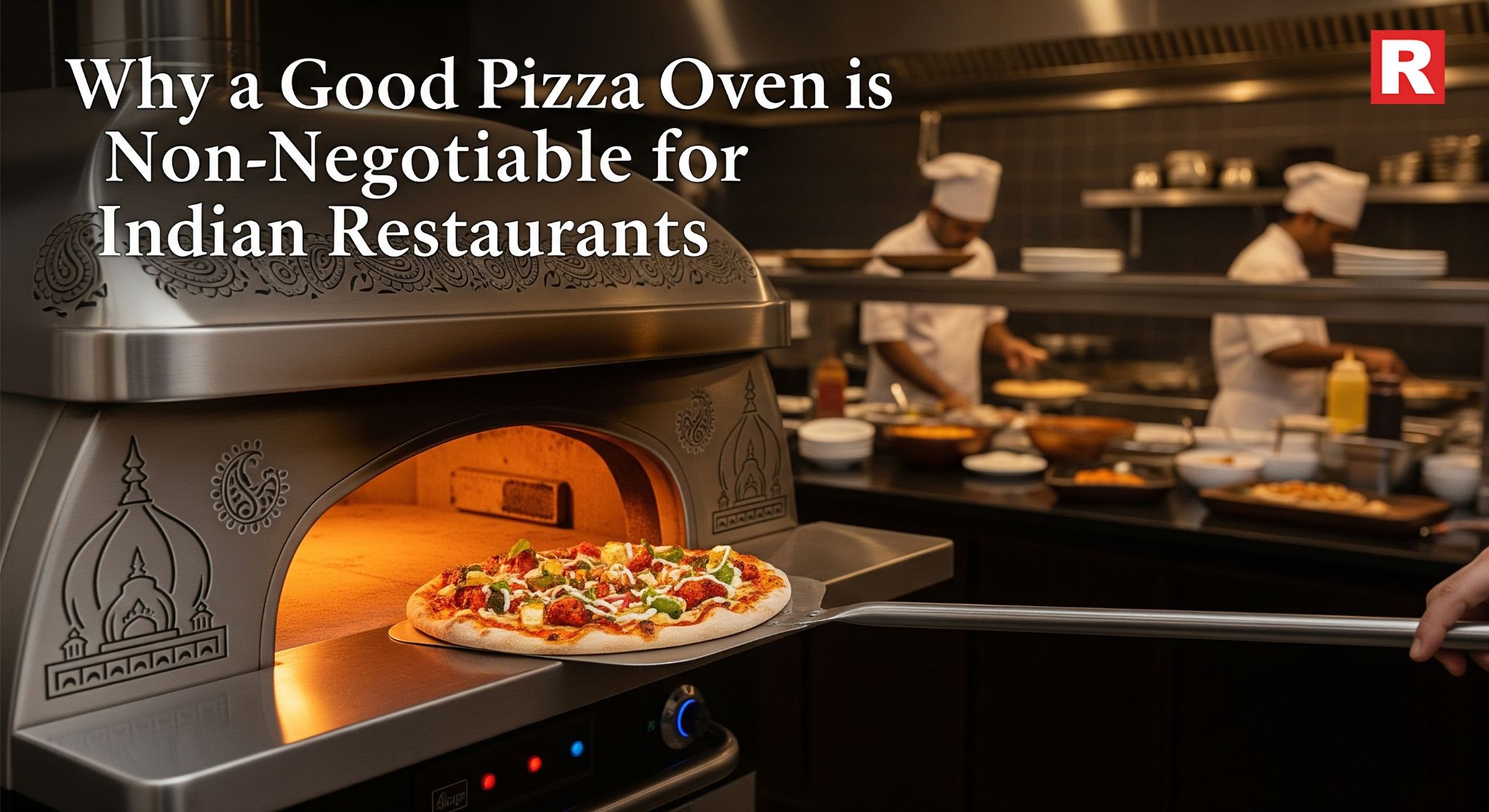
In India, where dining out is a common activity with family and friends, there are high expectations for quality and consistency. For pizza, this means:
- The Perfect Crust: Indians value texture. An excellent oven achieves the perfect balance of crispy outside and chewy, airy inside - the characteristic of a delicious pizza. It allows the dough to rise quickly (oven spring), resulting in the desired airy crust.
- Flavor Development: Intense, steady heat caramelizes the sugars in the dough, producing rich flavors that an average oven cannot match. It also brings out the greatest flavors in toppings.
- Speed and Efficiency: In a high-volume market, speed is critical. An excellent oven cooks pizzas quickly and efficiently, resulting in shorter wait times, satisfied customers, and efficient kitchen operations.
- Consistency is King: Customers expect to have the same excellent pizza every time. A high-quality oven keeps accurate temperatures, minimizing hot spots and ensuring even cooking across every pizza and order.
- Versatility and Menu Expansion: Many modern pizza ovens can also handle other baked items, flatbreads (such as Indian naan or roti if specifically constructed), roasted vegetables, and even baked sweets, allowing for menu diversity.
- Energy Efficiency (Cost Savings): While the initial expenditure may be higher, a well-insulated, efficient oven can significantly decrease long-term energy expenses, which is an important issue for Indian businesses.
How to Assess the Quality of a Pizza Oven
Before we get into features, how do you know if an oven is genuinely "good"?
- Temperature reach and Retention: Can it continuously attain and maintain extremely high temperatures (for example, 600-900°F or 315-480°C) even during peak hours?
- Heat Distribution: Is the heat even across the entire cooking surface? Are there any evident hot and cold spots?
- Recovery Time: How quickly does the oven recover to its ideal temperature after removing a pizza and inserting a new one?
- Build Quality: Look for strong construction, long-lasting materials (stainless steel, fireproof brick), and great insulation.
- User-friendliness: How easy is it to use, clean, and maintain? Is there a convenient control scheme?
- Fuel Efficiency: How much fuel (gas, wood, or electricity) does it require to reach and sustain the temperature?
Know more: How Health Regulations are Reshaping India's Dining Scene
5 Key Features a Restaurant Pizza Oven Should Have
1. High & Consistent Operating Temperature with Rapid Recovery
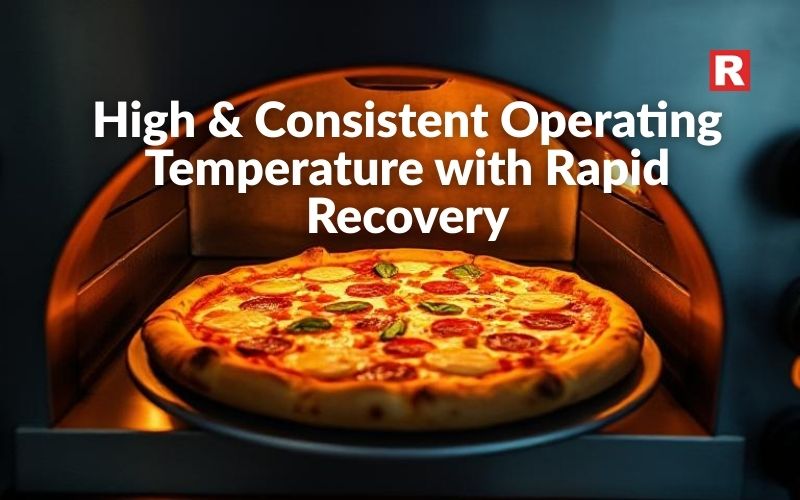
This is likely the single most important characteristic. Authentic Neapolitan-style pizza, for example, requires temperatures above 900°F (480°C) to cook in just 60-90 seconds. While not all Indian pizzerias strive for Neapolitan style, high heat is required for any superb pizza.
Why it's crucial for Indian Restaurateurs:
- The "Maillard Reaction" and Carmelization: Intense heat quickly browns the crust (Maillard reaction), resulting in those desirable char areas and revealing complex, savory flavors. This is what gives pizza its characteristic flavor and scent.
- Perfect Oven Spring: High heat causes the dough's moisture to quickly change into steam, puffing up the crust edges (the cornicione) and creating a light, airy feel that Indians love.
- Speed for Volume: India's dining culture often involves huge gatherings and peak-hour rushes. A quick-cooking oven means more pizzas served faster, which reduces wait times and increases table turnover.
- Preventing Soggy Pizzas: Low oven temperatures extend cooking time, drying out toppings, and frequently result in a soggy, undercooked crust. High heat ensures that the base is crisp before the toppings are overcooked.
- Fuel Type Considerations:
- Wood-fired ovens provide the greatest temperatures, a distinct smoky flavor, and visual appeal. Although it requires expert handling and ventilation.
- Gas-fired ovens provide excellent temperature control, heat up quickly, and are frequently less expensive to operate. Some can replicate wood-fired flavor by adding wood chips.
- Electric ovens are the most consistent and simple to use, although they may struggle to attain the extremely high temperatures required for some pizza types. Ideal for small operations or certain pizza styles.
How to Assess: Look for ovens that can reach at least 600°F (315°C) for standard pizza and 800-900°F (425-480°C) for true Neapolitan. Inquire about its "BTU rating" for gas or "kilowattage" for electric, and specifically about recovery time, which is how quickly it recovers after opening the door or loading a cold pizza.
2. Superior Insulation and Durable Construction Materials
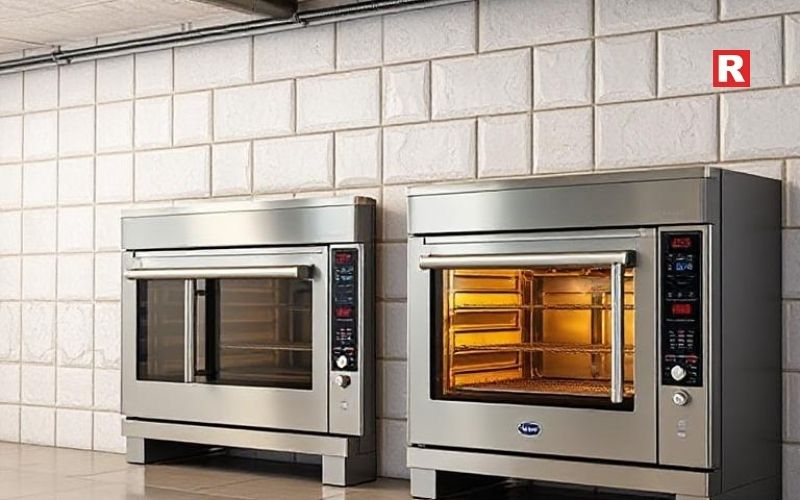
A pizza oven is a long-term investment. Its ability to hold heat and tolerate prolonged high-temperature operation has a direct impact on its efficiency, durability, and consistency.
Why it's crucial for Indian Restaurateurs:
- Energy Efficiency: Well-insulated ovens retain heat better, requiring less fuel to maintain temperature, resulting in significant savings on power or gas bills - a major operational cost in India.
- Consistent Baking: Maintaining a consistent interior temperature, independent of exterior kitchen conditions or frequent door openings, guarantees that each pizza cooks evenly. Poor insulation causes temperature variations, resulting in unevenly baked pizzas.
- Durability and Longevity: An oven made of high-quality, heat-resistant materials (such as high-density ceramic fiber insulation, fireproof brick for the hearth, and heavy-gauge stainless steel exterior) will withstand the rigors of a busy Indian commercial kitchen for years, reducing repair costs and downtime.
- Safety: Good insulation keeps the oven's outside cool, lowering the risk of burns for kitchen staff - an important safety factor.
- Heat Retention: This is especially significant for ovens that use stored heat (such as classic brick ovens). Excellent insulation keeps the oven hot for an extended period of time, even when the heat source is lowered or shut off.
How to Assess: Refer to the oven's specifications for insulation thickness and material type. Examine the build quality: does it feel robust? Inquire about the guarantee for structural parts. For wood-fired ovens, the thickness and quality of the dome material are critical.
What's new: 10 Surprising Health Benefits of Having Plant-Based Diet
3. Optimal Heat Distribution (Convection, Conduction, and Radiant Heat)

A true great pizza oven uses a balanced blend of all three heat transfer processes to cook a pizza correctly.
- Conduction: Direct heat from the heated oven floor (baking stone/hearth) cooks the crust's bottom.
- Convection: Hot air circulates within the oven, cooking the toppings evenly.
- Radiant Heat: The dome and flame (in wood/gas ovens) emit intense radiant heat, which cooks the top of the pizza by melting cheese and charring the dough.
Why it's crucial for Indian Restaurateurs:
- Even Cooking: Avoids burnt crust bottoms with undercooked toppings, and vice versa. A balanced heat distribution guarantees that the pizza's top, bottom, and edges all cook at the same time and evenly.
- Crispy Bottom, Melted Top: The stone's powerful conductive heat produces a crisp base, while the radiant and convective heat from above properly melts cheese and cooks toppings without drying them out.
- The "Puffy Crust" Effect: With balanced heat, the border (pizza crust edge) puffs up elegantly and browns evenly, resulting in the desired artisanal look and texture.
- Versatility: Ovens with excellent heat distribution are more adaptable, able to handle a variety of pizza styles (thin crust, pan pizza, deep dish) and other baked goods with satisfactory outcomes.
- Reduced Turning: With even heat, the pizza requires less continuous turning, saving time and effort for the kitchen staff, particularly during peak hours.
How to Assess: In demos, check to see if the pizzas are cooking uniformly. Look for features such as numerous heating elements (in electric ovens), adjustable flame controls (in gas ovens), and a unique dome design in wood-fired ovens that optimizes heat circulation. Inquire about the material and thickness of the baking surface (such as fireproof stone or brick).
4. Adequate Capacity and Door Opening Size
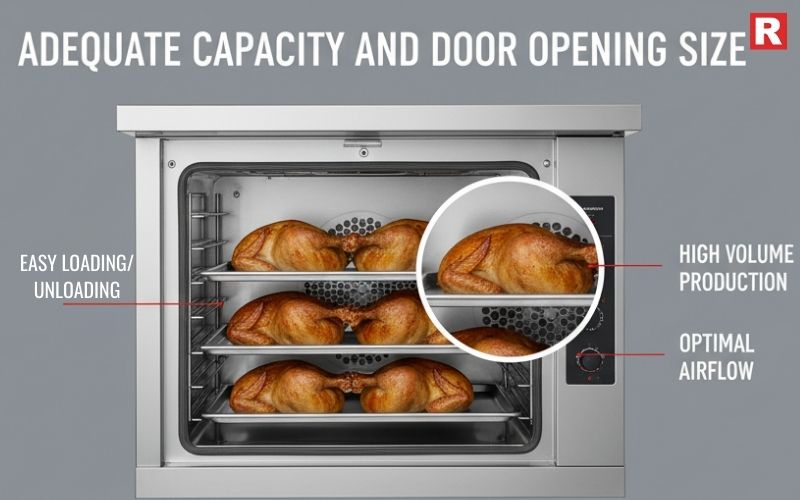
The oven's physical dimensions, particularly its interior cooking space and the size of its mouth/door opening, must be compatible with your restaurant's operational requirements.
Why it's crucial for Indian Restaurateurs:
- Efficiency during peak hours: A larger cooking surface allows you to bake more pizzas at once. Plenty of space is critical for a busy Indian restaurant expecting significant attendance, particularly on weekends or during festivals, to meet demand and avoid long wait times.
- Pizza Size Versatility: The inside dimensions should comfortably hold the largest pizzas you want to provide, as well as enough space to rotate them.
- Ease of Operation: With a sufficiently broad and tall door opening, employees can simply insert, retrieve, and rotate pizzas with their peels without scratching the edges or straining with clearance. A tiny entrance can result in leakage or uneven cooking.
- Ergonomic and Safety: A properly sized opening improves comfort for the pizza chef by decreasing strain and boosting visibility.
- Future Growth: Think about your future expansion ambitions. It is typically preferable to invest in an oven with slightly more capacity than you now require to support future development without the need for an urgent upgrade.
How to Assess: Specify your expected peak-hour output (pizzas per hour) and the largest pizza size you'll serve. Measure the oven's internal deck size and door opening.
Check out: 5 Ways AI is Changing the Indian Restaurant Industry
Top Rajasthani Dishes to Try This Festive Season
5. User-Friendly Controls and Easy Maintenance/Cleaning
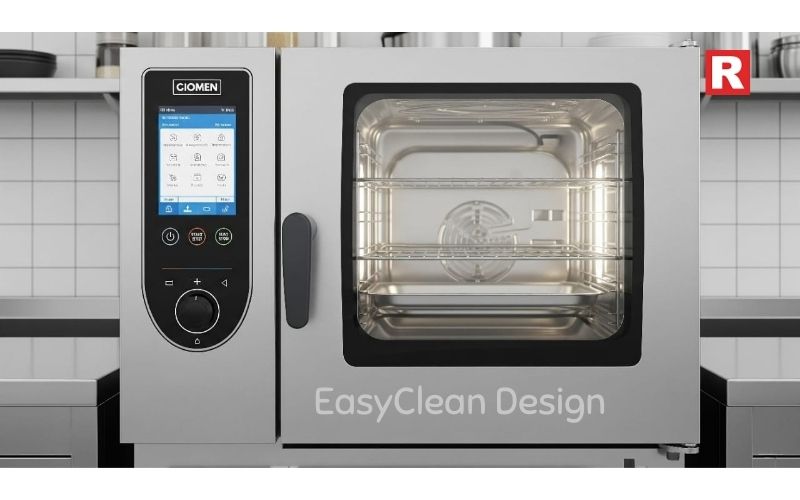
A cutting-edge oven is only as good as its usability. In a fast-paced Indian kitchen, simple controls and easy maintenance are essential.
Why it's crucial for Indian Restaurateurs:
- Reduced Training Time: With simple, straightforward controls, new employees can be trained quickly and efficiently, lowering operating friction.
- Consistency and Precision: With digital temperature displays, timers, and easily adjustable settings, cooks can retain perfect control over the baking process, resulting in consistent pizza quality regardless of who operates the oven.
- Operational Efficiency: Ovens with self-cleaning modes (for some electric/gas models), easy-to-remove ash trays (for wood-fired versions), and smooth, wipeable surfaces considerably minimize daily cleaning time.
- Hygiene and food safety: A difficult-to-clean oven can become a breeding ground for bacteria, lowering food quality and potentially violating health codes. Surfaces are easy to clean, and internal components are easily accessible, ensuring that high hygiene standards are met.
- Longevity: Proper and regular cleaning extends the oven's life by preventing buildup and rust. Staff are encouraged to keep the oven in good working order thanks to user-friendly maintenance features.
How to Assess: Look for ovens with clear digital displays, user-friendly dials or touchscreens, and easy-to-clean components. Request that the supplier demonstrate the cleaning techniques.
Read this: What are Food preservatives and how to identify them on labels in India
Conclusion
For Indian restaurateurs, the path to creating the ideal pizza is exciting, but it all starts with a foundational investment: the correct pizza oven. It's more than simply a piece of equipment; it's the furnace in which your ingredients turn into a culinary masterpiece, the engine that pushes your kitchen's efficiency, and the silent partner in establishing your restaurant's brand.
When you prioritize high and consistent temperatures, superior insulation, optimal heat distribution, adequate capacity, and user-friendly features, you're not just purchasing an oven; you're investing in consistency, speed, quality, and, ultimately, the unforgettable taste that will make your Indian pizzeria a popular destination. Make intelligent choices and let your oven bake your way to success!

In India, the festive season is not just a time to celebrate; for the restaurant sector, it is a time when they can get high profits if they use this time properly. For the people, it is a time of joy and celebration. And to celebrate, they visit different places, including restaurants. Many people order food and dine out during festive times, such as Christmas, Eid, or Diwali. If a restaurant wants to attract more customers and increase revenue during this period, it needs to employ a strategic approach that can be implemented quickly. But this doesn’t mean that the restaurant only provides a festive discount as a marketing strategy. As many restaurants are trying to make profits during festivals, you need a more strategic, creative approach that can outshine other restaurants and make your restaurant the most appealing. And, combining culinary brilliance with astute marketing and operational efficiency is the key to realizing a restaurant's potential.
This article offers seven practical ideas for restaurants to increase their customer base, develop a loyal following, and boost sales over the holiday period, going beyond the standard "offer a discount" approach.
Read more: 10 Must-Try Goan Dishes That Define Its Rich Food Culture
Tip 1: Curate an Exclusive, Limited-Time Festive Menu

Simply placing a generic "20% off" banner is a common mistake that most restaurants make. Creating a special, exclusive cuisine that represents the festival's spirit is a much more successful tactic. This is about a memory, not just food.
- Create a Theme: Develop a menu centered on the festival's theme. A "Deepavali Delicacies" menu for Diwali can include lavish, rich dishes and classic desserts. An "Iftar Platter" or "Suhur Feast" could provide carefully chosen food during Ramadan. A "Yuletide Feast" for Christmas can consist of warm, pleasant drinks and roasted specialties. Serve an ordinary but elegant vegetarian meal with healthy, light foods on Buddha Purnima. Create a special vegetarian Jain dinner for Mahavir Jayanti that stays away from all root vegetables, such as potatoes, onions, and garlic. Take inspiration from the langar and serve a meal of warm and simple Punjabi favorites for Guru Nanak Jayanti that are both festive and soothing.
- Elevate Ingredients: Take advantage of this chance to include seasonal or premium items that you don't usually use. This gives customers a sense of luxury while justifying a higher price point. Consider truffle-dusted paneer tikka, saffron-infused biryani, or desserts made with real dry fruits and nuts.
- Create Urgency: By offering a limited-edition menu, a restaurant invites customers to come during the festival in order to sample something that isn't available at any other time of the year.
Tip 2: Master the Art of the Festive Package & Gifting

The art of sharing and giving is a fundamental part of India's traditions during the holidays. A smart restaurant picks up on this by producing beautifully wrapped holiday gift baskets and meal boxes. This expands your sources of income beyond in-house dining.
- Family Meal Boxes: Provide carefully chosen family meal boxes made for celebrations at home. A variety of your specialties, appetisers, and a free dessert might be included. This satisfies the growing trend of private home gatherings.
- Corporate & Gifting Hampers: Offer corporate gift hampers by collaborating with nearby companies. Gourmet items from your restaurant, such as freshly baked cookies, spicy appetizers, handmade jams, and exotic mithai, can be placed inside these. This is a small, profitable business concept that has the potential to generate significant profits.
- Branded Packaging: It all comes down to appearance. Invest in attractive, well-made packaging that complements the holiday theme. A simple meal becomes an attractive gift when presented in a beautifully wrapped, branded box.
Know more: Top 7 Regional Indian Thali Platters That Showcase Culinary Diversity
Tip 3: Leverage Digital and Social Media Marketing

Your marketing should be as visually stunning as the holidays themselves. Your most effective tool for reaching your target audience and generating buzz is social media.
- High-Quality Content: Make an investment in expertly taken pictures and videos of your unique festive menu items. Display your dishes' depth and color on social media sites like Facebook and Instagram. To build excitement and anticipation, use short-form movies to provide a behind-the-scenes glimpse of the preparation.
- Targeted Ads: Use social media to target users who live nearby or who have expressed interest in your food in the past. By marketing a special menu in a neighborhood, you may target your advertisements to specific groups of people celebrating a given event.
- Engage with Hashtags: To boost your exposure and naturally reach a larger audience, use pertinent and popular hashtags relevant to the festival.
Tip 4: Optimize for Online Delivery

Platforms for online food delivery are non-negotiable, particularly during festivals when families frequently choose to host. It's important to get ready for a spike in orders.
- Exclusive Delivery Menus: Provide combo meals or unique offers that are only available on online delivery services. Customers who like the simple process of ordering in may be drawn in as a result.
- Robust Packaging: Make an investment in premium, microwave-safe, and spill-proof packaging. Large orders are frequently placed by customers during festivals, and the last thing you want is a messy delivery. To improve the unboxing experience, think about using branded, eye-catching packaging.
- Add a Personal Touch: A tiny gesture can have a big impact. With each delivery order, include a handwritten message, a free holiday treat, or a tiny expression of appreciation. This makes an impression that lasts and promotes more business.
Check out: How Health Regulations are Reshaping India's Dining Scene
Top 7 Tips for Efficient Energy Management in A Restaurant Kitchen
Tip 5: Partner with Brands and Influencers

Collaborations can help you attract more people and reach new customers. A successful collaboration may work better than a large-scale advertising campaign.
- Brand Partnerships: Offer a festive bundle by collaborating with a non-competing brand. For instance, a restaurant can collaborate with a nearby specialty coffee company to make a festive hamper or with a clothing company to give customers who present a receipt from your restaurant a special discount.
- Influencer marketing: Rather than pursuing well-known celebrities, concentrate on micro-influencers who have a loyal and active fan base in your neighborhood. Create genuine, entertaining content and invite people to sample your festive food at your restaurant. Their advice is more likely to be trusted by their followers, which will provide measurable business outcomes.
Tip 6: Enhance the In-House Dining Experience

Don't overlook the in-house dining experience, even though online orders are a huge source of income. Establish an ambiance that makes your restaurant an attraction of festivities.
- Festive Decor: Use decorations customized according to the holiday to decorate your restaurant. A gorgeously adorned Christmas tree, a serene and simple arrangement for Buddha Purnima, string lights and diyas for Diwali, or exquisite drapes for Eid are a few examples. The atmosphere created by the décor motivates customers to remain longer and post about their experiences on social media.
- Special Touches: Give every customer a happy greeting. Serve a tiny festive dessert or a complementary welcome drink. Think about playing joyful, soft music in the background. Teach your staff to be especially kind and considerate; you could even dress them in festive uniforms.
- Seating & Reservations: Plan for the rush and make effective use of a smart reservation system to regulate table turns. Make sure there are short wait times and that the entire customer experience, from arrival to departure, is smooth and enjoyable.
What's new: Top Rajasthani Dishes to Try This Festive Season
Tip 7: The Early Bird Advantage

The day of the festival is not the beginning of the holiday season. You can gain an important edge over your competition by beginning your promotions and preparations far in advance.
- Build Anticipation: Create anticipation by announcing your unique holiday packages and menu weeks in advance. Make use of social media to generate excitement and create buzz.
- Start Taking Pre-Orders: Start accepting pre-orders for your meal boxes and holiday hampers. This makes it easier to plan staff requirements and manage your inventory, which guarantees smooth operations during peak hours.
- Start Your Marketing Campaign Early: To achieve the best results and gain early bookings and reservations, your digital marketing efforts should start at least two to three weeks before the event.
What to Do After the Celebrations End
The success of the holiday season shouldn't be a one-time event. The days after the holidays are essential for establishing long-term relationships and keeping new customers.
- Send Thank-You Messages: Get in touch with customers who ordered from your special holiday menu or who dined in. They may be persuaded to come back with a personalized note and a little discount for their next visit.
- Examine the Data: Examine sales data from the holiday season to determine what was most successful, including the most well-liked dishes, the most successful marketing methods, and the best-selling packages. The strategy for next year can be planned with the help of this data.
- Start a New Project: Showcase your usual menu items and smoothly enroll new customers in your loyalty program. Give them a cause to return outside of the holiday season.
- Get Input: To get input on the festive food and service, use social media and online reviews. This helps you get better for the future and demonstrates that you respect their point of view.
Read this: 5 Ways AI is Changing the Indian Restaurant Industry
Conclusion
Restaurants in India have a great chance to increase their sales over the holiday season, but success demands more than simply a typical discount. It requires a meticulous strategic approach that centers on giving the customer quality and an unforgettable experience. In addition to making this holiday season a huge financial success, a restaurant can create a loyal customer base that will return year after year by creating unique menus, embracing smart packaging, utilizing digital marketing, and improving the in-house experience.

In today’s fast-paced dining scene, technology plays a key role — from digital reservations to contactless payments. But irrespective of all these advancements, restaurants aim to create experiences that guests remember for long time. Technology may eventually bring customers to your door, but it's the human touch that keeps them coming back.
Personal Touch is Irreplaceable
“We believe the personal touch is irreplaceable. A warm welcome, a conversation about the dish or a smile from the chef— that’s what guests remembers. Tech can enhance convenience, but hospitality is still about human connection,” shared Srikar Shetty, Founder & CEO, DJRS Hospitality.
There’s no denying that it’s about creating an everlasting impression on the guest.
“At Eve, we’ve always believed that hospitality should feel personal. Technology has made operations seamless, reservations quicker, and communication sharper — but what guests really carry with them is the feeling of being looked after. That’s why every visit begins with a welcome drink at the entrance, setting the tone of care that continues throughout their time with us,” mentioned Sumit Govind Sharma, Director at Monarch Liberty Hospitality.
Integrating Tech
Tech helps us reach guests faster and operate smarter, but it’s the human touch that builds loyalty. Balancing the two is key where tradition shape's identity and innovation keep the experience fresh without losing its soul. “We use tech as a support system, not a replacement. It helps us streamline operations, but the essence of our service remains deeply personal,” added Shetty.
Technology is a support system, not the main act. It helps to manage the reservations and guest preferences efficiently, but it’s the people who bring warmth to the table.
Namokar Jain, Founder of One Window Hospitality said, “Technology makes things easier, online reservations, digital menus, AI-driven suggestions, but guests don’t come back for the tech, they come back for how they felt. A smile from the team, a server remembering your favorite dish, or a story shared at the table, that’s the real magic.”
Technology helps in serving better and explores new techniques, but the essence of hospitality is still human. A perfectly designed plate or a smooth ordering system means little without the warmth of the person bringing it to the table.
“Failures happen, Wi-Fi drops, apps crash, but that’s when our people step up. Their expertise, reassurance, and personal attention remind guests why dining is an experience, not just a transaction,” added Jain.
Power of Visual Storytelling
Restaurants are rooted in tradition with their ingredients, techniques and storytelling. Visual storytelling ties it all together.
“Innovation comes through how we present, curate experiences, and share our journey visually. Whether it’s a thoughtfully plated dish or a story shared on social media, visual storytelling helps us connect emotionally with our audience,” shared Shetty.
Jain stressed upon the fact that guests eat with their eyes first and every element, the plating of a dish, the ambience of the space, even a short reel tells a story. “It’s not just about how things look; it’s about how they make you feel. That emotional connection is what keeps people coming back, beyond the food or the technology.”
While, the future will be focused on smart operations like AI driven forecasting, guest convenience, immersive experiences and data personalization. Furthermore, the unchanging value of human connection remains heart of the hospitality.

Every step is crucial in the fast-paced world of commercial kitchens in India, and every detail counts. Whether it is the meticulous management of ingredients, labor, or plating by the chef and other staff members of the restaurants, every one of these factors is important. But there is one critical factor that escapes the list, and if it is not properly managed, it can even eat away at the bottom line of restaurant management. This factor is energy consumption. One of the most energy-intensive spaces in any business is the commercial kitchen of a restaurant. Its energy costs can even account for a big portion of the restaurant’s total expenses. Therefore, taking care of energy management in an effective way is no longer a second priority in the world of increased utility bills and growing environmental consciousness. It has become a necessity that should be taken care of in a strategic manner.
A restaurant can reduce its utility costs, increase efficiency in operations, and help create a more environmentally friendly future by putting smart practices and investments into place. The following article provides a road map for an eco-friendlier and more productive kitchen for Indian restaurants by describing the top 7 energy management methods.
Read more: How Health Regulations are Reshaping India's Dining Scene
Tip 1: Conduct a Comprehensive Energy Audit

If you don't measure something, then you can't manage it. A professional energy audit is the first and most important stage in an energy management plan. This thorough evaluation of your kitchen's energy use identifies areas of waste and areas with the biggest potential for savings.
A qualified auditor will examine every appliance, including your lighting and air conditioning, using advanced tools. They can identify problems such as outdated machinery, insufficient insulation, and ineffective operating procedures. A data-driven report with detailed improvement recommendations, ranging from minor adjustments to significant equipment changes, is provided by the audit. With the help of this crucial step, you can clearly see your energy conditions and choose investments to manage energy consumption that will maximize your return on investment (ROI).
Tip 2: Invest in High-Efficiency Kitchen Equipment
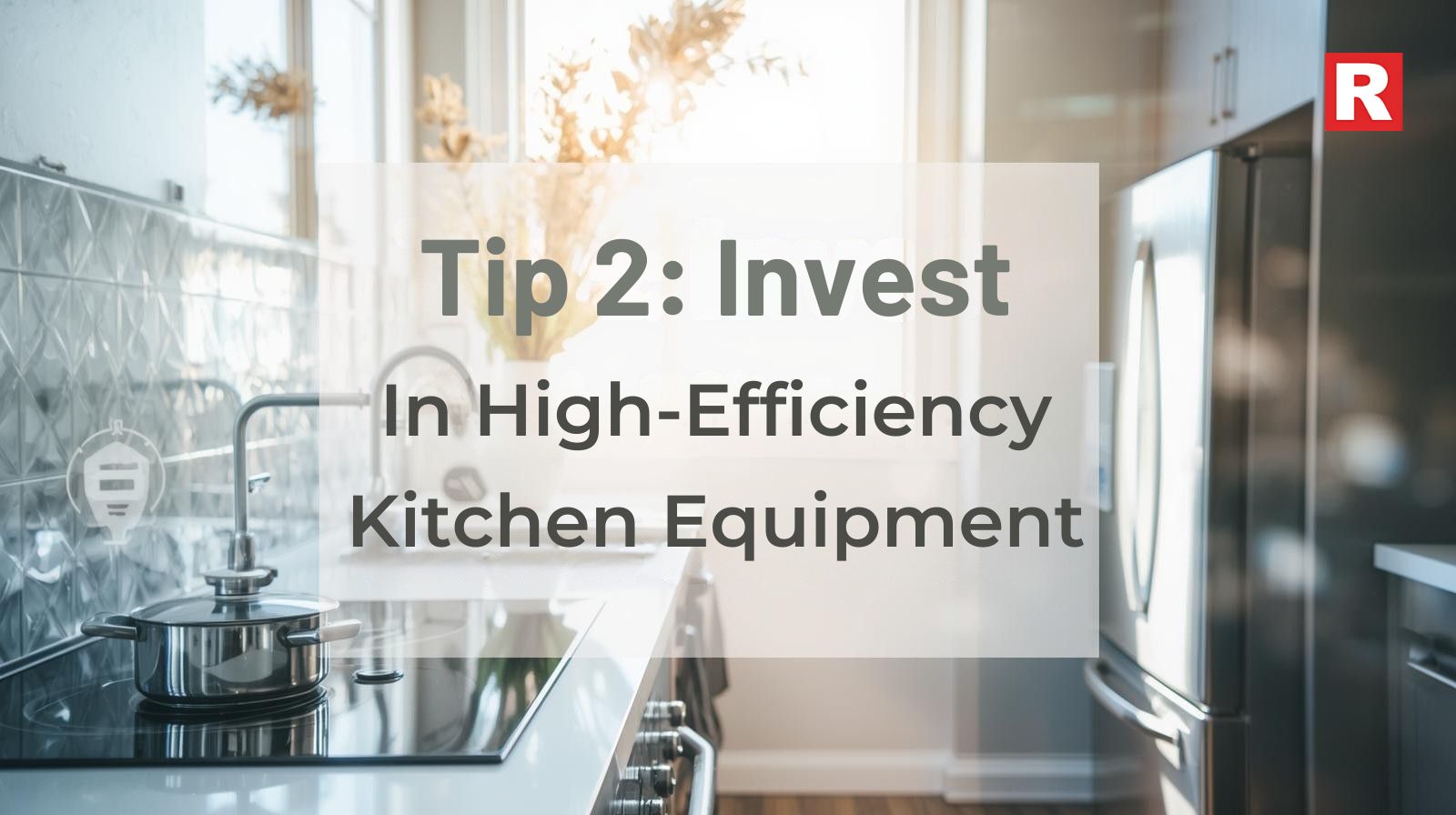
The appliances in your kitchen use the most energy. Make sure you always select high-efficiency models when it's time to upgrade or replace your equipment. They may cost more up front, but you'll save a lot of money on your electricity bill over time.
- Ovens and Fryers: High-efficiency, contemporary commercial ovens and fryers are made to use less energy while cooking food more quickly and consistently. This lowers your electricity usage while also improving food quality and cutting down on cooking time during busy times.
- Refrigerators and chillers: Your refrigerators and chillers must put in extra hours due to the temperature in India. Better insulation and more sophisticated compressors are used by high-efficiency units to maintain constant temperatures with less work.
- Tandoors and Gas Burners: Upgrade to more energy-efficient tandoors and gas burners. Modern models use less gas to provide the same amount of heat since they are built to use fuel more efficiently. This enhances the kitchen's atmosphere while also saving money.
Investing wisely in energy-efficient equipment is a long-term plan for a more successful business.
Know more: 5 Ways AI is Changing the Indian Restaurant Industry
Tip 3: Optimize Your HVAC and Ventilation Systems

Your kitchen exhaust hoods and HVAC (heating, ventilation, and air conditioning) systems are hidden energy wasters. In actuality, a significant amount of a kitchen's energy use can be attributed to ventilation alone.
- Install Smart Ventilation: Regardless of what is being cooked, typical ventilation hoods operate at a regular high speed. Modern demand-based ventilation systems save a significant amount of energy by automatically adjusting fan speed based on heat and smoke detected by sensors, whether it is smoke coming from the tandoor or the samosa fryer.
- Frequent Maintenance: Have your HVAC systems serviced regularly and keep your ventilation filters clean. Filters that are clogged make the system work harder, which uses more energy and may cause malfunctions.
- Separate Kitchen and Dining HVAC: The same HVAC system that regulates the dining area shouldn't be used to cool the high heat from the kitchen. Your air conditioner won't overwork to make up for kitchen heat if each room has its own thermostat and ventilation system, which will increase both energy efficiency and customer comfort.
Tip 4: Implement Smart Lighting and Appliance Controls

This includes all small appliances and lighting. Their energy footprint can be greatly reduced with a few easy adjustments and clever controls.
- Make the Switch to LED Lighting: Install LED lighting in place of all regular light or fluorescent bulbs. The demand on your cooling systems is lessened by LEDs because they use up to 80% less energy, last up to 25 times longer, and generate very little heat.
- Use Timers and Motion Sensors: To make sure that lights are only turned on when a place is occupied, install motion sensors in toilets, walk-in coolers, and storage rooms. To automatically switch on and off outdoor lights and signs, use timers.
- Remove "Phantom" Power: Plugged-in but unused appliances, such as food processors and coffee makers, continue to use a tiny amount of electricity. When not in use, these devices can have their power automatically turned off by using smart power strips.
What's new: What are Food preservatives and how to identify them on labels in India
Tip 5: Practice Efficient Cooking and Operational Habits
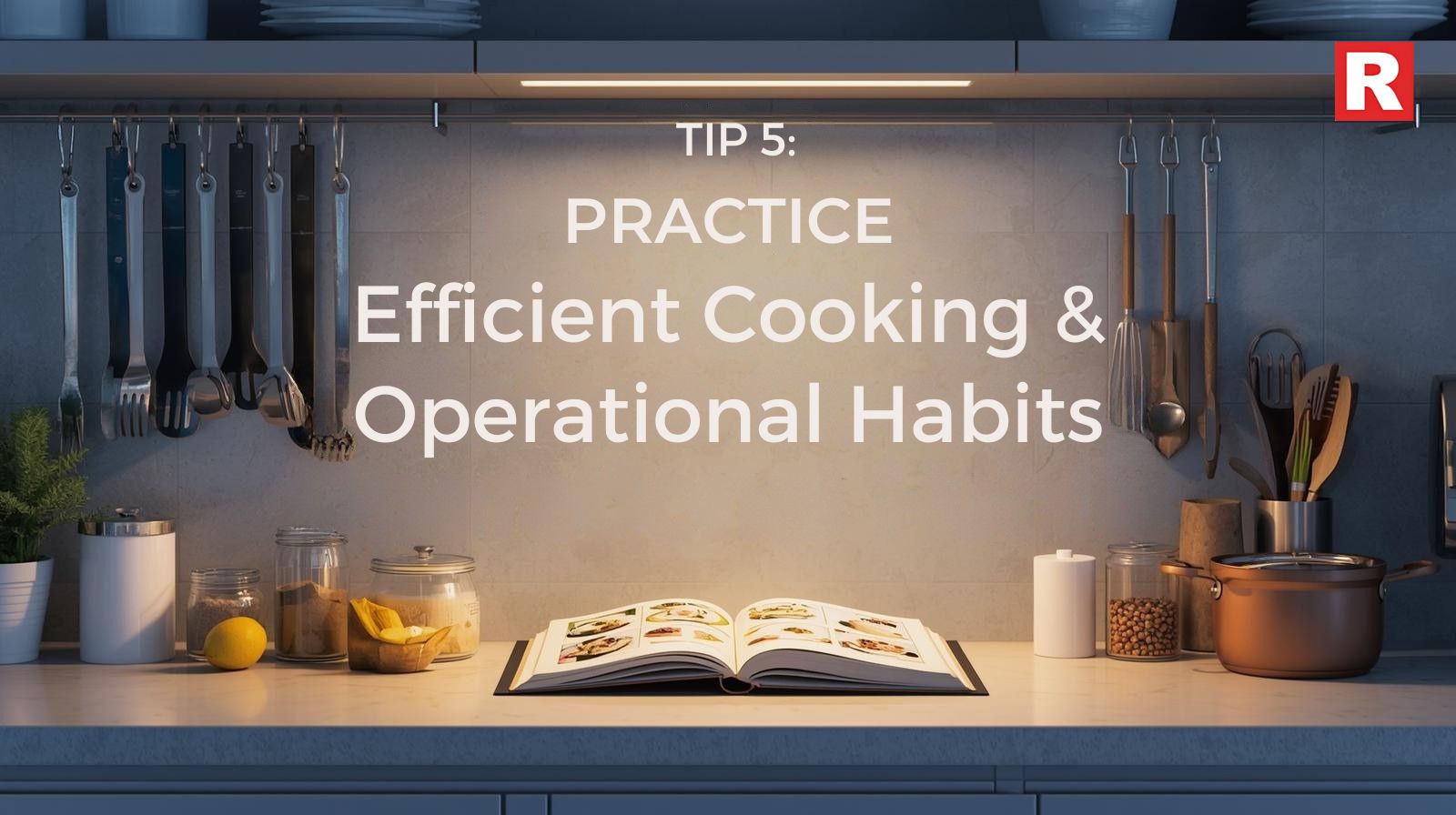
Technology alone is not the answer; a smart kitchen staff is just as crucial. Educating your staff about energy conservation can result in significant cost savings.
- Preheat Wisely: Avoid preheating deep fryers or ovens too much. To save energy, wait until you're ready to utilize them.
- Keep Doors Closed: Teach your employees to keep the freezer and chiller doors securely closed. It costs you money every second the door is open during an Indian summer.
- Thaw Smarter: Encourage your team to thaw frozen food in the chiller overnight rather than in a microwave or under hot water. In addition to saving electricity, this is a safer way to handle food.
- Turn Off Equipment: The simplest tip is to turn off your equipment. Establish a rule that during slow times, appliances such as deep fryers, tandoors, and grills must be turned off.
Tip 6: Focus on Chiller and Freezer Maintenance
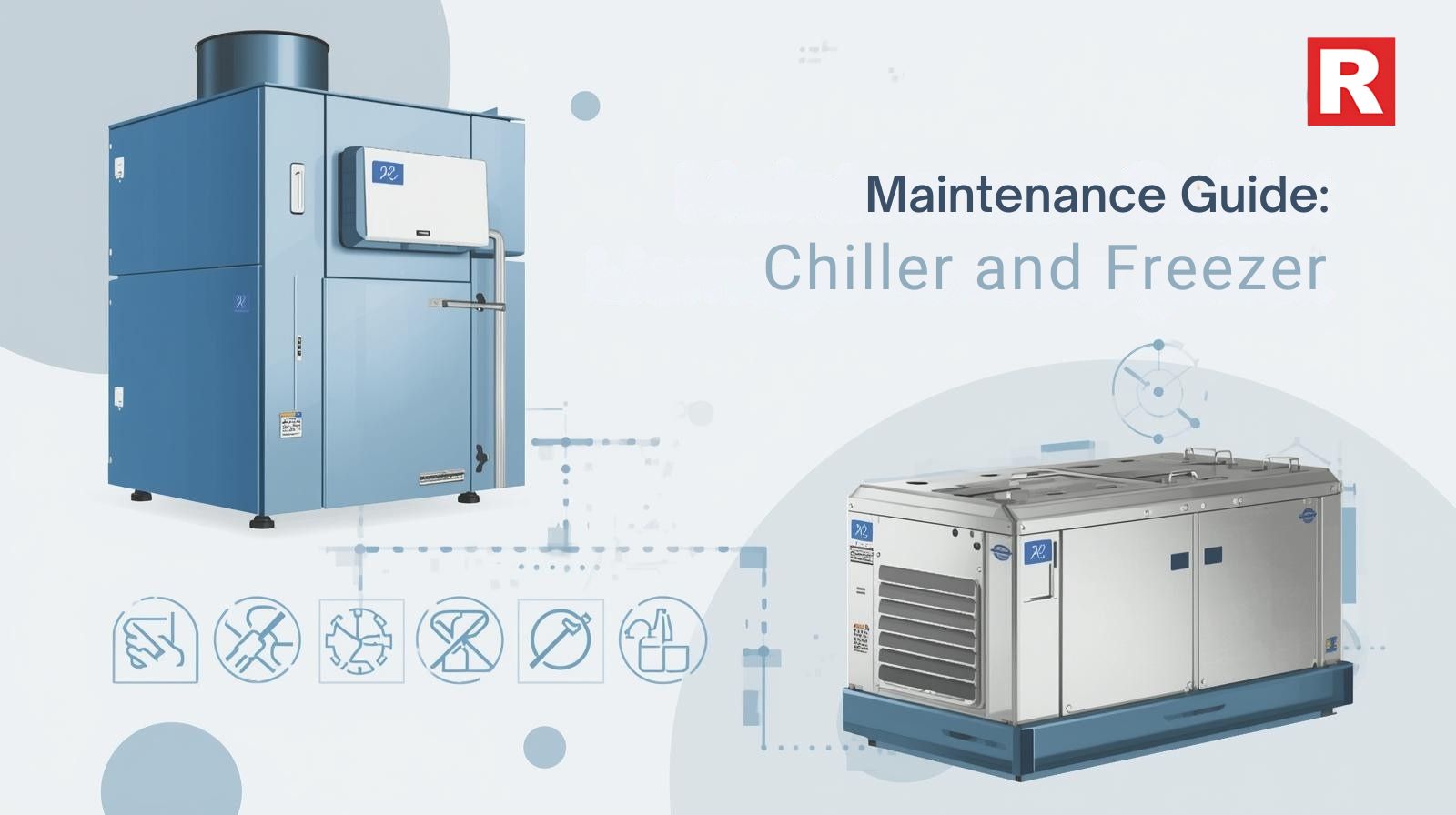
The kitchen's engines, such as your freezers and chillers, function continuously to maintain the freshness and safety of your food. The secret to their energy efficiency is proper maintenance.
- Clean Condenser Coils: Condenser coils should be kept clean since dirt, oil, and dust can build up on them and make the unit work harder. Up to 30% more efficiency can be achieved with routine cleaning (at least once per month).
- Examine Door Seals: Cold air might escape through worn-out or damaged door seals. To stop energy leaks, inspect all seals frequently and replace them as necessary.
- Ensure Proper Airflow: Make sure there is enough airflow by avoiding packing chillers too tightly or blocking vents. For the units to cool effectively and avoid overheating, proper ventilation is necessary.
Check out: The Comfort Revolution: How Home Cooking Can Save Your Restaurant
10 High-Protein, Low-Calorie Foods to Conquer Cravings
Tip 7: Manage Water and Wastewater Energy

Heating water for cooking and dishwashing uses a significant amount of energy. Saving a lot of money can be achieved by using less hot water.
- Install Low-Flow Nozzles: You can save a significant amount of energy and hundreds of liters of hot water by replacing the pre-rinse sprayers at your washing stations with low-flow models.
- Maintaining dishwashers: It involves making sure the nozzles are clear and that the machine is running at its most efficient setting. To get the most out of it, only execute it when it is completely loaded.
- Fix leaks: A single leaky hot water tap can waste a large amount of electricity and gallons of heated water over time. Leaks can be easily fixed to save money.
Harnessing Modern Technology for a Smarter Kitchen
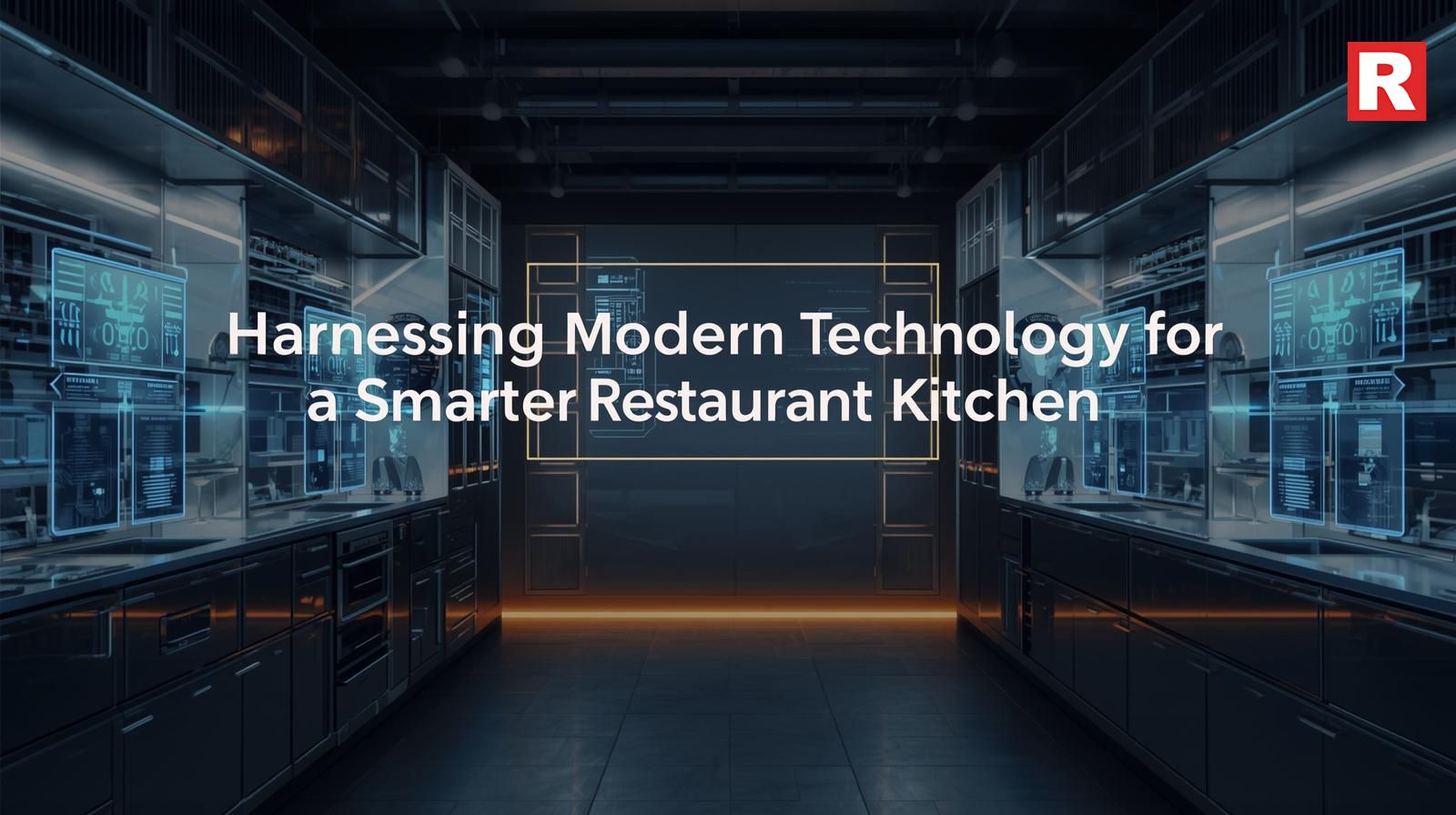
Simple habit modifications are important, but intelligent, data-driven solutions are what the restaurant business in India will need for energy management in the future. To increase the efficiency of their kitchens, restaurant owners are adopting technology instead of relying solely on do-it-yourself solutions. Real-time insights that were previously difficult to track are now possible thanks to these modern methods.
- Smart Metering: Installing smart electricity meters can provide you with a real-time picture of how much energy your kitchen uses. This enables you to determine precisely which appliances are driving up your bill during their busiest periods. This visibility is crucial for comparing branch-by-branch efficiency in a multi-outlet firm.
- AI-Powered Platforms: Data from kitchens is analyzed by artificial intelligence to produce schedules that are optimized. Your restaurant's busiest times can be learned by an AI system, which can then automatically modify the settings for your fryers, ovens, and chillers. In order to prevent peak-hour energy expenses, it can even recommend the most energy-efficient times for bulk preparation, such as when cooking dal or samosas.
- Remote Monitoring: Restaurant owners may remotely monitor and manage the energy consumption of their kitchens from any location using smart devices and smartphone apps. Did you forget to switch off the air conditioner or the lights when it was time to close? To avoid paying for energy waste when the restaurant is closed, you can now do it with a simple tap on your phone.
Read this: Chia Magic: Health Benefits & Endless Delicious Ways to Enjoy
Conclusion
For Indian restaurants, effective energy management is becoming a requirement rather than an option. A kitchen can drastically cut operating expenses by staying prepared, investing in smart technology, and encouraging an ecological mindset among staff. The advantages go well beyond financial gain; it lessens the restaurant's impact on the environment, improves the reputation of the brand, and develops a more viable business plan for a future with more competition.

The Indian dining scene was a fascinating web of flavors, textures, and customs for many years. It was stitched together with a unique combination of rich, home-style cooking and lively street food culture. Often, its raw, organic simplicity was what made it so appealing. But a quiet revolution has been taking place in kitchens and dining rooms all throughout the nation in recent years, driven by a greater emphasis on consumer safety, transparency, and health. The Food Safety and Standards Authority of India (FSSAI), the country's main food regulator, is leading this change with strict new regulations that are transforming not only what we consume but also the way we think about food.
These rules are transforming the food service industry as a whole, not just adding to the previous complex web. As a result, the sector is being forced to adopt a more professional, established, and responsible model, moving away from its dependence on the old jugaad (makeshift) method. This article will examine how these health rules are impacting every aspect of kitchen operations and menu creation, as well as the effects on Indian consumers and restaurants.
Read more: 10 Steamed Indian Dishes Beyond Idli & Dhokla
The Driving Force Behind the Change: The FSSAI
The Food Safety and Standards Authority of India (FSSAI) was founded with the sole objective of guaranteeing the supply of nutritious and safe food for human consumption. Although its early priority was on developing essential guidelines, it has since developed into a dynamic and powerful entity. Its most recent legislation shows an extensive awareness of modern public health issues, especially the increasing number of lifestyle disorders like diabetes and obesity. The authority is currently trying to educate customers and force restaurants to put safety and nutrition first.
The FSSAI has a broad strategy that includes everything from audits and licensing to required labeling and strict ingredient regulations. In the Indian food service industry, this approval from regulators is now a necessary and non-negotiable aspect of conducting business.
Key Regulations Reshaping the Industry

These rules have had the most effect in three main areas: hygienic standards, ingredient restructuring, and nutritional transparency.
Nutritional Information on Menus
The law requiring that restaurants give nutritional information is among the most drastic changes. FSSAI's "Packaging and Labelling Regulations" mandate that food chains and online food aggregators with multiple outlets disclose the nutritional information, including allergies and calorie count, for their menu items.
- Effect on Customers: This rule gives customers the direct ability to make smart decisions. Knowing that a single plate of butter chicken can have over 600 calories or that a dish is heavy in sodium enables someone following a particular diet or medical condition to select a healthier option, such as vegetable curry or grilled chicken. By incorporating nutritional value into the menu due to the laws, this small act of transparency supports the fight against the widespread health problem of unhealthy lifestyles.
- Effect on Restaurants: This is a big difficulty for restaurants. From the amount of oil used to fry a samosa to the precise amount of cream in a sauce, they must carefully consider each item on their menu. Chefs are now under pressure to make healthier versions of well-liked dishes without losing flavor, which has sparked a wave of menu changes. It also makes cooking more uniform because appropriate nutritional labeling depends on consistency.
Know more: 5 Ways AI is Changing the Indian Restaurant Industry
Trans Fat and Sugar Limits
In addition to labeling, the FSSAI has made a bold move to restrict dangerous substances at their source. A maximum allowable limit for trans fatty acids (TFAs) in all food products has been established by the authority. By 2021 and 2022, industrial TFAs in food items must not exceed 3% and 2%, respectively, according to the standards.
- Effect on Customers: This is a subtle yet significant shift. Restaurants are being forced to switch from less expensive, partially hydrogenated vegetable oils to healthier alternatives, even though consumers may not notice it on the label. This directly aids in cutting back on the use of a substance known to cause cardiovascular disorders. To further encourage the sector to use healthier ingredients, the FSSAI is also actively striving to reduce the high levels of sugar and sodium in processed meals and restaurant dishes.
- Effect on Restaurants: This rule requires that the cooking medium used in restaurants be entirely modified. Accepting restaurants are seen as responsible and health-conscious, even though initial expenditures may increase. The change also promotes creativity as cooks experiment with different approaches to use healthy oils and natural fats to get the right flavor and texture. The nation's kitchens are undergoing a broad, methodical transformation due to the threat of fines for disobedience.
What's new: What are Food preservatives and how to identify them on labels in India
Hygiene and Sanitation Standards
Food hygiene was a big issue for a while, especially in the informal sector. In order to improve sanitation from the kitchen to the serving table, the FSSAI has implemented a number of laws.
- Food Safety Display Boards: It is now required for restaurants to have a "Food Safety Display Board" displayed in an easily identifiable spot on their premises. The restaurant's license number and a sanitary rating (ranging from 1 to 5 stars) derived from a government-mandated audit are given by this board.
- Cleanliness and Staff Training: Every person who handles food must get basic food safety and hygiene training in accordance with regulations. This includes using hairnets, washing your hands properly, keeping yourself clean, and dressing in hygienic uniforms.
- Cleanliness Audits: Strict hygiene requirements are met by kitchens, storage spaces, and equipment thanks to routine audits and inspections.
Effect on Customers: These rules create a real sense of trust. Customers are reassured that the food is prepared in a clean and safe atmosphere when they see a restaurant's display board with a 5-star hygiene rating. This transparency is an effective strategy for keeping and attracting new customers.
Effect on Restaurants: Adhering to these standards offers a substantial business advantage, but it also requires infrastructure investment and employee training. In addition to preventing food contamination, a well-kept kitchen increases operating effectiveness. Setting the business apart from rivals and drawing in loyal customers are two benefits of having a high hygiene rating.
Allergen and Ingredient Labeling
Clear allergen labeling is an essential step towards consumer safety in a big, diverse nation like India, where food allergies and sensitivities are common. Restaurants must disclose all ingredients and common allergies in their dishes in accordance with FSSAI standards. This covers items such as eggs, dairy, gluten, peanuts, and soy.
Impact: People are shielded from severe allergic reactions by this simple but important regulation. It forces restaurants to source and prepare ingredients precisely, avoiding cross-contamination and enabling customers with allergies to eat out with confidence.
Check out: The Comfort Revolution: How Home Cooking Can Save Your Restaurant
10 High-Protein, Low-Calorie Foods to Conquer Cravings
The Impact on Restaurants: From Burden to Business Advantage
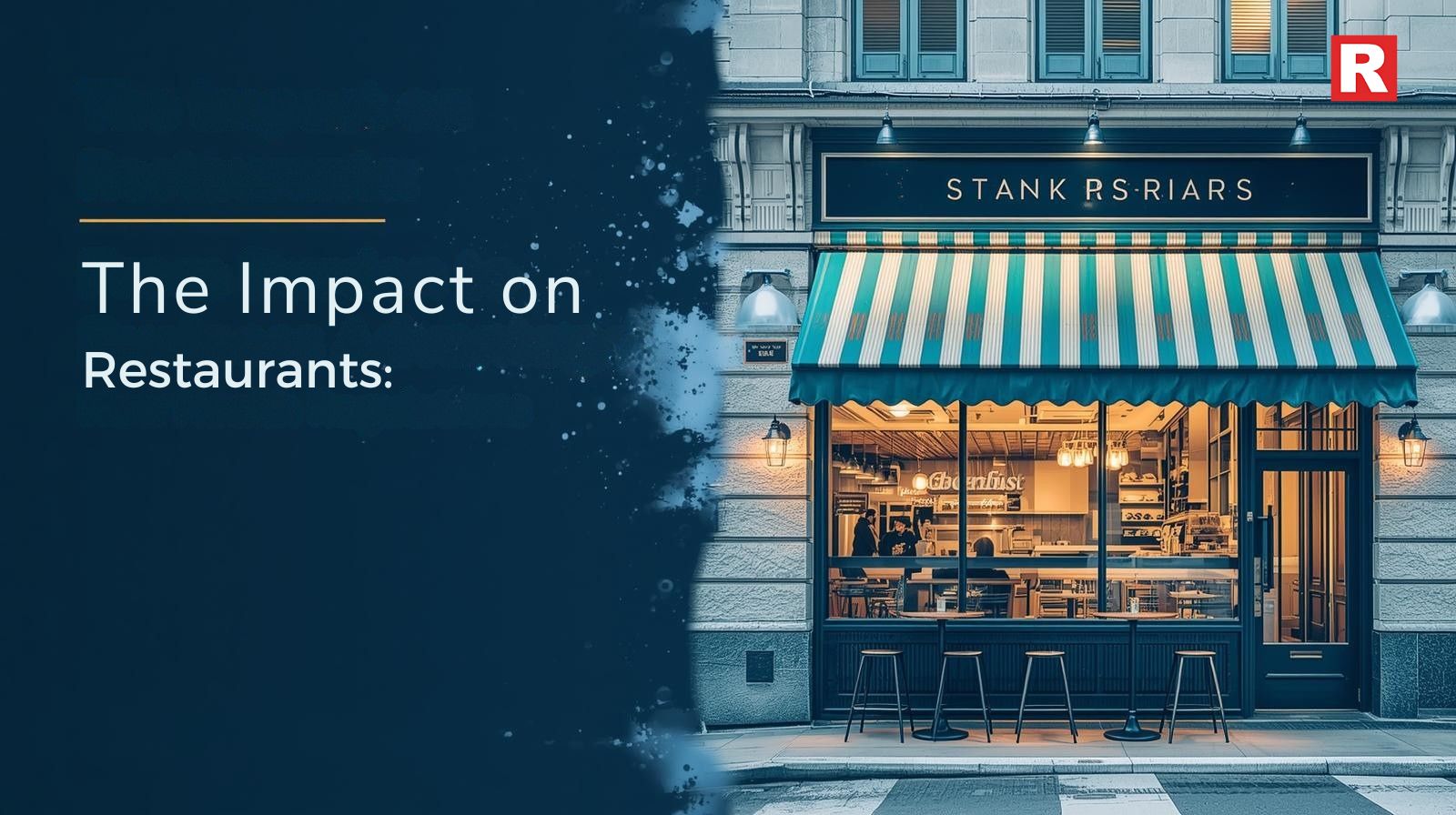
At first, many restaurateurs saw these rules as an operational and financial challenge. But more and more progressive businesses are seeing how regulations can be turned into a significant competitive advantage.
- Establishing confidence: In a time when customers are more aware than ever, a restaurant that is open about its ingredients and dedicated to cleanliness gains a great deal of trust.
- Driving Innovation: Chefs are being forced to use their creativity to minimize sugar, trans fats, and calories, which has resulted in the creation of innovative new menu items that are not only delicious but also healthful. Innovation in the Indian food sector is sparked by this creative pressure.
- Greater Market Appeal: Restaurants that follow health rules are more appealing to a larger range of customers, including the rapidly growing group of health-conscious diners. In a competitive market, this keeps them profitable and attractive.
Read this: Chia Magic: Health Benefits & Endless Delicious Ways to Enjoy
Beyond Obedience: The Road Ahead
Future food regulations in India are probably going to be increasingly tech-driven and integrated as the food sector adjusts. The dining experience will be further redefined by these emerging trends:
- QR Code Nutrition: Restaurants are now utilizing QR codes on their menus so that customers can quickly get detailed nutritional information and allergen information for every dish by scanning the code.
- Hygiene on Demand: Through digital platforms, customers can now instantly view a restaurant's most recent hygiene audit results and reports, increasing transparency and confidence.
- The "Eat Right India" Movement: Food safety and nutrition are becoming a national discussion rather than only a law, thanks to FSSAI's public campaigns that encourage consumers and restaurateurs to embrace healthier practices.
- Sustainability as a Standard: It is anticipated that future legislation will incorporate sustainability, emphasizing eco-friendly packaging and the minimization of food waste.
The Impact on Consumers and the Future of Food
In the end, these rules are improving the dining environment in India. Instead of concentrating only on flavor, they are promoting a culture of transparency and wellness. The industry is being forced to advance even more as a result of consumers' growing awareness and influence. As individuals make better decisions about what they eat when they are not at home, the long-term effects on the public's health will likely be enormous.
India's dining scene is expected to become more transparent, balanced, and secure in the future. It is a universe that maintains the deep, rich flavors of Indian food while adding a new level of professional responsibility and a dedication to the welfare of customers. This is a revolution in our eating habits, not merely a change in regulations, motivated by our shared desire for a food system that is healthier, more open, and more reliable.

The Indian restaurant business, which is defined by its blend of tradition, taste, and hospitality, is undergoing a slow but big transformation. Due to many problems like staff shortages, rising costs, and a highly competitive market, restaurants are taking the help of a special ally, that is, none other than AI, or better known as Artificial Intelligence. This concept, which was thought to be far in the future, is already working in modern-day Indian society and handling tasks like improving operations, customizing customer experiences, and even changing the way food is cooked and delivered.
This is not robots taking human jobs day by day, like any movie concept. Instead, it is profitable to humans as AI can manage repetitive tasks that were probably boring to the staff. This helps the chefs to focus on their dishes, and the front-of-house staff gets more efficient in handling customers and providing genuine hospitality. The implementation of AI is not a passing trend that will go away in a few years. It is a strategic decision that can help increase efficiency, profitability, and open a new era of dining in the restaurant industry. In this article, we will list the five key ways that AI is changing the restaurant industry.
Read more: Top Rajasthani Dishes to Try This Festive Season
1. Revolutionizing the Customer Experience

The process of choosing a restaurant and placing an order is now entirely computerized for the modern Indian diner. This procedure is becoming much more natural, personal, and smooth thanks to AI.
AI-Powered Reservations and Ordering
Calling a restaurant to book a table has become less common now. Intelligent chatbots and voice helpers made with AI have taken over this task. These AI systems handle many booking requests at once. They also handle complex reservation requests, answer FAQs, and even manage waiting lists just like a human would. Because these technologies can converse in several Indian languages, a larger audience can access the process. Also, as they are available 24/7 throughout the day, they are a much better choice for this job. This makes things very efficient.
When the customers are ready to order, AI speeds up and simplifies the process even further. Online Aggregators or online food ordering apps use AI to remember past orders and preferences so that they can suggest menu items without the customer scanning the whole menu every time they order. This process is known as hyper-personalization. This means faster orders and bigger bills. In drive-thrus, AI-powered voice assistants take orders well without making any errors and cutting down the waiting time. This helps to increase customer satisfaction, and the staff can also focus on food preparation and delivery with ease.
Personalized Recommendations
AI algorithms look at the past orders of the customers. It checks their food choices, dietary preferences, and even real-time data to create a customized experience. For example, if a customer always orders plant-based meals, then they might get personalised recommendations for new plant-based dishes or any specialty dishes. This service level helps to increase trust with the customer. They feel seen and looked for, which encourages a deeper sense of loyalty and also future visits from the customer.
Know more: The Comfort Revolution: How Home Cooking Can Save Your Restaurant
2. Optimizing Back-of-House Operations

AI is evolving into a silent colleague in the high-stress setting of an Indian kitchen, guaranteeing productivity, consistency, and a more profitable bottom line.
Smart Planning for Food Stock
For any Indian restaurant owner, the cost of food is a top issue. So, throwing out waste food costs restaurants a lot. That’s why using AI to make smart forecasts by analyzing the monthly or yearly data, including previous sales, trends, events, and even weather patterns, can help fix this. This helps the manager to decide on an exact amount of ingredients and the type of ingredients they need. Managers then buy only what they need, and no bulk orders for unnecessary ingredients are made. This way, less food goes bad, and the risk of stock running out is reduced to a great extent. This is particularly important for handling fresh produce, which in India's environment has an extremely limited shelf life.
Kitchen Automation
Even though a completely automated kitchen might seem like a far-fetched idea for India, certain jobs are already being impacted by AI-powered automation. Automated systems take over repetitive and labor-intensive operations, maintaining consistency and accuracy. Robotic arms can flip burgers, fry meat, and even put together complete meals. These systems are programmed to follow recipes perfectly every time, eliminating human error and ensuring a consistent product across all sites in a chain.
Furthermore, AI-powered sensors can examine kitchen equipment for signs of wear and tear, forecasting maintenance requirements before an issue happens. This routine inspection saves money in repair expenses while also preventing interruptions in service.
3. Enhancing Supply Chain and Logistics

From regional sabzi mandis to major distributors, the Indian restaurant supply chain is notoriously complex. AI is giving this system the intelligence and transparency it sorely needs.
Intelligent Demand Forecasting
Based on back-of-house improvements, AI can estimate demand across the entire supply chain. Restaurants can work with suppliers to improve delivery schedules by properly estimating what products will be needed and when. This not only saves waste but also ensures that the freshest ingredients are constantly available, allowing for a high level of quality even for dishes like a fresh Chicken Tikka or a crisp Pani Puri. This real-time data exchange enables suppliers to optimize their own operations, resulting in a more mutually beneficial relationship between a restaurant and its providers.
Supplier Management and Route Optimization
AI can use supplier performance criteria such as price, quality, delivery times, and ethical standards to recommend the best vendors. For larger restaurant chains and food delivery services, AI algorithms are essential for route optimization. In order to bring food to consumers as fast and effectively as possible, delivery riders in India must be able to traverse the country's intricate road and traffic networks, which is made feasible by AI algorithms. They assess traffic, distance, and delivery windows to establish the most efficient routes for distribution trucks and drivers, resulting in lower fuel expenditures and on-time arrivals. This level of logistical precision is essential for keeping food fresh and achieving customer expectations.
What's new: What are Food preservatives and how to identify them on labels in India
4. Transforming Marketing and Customer Engagement

AI is moving beyond simple promotional emails to build highly targeted and effective marketing efforts that speak to specific customers.
Hyper-Personalized Marketing
Restaurants may use artificial intelligence to categorize their consumer base significantly more efficiently than traditional approaches. AI may send extremely personalized offers based on a customer's purchasing history and interests. For example, a customer who has not visited in a while may receive a discount on their favorite meal, or a new customer may receive a welcome deal suited to their first purchase. This tailored strategy is more effective and yields a far higher ROI than a one-size-fits-all promotion.
Sentiment Analysis and Customer Service
AI-powered sentiment analysis systems can track online reviews, social media comments, and feedback forms in real time. These systems can instantly detect unfavorable remarks or frequent complaints, alerting managers to potential issues before they worsen. The preventive approach to customer service enables restaurants to handle issues quickly, transforming a potentially unpleasant experience into a positive one and maintaining their brand's reputation. AI can also power chatbots on websites and social media to answer typical client questions, delivering immediate assistance and reducing staff strain.
Check out: The 10 Must-Try Sandwiches at Subway You Can’t Miss
The Future of Restaurant Loyalty: How AI, Data & Experiences is Driving Repeat Biz
5. The Role of AI in Human Resources and Staffing

The employee turnover rate in the Indian restaurant business is significant. AI is taking over to make the workplace more effective and easier for both managers and staff to handle.
Smart Staffing and Scheduling
One of the most difficult tasks for managers in restaurants is creating efficient schedules. AI streamlines this process by assessing demand estimates, human availability, and skill sets to generate schedules that reduce labor costs while maintaining enough staffing. This results in more efficient shifts, improved team communication, and reduced fatigue.
Automated Hiring and Training
AI tools can transform the hiring process by analyzing resumes for specific keywords and skills, allowing employers to easily find the most promising candidates from a wide pool of applications. This saves managers precious time. Furthermore, AI-powered platforms may offer interactive, simulated training programs to new employees, providing a consistent and interesting approach to learn about the menu, safety measures, and business culture.
Sharpening Financial Strategy and Business Intelligence

Beyond operational and excellent customer service, AI is providing managers and owners of restaurants with unparalleled insight into the condition of their businesses. By evaluating massive volumes of transactional data, AI systems provide real-time insights that were previously only available through costly consulting services. This data-driven strategy is critical to increasing profitability and making more informed long-term decisions.
- Predictive Revenue Forecasting: AI uses past sales trends, external factors, and promotions to generate highly accurate revenue forecasts, allowing managers to plan for cash flow and make smart investment decisions.
- Pricing Optimization: Algorithms can provide dynamic pricing methods for menu items depending on time of day, demand, and rival prices, maximising revenue during peak hours and reducing waste during off hours.
- Advanced Cost Control: AI can track all aspects of a restaurant's finances, from ingredient costs to labor expenses, detecting irregularities and potential waste in real time.
- Fraud Detection: By analyzing data related to transactions, AI can immediately identify suspect activity or patterns of theft, protecting the restaurant's bottom line from both internal and external threats.
Read this: 10 High-Protein, Low-Calorie Foods to Conquer Cravings
Conclusion
The future of the restaurant business in India lies in collaboration rather than confrontation between humans and machines. AI has the potential to empower employees to provide better services and to relieve cooks of menial duties so they can experiment. Indian restaurants can now confidently handle modern problems of cost, efficiency, and rivalry by utilizing this technology. AI is not only revolutionizing the food industry, but it is also contributing to the preservation of the essence of dining, guaranteeing that the pleasant experiences and rich flavors of Indian cuisine will endure for many years to come.

Restaurants today face an endless list of challenges in a market characterized by continuous trends and extremely tight margins. The ideal combination has been produced by rising food prices, labor shortages, and a post-pandemic consumer base that has a renewed respect for minimalism. The traditional model of formal fine dining and lavish culinary theater is starting to fall apart. The comfort revolution, however, is a potent, unexpected remedy hidden inside this changing environment. With the accuracy and creativity of professional chefs, it's a return to the essence of food, which is the coziness of home cooking. This combination is a strategic evolution that can not only save your restaurant but also ensure its future in the eyes and hearts of your customers.
This article is an extensive study of this phenomenon, where we will be discussing how home cooking has an impact on your restaurant’s future, and all the factors, like people’s changing palates, the advantages of incorporating this revolution in your restaurant, and the ways you can achieve it.
Read more: The Top 7 Sweet Dishes You Can’t Miss This Durga Puja
The Shifting Palate of the Modern Diner
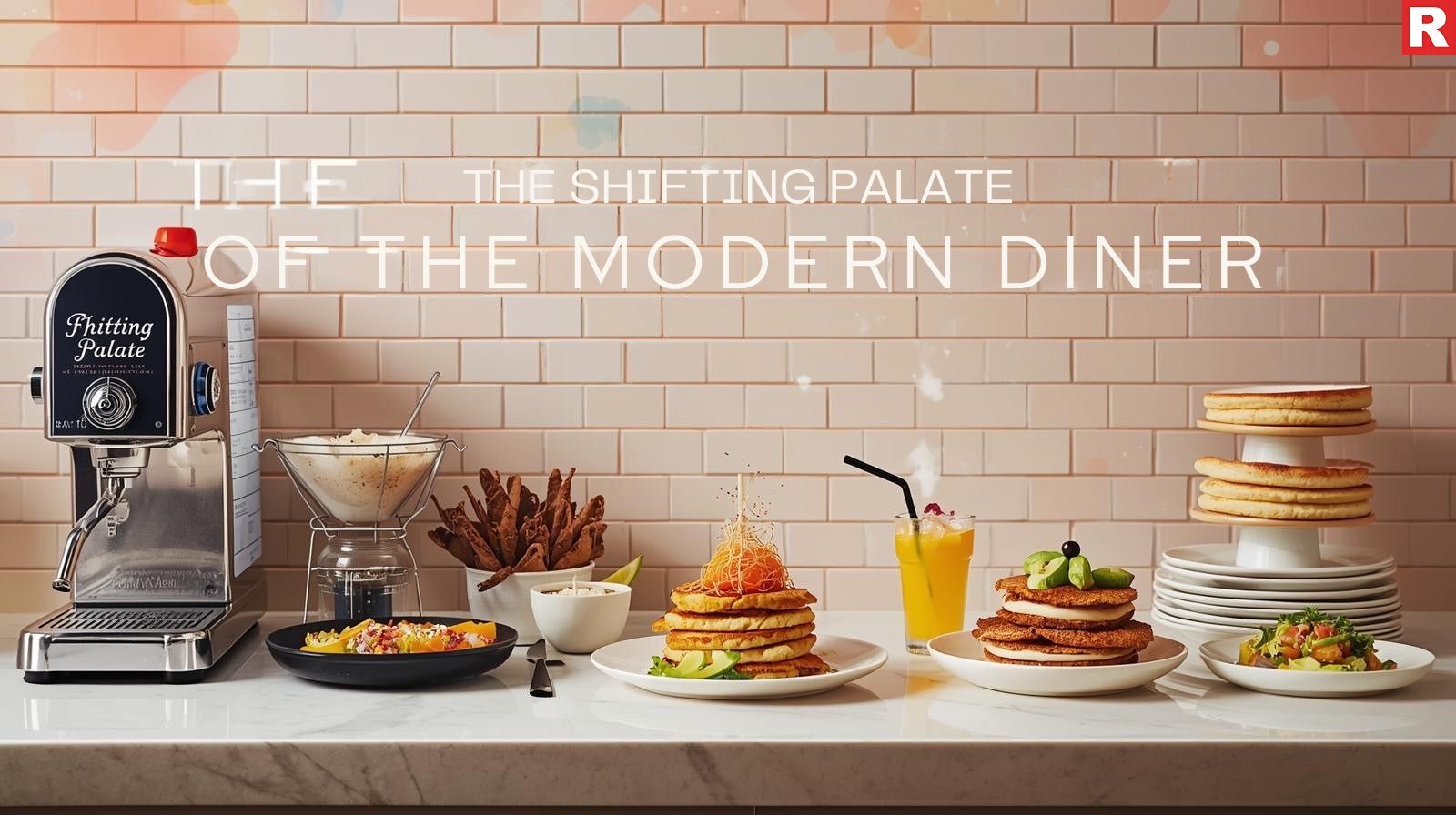
For many years, luxury and diversity were considered the hallmarks of fine dining. Chefs were praised for their innovative methods and exotic ingredients, and diners sought out foods they could never make at home. But the tastes of the modern diner have changed. These days, customers are looking for connection, authenticity, and a feeling of belonging. They are tired of traditional fine dining's tendency toward aloofness and pretense.
This change has been amplified by the growth of social media sites like Instagram. A chemically produced dish is frequently less enjoyable and relevant than a well-cooked short rib or a rustic-looking, expertly arranged meal of improved chole bhature. A tale, a memory, or a feeling of comfort is what diners want to associate with their cuisine. A trend that goes beyond trends and appeals to a basic human need is the desire for a nostalgic, casual dining experience.
This does not mean that the quality of the dish is less important now. On the contrary, modern customers are even more picky than before. They expect the finest ingredients, careful planning, and faultless execution. Creating such a dish, which is a beauty but also approachable, is very crucial. Here is where the magic of fine dining and comfort cooking comes into the picture.
What Exactly is the Blend? From Soul to Science
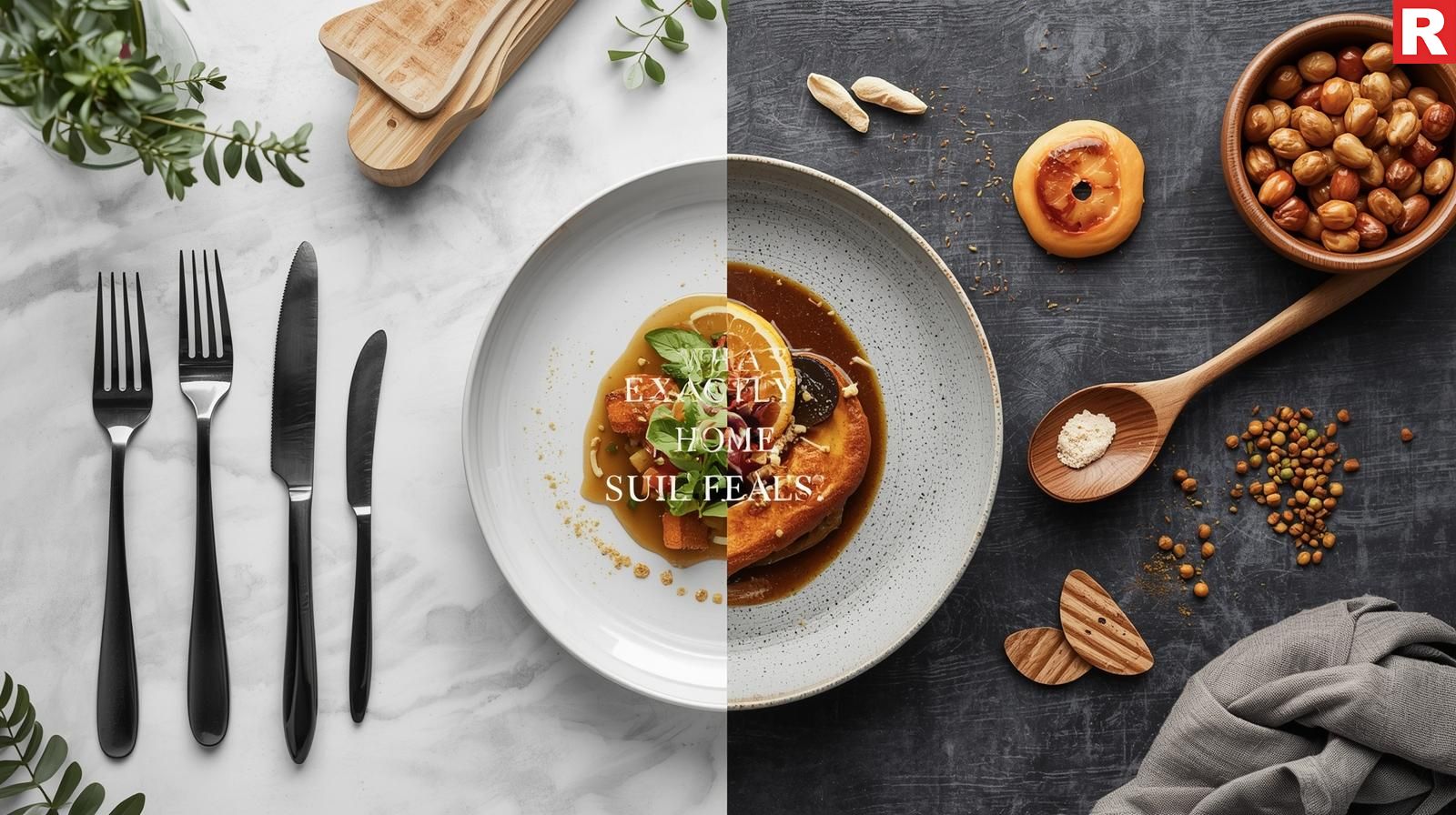
The idea behind combining fine dining and home cooking is not to simplify the menu. It's a meticulous but elegant approach that combines the expertise and experience of a professional kitchen with the ageless ideas of comfort food prepared at home.
- The Soul of Home Cooking: "The Soul of Home Cooking" refers to the emotion. It's the simple delight of a perfect Aloo Paratha, the hearty warmth of a Dal Tadka, or the deep flavor of a slow-cooked Rajma. The emphasis is on hearty flavors, natural ingredients, and recipes that evoke feelings of affection and warmth. Whether it's a family recipe or a treasured memory, these foods tell a tale.
- The Science of Fine Dining: It has to do with the method. It's the skilled execution of the plate arrangement, the chef's skill at creating unique flavors, and the accuracy of a perfectly seared cut of meat. It's the careful selection of the finest regional ingredients, the development of a well-balanced and complex sauce, and the focus on detail that turns an ordinary dish into a culinary masterpiece.
For instance, a classic Butter Chicken can be changed. In a fine-dining setting, the marinated, premium, free-range chicken would be expertly grilled to a smoky, charred finish, a silky, smooth sauce made with cashews and tomatoes that has been cleansed of all impurities, and served with a single, perfect swirl of fresh cream. The end product is a familiar-looking dish that tastes and feels incredibly luxurious. It proves that even the most memorable meals can be made with simple ingredients and done perfectly.
Know more: 10 High-Protein, Low-Calorie Foods to Conquer Cravings
The Economic and Operational Advantages
Adopting this cooking approach is a wise financial decision in addition to being a creative one. The comfort revolution has real advantages that can significantly boost a restaurant's revenue and operational effectiveness.
- Cost-Effectiveness: Expensive, difficult-to-find items like gourmet saffron, larger mushrooms (guchhi), or exotic spices are frequently used in upscale fine dining. In contrast, home-style cooking usually makes use of more readily available and reasonably priced ingredients. Higher profit margins on well-liked foods are made possible by this. Additionally, by emphasizing slow-simmering techniques in recipes like dal Makhani or a rich nalli Nihari, cooks may creatively employ every ingredient by using less expensive cuts of beef or lentils.
- Operational Efficiency: By preparing a large number of dishes well in advance, such as a slow-cooked roganjosh, a simmering Kadai Paneer, or a huge batch of Dal Tadka, kitchen workers can work more efficiently during peak service hours. Additionally, by simplifying the setup on location, this strategy creates a kitchen that is less hectic and stressful. A lively, stress-free kitchen is a more reliable and efficient one.
- Greater Market Appeal: Upgraded comfort food appeals to a far wider range of consumers than typical fine dining, which targets a specific demographic. It draws people who are simply celebrating a special event, families seeking a delicious and inviting lunch, and foodies searching for the newest trend. This larger consumer base lessens your restaurant's dependence on a particular kind of customer and raises the possibility of a consistent flow of revenue.
With this strategy, a restaurant is transformed from a venue for occasional special events to a popular choice for both regular dinners and parties. The goal is to establish yourself as a community mainstay.
What's new: Chia Magic: Health Benefits & Endless Delicious Ways to Enjoy
Building a Brand and Fostering Customer Loyalty

A brand founded on comfort and genuineness has a unique advantage in a time of temporary trends: it creates an emotional bond. A customer develops a connection with your business that surpasses taste as they savor a meal that brings back memories of their early years or a special family occasion. The strongest factor influencing repeat business is this emotional loyalty.
- Brand Identity: The identity of your restaurant transcends the cuisine and takes on an emotional depth. You are selling more than simply food; you are selling coziness, tenderness, and memories. Your marketing, service approach (which should be friendly and attentive rather than official and stiff), and décor can all reflect this.
- Word-of-Mouth Marketing: Your most powerful marketing tool is a loyal customer base. People become brand ambassadors when they have a personal connection to a restaurant and tell their friends and family about their satisfying experiences. This natural word-of-mouth promotion is more reliable and effective than any kind of advertising.
- Consistency is King: Focusing on consistent execution is made possible by the menu's basic concept's simplicity. The kitchen can polish every meal with less exotic procedures, guaranteeing a consistently great experience for every customer. This reliability strengthens customer loyalty and trust even more.
Check out: Top Drinks You Should Consume to Get a Festive Glow
10 Popular Energy Drinks and Their Benefits
Case Studies & Implementation Strategies
For many restaurants that have adopted it, the comfort revolution is a successful reality rather than merely a theory. Imagine a fine-dining restaurant that focuses on a select few exquisitely prepared, sophisticated classics while simplifying its complex tasting menu. A gorgeously displayed paneer tikka made with paneer that is sourced locally and a scoop of handmade vanilla bean ice cream with gulabjamun might be used in place of a disassembled dessert. Or a modern restaurant whose whole concept revolves around enhancing commonplace dishes, such as an elegant biryani or gourmet chicken tikka.
Start simple when putting this technique into practice in your own restaurant:
- Presenting a Signature Dish: Start by including one or two meals on your menu that are enhanced comfort food. Analyze the reactions of customers.
- Train Your Staff: Make sure your front-of-house employees are trained on the philosophy behind the food that they serve. They should be able to convey the warmth and genuineness of the cuisine as well as its story.
- Promote the Change: Draw attention to the new course by using your marketing channels and social media accounts. Make use of words that convey coziness, excellence, and genuineness.
Read this: Top 10 Non-alcoholic Drink Ideas for Your Restaurant
Conclusion
The restaurant industry's future lies in going back to the basics that make cuisine wonderful, not in aiming for ever-increasing complexity. By adopting the comfort revolution, restaurateurs may develop a business strategy that is more in line with the needs of the contemporary diner while also being more financially and operationally sound. It is an ideology that demonstrates that the most impactful culinary experiences frequently occur when the meals that have always made us happy are prepared with soul and skill rather than via innovation in and of itself. Instead of gold, the road to a successful, long-lasting restaurant may be paved with the warm, familiar flavors of home, enhanced by talent and enthusiasm. Just making sure to keep in mind all the factors, like the customer’s changing palate, combining modern dining and the comfort of home cooking can help you make your restaurant successful again.

Over two decades in the business, Nikhil K. Rochlani has watched India’s dining landscape shift from price-driven choices to experience-led destinations. He is Founding Partner of Butterfly High, Kyma, and The Bigg Small Café + Bar. For him, today’s success rests on customer insight, constant reinvention, and sharply defined brand identity. Recognised for his consumer-first approach and innovative event-led formats, Nikhil continues to mentor entrepreneurs and shape India’s dining culture across multiple cities. In an exclusive interview with RestaurantIndia, he talks about his experience, various concepts, expansion, challenges and much more. Excerpts:
Tailored to Taste
Hospitality brands succeed when they truly understand their audience. You can’t replicate the same concept, venue or marketing strategy everywhere. Success lies in tailoring each brand to its geography, audience preferences, and spending culture. Even within categories like cocktail bars, very few thrive because success depends on deep market understanding and creating a niche that resonates.
Creating Experience-led Spaces
The vision for both Kyma and Butterfly High was to create a perfect balance of quality, quantity, and price. We don’t chase margins—we focus on delivering value. Today’s customers don’t just pay for a dish; they pay for the entire experience. That’s why we emphasize a 360-degree ambience with great food and drinks, thoughtful design, and memorable service, so that guests leave with more than just a meal, they leave with an experience.
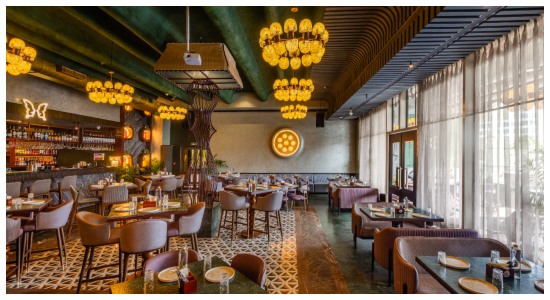

Building Culture
Operations are the backbone of hospitality. First, have quality people than quantity people. Our retention policies and employee are very strong. We are very employee-friendly and are very approachable. The retention rate is very high. We guide them on how to run the restaurants.
If you manage to retain the right talent, then I think you won. Many of our employees are there with us since we started. As we are growing, the 10-12 employees who are there since the start are heading on to different locations. I believe ‘Right people and Right culture is the key.’ Customers are never wrong and take the constructive feedback from all. Our goal is to serve the customers.
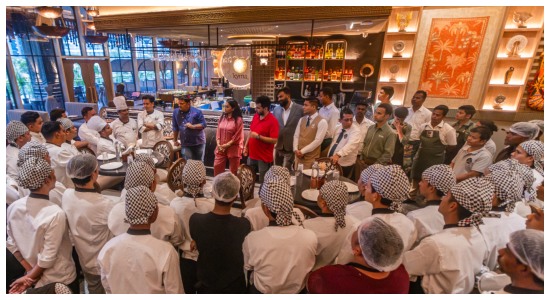
Comfort never Changes
Comfort food evolves, but it remains same. Fusion is on trend, but classics are still the same. You can change the presentation and plating, but you can’t change the soul of the dish.
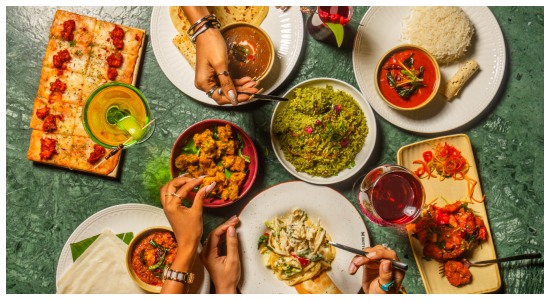
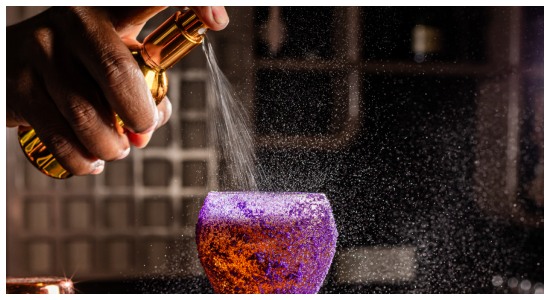
Overcoming Challenges
We need to ensure that our employees are happy, so our guest is happy. The biggest challenge in this industry is attrition and understanding how to prevent it. The second biggest challenge is no matter how good you are, there are lots of disruptors in the market who don’t understand the industry as they don’t know how to survive. While, aggregators are commercial-minded, but with the rising costs, they are passing on the costs to customers and us. The major challenge is coping with the increased costs, while not being able to increase our selling price.
Perfection in every detail
The core philosophy is that guests should be happy when they walk out. The five senses should please the customers and everything has to be optimally done. We believe that how greet your guests and the hygiene, service, food, drinks, music, interiors and washrooms everything has to be perfect. There should not be any rough surfaces. Everything has to be balanced out.
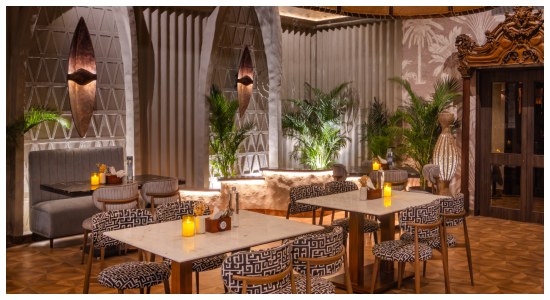
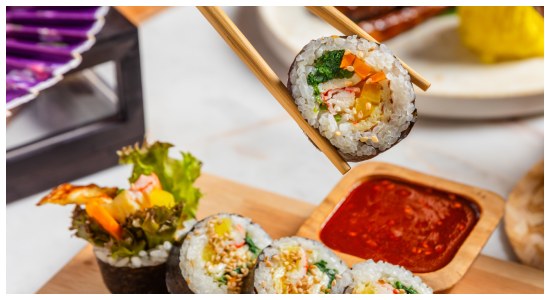
Expansion Plans
We are opening a new Butterfly High in Powai, adding to the couple of units we launch every year. Beyond bars, we’re also working on café concepts. Our five-year vision is to go pan-India, including Tier-2 and Tier-3 cities where people are increasingly aspirational and eager to try new experiences.
As we scale, we adapt menus to local tastes—Thane has its own specials, Hyderabad features unique cocktails with spicier profiles. Every city has its own preferences, and we embrace that. And looking ahead, we believe rum is the next tequila in India.
Advice to youngsters venturing hospitality
If you really love F&B, then join us. It’s a passion driven business. You may have to forget the important occasions to make some other’s occasions special. If you are in the space for a right reason, you will do really well.
Future of Indian hospitality
This is the golden phase of Indian F&B because the dining out culture is going to pick up further. A lot of developers have started experimenting with cutting out kitchens, tying up with cloud kitchens, healthier meal options are common. The scope is endless for next 10 years. The more you give and understand what the need of the hour is, the more you grow. If you stay stuck on your ideals, the way you should run a restaurant, you have to keep reinventing the wheel. You have to unlearn and relearn things again.

The modern food industry is growing through a major revolution that may be silent, but is so powerful that it goes beyond the food. As trends related to personal health and fitness are gaining popularity, people are moving towards ‘staying sober’. As people are staying away from drinking alcohol, there has been an increase in demand for non-alcoholic drinks that are both innovative and delicious. The customers are seeking more than just any soft drink or juice to go with their food. People want unique and exciting drinks that provide the same level of satisfaction as that of any alcoholic drink. This new trend is not just a passing facade that will go away in just a few months or years. For the restaurants that provide high-end meals with alcohol or specialty drinks, adding dynamic non-alcoholic beverages to their menu is a necessity, not a luxury.
This shift towards non-alcoholic beverages is the most beneficial to a customer base that is made up of drivers, non-drinkers to families, and health-conscious customers. Beyond the affordable factor, these drinks can be a significant factor for profitability, frequently have larger profit margins, and lower ingredient prices. Therefore, in this article, we will be covering the top 10 non-alcoholic drinks for your restaurant that are both creative and profitable. They can help increase the customer experience, attract a big customer base, and solidify the restaurant’s reputation as a progressive business.
Read more: Frankenstein-Inspired Foods and Drinks for Your Spooky Celebrations
Why Non-alcoholic Beverages Are a Must-Have for Restaurants
If you ignore the non-alcoholic beverage market, then that means you will be leaving behind a chunk of your revenue and potential customers, and a loyal customer base as a restaurateur. So it is important to know why adding non-alcoholic beverages is important to the business:
- Growing Market: The international market for non-alcoholic drinks is expanding. In India, the party culture is strong due to the large amount of youth population. But, this specific population is also striving towards their own health and fitness, which has also started showing in various aspects of their life, including beverages. The young customers don’t want to compromise on both fitness and experience. This has led to the rise of luxurious, alcohol-free options.
- Increased Profitability: Specialized non-alcoholic drinks, such as house-made sodas and gourmet mocktails, can be priced reasonably to showcase their high-quality ingredients and expertise. They have a higher profit margin than alcoholic drinks due to their cheaper cost of goods, which will greatly increase your bottom line.
- Enhanced Guest Experience: a menu with a diverse range of drinks, varying from sodas to cocktails and non-alcoholic drinks, ensures that every customer, regardless of their drinking habits, feels appreciated and cared for. This inclusion is an effective strategy for increasing customer loyalty and positive word-of-mouth.
- Brand Differentiation: A restaurant that has a non-alcoholic menu is different and unique from its competitors, and stands out in the market. It presents the business as innovative, contemporary, and sincere in its goal of giving everyone a wonderful time.
- Versatility: These drinks are a reliable source of income during all service hours because they may be served at any time of day, from brunch to late at night.
Top 10 Non-alcoholic Drink Ideas
The following ten beverage ideas will turn your non-alcoholic menu from an afterthought to a focal point:
1. Elevated Mocktails

Get rid of the syrupy, excessively sugary recipes from the past. Mocktails today are as elegant, complex, and aesthetically pleasing as their alcoholic counterparts. They make their own syrups, use premium, fresh ingredients, and pay attention to flavor balance.
Key Selling Point: Provides visitors with the delicious flavor and the normal version of a cocktail without the alcohol.
Examples:
- Spiced Guava Cooler: A regionally inspired drink that has a tart, refreshing kick from fresh guava juice, a touch of mint, and a dusting of black salt.
- Cucumber and Basil Smash: a concoction of fresh basil and muddled cucumber, garnished with sparkling water and a tangy lime juice.
- Lavender Lemonade Spritz: A delicate combination of fresh lemon juice, homemade lavender syrup, and sparkling water, topped with a lavender sprig.
2. Artisanal Iced Teas
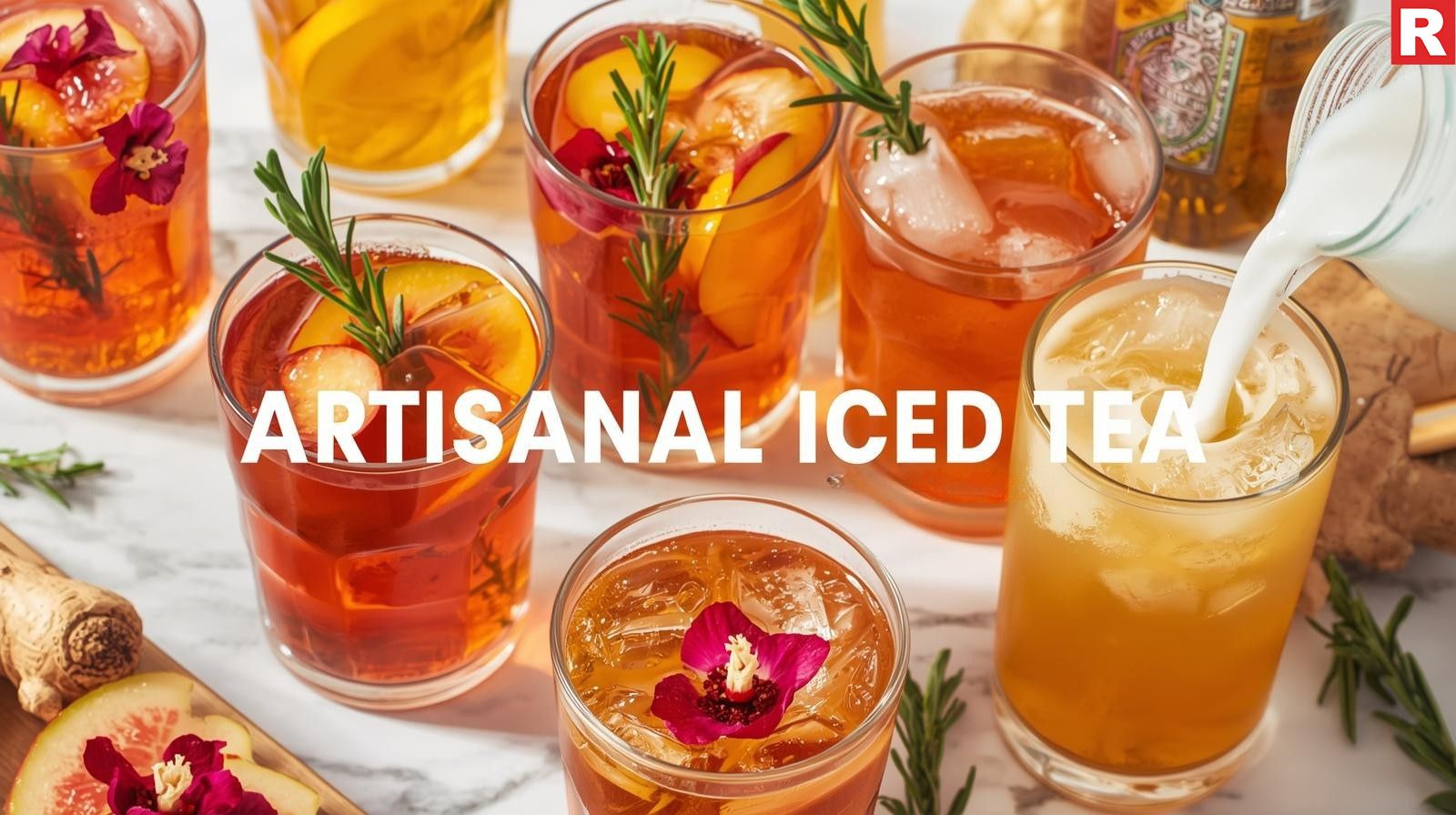
Serve more than simply plain iced tea. Take advantage of this to highlight unique flavors and brewing methods. Cold brewing produces a smoother, less bitter flavor profile, which makes it an excellent method.
Key Selling Point: very customizable with various tea varieties and flavor infusions, refreshing, and low in calories.
Examples:
- Peach & Rosemary White Tea: A delicate white tea flavored with a fragrant rosemary sprig and luscious peach purée.
- Hibiscus & Ginger Iced Tea: The spicy warmth of fresh ginger nicely balances the tartness of hibiscus blooms.
- Masala Chai Iced Latte: Using cold-brewed masala tea concentrate mixed with milk and served over ice, the Masala Chai Iced Latte is a contemporary Indian take on a traditional beverage.
Know more: Best Bar Blender Brands in India – Power, Precision, and Reliability
3. Creative Lemonades and Limeades

A gourmet makeover of a classic that has been around for a while. A basic beverage can be transformed into a memorable one by incorporating different and fresh fruits, herbs, and spices.
Key Selling Point: A beloved classic with a contemporary spin that feels thrilling and new.
Examples:
- Kiwi & Mint Limeade: Fresh kiwi, muddled mint leaves, and lime juice combine to create the bright green Kiwi & Mint Limeade.
- Spiced Orange Lemonade: Freshly squeezed orange and lemon juice with a touch of cloves and cinnamon is called spiced orange lemonade.
- Strawberry Basil Lemonade: The flavorful, peppery undertones of fresh basil and luscious strawberries are well balanced.
4. Specialty Hot and Cold Coffees
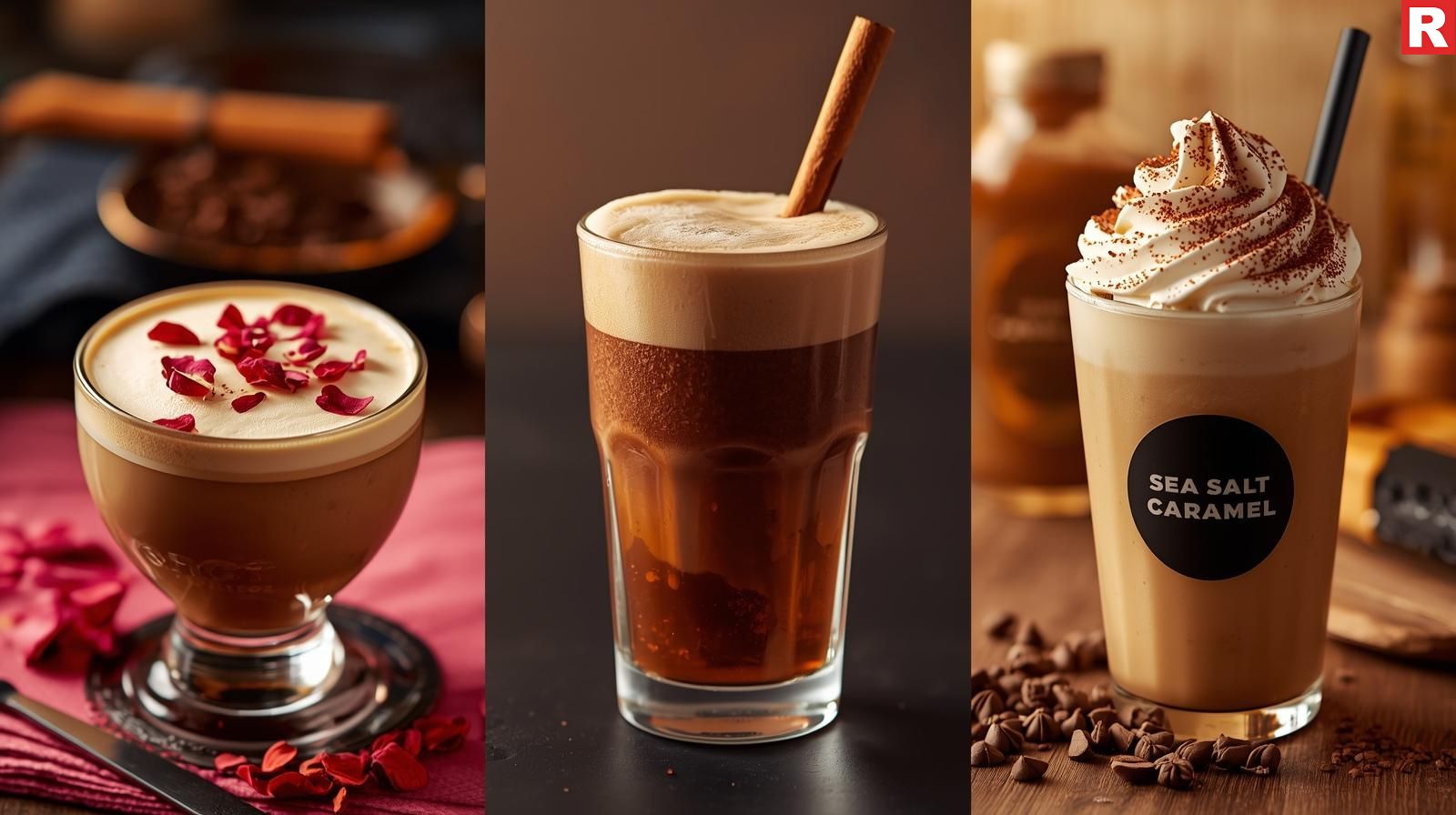
Provide a menu that offers more than the bare minimum to appeal to the expanding market of coffee lovers. Consider cold brew varieties, handcrafted brews, and specialty lattes.
Key Selling Point: Capitalizes on the enormous popularity of specialty coffee culture.
Examples:
- Rose & Cardamom Latte: A sophisticated palate will enjoy this exquisite and aromatic latte made with rose water and a touch of cardamom.
- Nitro Cold Brew with Cinnamon Stick: A cinnamon stick is served alongside a rich, velvety cold brew coffee that has been injected with nitrogen for a creamy head.
- Sea Salt Caramel Frappe: A rich and decadent iced coffee concocted with salted caramel and garnished with whipped cream is called a sea salt caramel frappe.
What's new: Best Whole Wheat Pasta Brands in India
5. House-made Infused Sodas (Shrubs)
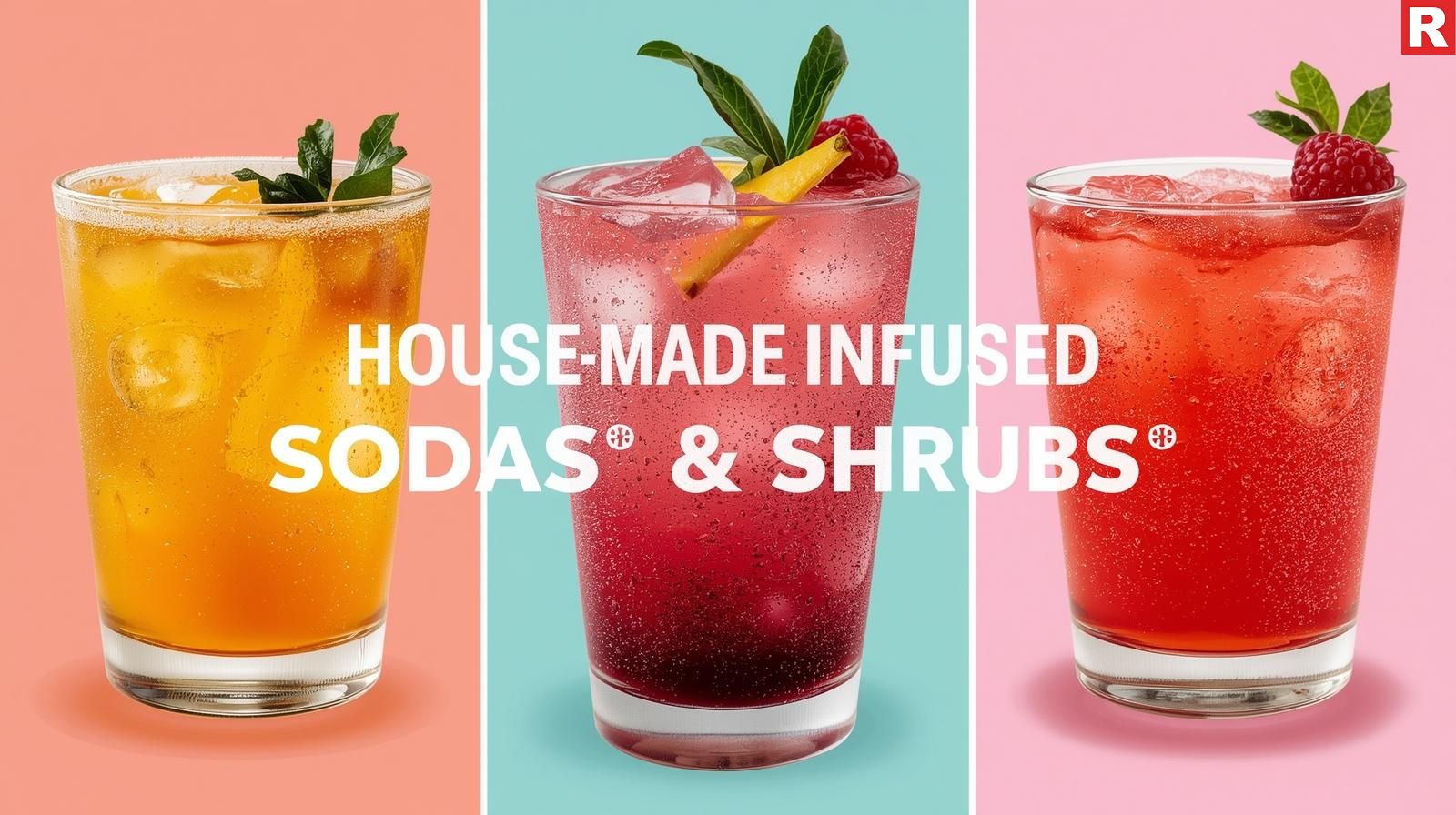
Fruit, sugar, and vinegar are combined to make shrubs, often known as drinking vinegars. They have a distinct tangy-sweet flavor and are frequently combined with sparkling water to make cool beverages.
Key Selling Point: A really unique, adult-flavored craft beverage that differentiates your menu.
Examples:
- Mango and Turmeric Shrub: This shrub combines the earthy warmth of turmeric with a tangy-sweet taste.
- Raspberry & Apple Cider Vinegar Soda: A vibrant, delicious shrub with a strong vinegar tang is raspberry and apple cider vinegar soda.
- Pineapple & Chilli Shrub: The ideal ratio of spicy zing to tropical sweetness.
6. Sophisticated Kombuchas
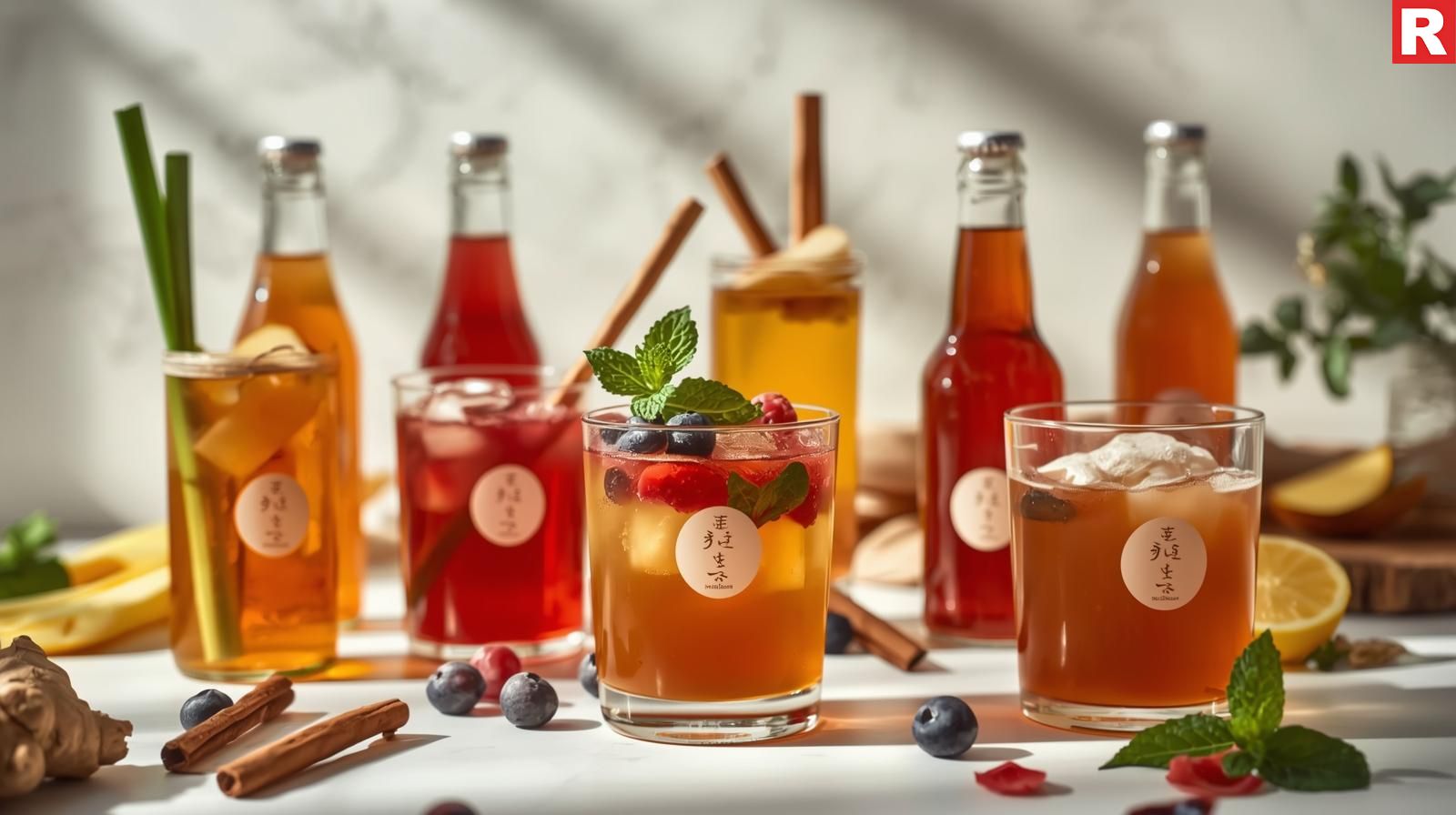
A popular beverage among health-conscious people is kombucha, a fermented tea. Providing a range of high-quality, house-made, or partnered kombuchas can be very appealing.
Key Selling Point: Its distinct flavor and probiotic benefits capitalize on the wellness trend.
Examples:
- Ginger & Lemongrass Kombucha: This energizing and delightful kombucha is spicy and zesty.
- Berry and Mint Kombucha: This kombucha has a mild, herbal finish and is delicious and refreshing.
- Apple & Cinnamon Kombucha: This kombucha has hints of spiced apple and is warm and soothing.
7. Smoothies and Lassi
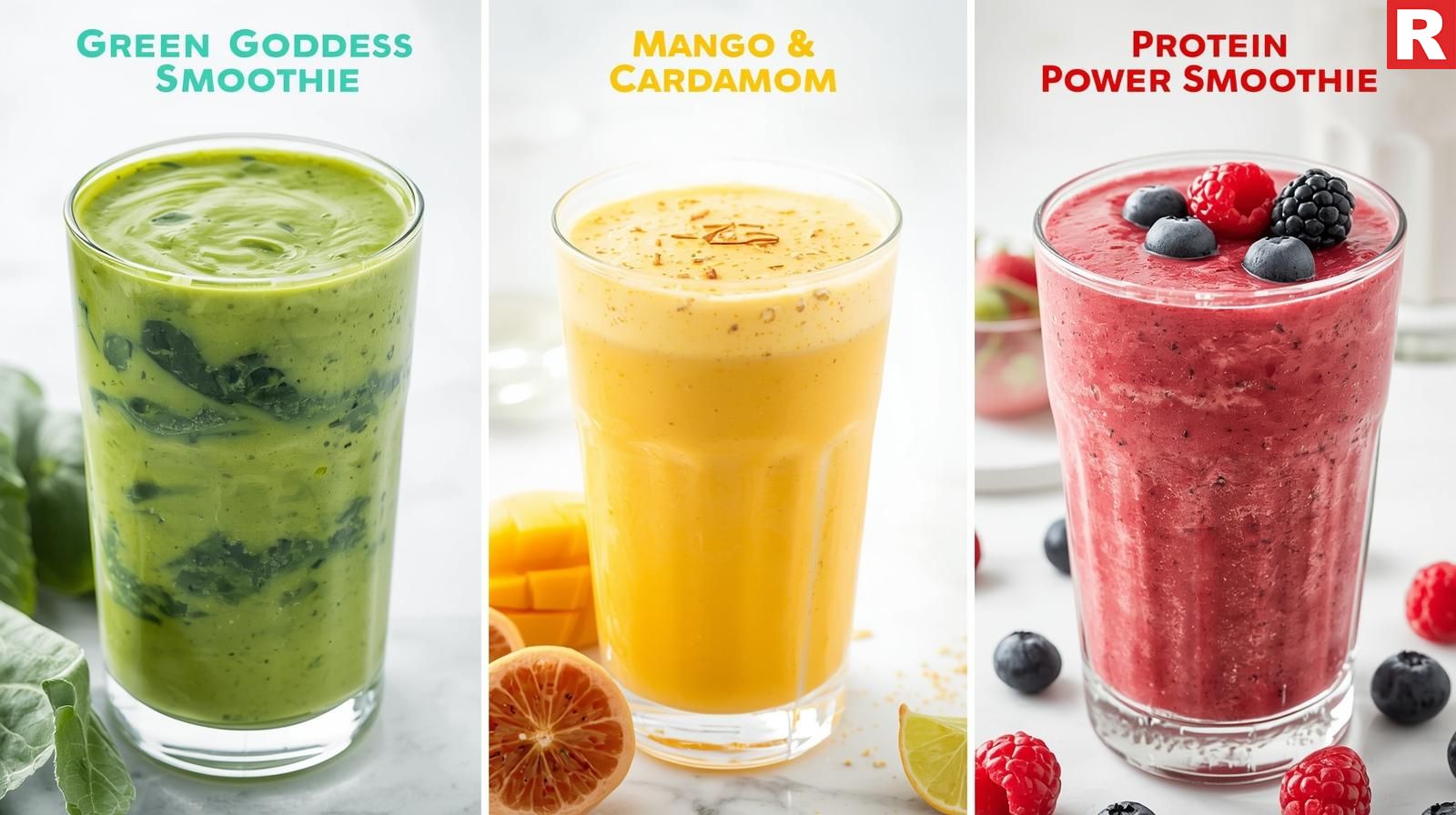
Enhance these traditional drinks with premium ingredients and a gourmet touch. In India, lassi is a common beverage, and a high-end version can serve as its focal point.
Key Selling Point: A satisfying and wholesome choice that may be used as a healthy treat or as a meal substitute.
Examples:
- Green Goddess Smoothie: The Green Goddess Smoothie is a nutrient-dense, creamy drink made with spinach, avocado, banana, and plant-based milk.
- Mango and Cardamom Lassi: This traditional sweet mango lassi is enhanced with a dash of cardamom for a fragrant treat.
- Protein Power Smoothie: A combination of Greek yogurt, protein powder, and berries for a healthy or post-workout meal.
Check out: 10 Best Indian Quinoa Recipes for Weight Loss
Best brown bread brands in India
8. Fresh Juices and Juice Blends
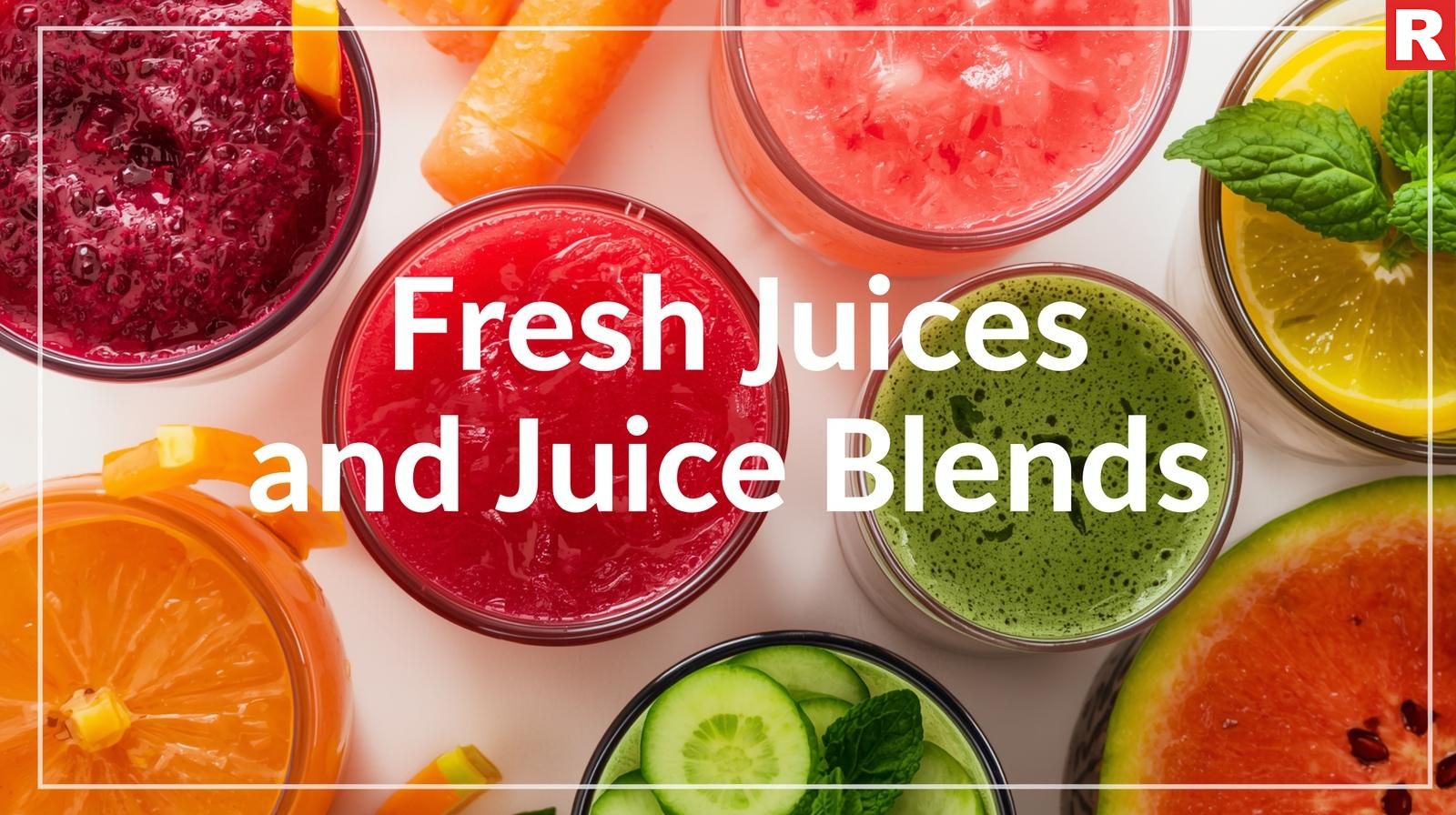
Offer freshly pressed or blended juices instead of prepackaged ones. Fresh juices are always tempting because of their vivid colors and simple, undiluted flavors.
Key Selling Point: A colorful, healthy, and pure option that demonstrates your dedication to using only the freshest ingredients.
Examples:
- Beet, Carrot, Apple & Ginger Juice: A strong, earthy, and spicy juice blend with health benefits is beet, carrot, apple, and ginger juice.
- Watermelon & Mint Juice: Simple, sweet, and refreshing, watermelon and mint juice is ideal for hot weather.
- Spinach, Pineapple, and Cucumber Detox: A crisp and energizing green juice mixture.
9. Non-alcoholic Cocktail Replicas
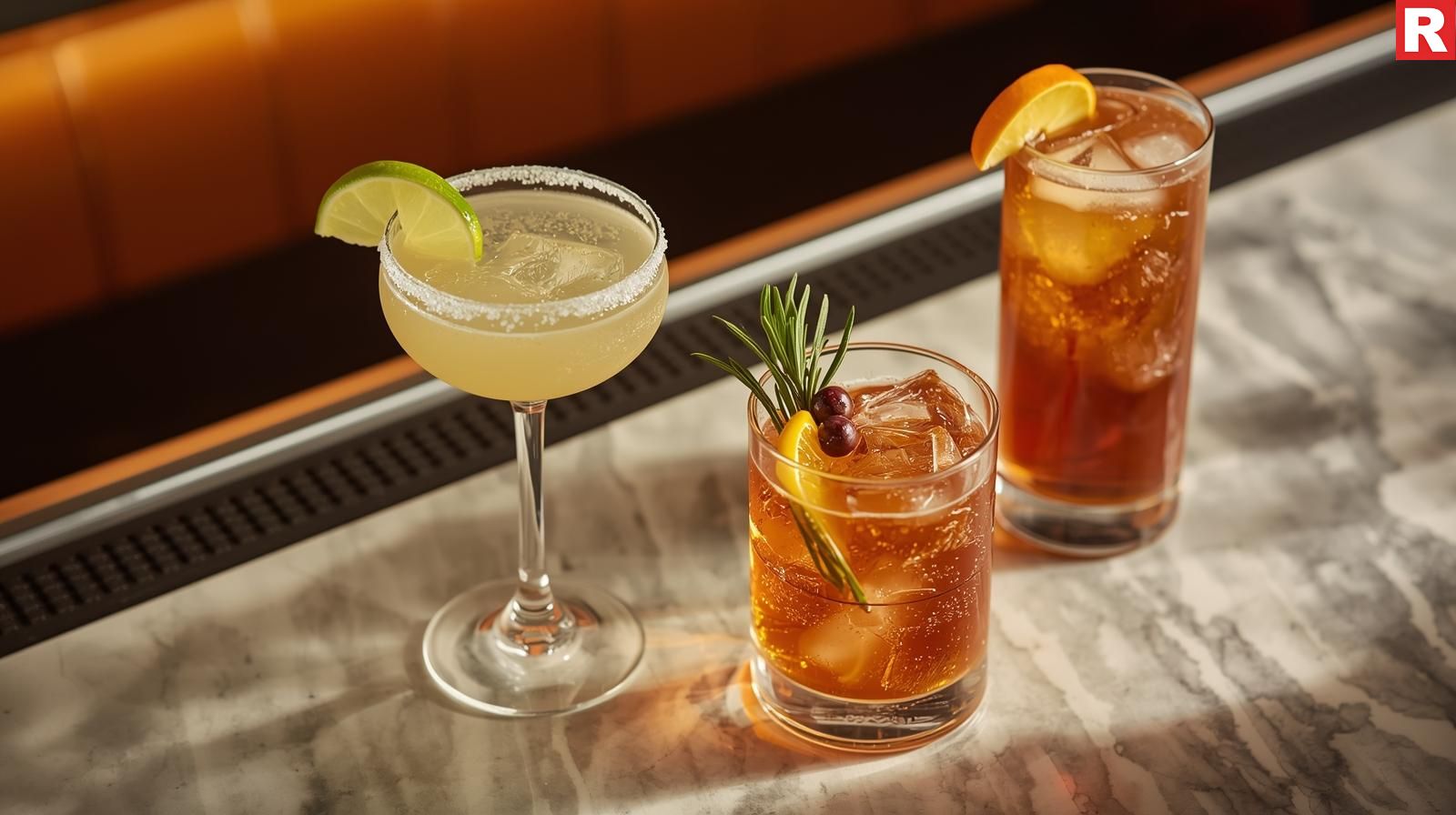
By carefully replicating the flavor profile and sensation of a particular, well-known alcoholic cocktail, this beverage type goes above and beyond the generic mocktail. Restaurants can serve zero-proof versions of traditional drinks like a Mojito, Margarita, or Old Fashioned by using a range of creative non-alcoholic "spirits," bitters, and syrups. In order to give designated drivers and non-drinkers a genuinely authentic-tasting substitute, the objective is not just to substitute the alcohol but also to replicate the original drink's complexity, texture, and aroma.
Key Selling Point: Enables customers to enjoy their favorite beverages without the alcohol content while still providing the full flavor experience and social ritual of a classic cocktail.
Examples:
- NA Spiced Rum & Cola: A perfect imitation of a traditional rum and cola made with a premium non-alcoholic rum substitute that has a hint of spice and molasses.
- Zero-Proof Margarita: This drink is a zesty and revitalizing mixture of fresh lime juice, agave nectar, and a non-alcoholic tequila alternative that is served in a glass with a salt rim.
- Herbal Gin & Tonic: An elegant blend of a botanical non-alcoholic "gin" with fresh botanicals such as juniper berries or rosemary and a high-end tonic water.
10. Flavored Hot Chocolates and Spiced Milks

An excellent choice for dessert or as a cozy drink, particularly at restaurants that welcome families. These can be very well-liked in the winter.
Key Selling Point: A rich, cozy, and kid-friendly substitute for tea or coffee.
Examples:
- Chilli & Cinnamon Hot Chocolate: Rich, black hot chocolate with a subtle spicy sting and a comforting cinnamon undertone is known as "chilli and cinnamon hot chocolate."
- Saffron & Pistachio Badam Milk: This traditional Indian beverage is made with almond milk and enhanced with crushed pistachios and the luxurious taste of saffron.
- Salted Caramel Hot Chocolate: A delightful and comforting blend of sweetness and salt.
Read this: 7 Reasons to Add Macadamia Nuts to Your Daily Diet
Conclusion
A modern restaurant can no longer afford to overlook a unique and dynamic non-alcoholic beverage menu, as it is now a strategic advantage. Restaurants can boost revenue, satisfy evolving customer preferences, and establish themselves as progressive, diverse dining places by adopting these top ten non-alcoholic drink concepts. In today's time, providing a genuinely appealing zero-proof menu is a potent method to improve the visitor experience and guarantee that your business stays at the forefront of the hospitality sector in the cutthroat culinary industry.

The idea of luxury is changing quickly in a time where immediate satisfaction is available with every tap, swipe, and click. In a busy city like New Delhi, luxury isn't just about Michelin stars and white tablecloths for the modern diner; it's also about immediate satisfaction, ease of access, and convenience. This change is particularly noticeable in the restaurant business, where the common "food near me" and "open now" search terms have developed into potent success indicators. In addition to altering how people find meals, these straightforward searches—driven by the stressed-out, smartphone-wielding metropolitan customer—are also drastically changing restaurant business models by elevating speed and availability to the new standards of exceptional customer service.
This in-depth article explores this fundamental change and how "open now" and "food near me" searches are changing restaurant business models. We'll look at the creative tactics successful restaurants are using to meet this need for immediate foodie satisfaction as well as to prosper in a fiercely competitive, on-demand digital economy where speed is actually the new luxury.
Read more: Top Eco-friendly Cleaning Product Brands in India for Restaurants
What "Luxury" Means in the Digital Age
Traditionally, privilege, custom service, and time-consuming activities were associated with luxury. Although they are still valuable, a new kind of luxury has surfaced: the luxury of quick satisfaction of desires, the luxury of seamless convenience, and the luxury of time savings.
- Time Scarcity: Time is a valuable resource in a city that moves quickly, like Indian metropolitan cities. Customers are prepared to pay for services that save them time, such as quick delivery or easily accessible options.
- Smartphone as Assistant: The smartphone has evolved into an extension of the self, a personal butler that is always available and can instantly attend to any need, including hunger.
- "Hunger Now, Food Now": Often, the urge to eat comes suddenly. "Open now" simplifies the decision-making process by eliminating possibilities that aren't available, meeting this pressing demand.
- Proximity and Relevance: By utilizing location technology, "Food near me" offers highly relevant selections, cutting down on travel time and optimizing convenience.
- Erosion of Planning: Rather than being a rare event, unexpected meal choices are increasingly becoming the norm. Impulsive and unplanned meals are immediately responded to by these searches.
Understanding speed and accessibility as a new form of "luxury service" is essential for restaurants in Indian cities, which are known for their diversified culinary scene and picky customers, to secure a major share of the market.
Speed & Service: The New Restaurant Models

Restaurants are being forced to modify their basic operations in several crucial areas due to the popularity of "food near me" and "open now" searches:
Digital Dominance & Hyperlocal SEO:
The restaurant's website is now the main point of inquiry rather than a supplemental resource.
- The pinnacle is Google My Business (GMB): GMB profiles are crucial for "open now" and "food near me" searches. Restaurants need to make sure they carefully optimize their GMB listings with:
- Precise Location: Map pin and address are correct.
- Current Hours: A real-time display of the hours of operation, including any temporary closures or special holidays. The "open now" filter depends on this.
- Excellent Images: Eye-catching pictures of cuisine, interiors, and exteriors.
- Comprehensive Services: Clearly describing delivery, catering, dine-in, takeout, etc.
- Active Review Management: Immediate response to reviews greatly increases trust and visibility.
- Mobile-First Website & Online Ordering: It is essential to have a website that loads quickly and is responsive, as well as an easy-to-use online ordering system (or clear links to delivery aggregators). On a small screen, menus must be simple to use.
- Aggregator Optimization (Zomato, Swiggy, etc.): Restaurants need to actively manage their profiles on major delivery platforms in addition to simply being present. This includes:
- Precise menus and prices: guaranteeing uniformity on all platforms.
- Quick Order Acceptance & Fulfillment: Platform ratings and customer happiness depend on speed.
- Strategic Promotions: Using platform-specific offers to draw in "near me" and "open now" users is known as strategic promotion.
- Social Media for Local Buzz: By increasing local brand recognition and displaying current items, an active social media presence can impact "near me" choices even though it is not directly related to search parameters.
Know more: 4 checklists how to boost your restaurant searches???
Operational Flexibility & Extended Hours
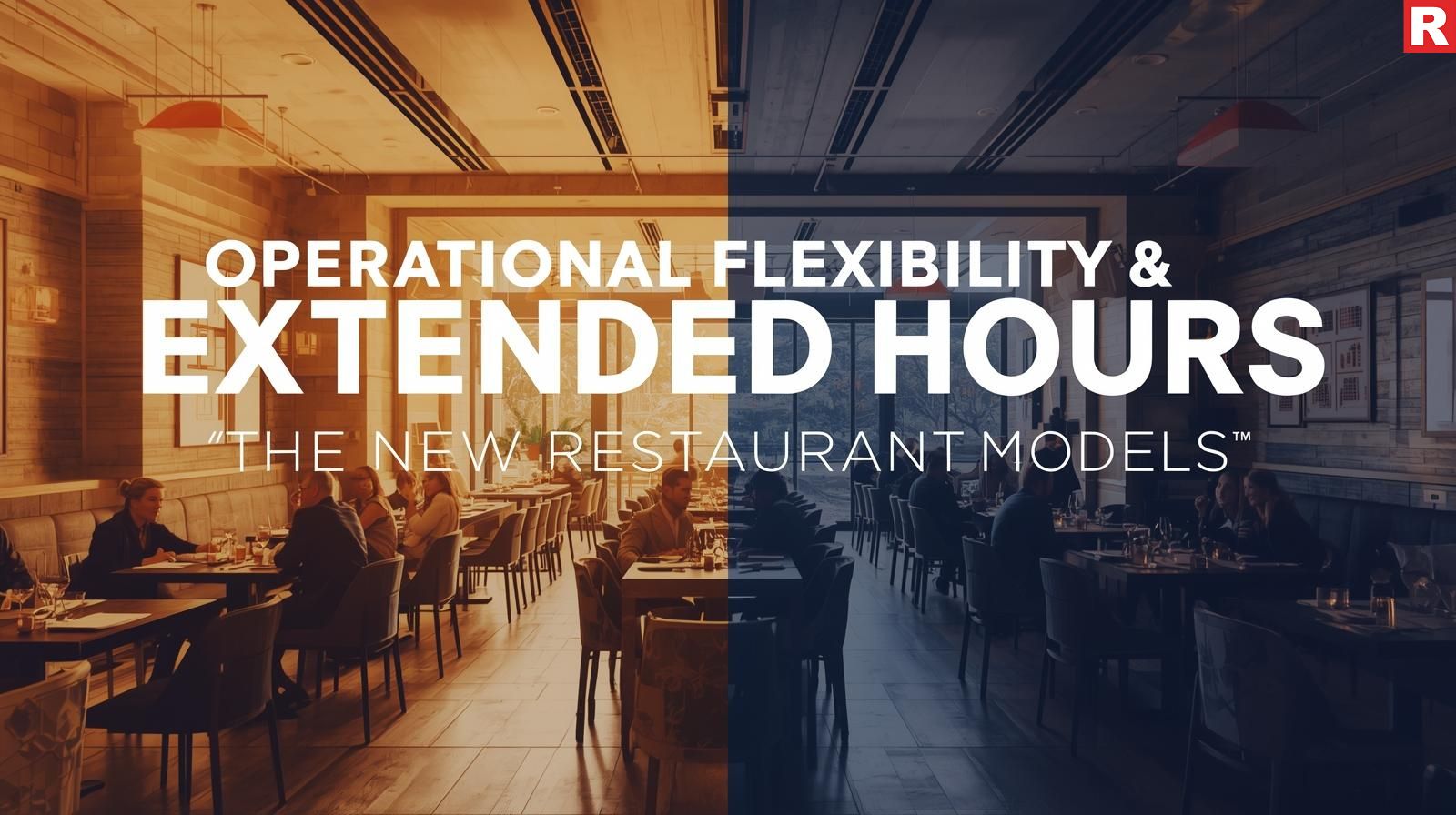
Restaurants are reconsidering strict operation schedules in order to meet irregular demand.
- Staggered Shifts & Rotational Menus: Many restaurants are providing extended windows to accommodate late lunches, early supper, or post-work cravings in place of a single opening and closing hour.
- Early-morning/late-night services: The dynamic nightlife and rigorous work culture of cities generate demand for food at odd hours. In order to capitalize on a profitable market, restaurants are adjusting to be "open now" when others are closed.
- Dark stores and cloud kitchens: These are models specifically made for "open now" and "food near me" searches. They optimize availability across several brands and concepts by operating from delivery-only kitchens, frequently with longer hours and lower expenses. Digital orders form the foundation of their entire infrastructure.
- Effective Kitchen Management: Kitchens require multitasking staff, efficient workflows, and strong inventory management to keep up with long hours.
Delivery & Takeaway Excellence
The phrase "food near me" frequently implies "food delivered to me." This means one of the main services is quick and easy delivery.
- Systems of Integrated Delivery: From order placement to doorstep delivery, the delivery process must go smoothly, whether using private vehicles or third-party aggregators. One high-end expectation is real-time tracking.
- Packaging Innovation: It's essential to make investments in premium, environmentally friendly, and temperature-resistant packaging. The food must be presented as appetizing and fresh, as if it were served in the restaurant.
- "Delivery-Friendly" Menu Engineering: Chefs are using menu engineering to create dishes that are easy to transport while retaining flavor and texture. This could include sorting sauces, breaking down food, or concentrating on hearty dishes.
- Dedicated Pickup Points: Customers who choose "food near me" and self-pickup benefit from specific, practical pickup areas, which accelerate the process.
What's new: How Health & Wellness Trends Are Redefining Indian Dessert Menus
Menu Strategy & Pricing
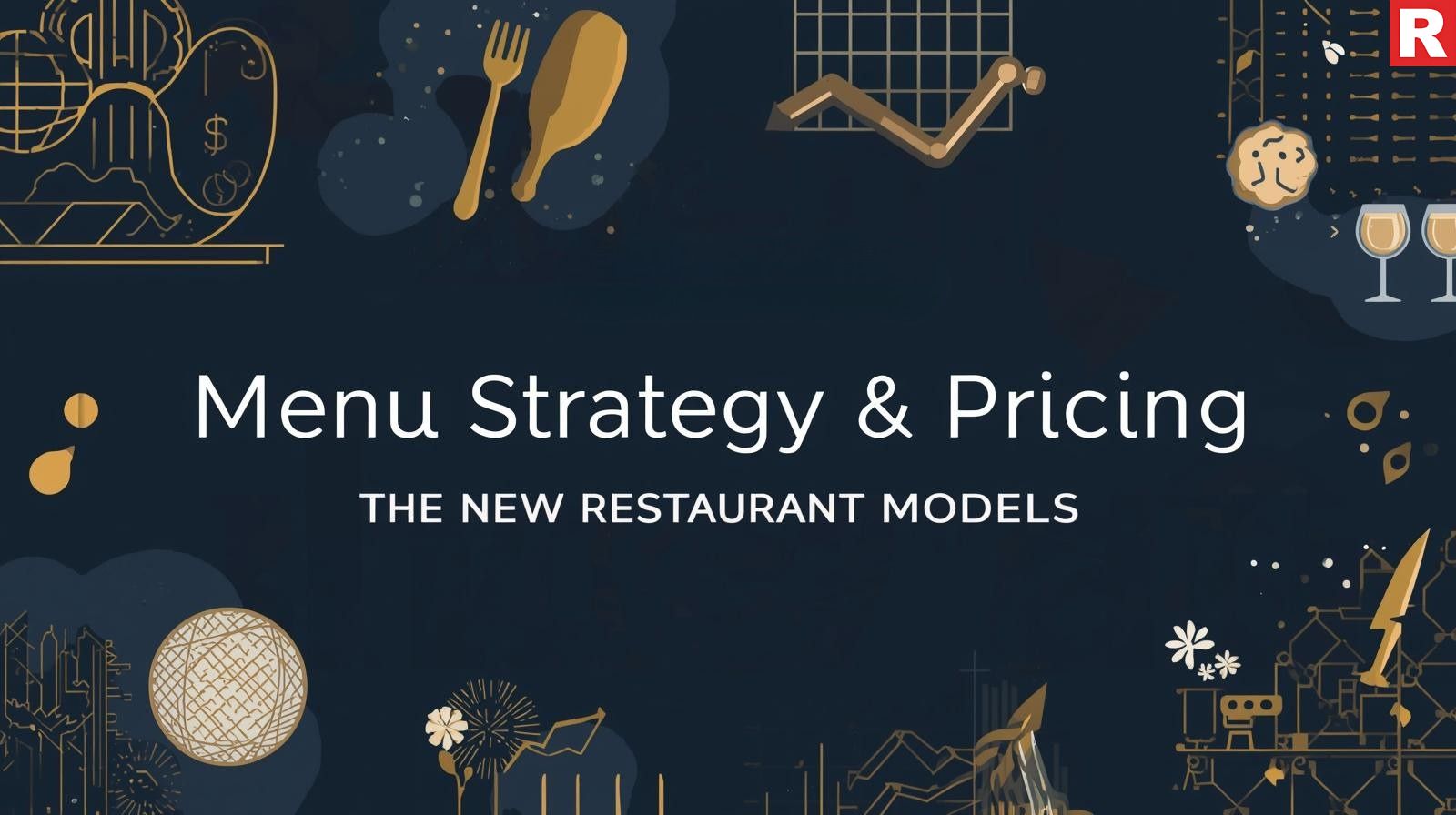
Local searches make restaurants update their menus often.
- Curated & Focused Menus: Variety is great, but having too many options might make ordering take longer. Many restaurants have delivery menus that are targeted and feature well-liked, fast-selling goods.
- Value-Driven Combos & Deals: Restaurants provide combo meals, family packs, or daily specials to attract budget-conscious "food near me" searches.
- Emphasizing Convenience & Speed: To appeal to the "speed is luxury" mentality, menus frequently include keywords like "quick bites," "ready in 15 minutes," or similar phrases.
- Competitive Intelligence: To stay competitive in "near me" search results, rival products and prices within their delivery radius are continuously monitored.
- Seasonal & Trending Items: Menus can be quickly modified to include popular meals or ingredients, which may cause "near me" searches to spike.
Check out: Top Electric Cooker Brands for Restaurants in India
Top Dishwashing Machine Brands in India
Data-Driven Decision Making

Every "open now" and "food near me" search produces useful information that smart restaurateurs use.
- Geographic Demand Hotspots: Examining the origins of searches enables the identification of areas that are neglected for possible growth or focused advertising.
- Peak Search & Order Times: Staffing, inventory preparation, and promotional timing can all be optimized by determining when demand peaks.
- Popular Search Terms: Knowing which particular foods, cuisines, or dietary requirements consumers look for can help with menu planning and advertising.
- Delivery Performance Metrics: Monitoring order accuracy, customer satisfaction, and delivery times to continuously improve the quick service model.
Read this: Best Flour Brands in India for Pizza & Bakery Restaurants
India's Culinary Environment Responds
Every major metropolis and even smaller urban areas are feeling the consequences of these search trends in India's diverse and ever-changing culinary landscape:
- Old-School Restaurants Update: To guarantee they show up prominently in "food near me" results, even long-standing, traditional restaurants, from busy dhabas to famous fine-dining establishments, are investing in Google My Business (GMB) optimization and collaborating with aggregators. To preserve their past and broaden their reach, they must strategically embrace contemporary digital discovery.
- The rise of the micro-cuisine: This can be linked to the ease of online discovery, which has resulted in a growth of specialized restaurants and specialty cloud kitchens that serve highly focused cuisines. These ideas are fueled solely by "near me" searches and satisfy specific food demands and desires of metropolitan people.
- The "Any Time, Any Place" Mentality: Restaurants that offer delivery services and extended hours perfectly reflect India's fast urbanizing and always-on lifestyle. From late-night snack alternatives to early morning breakfast delivery, they are actively satisfying the "open now" demand all day and night while accommodating a variety of social and professional schedules.
- Advantage for brands: Prioritizing Digitalization: Market share is rapidly increasing for new restaurant businesses with effective digital marketing and a smooth delivery system. These innovative brands are establishing new standards in a fiercely competitive market by emphasizing online discoverability, speed optimization, and providing an engaging digital experience.
Conclusion
In metropolitan areas, "food near me" and "open now" searches have completely changed the definition of a profitable restaurant business plan. They draw attention to a significant change in consumer values, where traditional eating experiences are frequently valued less highly than the luxury of ease and instant pleasure. Successful restaurants are those that actively welcome this change by carefully enhancing their online presence, modifying their business practices to maximize availability, refining their delivery and takeout options, creating responsive menus, and using data to make well-informed decisions. This localized, on-demand model has a connection to the future of dining. Recognizing that speed is the new luxury means more than just keeping up. For restaurateurs, it means paving the way for a more flexible, customer-focused, and ultimately more profitable culinary future, one swift search and satisfied craving at a time.

Cleaning is not only an act of virtue in the highly regulated and competitive world of commercial kitchens; it is also a legal duty, a health requirement, and a foundational element of a restaurant's reputation. The sheer volume of cleaning that restaurants in busy metropolises must do every day, from sterilizing worktops and dazzling dishware to removing grease from stoves, has historically demanded the use of strong, frequently harsh chemical cleansers. But a major shift in mindset is in progress. Restaurants are now actively looking for and implementing eco-friendly cleaning solutions due to rising consumer desire for sustainable businesses, stricter health and safety laws, and increased environmental awareness.
This in-depth article explores the key factors that led to the commercial food service sector's shift to green cleaning. The Top Eco-friendly Cleaning Product Brands in India for Restaurants will be highlighted, along with their formulas, effectiveness, and compatibility for the demanding requirements of professional kitchens. We will also examine the unique needs of restaurants. This guide provides a crucial road map for restaurateurs who want to promote sustainability and achieve perfect hygiene.
Read more: Top Eco-friendly Packaging Brands for Restaurants
Why Eco-Friendly is Essential for Commercial Kitchens
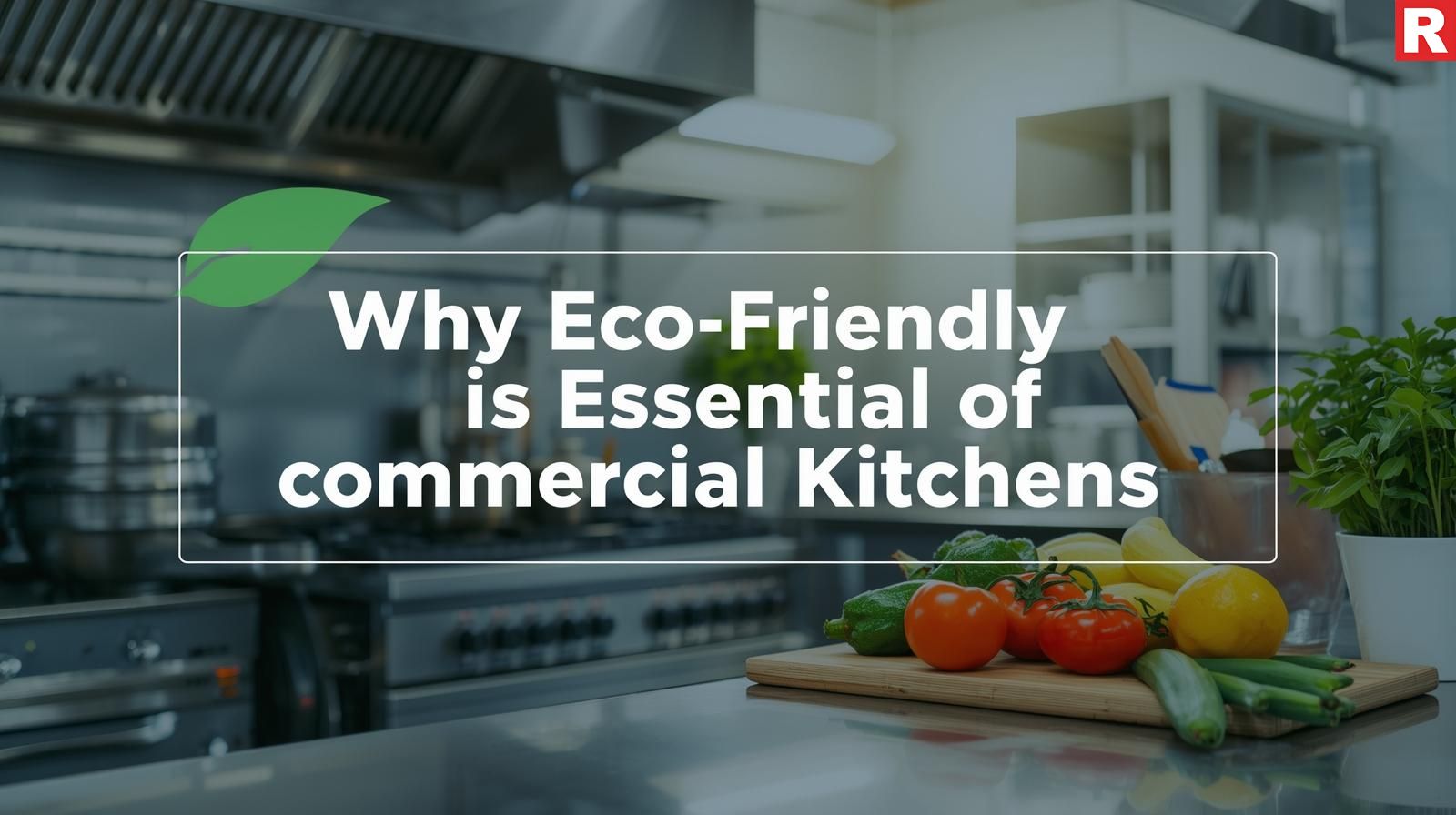
There are more reasons than just environmental concerns to implement eco-friendly cleaning practices in restaurants:
- Enhanced Food Safety & Hygiene: Many traditional cleaners leave chemical residues after sanitizing. Food-grade, environmentally friendly cleaners guarantee that surfaces are safe for food preparation and germ-free, lowering the possibility of chemical contamination.
- Employee Health and Safety: Cleaning chemicals and odors are frequently used by kitchen staff. Skin irritations, respiratory problems, and long-term health hazards are significantly reduced by non-toxic, biodegradable products, which also improve workplace health and reduce turnover.
- Consumer Perception & Brand Image: Modern diners are becoming more concerned about sustainability, particularly in health-conscious metropolitan cities. Restaurants that openly display their dedication to eco-friendly procedures (such as cleaning) improve their reputation, draw in eco-aware customers, and build trust.
- Environmental Safety & Rules: As environmental rules become ever stricter, restaurants can remain ahead of the curve and prevent fines by implementing green cleaning methods immediately.
- Odor Control: Strong chemical odors have the potential to ruin a meal. Cleaners that are natural, scented, or based on essential oils create a clean, fresh atmosphere.
- Reduced Water and Energy Use: A lot of environmentally friendly business solutions are concentrated, don't need to be rinsed as often, or perform well with cold water, which lowers utility costs.
- Equipment longevity: Over time, harsh chemicals can deteriorate kitchen surfaces and appliances. Natural, milder formulas are frequently kinder and prolong the life of expensive products.
- Waste Management: Companies that specialize in bulk, concentrated, or reusable products drastically cut down on plastic waste in business environments with large volumes.
Defining "Eco-Friendly" for Commercial Cleaning

"Eco-friendly" in the context of the restaurant business means:
- High Performance: Under intense commercial use, it must meet or beyond the cleaning and sanitization requirements of conventional products.
- Food-Grade Safety: Non-toxic products that rinse well without leaving any hazardous residues are required for surfaces that come into contact with food.
- Biodegradable & Non-Toxic: All active substances should decompose spontaneously and be devoid of synthetic scents, phosphates, chlorine, ammonia, phthalates, and reactive organic compounds.
- Concentrated Formulas: Necessary for commercial use to cut down on storage space, shipping expenses, and packaging.
- Sustainable Packaging: Reusable, bulk, or highly recyclable containers are examples of sustainable packaging that reduce waste from heavy use.
- Certified: Although particular Indian commercial certifications are still developing, look for certifications such as Green Seal, EcoLogo, or other acknowledged environmental brands.
- Cruelty-Free: No animal testing is done.
Know more: How Carbon-Labelled Menus Attract Eco-Friendly Diners
Top Eco-Friendly Cleaning Product Brands in India for Restaurants

The following are some of the top brands offering eco-friendly and efficient cleaning products designed specifically for the Indian food service sector:
1. Diverse
Diversey, a multinational leader in cleaning and hygiene products, has made great progress in building a robust line of environmentally friendly goods for India's business market. Diversey is well-known for its extensive line of advanced cleaning and sanitation products with scientific support, many of which are certified green. From floor care and guest room cleaning to kitchen and warewashing, they provide solutions for every aspect of a restaurant.
Key Highlights:
- "SmartDose" & "J-Fill" Systems: They provide closed-loop dispensing systems for ultra-concentrated formulae, guaranteeing accurate dose, reducing waste, and shielding employees from chemical exposure.
- "TASKI" Floor Care: Several TASKI floor cleaners are biodegradable and low-VOC, providing superior results with less of an adverse effect on the environment.
- "Sumabac" & "Suma" Ranges: Advanced kitchen degreasers, sanitizers, and dishwashing detergents designed for food safety and environmental responsibility are part of the "Sumabac" and "Suma" ranges.
- Sustainability Commitment: A strong worldwide dedication to cutting waste, energy, and water through advancements in equipment and products.
Why it stands out: The combination of environmental responsibility and industrial-grade performance is what makes Diversey so strong. Large hotels, chain restaurants, and institutional kitchens in New Delhi that need comprehensive and integrated green cleaning solutions choose them because of their large-scale, efficiency-focused methods.
What's new: How Health & Wellness Trends Are Redefining Indian Dessert Menus
2. Ecolab
With a major presence in India's hospitality industry, Ecolab is another world leader in water, hygiene, and energy products and services. Ecolab is well-known for its comprehensive approach to sustainability and operational efficiency, providing solutions that maximize resource utilization while still being clean. They have a wide choice of environmentally friendly products that cover everything from laundry and dishwashing to facility cleaning and kitchen sanitation.
Key Highlights:
- Products with Green Seal Certifications: A large number of products have strong environmental certifications that guarantee strict compliance with green standards.
- Low-Phosphate and Phosphate-Free: A lot of laundry and dishwashing products are made to have less of an adverse effect on water bodies.
- Precision Dispensing: Like Diversey, Ecolab offers cutting-edge dispensing systems that guarantee that product concentration is preserved, minimizing waste and excessive usage of chemicals.
- Water & Energy Savings: Restaurants can save a lot of money on utilities by using solutions that operate well at lower temperatures or with less water.
Why it stands out: Ecolab offers a comprehensive approach to operational sustainable development, which makes it perfect for restaurants and hotels that are seeking not only eco-friendly items but also solutions that lower operating expenses and their total environmental impact.
3. Karcher
Karcher is best known for its high-pressure washers and floor care supplies, but they also sell a variety of environmentally friendly cleaning products that are ideal for use in commercial settings, especially when used with their equipment. Karcher is well-known for its German engineering, robustness, and expanding range of extremely efficient but eco-friendly cleaning products for floors, surfaces, and equipment.
Key Highlights:
- "Eco!Logic" Range: Highly concentrated, biodegradable detergents made from renewable resources are part of their "Eco!Logic" line, which is frequently packaged in recyclable materials.
- Machine Compatibility: Designed to maximize effectiveness and reduce chemical usage when used with Karcher's line of cleaning equipment.
- Strong & Safe: Provides effective surface, degreasing, and kitchen floor cleaning results while being environmentally friendly.
Why it stands out: Karcher provides a smooth integration of green detergents that improve the sustainability of their entire cleaning operations for restaurants that now use or intend to purchase professional cleaning equipment.
Check out: How Eco-friendly packaging disrupting the f&b industry
Instagram-Worthy Interior & Food Styling Trends That Are Driving Footfalls in Metro Cities
4. Beco Commercial
Although Beco is more well-known for its zero-plastic cleaning solutions for homes, businesses like Beco are gradually seeing their commercial potential. Beco would probably become well-known for the following if or when it expands its product line to a specific restaurant commercial line:
Key Highlights:
- Truly Zero-Plastic Commercial Solutions: Offering bulk, industrial-sized packaging that is biodegradable, compostable, or refillable, Truly Zero-Plastic Commercial Solutions is revolutionizing the way that commercial waste is reduced.
- High-Concentrate Plant-Based Formulas: Upholding the basic principles of powerful, all-natural cleaning solutions made from plants, but enhanced for rapid action and commercial potency.
- Targeted Kitchen Solutions: creating specialized formulas for commercial kitchens, such as hygienic warewashing detergents, food-safe sanitizers, and strong grease removers.
- Strong Ethical Position: Appealing to an expanding ethical customer base, the company is continuing its dedication to cruelty-free and vegan products.
Why it stands out: With its unmatched dedication to plastic-free solutions, Beco's possible entry into the commercial sector will likely shake up the industry and provide a genuinely innovative option for restaurants seeking to have as little of an impact as possible on the environment. Assuming Beco increases its commercial line, this entry is forward-looking.
5. Local & Regional Eco-Friendly Brands
In addition to the well-known domestic and foreign companies, India's thriving business sector is supporting several smaller, regional companies that focus on environmentally friendly cleaning. Known for their direct-to-consumer strategy, utilization of traditional Indian ingredients (such as soapnuts, citrus peels, and natural vinegar), and frequently more affordable options, these firms are well-known.
Key Highlights:
- Natural & Ayurvedic Inspired: Natural extracts and traditional Indian cleaning techniques serve as sources of inspiration for many.
- Cost-effective: Frequently provide goods at affordable costs, enabling smaller businesses to adopt green cleaning practices.
- Customization: Some smaller manufacturers may provide larger customized orders or greater flexibility.
- Community Support: The local economy benefits from favoring regional brands.
Why it stands out: These regional providers offer appealing, genuine, eco-friendly options for independent restaurants, cloud kitchens, and smaller cafes that value direct connections, local sourcing, and cost-effectiveness. It is advised to conduct thorough research on certificates and performance.
Read this: Top Dishwashing Machine Brands in India
Conclusion
Using eco-friendly cleaning supplies is now an intelligent commercial choice for restaurants rather than an extra option. It's a potent method to improve food safety, safeguard the health of employees and consumers, create brand recognition, and benefit the environment. While local and emerging companies offer creative, frequently plastic-free or naturally inspired alternatives, well-known, high-performance green solutions for commercial scale are offered by firms like Diversey, Ecolab, and Karcher.
Restaurants can make their dining spaces healthier, safer, and more appealing by carefully selecting suppliers that share their values and giving top priority to goods that provide unwavering sustainability and flawless cleanliness.

The food sector of India is undergoing a significant transformation in a way that we might have never even thought about in the past. We know that the final star of any Indian meal is a rich and sweet dessert. However, the wave of health and wellness trends has marked its territory in this culinary realm. Across the metro cities, the diners are becoming more and more health-conscious and choosing options that are aligned with their healthier lifestyles. This also includes that sweet dishes are no longer allowed to be too unhealthy or too sweet. This has led to a significant shift in the dessert menus of many restaurants, cafes, and bakeries. Desserts that provide "less sugar, more function," combining healthy ingredients and thoughtful preparation methods, are becoming more and more popular.
This in-depth article explores the interesting relationship between traditional Indian desserts and modern health issues. The main health and wellness trends that are revolutionizing Indian dessert menus will be discussed, along with how chefs and restaurateurs in metro cities are coming up with creative ways to serve healthy, nutritious, and delightful sweets that will draw in more customers and satisfy evolving palates.
Read more: Instagram-Worthy Interior & Food Styling Trends That Are Driving Footfalls in Metro Cities
Why Health is the New Sweetness

Indian desserts have long been associated with huge quantities of dairy, ghee, and sugar. However, this practice is being challenged by several cultural and health-driven shifts:
- Growing Health Awareness: People are becoming more conscious of their sugar intake as a result of growing awareness of lifestyle diseases, including diabetes, heart disease, and obesity.
- Dietary Restrictions & Preferences: As more people follow particular diets (vegan, gluten-free, keto) or suffer from allergies, there is a growing demand for dessert options that are nutritious.
- Global Influences: Indians' taste for substitute sweeteners and ingredients has expanded as a result of exposure to global health food trends, such as plant-based diets and superfoods.
- Demand for "Clean Eating": Customers are closely examining ingredient labels and favoring healthy, natural ingredients over synthetic ones.
- Emphasis on "Functional Foods": People are looking for foods that provide health advantages beyond basic nutrition, such as components that improve digestion, increase immunity, or give long-lasting energy.
- Social media and wellness influencers: Wellness trends are amplified by online platforms, which foster a community around healthy eating and motivate customers to look for healthier options.
Adapting to these developments is crucial for restaurants in competitive metropolitan settings in order to stay relevant and take advantage of a sizable and expanding market segment.
Key Health & Wellness Trends Redefining Indian Desserts
Indian desserts are undergoing a complex transformation that touches on appearance, ingredients, and preparation techniques.
The Low-Sugar & Sugar-Free Movement

This movement, which directly addresses the health issues associated with excessive sugar consumption, is arguably the most well-known.
The Challenge: Traditional Indian sweets like rasgulla, jalebi, and gulab jamun are high in sugar. It's an art to recreate their essence without the sugar.
Innovations:
- Natural Sweeteners: Using jaggery, dates, figs, honey, maple syrup, stevia, erythritol, and monk fruit extract instead of refined sugar. These provide extra nutrition and sweetness with a reduced glycemic index.
- Fruit-Based Sweetness: Making greater use of fruits' inherent sweetness. Consider desserts that are mostly sweetened with apple sauce, berry compotes, or mango puree.
- Reduced Sugar Versions: Providing traditional desserts with a much lower sugar content so that the inherent flavors of other ingredients can be highlighted.
Impact on Desserts: Date-syrup-based gulab jamuns, jaggery-sweetened kheer, date-and-nut-based laddus, and halwas made with natural fruit sugars.
Know more: Best Wine Chiller Brands for Restaurants
Plant-Based & Vegan Adaptations

Indian desserts, which have historically relied on dairy, are changing to plant-based alternatives as veganism and dairy-free diets become more popular.
The Challenge: The main ingredients of many Indian desserts are paneer, ghee, and khoa (reduced milk solids).
Innovations:
- Nut Milks: Kheer, rabri, and malai are made with almond, cashew, coconut, and oat milk as a basis.
- Coconut milk or cream: To provide richness and smoothness to payasam and barfis.
- Plant-Based Ghee Substitutes: Making use of vegetable oils, coconut oil, or vegan butter.
- Tofu/Cashew Cream: Used in some dishes to give them textures akin to paneer or khoa.
Impact on Desserts: Cashew cream-based vegan ras malai, plant-based milk and coconut oil-based moong dal halwa, and flavor-enhancing coconut fudge (nariyal barfi).
Gluten-Free & Allergen-Friendly Options

Bakers are looking at alternative flours as a result of increased knowledge of celiac disease and a broad demand for gluten-free meals.
The Challenge: Refined flour (maida) or wheat flour (atta) is used in many Indian desserts.
Innovations:
- Nut flours: They include cashew flour, coconut flour, and almond flour.
- Grain Alternatives: Buckwheat (kuttu), amaranth (rajgira), millet flours (ragi, bajra), rice flour, and tapioca flour are substitutes for grains.
- Legume-Based Flours: A common ingredient in many Indian desserts, such as ladoos and mysore pak, which is besan, or chickpea flour, is naturally gluten-free.
Impact on Desserts: Gluten-free gulab jamun made with millet flour, ragi barfi, almond flour halwa, and besan laddus, all naturally gluten-free, are emphasized for being allergy-friendly.
What's new: How Health & Wellness Trends Are Redefining Indian Dessert Menus
The Rise of "Functional" Ingredients & Superfoods
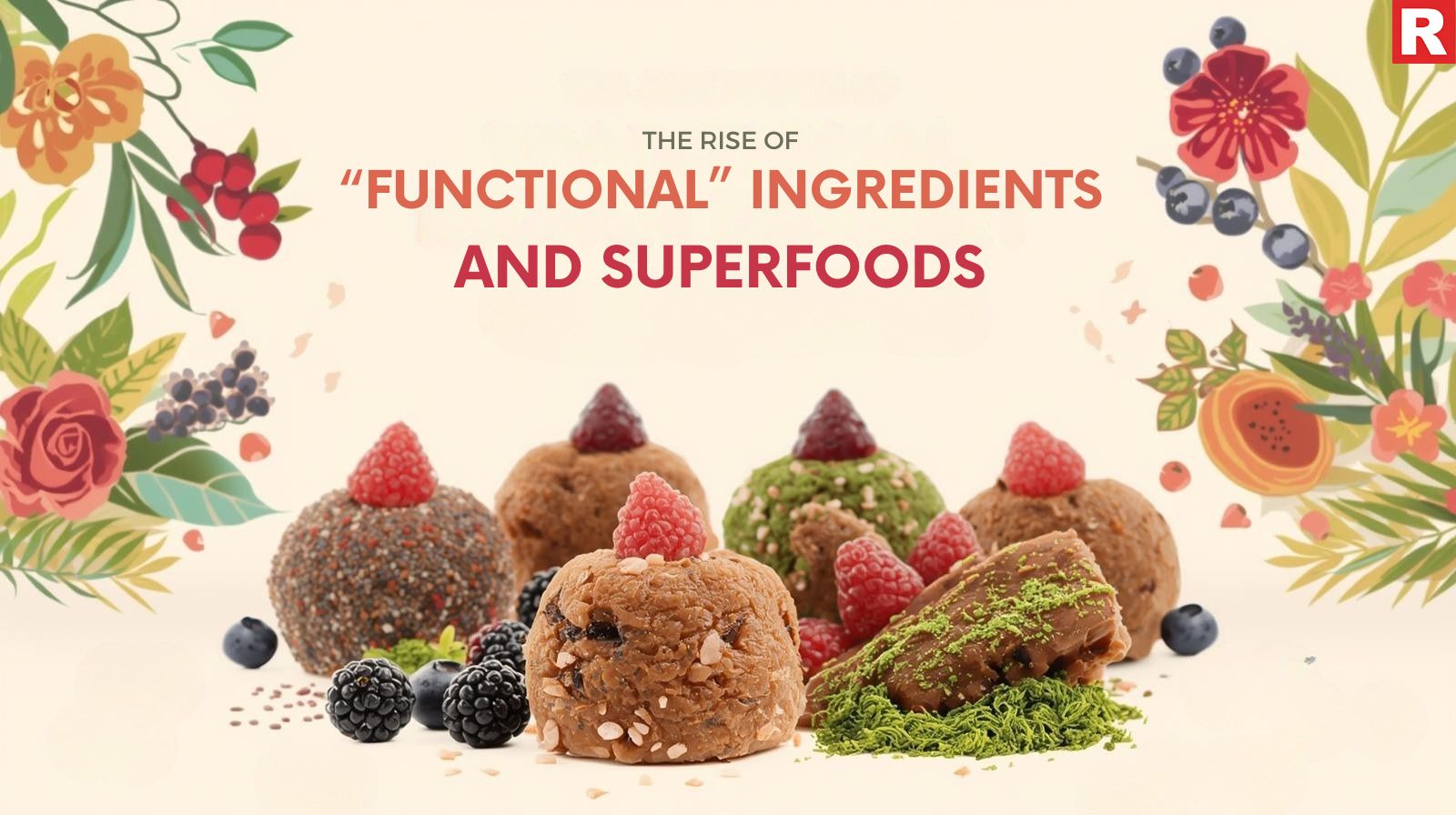
Desserts are now considered a chance to include healthy elements rather than merely a treat.
The Challenge: The difficulty is in incorporating health-promoting components without sacrificing flavor or texture.
Innovations:
- Nuts and Seeds: For fiber, protein, and good fats, try almonds, walnuts, pistachios, chia seeds, flax seeds, and pumpkin seeds.
- Ayurvedic Herbs & Spices: Turmeric, ginger, cardamom, cinnamon, saffron, ashwagandha, and moringa are Ayurvedic herbs and spices that are used for their anti-inflammatory, digestive, and immune-boosting qualities.
- Whole Grains & Millets: Quinoa, oats, and ragi provide long-lasting energy and fiber.
- Probiotics: Including fermented foods or yogurt (for example, in a healthy shrikhand).
- Antioxidants: Dark chocolate.
Impact on Desserts: chia seed puddings with Indian fruit flavors, halwas enhanced with flax seeds, turmeric lattes with a touch of natural sweetness, barfis with ginger and jaggery that strengthen immunity, and ragi laddus with dates and almonds.
Portion Control & Mindful Indulgence
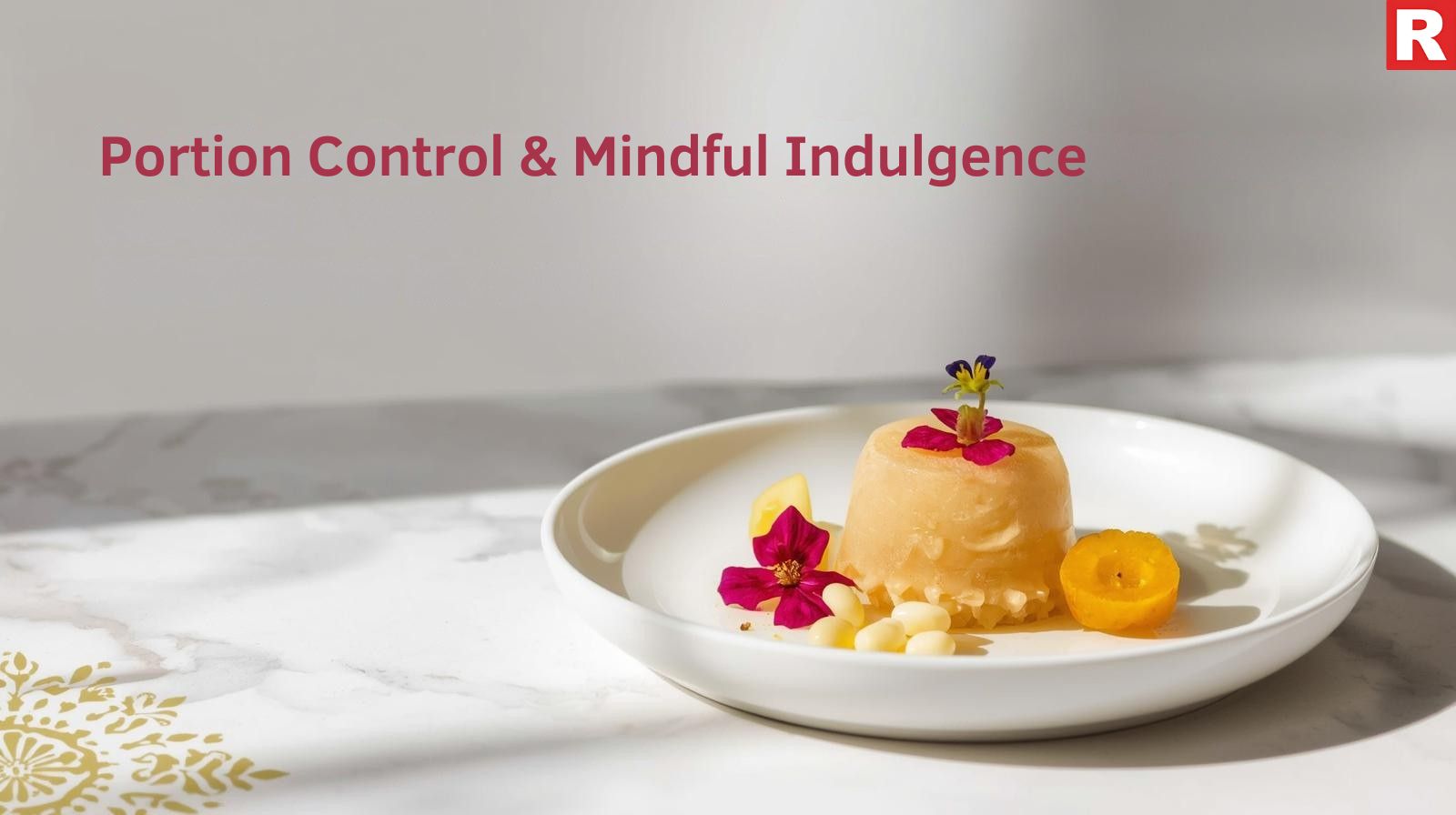
Desserts are becoming richer, smaller, and more deliberately consumed rather than being eliminated out.
The Challenge: Traditionally, sweets have been associated with the "more is better" mentality.
Innovations:
- Miniature Desserts: Presenting miniature copies of traditional candies or modern plated desserts.
- Deconstructed Desserts: Showcasing different ingredients in appealing, portion-controlled presentations.
- Dessert Shots/Verrines: A classy, small treat consisting of layered sweets in tiny glasses.
Impact on Desserts: deconstructed gajar halwa with a tiny scoop of vegan ice cream, mango shrikhand parfaits, and mini rasmalai tarts.
How Restaurants Are Innovating Their Desserts
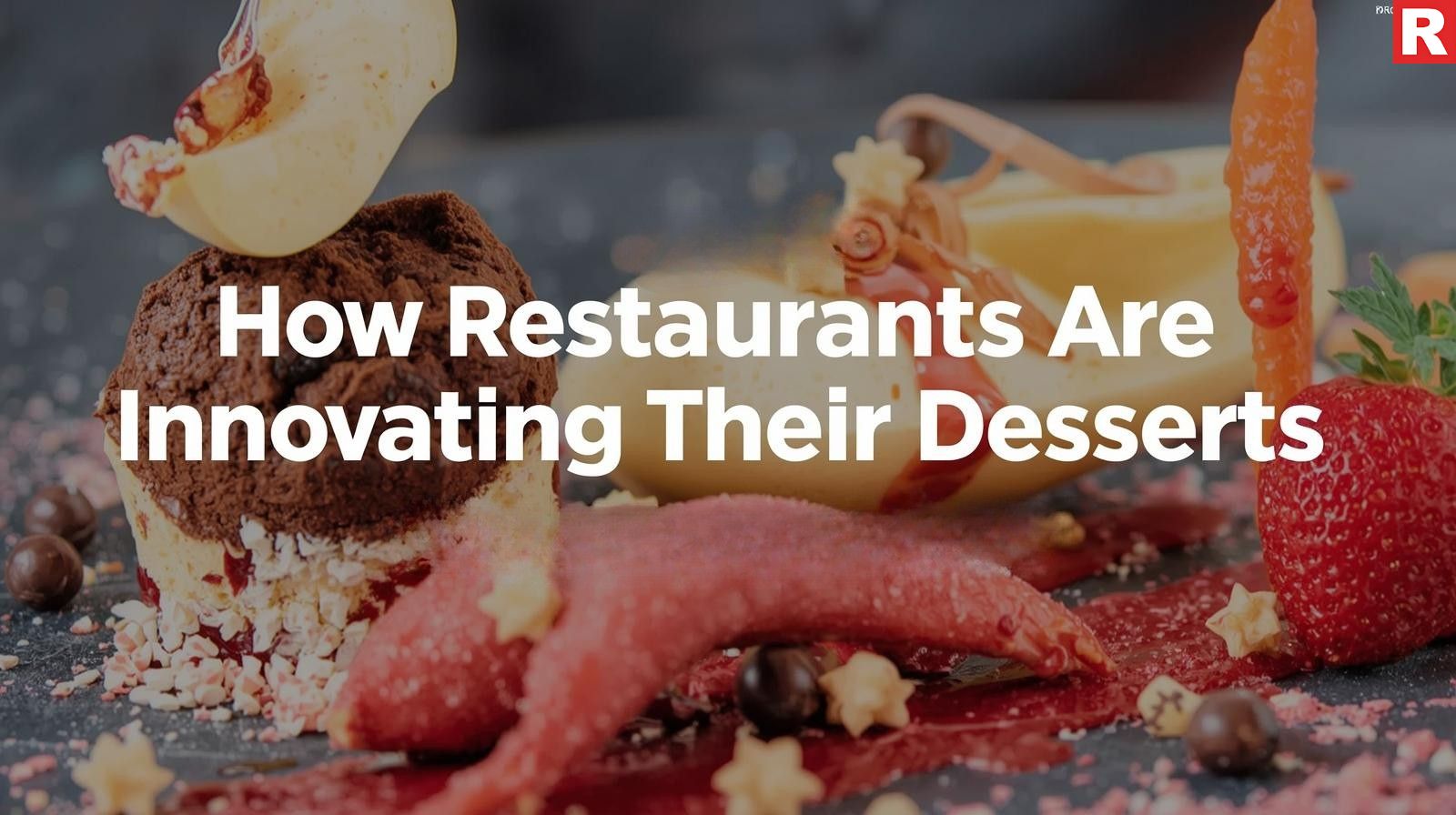
Restaurateurs, chefs, and patissiers are at the forefront of this sweet revolution, creatively blending tradition with health trends:
- Modernizing Classics: Popular traditional delicacies are being re-engineered rather than entirely abandoned. A gulab jamun could be made with reduced sugar, baked rather than fried, and served with a delicate rosewater froth rather than thick syrup. In order to highlight the inherent flavor of the carrot, a gajar halwa may utilize date puree and be less sweet.
- Fusion Desserts with a Healthy Twist: Developing crossbreeds that combine worldwide healthy dessert ideas with Indian flavors. Consider Chia Seed Phirni, Kulfi Pops made with natural fruit sugars, Ragi Brownies, or Turmeric and Ginger Cheesecake.
- Ingredient Transparency: Emphasizing the specific ingredients and their health benefits. Menus frequently include terms like "rich in fiber," "vegan," "gluten-free," "sugar-free," and "superfood-infused."
- Presenting Natural Beauty: Presentation is very important. Desserts are elegantly presented, with minimum garnishes, edible flowers, and fresh fruits frequently used to highlight their organic, healthful appeal.
- Collaborations & Special Menus: Developing unique dessert menus for particular dietary requirements or health goals while working with dietitians or wellness specialists.
- Educational Initiatives: To promote a greater appreciation for healthy delights, some businesses are subtly teaching their customers about the advantages of these healthier substitutes.
Check out: What Are the Special Dishes You Must Try This Durga Puja
Best Flour Brands in India for Pizza & Bakery Restaurants
Challenges and Opportunities for Restaurants
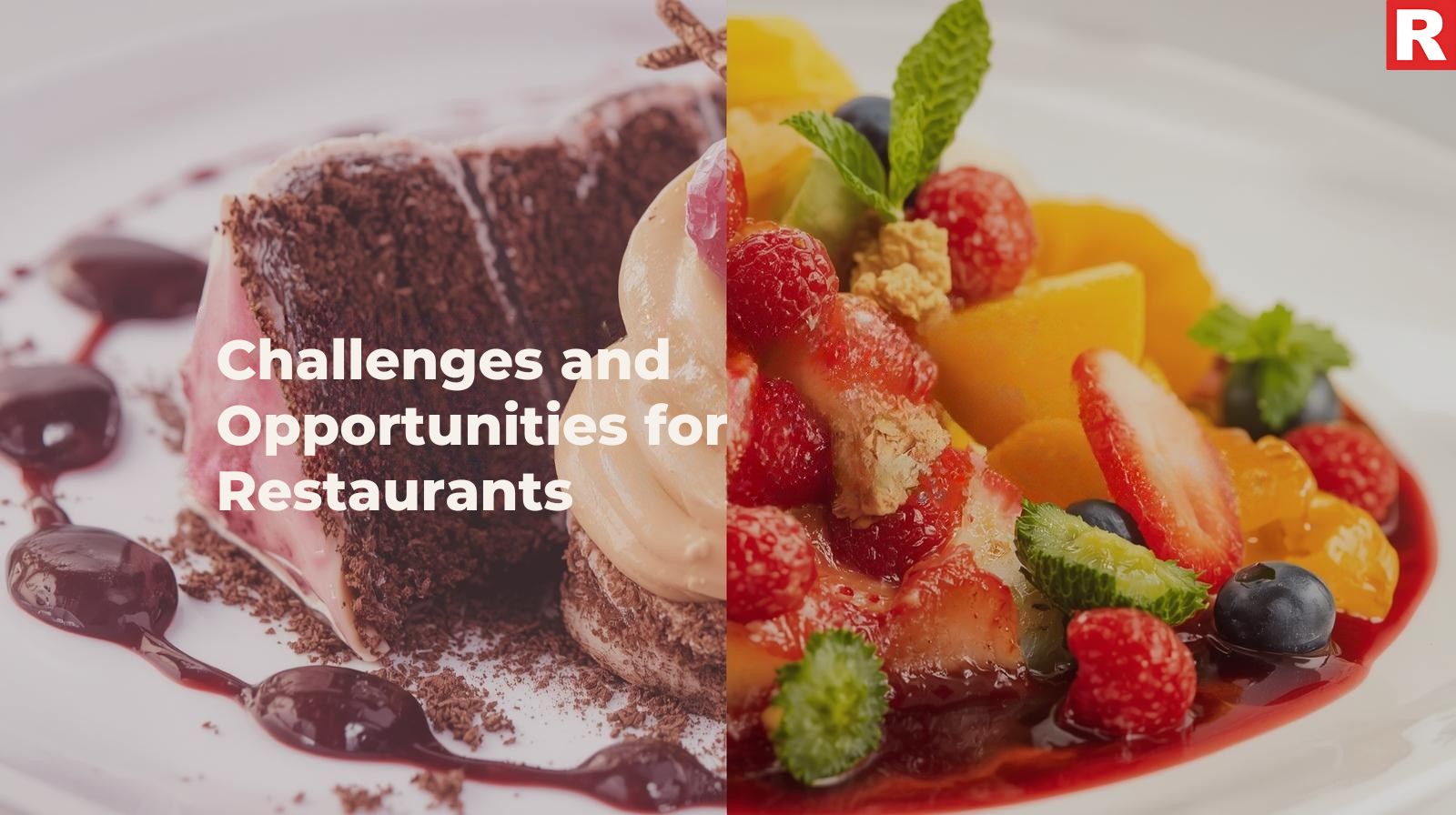
Although there are many opportunities associated with the move to healthier desserts, restaurants also face some difficulties that, if resolved, might give them an advantage in the market:
- Teaching the Traditional Palate: A lot of diners still expect rich, sugary sweets. Through tasting menus or instructive menu language, restaurants can gently inform customers about the subtle differences of plant-based or reduced-sugar options.
- Cost of Specialty Ingredients: Compared to standard ingredients, alternative flours, natural sweeteners, and plant-based dairy products might be more costly. Menu prices and sourcing must be done carefully.
- Preserving Genuine Flavors: The most difficult task is to innovate without sacrificing the character of popular Indian desserts. To create recognizable textures and strong flavors using healthier ingredients, chefs need to learn new techniques.
- Closing the Generation Gap: It takes a balanced strategy to serve both younger, health-conscious diners and older, traditionally inclined diners by providing both traditional and modern options.
- Using Local Produce: Desserts made with fresh, in-season fruits and vegetables can improve their health value and local appeal thanks to the local agricultural surroundings.
Read this: Top Air Purifier Brands for Restaurants in India
The Future is Sweet and Smart
The redesign of Indian dessert menus is a fundamental change brought about by a growing number of health-conscious consumers, not merely a temporary trend. Adopting these trends is essential for restaurants in busy metro areas to get a competitive edge and achieve long-term success. It's about showcasing an awareness of changing consumer demands and providing options that complement their ideals.
The journey includes delicate balancing acts, such as lowering sugar without sacrificing the essence of Indian sweetness, maintaining rich textures with plant-based substitutes, and including beneficial ingredients without sacrificing flavor. Chefs are evolving into alchemists, reimagining classic recipes into modern works of art that enhance well-being in addition to being delicious.

If there's one thing that restaurants have realized lately, it's that customers come for more than just the food. They are there to have an experience. They want to go to a restaurant with a nice ambiance and food that is worthy of being shared on social media. Ever since the emergence of social media apps like Instagram, the dining experience has enhanced beyond the menu of a restaurant. The Instagrammable decor and fancy food of a restaurant are no longer mere accessories in the business. They are strong attractions to increase foot traffic in metropolitan cities like Delhi, Mumbai, Chennai, Kolkata, and Bangalore etc. A restaurant can get free marketing through the content their customers post on Instagram, which can increase their online presence automatically. Therefore, creating Instagram-worthy decor and food plating ideas has become an important aspect for the restaurant business. In this article, we will be covering some of the trends that have become a driving point to increase footfall in metro cities.
This complete article explores how aesthetic appeal can transform the food and beverage sector. We'll look at the most popular Instagram-worthy interior and food styling trends that are attracting customers in metropolitan cities, as well as how smart restaurateurs are using presentation and design to generate viral moments as they build successful businesses.
Read more: 10 Best Instagram Marketing Strategies for Restaurants
The Significance of Instagrammable Images in the Restaurant Environment
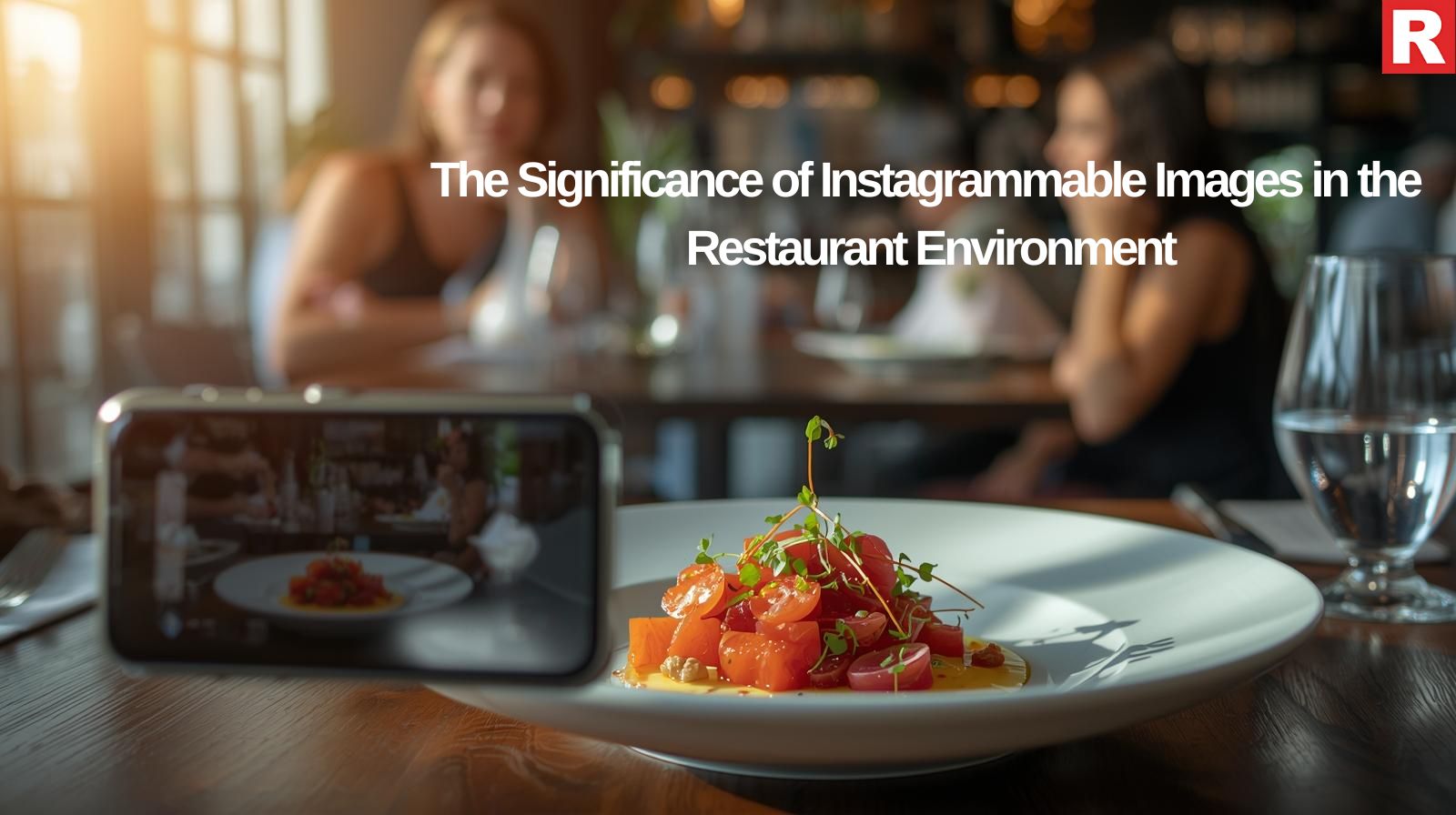
Consumer behavior in the restaurant industry has undergone significant changes as a result of the growth of social media platforms, particularly Instagram. Most people on Instagram are Gen Z and millennials. When choosing a restaurant, they frequently start by scrolling.
- Discovery & Inspiration: Instagram is the main medium for discovery and inspiration. Visits are encouraged by visually appealing posts from friends, influencers, or the restaurants themselves.
- User-Generated Content (UGC): Customers act as unpaid advertising agents. When they see a gorgeous meal or interior, they are prompted to take pictures, share, and tag it, which naturally expands a restaurant's market.
- FOMO (Fear Of Missing Out): Special and beautiful experiences that are shared online make people feel compelled to go.
- Brand Building: A restaurant's brand is strengthened and made more memorable and aspirational by maintaining a consistent aesthetic across its cuisine and décor.
- Customer Engagement: A meal becomes an "experience" worth recording when it is served in visually attractive restaurants that promote interaction.
It is now vitally necessary for restaurants to stand out visually in competitive urban areas in order to draw customers in and turn their online interactions into real reservations.
Know more: Top Dishwashing Machine Brands in India
Instagram-Worthy Interior Trends
The entire dining experience is defined by a restaurant's interior design. The creation of fascinating, unique, and incredibly attractive places is the main emphasis of current trends.
Biophilic Design & Urban Jungles
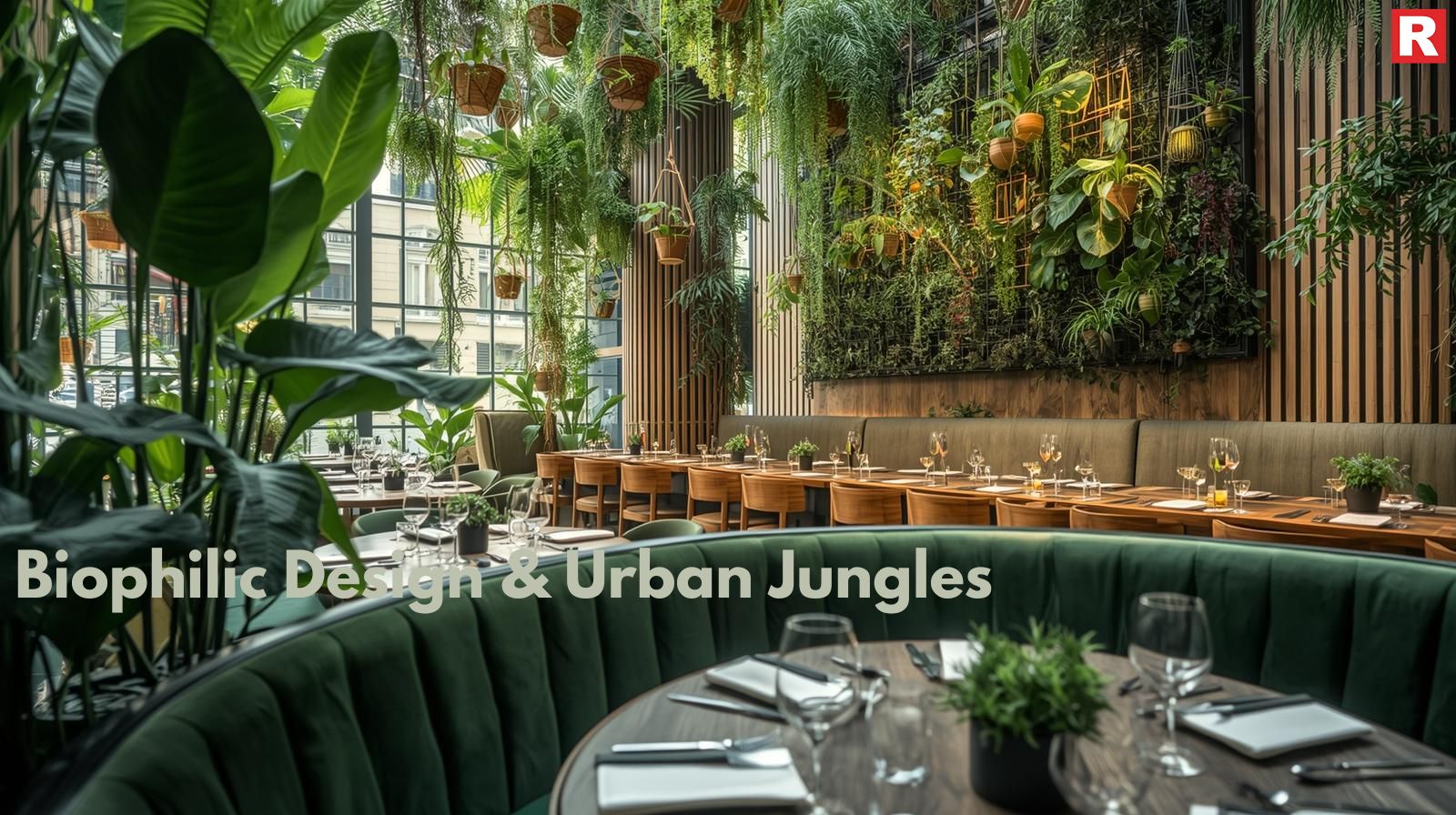
The practice of bringing the outdoors indoors has become a growing trend. Restaurants are becoming green spots that provide an enjoyable break from the concrete jungle of the city.
- Elements: Water elements, natural wood finishes, stone accents, lots of natural light, and live plants (potted, hanging, and vertical gardens) are all important components.
- Why it's Instagrammable: The green surroundings provide a lovely, calm photo background. Food photography is enhanced by natural light. It provides a sensation of peace and well-being, which is very appealing in the hectic city.
- Impact on Footfall: Produces a unique and welcoming atmosphere that is noticeable. These "green" areas are sought after by diners due to their visual attractiveness and supposed health benefits.
Art Deco & Retro Revival
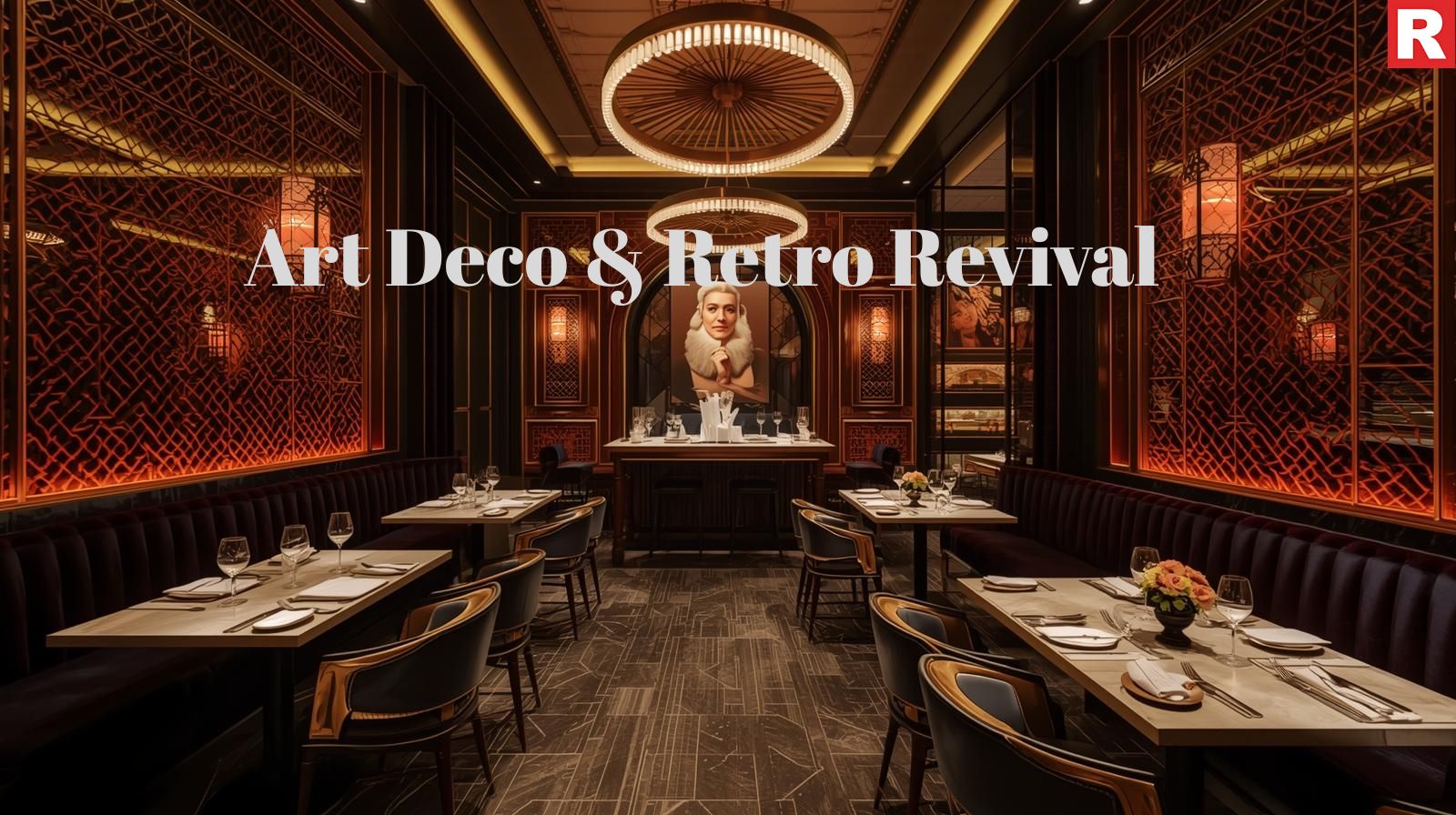
Invoking sophistication and classic elegance, the Art Deco trend pays tribute to the glamorous past.
- Elements: Features include mirrored surfaces, curved detailing, rich jewel tones (emerald green, sapphire blue), geometric patterns, metallic accents (brass, gold), luxurious velvet seating, and antique lighting fixtures.
- Why it's Instagrammable: Pictures with strong visual lines and natural elegance are visually attractive. The striking hues and luxurious textures are extremely appealing.
- Impact on Footfall: Perfect for festive occasions or fashionable outings, this restaurant appeals to a certain group seeking a sophisticated, elegant, and somewhat nostalgic dining experience.
Industrial Chic with a Touch of Warmth
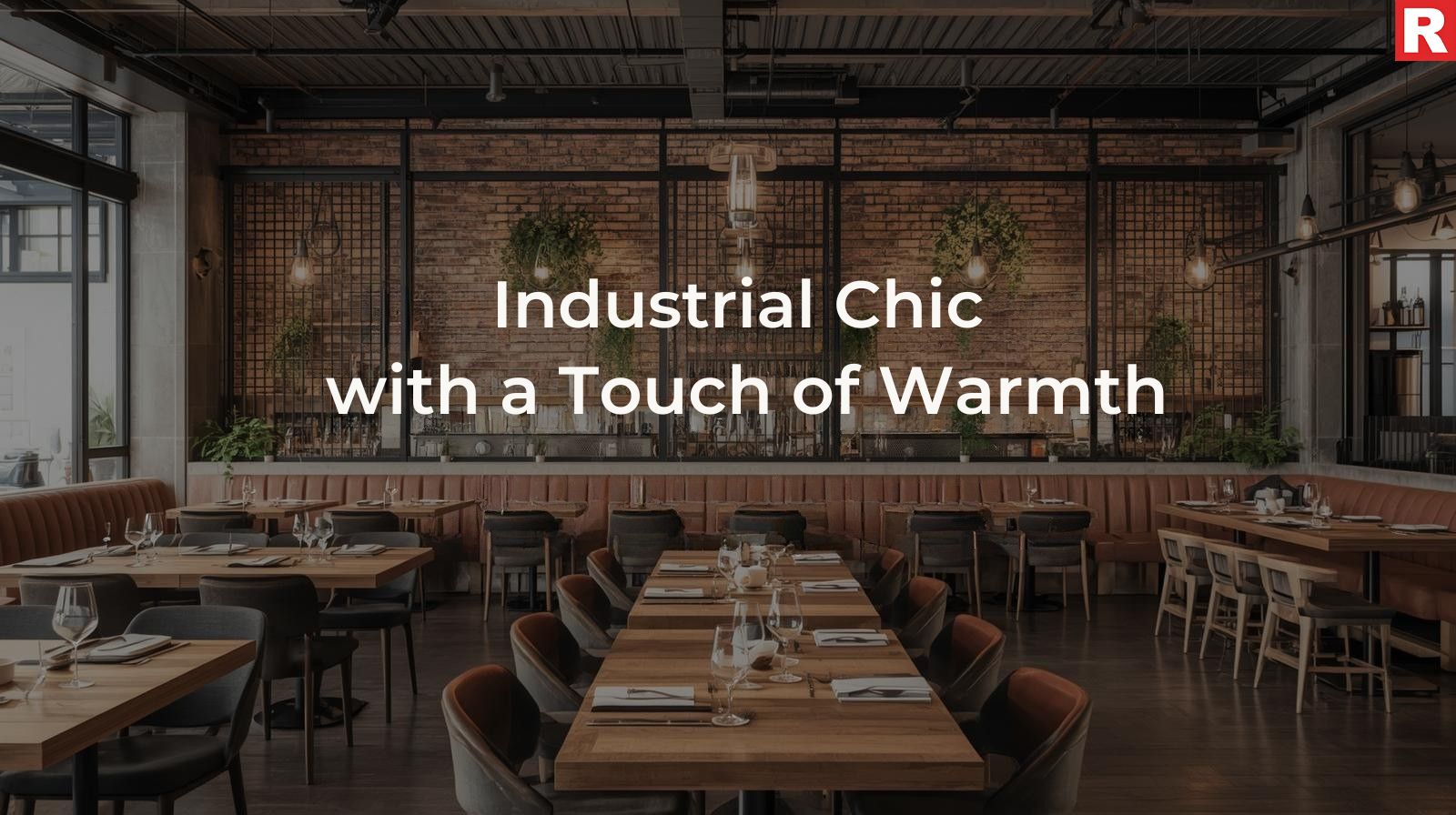
This trend, which is raw and edgy but surprisingly appealing, is still developing.
- Elements: Concrete floors, exposed brick walls, wiring that is visible, metal fittings, recycled wood, and simple furniture are some of the components. Pops of color, cozy seating, and well-placed lighting provide the "warmth".
- Why it's Instagrammable: Visual attraction is produced by the contrast between rough textures and elegant items. Many people connect with its genuine, modest vibe.
- Impact on Footfall: Draws in a young, urban customer base seeking hip, fashionable establishments, frequently linked to microbreweries, handmade coffee shops, and casual dining.
Maximalism & Eclectic Glam

Maximalism embraces strong patterns, vibrant colors, and a carefully selected combination of varied elements, straying from simple minimalism.
- Elements: Features include gallery walls, a mix of antique and contemporary items, colorful wallpapers, a variety of textures, jumbled patterns, and oddball statement décor.
- Why it's Instagrammable: There are interesting photo opportunities at every turn. The visual depth and unexpected pairings are quite captivating and viral.
- Effect on Footfall: Draws in customers looking for unique, dramatic, and highly customized eating experiences that make a statement and stand out in a feed.
What's new: Best Wine Chiller Brands for Restaurants
Experiential & Immersive Concepts
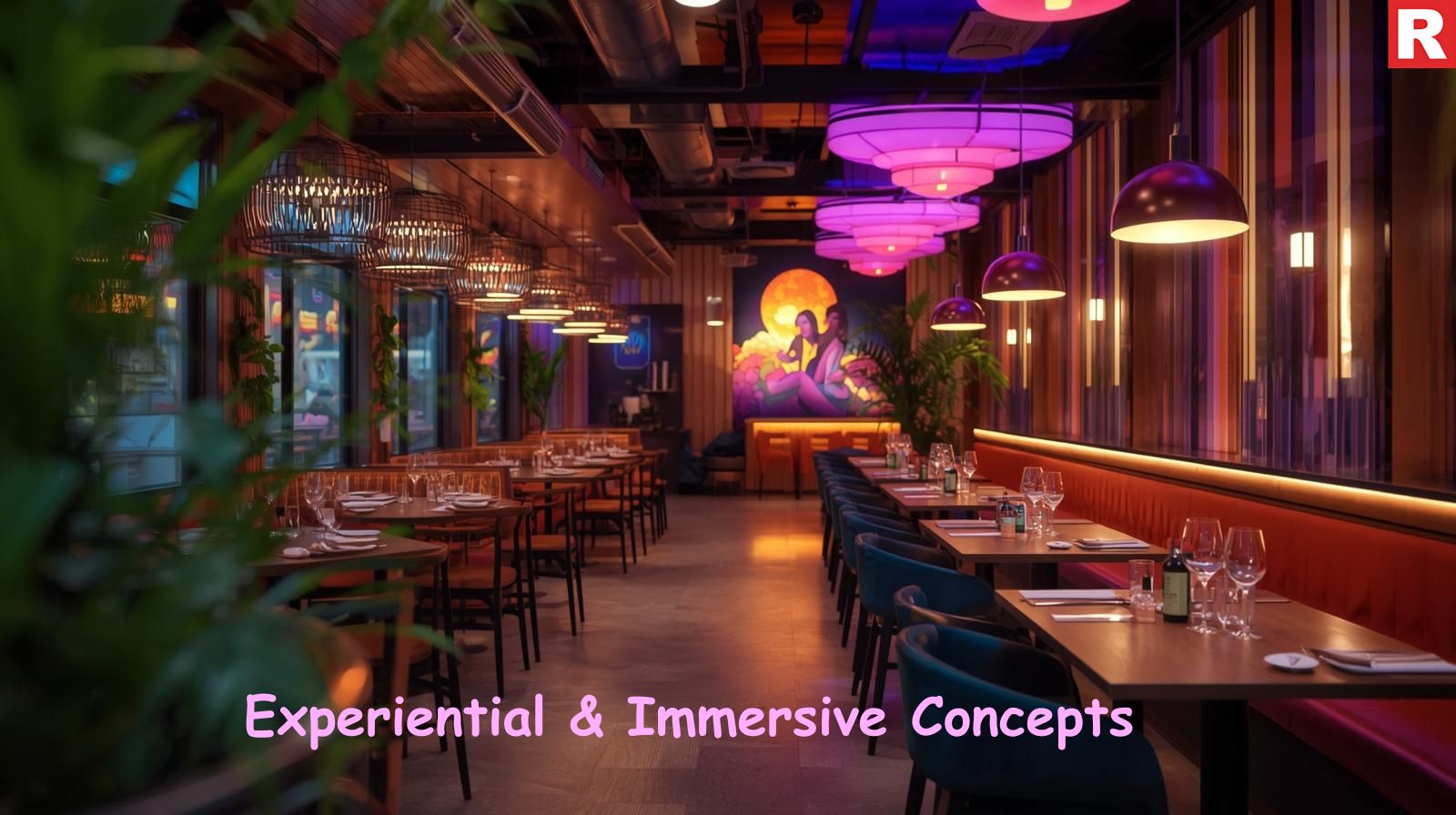
Restaurants are creating ambiance that transports customers or communicates a story in addition to being aesthetically pleasing.
- Elements: Features include interactive elements, projected imagery, soundtracks, themed areas (such a "secret garden" or "library"), and unusual seating layouts (like swings or private pods).
- Why it's Instagrammable: The reason it's Instagrammable is that these areas provide a unique "experience" that is easily shareable. The whole theatrical experience is more important than just the cuisine.
- Impact on Footfall: Generates excitement and positive reviews online and in-person, drawing customers looking for unique and interesting dining experiences.
Instagram-Worthy Food Styling Trends
Chefs are artists, and the dish is a canvas. Thanks to the refined science of food styling, dishes are becoming edible works of art.
Deconstructed & Artistic Plating
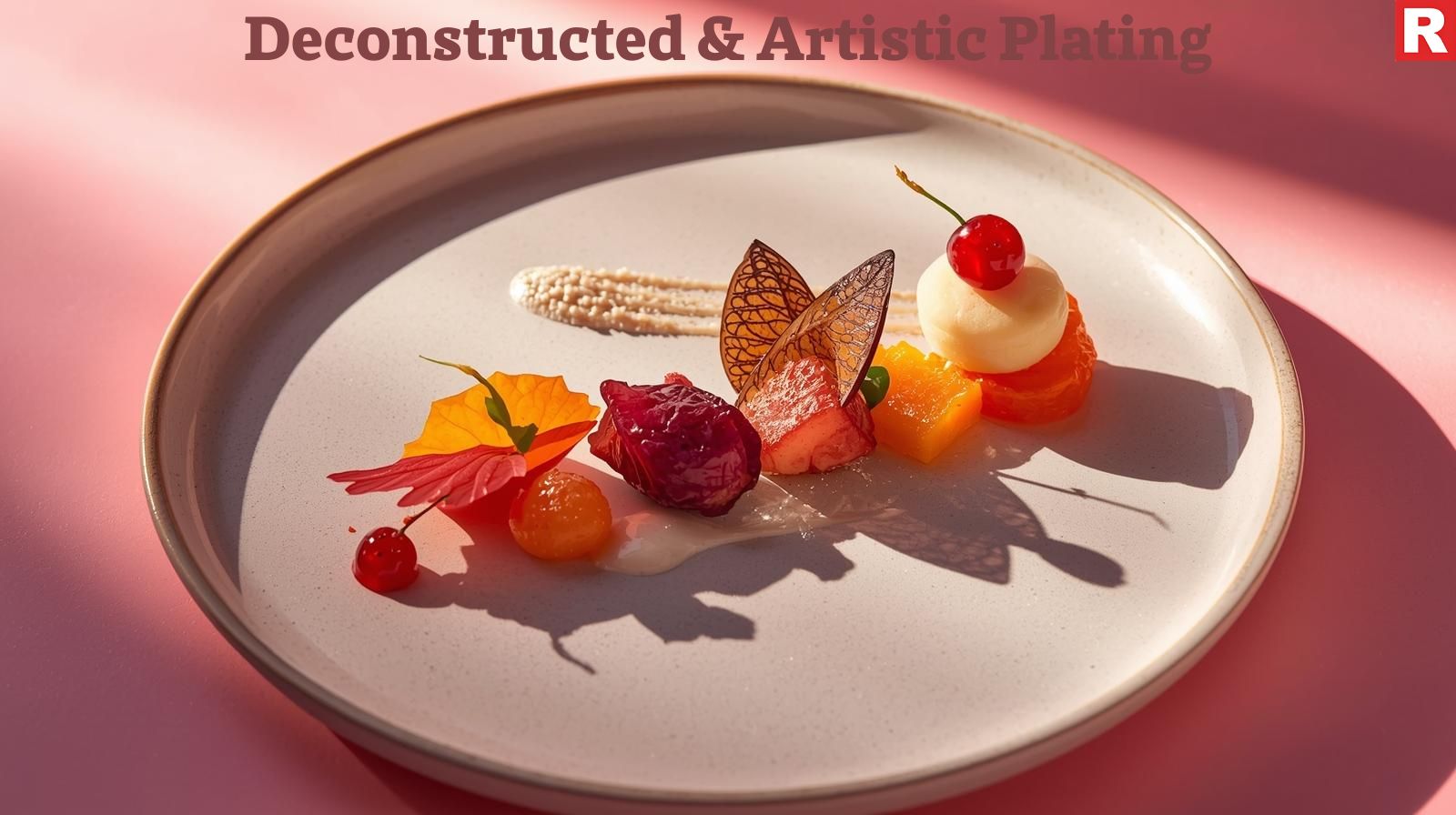
This approach goes beyond traditional presentations and focuses on showcasing each dish's individual components in an eye-catching, frequently abstract way.
- Elements: Ingredient placement, utilization of negative space, creative sauce/puree drizzles, edible flowers, and garnishing with microgreens are all important components.
- Why it's Instagrammable: It's visually striking and unexpected, emphasizing the quality and freshness of each ingredient. It encourages customers to enjoy the "art" that is presented on their plate.
- Impact on Footfall: Attracts foodies and those seeking a gourmet experience by implying a high level of culinary skills and attention to detail.
Vibrant Colors & Natural Hues
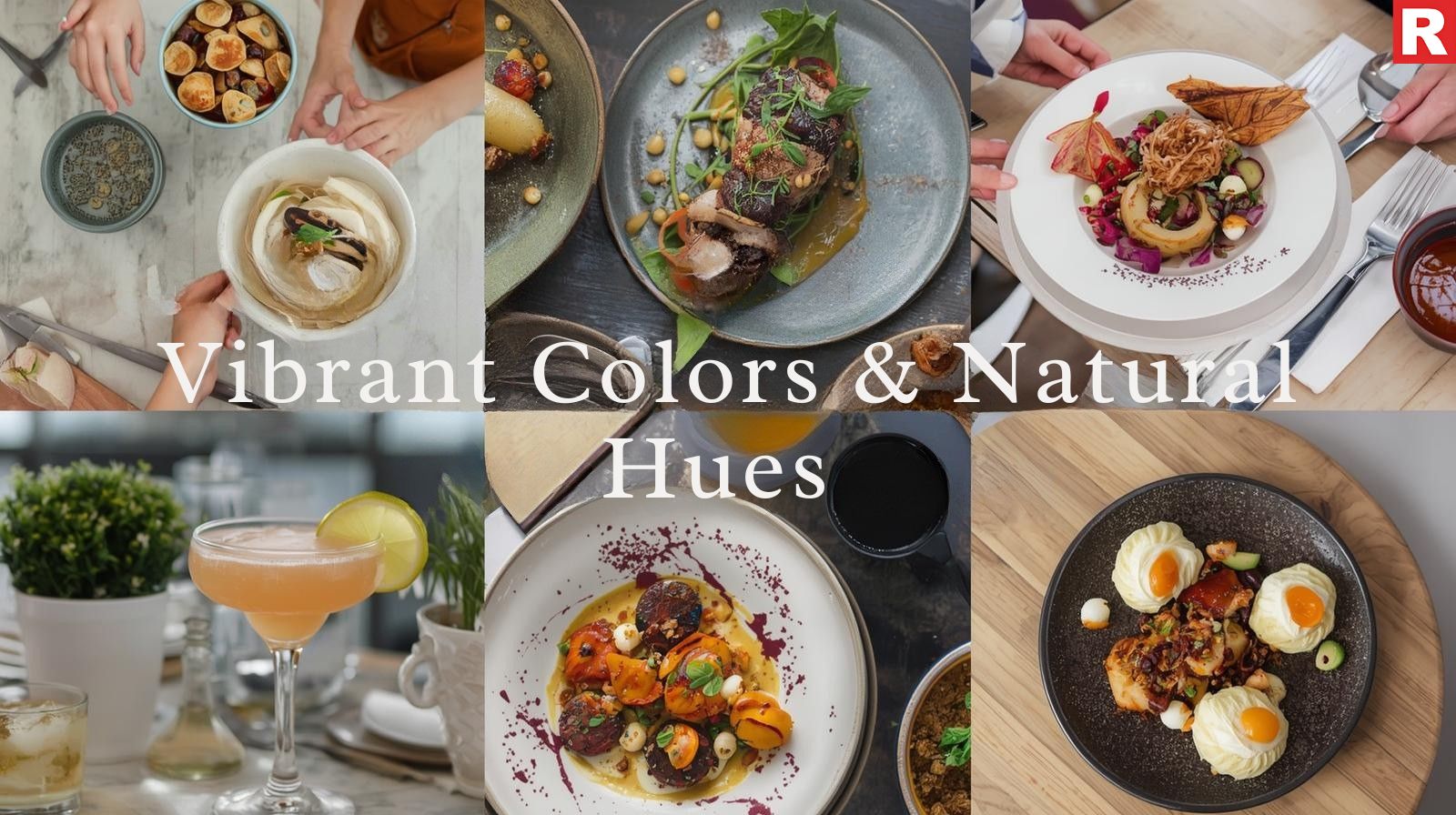
A dish is naturally appealing if it has vibrant, contrasting colors.
- Elements: Using visually striking garnishes, vibrant sauces, and naturally colorful ingredients (leafy greens, berries, turmeric, and beetroot).
- Why it's Instagrammable: Food looks fresh and delicious when it's colored with vibrant, natural hues, which appeal to everyone. On a crowded feed, they stand out.
- Impact on Footfall: Attracts customers who value aesthetically pleasing and healthful meals by communicating freshness, wellness, and inventiveness.
Textured Layers & Dimensionality
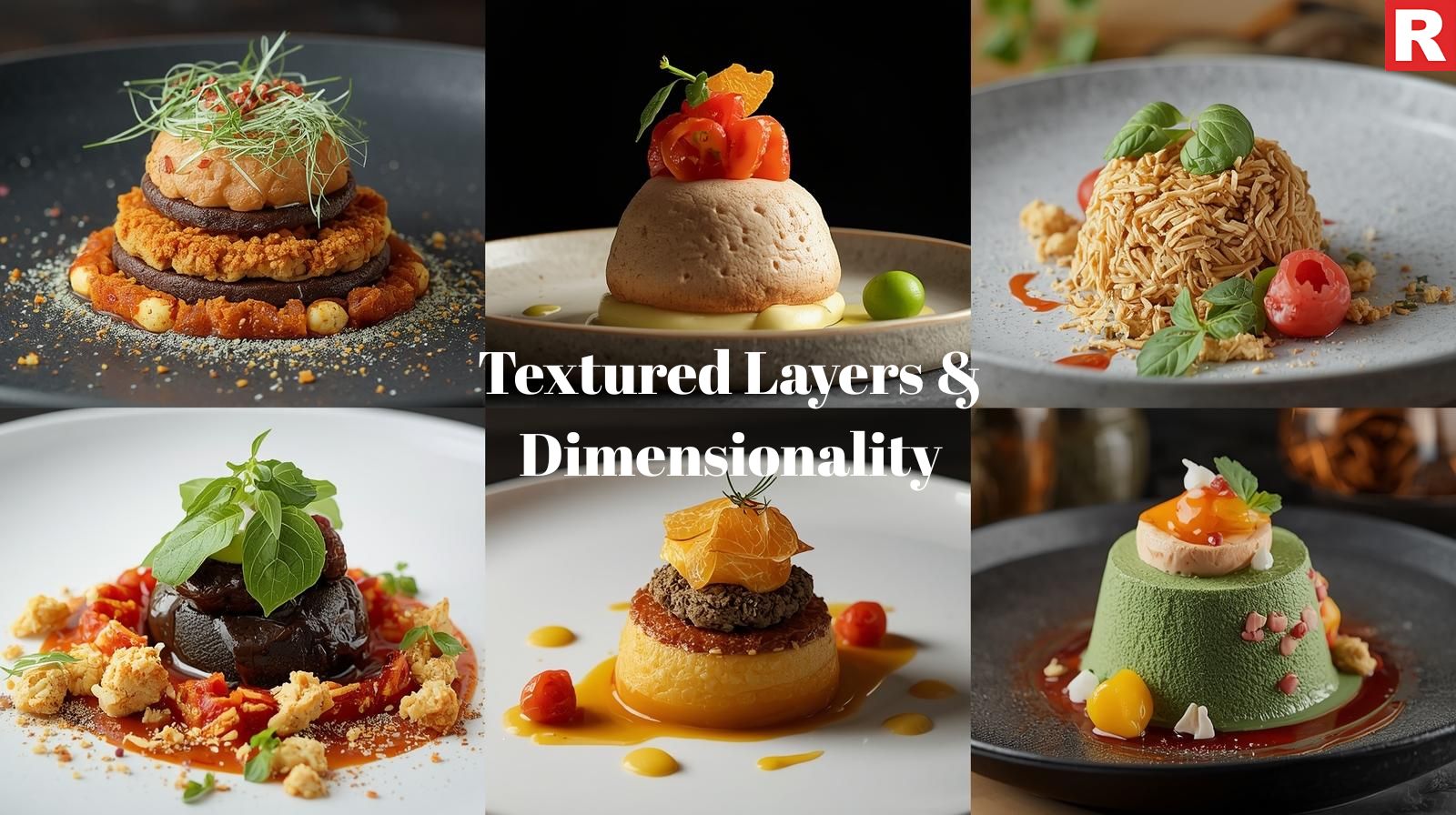
A dish's composition becomes more dynamic and intriguing when height and other textures are added.
- Elements: To generate visual and physical contrast, stack ingredients and use crispy elements (fried onions, tempura), creamy purees, crunchy nuts, and fresh herbs.
- Why it's Instagrammable: It gives the impression that the food is well-prepared and plentiful. The layers look fantastic from a variety of perspectives, urging curiosity.
- Impact on Footfall: Appeals to people who want detailed and filling meals by expressing generosity and culinary skill.
Check out: Best Flour Brands in India for Pizza & Bakery Restaurants
Social media trends for helping food business startup grow
Whimsical & Themed Presentations
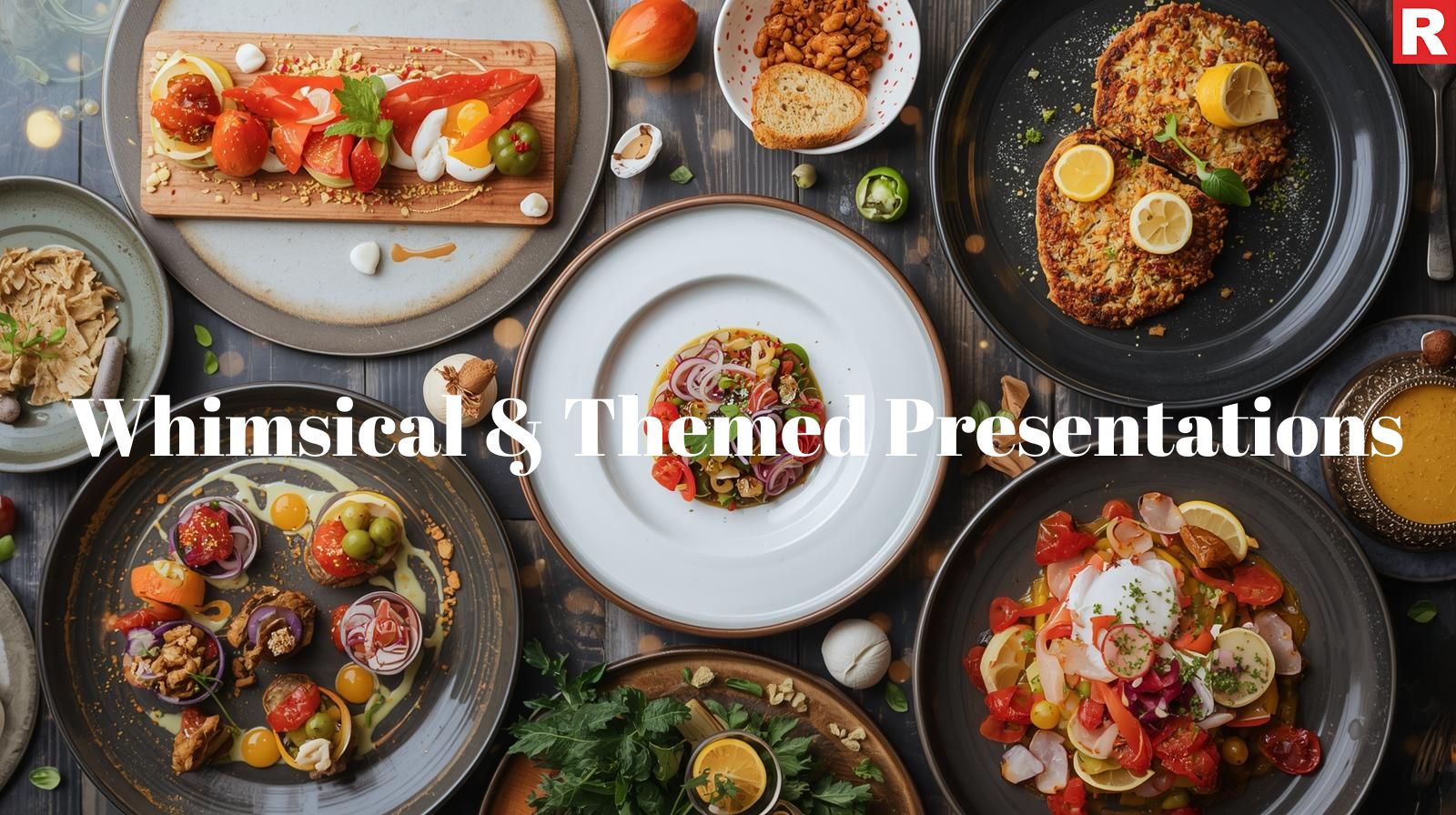
Some restaurants provide food that is not only aesthetically pleasing but also amusing, narrative, or theme-appropriate.
- Elements: Features include edible "dirt," inventive uses of dry ice to create a smoky effect, dishes shaped like things, or detailed presentations that take place at the table.
- Why it's Instagrammable: Because of their extreme originality and "wow" effect, these are immediately shareable and memorable. They provide a sense of surprise and joy.
- Impact on Footfall: Creates a lot of excitement and interest, drawing customers seeking an enjoyable, engaging, and highly communicative dining experience.
Comfort Food with a Gourmet Twist
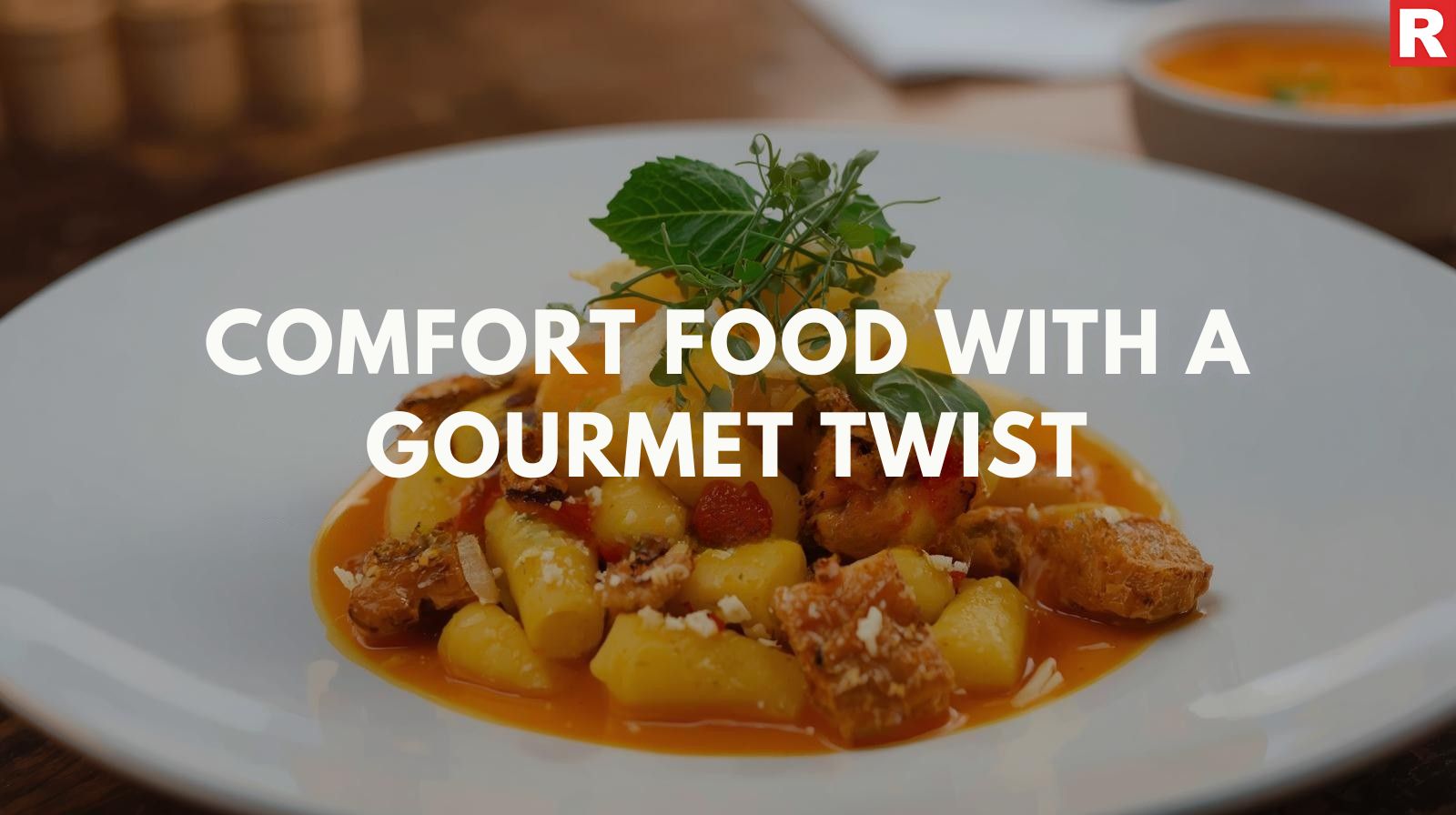
Enhancing well-known comfort dishes with elegant presentation and premium ingredients.
- Elements: A wonderfully layered burger, a deconstructed chaat served with elegance, or a flawlessly grilled cheese sandwich cut diagonally with a dramatic cheese pull are examples of elements.
- Why it's Instagrammable: Blends the aesthetic appeal of gourmet dining with the comforting familiarity of comfort food. One of the most iconic viral moments is the "cheese pull."
- Impact on Footfall: Appealing to a wide range of customers, it provides sophisticated yet approachable dining that guarantees both satisfaction and aesthetic pleasure.
Read this: 10 Tips to Avoid Social Media Disasters
Conclusion
The capacity of a restaurant to produce an aesthetically captivating experience is becoming increasingly important in today's competitive food industry, especially in rapidly expanding metro centers. Instagram-worthy decor and carefully prepared cuisine are no longer merely passing trends; they are effective, time-tested strategies for increasing foot traffic, encouraging local marketing, and cultivating a loyal customer base.
By adopting styles such as artful plating or maximalist aesthetics, restaurateurs turn an ordinary dinner into a fun, social occasion. In addition to satisfying the modern diner's desire for beauty, this emphasis on the "visual feast" makes each customer an ambassador, sharing the restaurant's unique charm with their whole social network.

Wine service has evolved from a simple beverage to a complex art in the changing Indian culinary scene, where international cuisines clash with selective palates. The right way to store and serve wine is essential for restaurants, cafes, and hotels in order to maximize profits and improve the dining experience. More than just a basic refrigerator, a wine chiller or wine cooler is a carefully crafted device that maintains the ideal temperature and humidity levels to preserve the wine's delicate qualities and guarantee that it is served at its best. Any institution that takes its wine program seriously needs the proper wine cooler, whether it's for preserving pricey vintages or keeping stock wines available for instant service.
This detailed article explores the vital role that wine storage plays in restaurants and lists the top wine chiller brands available in India. We will examine the unique qualities, varieties, and applicability of these brands for a range of commercial specifications, aiding restaurateurs in making smart decisions to improve their wine service and impress their customers.
Read more: Best Flour Brands in India for Pizza & Bakery Restaurants
Why Wine Chillers are Essential for Restaurants
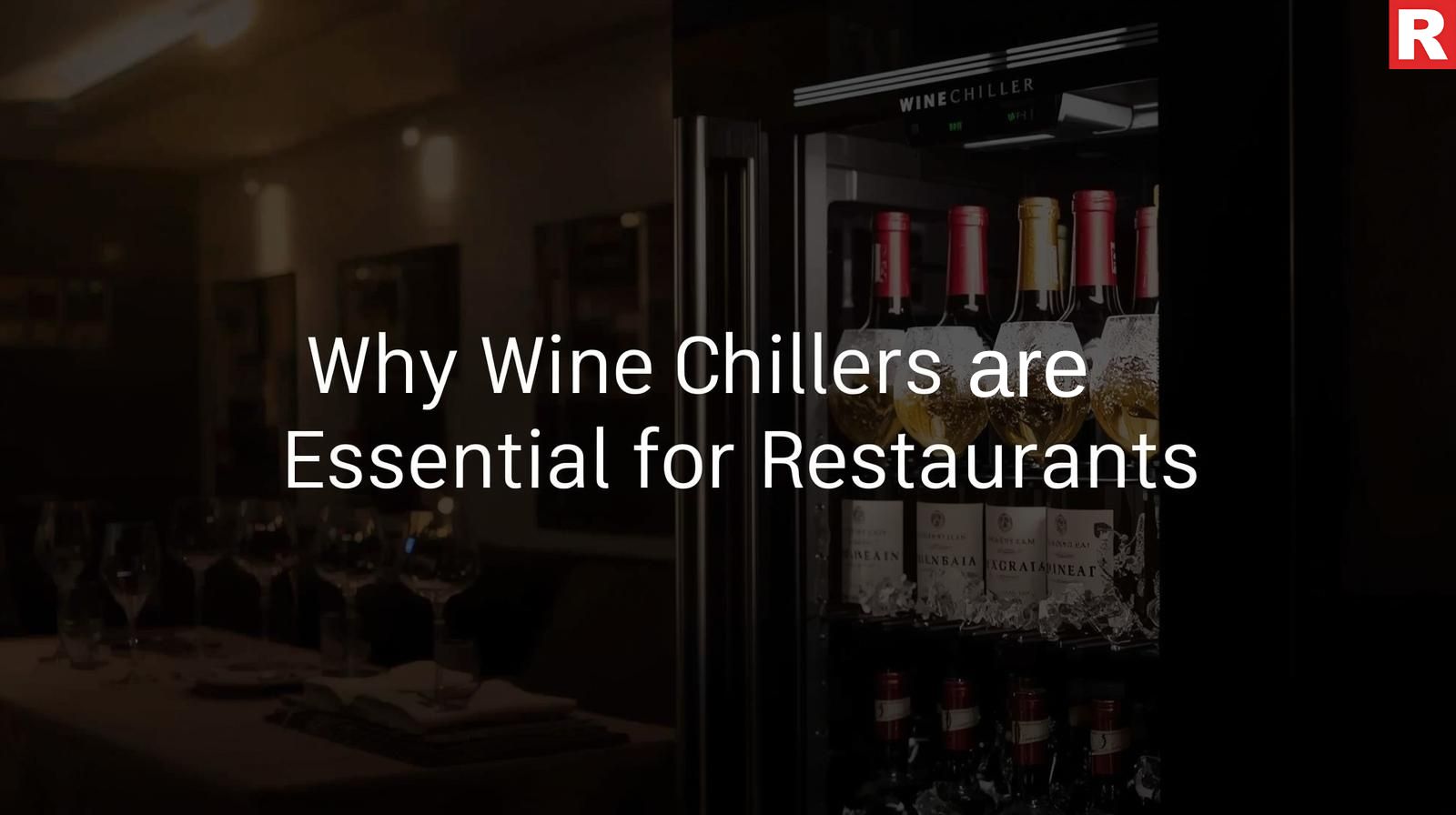
The reputation and financial success of a restaurant greatly depend on serving wine at the proper temperature. A wine cooler solves several important issues:
- Ideal Serving Temperature: Every wine variety has a particular serving temperature that brings out the best in terms of flavor and aroma. White and sparkling wines need 7–12°C, while red wines are usually finest at 16–18°C. Consistency is ensured with a wine chiller.
- Long-Term Preservation: Appropriate storage is essential for restaurants that invest in aged vintages or have a large wine list. By keeping the temperature steady and the humidity between 50 and 70 percent, wine chillers keep corks from oxidizing and drying out, extending the wine's shelf life.
- Protection against Fluctuating temperatures: Wine is harmed by vibrations and temperature changes. Wine chillers shield the wine from heat shock and early aging by creating a steady, vibration-free atmosphere.
- Improved Customer Experience: Serving a bottle of wine that is ideally chilled greatly improves the customer's opinion of quality and attention to detail, which promotes repeat business and increased wine spending.
- Inventory Management & Presentation: Staff can more easily handle inventory thanks to the wine chillers' orderly storage. Many also have eye-catching layouts and display lighting, making the wine selection a focal point of the restaurant.
- Increased Sales & Profitability: A chiller can increase wine sales and fetch higher prices for premium selections by making sure wines are always ready to serve at their best.
- Area Optimization: Specialized chillers are made to fit as many bottles as possible into a restaurant's frequently restricted area.
Know more: Top Air Purifier Brands for Restaurants in India
Key Types of Wine Chillers for Commercial Use
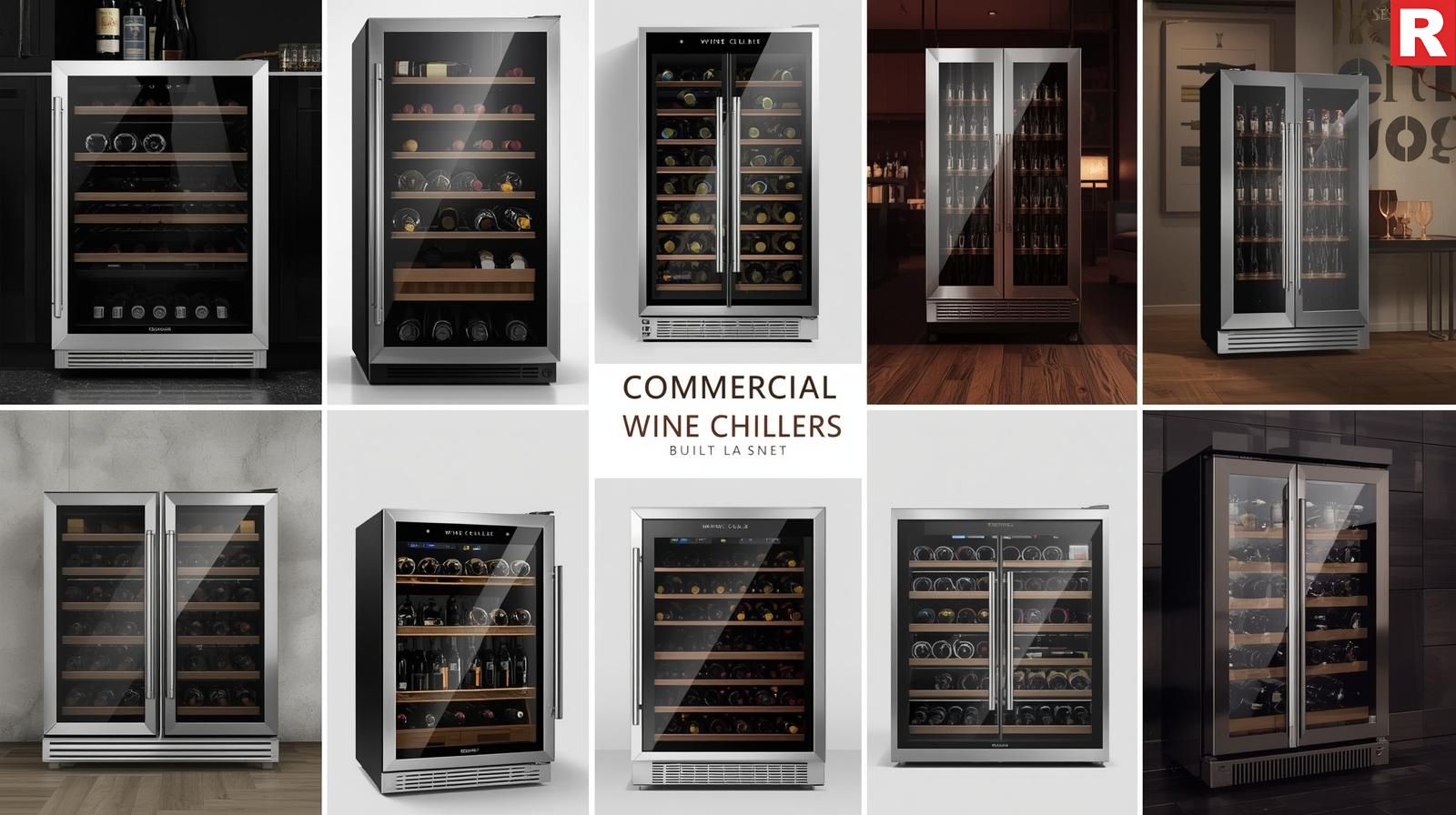
The capacity, aesthetic standards, and particular needs of a restaurant all play a role in selecting the best kind of wine chiller:
Single Zone Chillers:
Description: It maintains a single, consistent temperature throughout the cellar unit.
Ideal for: Restaurants that specialize in one kind of wine (for example, a wine bar that serves exclusively red wines or a café that only serves white or sparkling wines). Excellent for storing a particular type of wine for a long time.
Dual Zone Chillers:
Description: It has two separate temperature zones that let you set various parts of the cooler at different temperatures at the same time.
Ideal for: Reds, whites, and sparkling wines may all be kept in the same unit at the ideal serving temperatures, making it perfect for the majority of restaurants and hotels with a diverse wine list.
Built-in/Undercounter Chillers:
Description: Designed to blend in perfectly with cabinets, providing a modern, unified appearance. Usually venting in the front.
Ideal for: Bars, open kitchens, or contemporary dining areas where space is limited and aesthetic harmony is essential.
Freestanding Chillers:
Description: It can be positioned wherever that is sufficient airflow on the back and sides.
Ideal for: Used as a noticeable display piece in the dining room, wine rooms, or storage spaces.
Display Chillers:
Description: Frequently includes full glass doors and eye-catching inside lighting to make the wine collection stand out.
Perfect for: Increasing the atmosphere and promoting impulsive purchases in dining rooms.
Top Wine Chiller Brands for Restaurants in India
The most well-known and popular wine chiller brands in the Indian food service sector are included in this list. They are renowned for their dependability, effectiveness, and fit for restaurant operations.
What's new: Top Dishwashing Machine Brands in India
Liebherr

The German luxury appliance manufacturer Liebherr is well known throughout the world as one of the best brands for wine storage, and it serves the luxury segment market in India. Liebherr wine chillers are well-known for their superb construction, precise engineering, and sophisticated temperature and humidity control systems, and are used in restaurants, hotels, and upscale lounges. They provide a wide variety, ranging from freestanding and undercounter single-zone units to multi-zone wine cabinets that may hold hundreds of bottles. Key technologies include low-vibration compressors mounted on specialized dampening blocks, active carbon filters that purify the cabinet's air and stop aromas from seeping into the corks, and precise electronic control systems that maintain exact temperatures. Their premium, extending wooden shelves securely hold bottles, and their tinted glass doors offer superior UV protection. Liebherr units are built to last and use little energy. They are an excellent investment that provides unparalleled durability and the best possible wine preservation, which is essential for businesses that have expensive wine collections.
Vestfrost
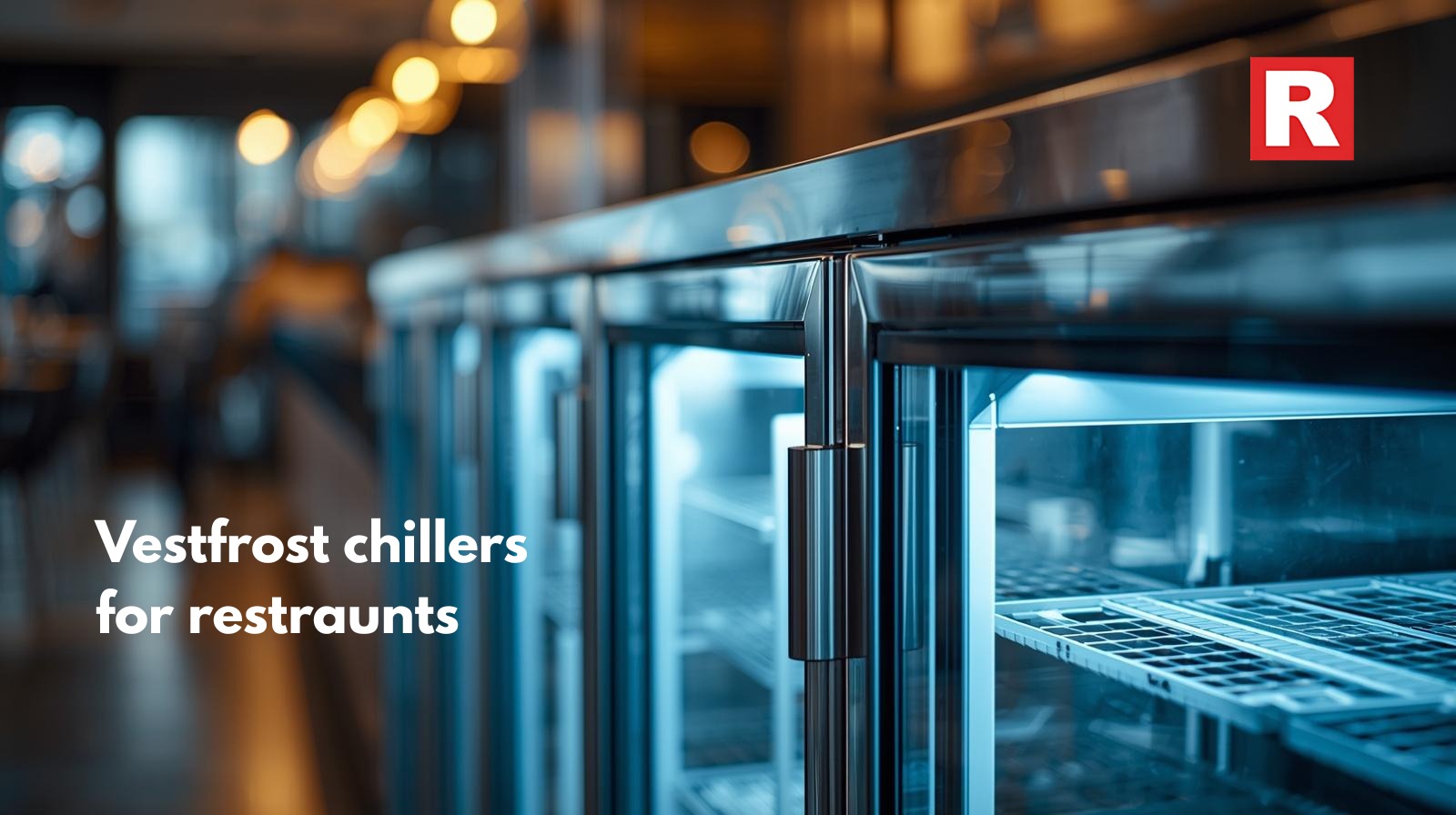
Internationally, Vestfrost, a Danish company, is well-known for its expert refrigeration solutions, which include specialized wine chillers. Vestfrost is widely recognized in the Indian restaurant industry for fusing innovative wine storage features with sturdy commercial-grade structure. Their chillers provide exact temperature stability and ideal humidity levels while withstanding harsh situations. With the multi-zone temperature control features of several Vestfrost models, restaurants can flawlessly store and serve a wide variety of red, white, and sparkling wines at once. They place a strong emphasis on UV-protected glass doors, low-vibration compressors, and premium wooden shelves that are both aesthetically beautiful and useful. Because of their reputation for effectiveness and dependability, Vestfrost units are a popular option for medium- to large restaurants, hotels, and wine sellers that need professional-grade wine storage solutions without the high prices associated with some other European brands. For commercial use, they prioritize durability and core performance.
Celfrost
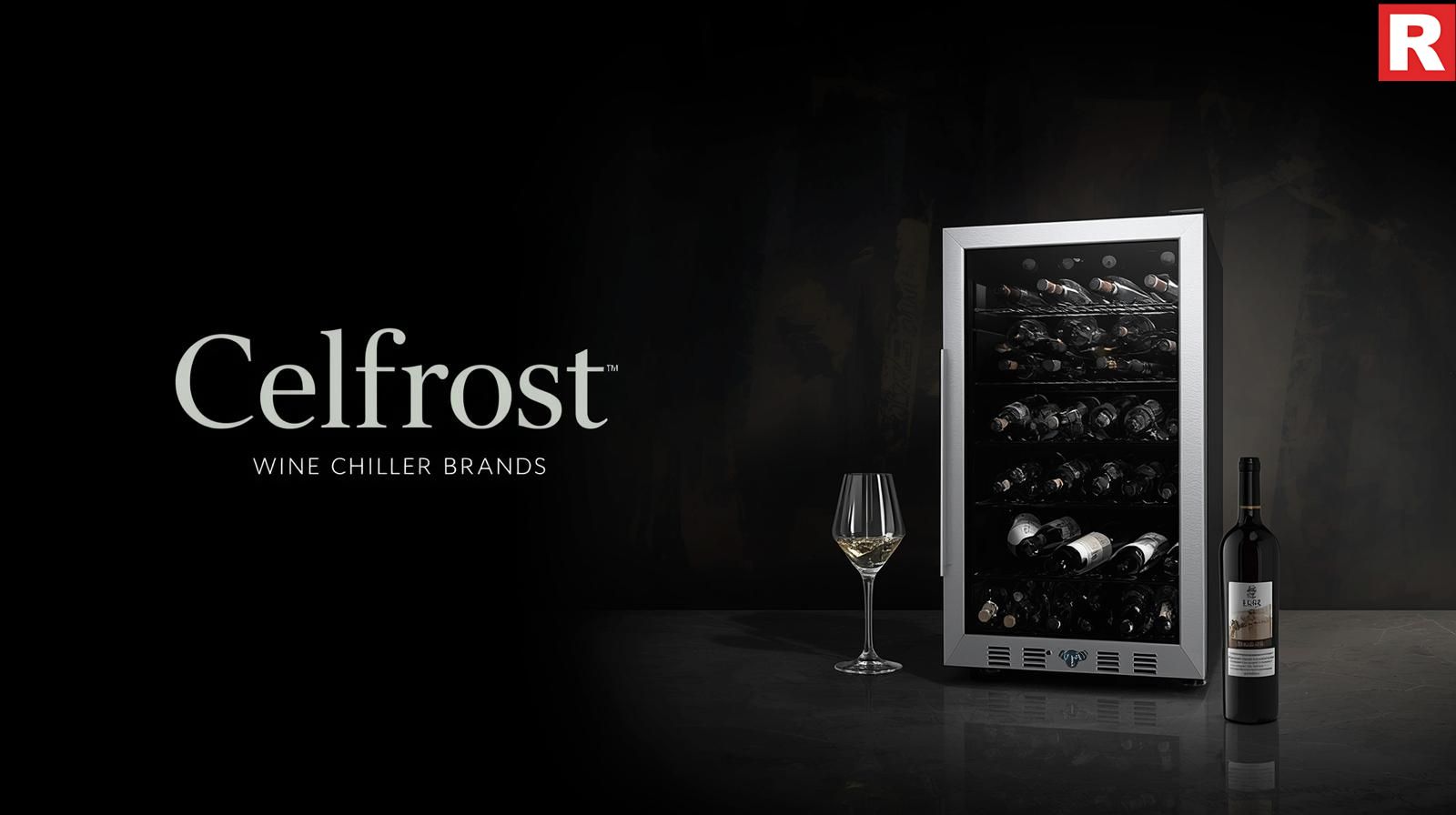
A variety of wine chillers made especially for the Indian hospitality industry are available from Celfrost, a well-known Indian name in commercial refrigeration and kitchenware. Celfrost is renowned for offering dependable, reasonably priced, and locally supported solutions that are ideal for the various climates and operational demands of the nation. Their wine chillers are appropriate for cafés, bars, and restaurants of all sizes and come in a variety of sizes and configurations, including single and dual-zone models. Key features frequently include UV-protected glass doors, digital temperature control, and effective cooling systems that function well even in warmer weather. Although they might not always have as many cutting-edge features as high-end foreign brands, Celfrost units are incredibly affordable, have sturdy construction, and a solid service network throughout India. They are a sensible option for restaurants looking for a reliable, reasonably priced wine storage system that performs consistently.
Check out: Best Online Ordering Platform Providers in India
Best Bar Chair and Stool Brands for Indian Bars & Lounges
Koryo (by Future Group)
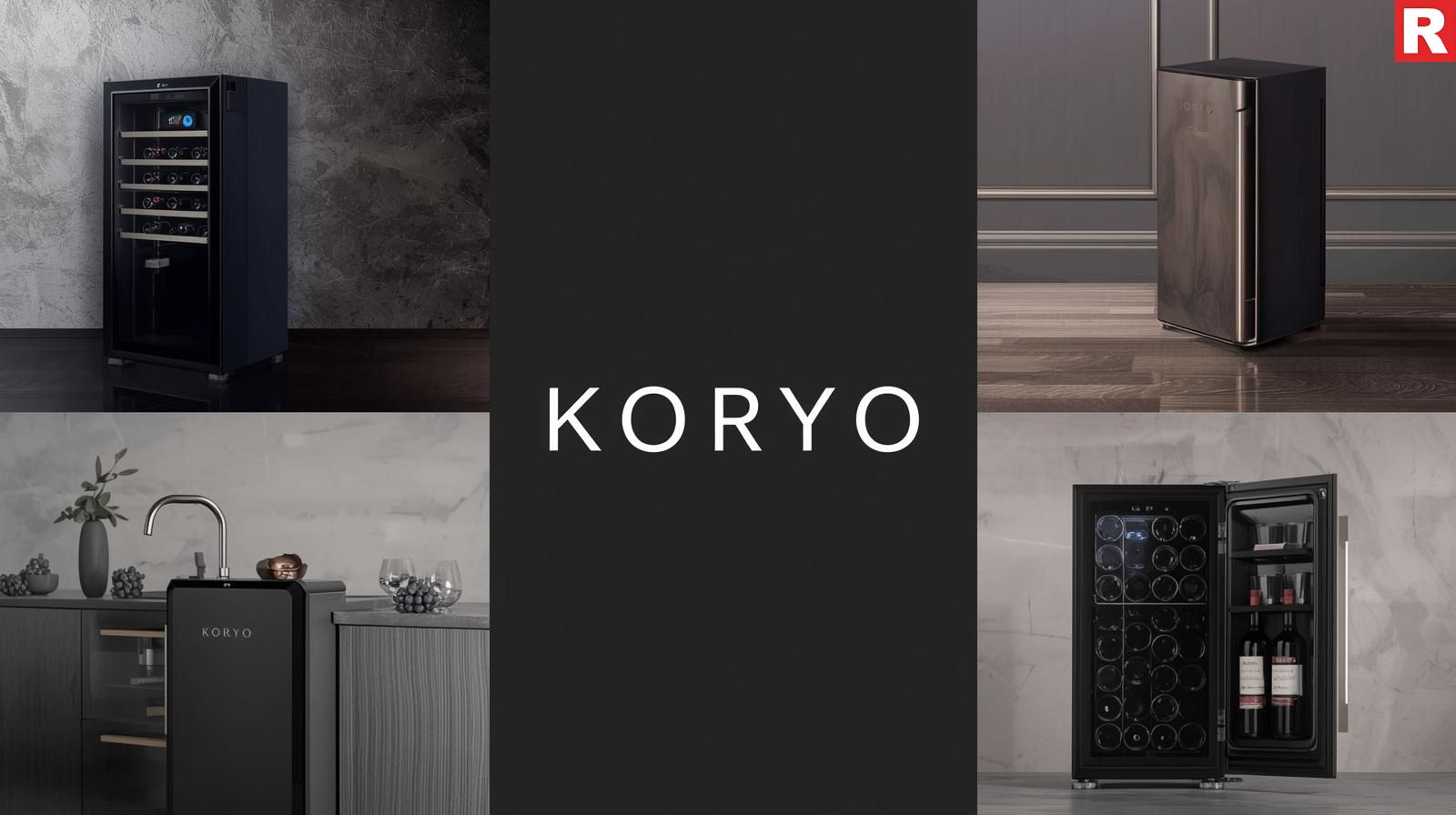
In addition to wine chillers, Koryo, a brand owned by India's Future Group, has made a name for itself in the consumer electronics and home appliances sector. Although they mostly serve the domestic market, their larger and more durable models can be used as backup chillers in larger facilities or in tiny cafés or boutique restaurants. A wider range of businesses can now afford wine storage thanks to Koryo wine chillers, which are renowned for their affordability and easy accessibility. They usually include UV-resistant glass doors, digital temperature controls, and stylish designs that can improve a dining area. Koryo offers a low-cost alternative for companies wishing to launch or grow their wine service without making a big upfront expenditure, even though their emphasis may be more on visual appeal and fundamental functionality. Customers must make sure the model they select has a dependable cooling system for constant temperature and is sufficiently powered for commercial use.
Voltas Beko
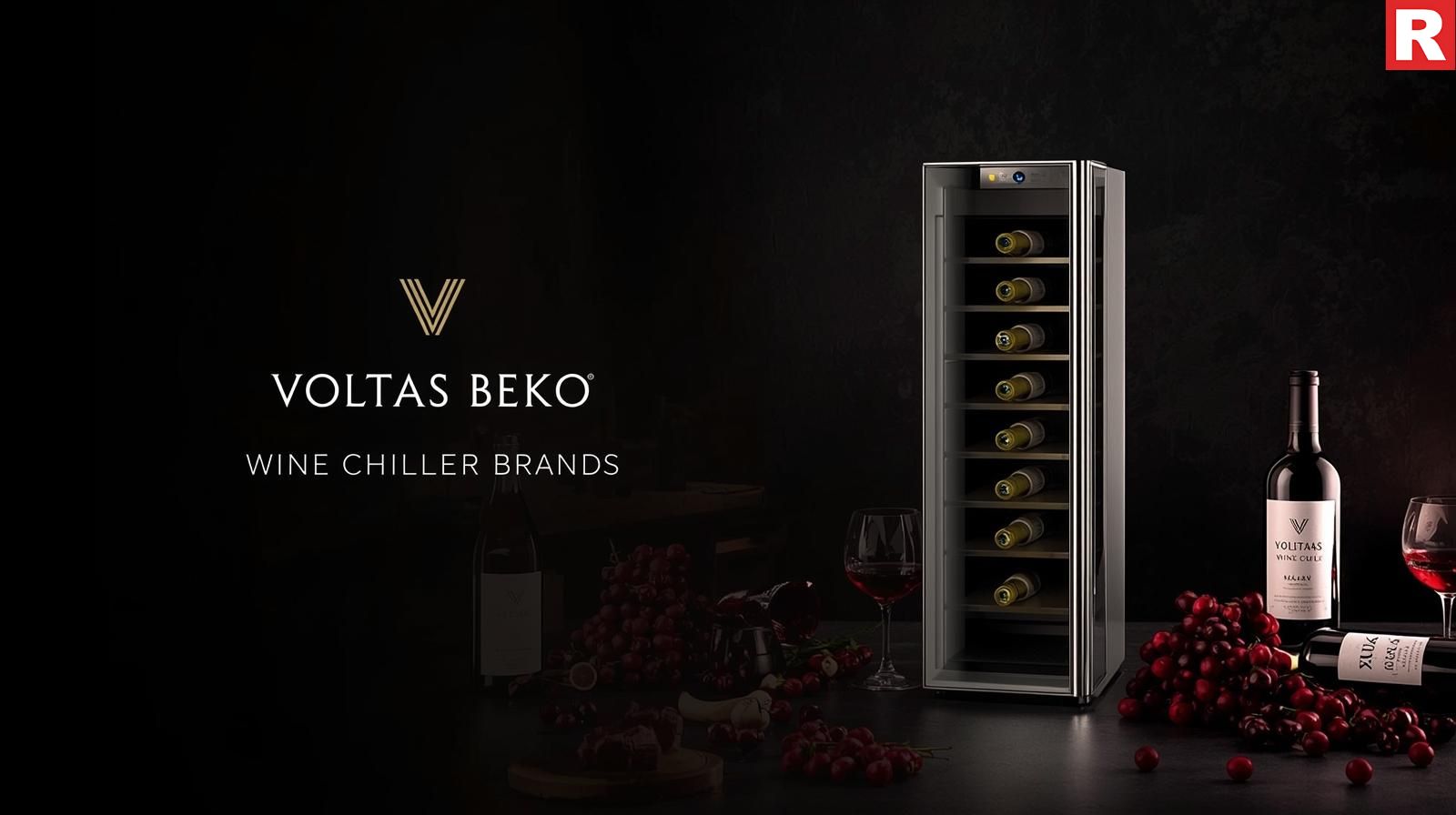
In the Indian appliance sector, Voltas Beko, a joint venture between Turkey's Beko and India's Voltas Limited, is making notable progress. Their higher-end versions have features that make them suitable for commercial use in smaller restaurants, cafes, or hotel rooms, even though their wine cooler options are often targeted towards the residential market. Voltas Beko wine chillers are renowned for fusing cutting-edge cooling technologies, competitive prices, and European design sensibility. Low-vibration compressors, UV-protected glass doors, and dual-zone temperature control are features found in many models. Additionally, they emphasize energy efficiency, which lowers operating expenses for businesses. With the support of Voltas' wide service network, Voltas Beko delivers a fashionable and practical wine cooler that is reasonably priced for modern, design-conscious cafes and mid-sized restaurants.
Read this: Top Draft Beer Dispenser Brands in India for the Perfect Pour
The Perfect Temperature for Success
Improving the dining experience is crucial in India's cutthroat restaurant industry, particularly in food centers. A top-notch wine cooler is now essential to a successful wine program and is no longer optional. It protects priceless inventory, greatly raises consumer contentment, and eventually boosts any business's revenue.
The market provides a wide variety of choices to suit all budgets and sizes. Restaurant owners should carefully consider important aspects such as chiller capacity, temperature zones that are available, cooling technology efficiency, aesthetic integration, and, most importantly, the reliability of the local service network. Making a smart decision guarantees that every bottle...whether it's a cherished vintage or a well-liked house pour, is served and savored at its peak, giving guests an unforgettable and flawlessly cooled experience.

Working in a restaurant is not an easy task, as the staff need to have relentless stamina and fast multitasking abilities. This becomes more important if you are a back-of-house (BOH) employee. The kitchen of an Indian restaurant operates in a visible, fast-paced environment, and it is constantly under pressure. The flow of dirty dishes is never-ending. They need to be continuously washed as new dishes keep coming. However, one essential aspect of washing dishes is to clean them with speed, efficiency, and perfect hygiene. The old method of washing dishes by hand takes a lot of time, which slows turnover times. Also, sometimes dishes are not washed properly and which also causes greater labor expenses. Therefore, purchasing a commercial dishwashing machine has become a necessity for restaurants, hotels, cafes, and catering companies across India, particularly in thriving food hubs. This is important for reasons like operational efficiency, legal compliance, and maintaining cleanliness standards. A dishwashing machine not only helps reduce significant labor, energy, and water, but also helps to get dishes to shine.
But how do you choose which brand has the best dishwashers? Of course, it's not the ones that are the most expensive. Many dishwashing brands in India provide good services, unique features, and good prices for their product. And in this article, we will be talking about such brands. In order to help restaurateurs make an informed choice that will maximize their back-of-house operations and guarantee the highest standards of hygiene, we will examine the unique technologies, features, and compatibility of these brands for the high standards of commercial kitchens.
Read more: Best Flour Brands in India for Pizza & Bakery Restaurants
Why Commercial Dishwashers are Indispensable for Restaurants
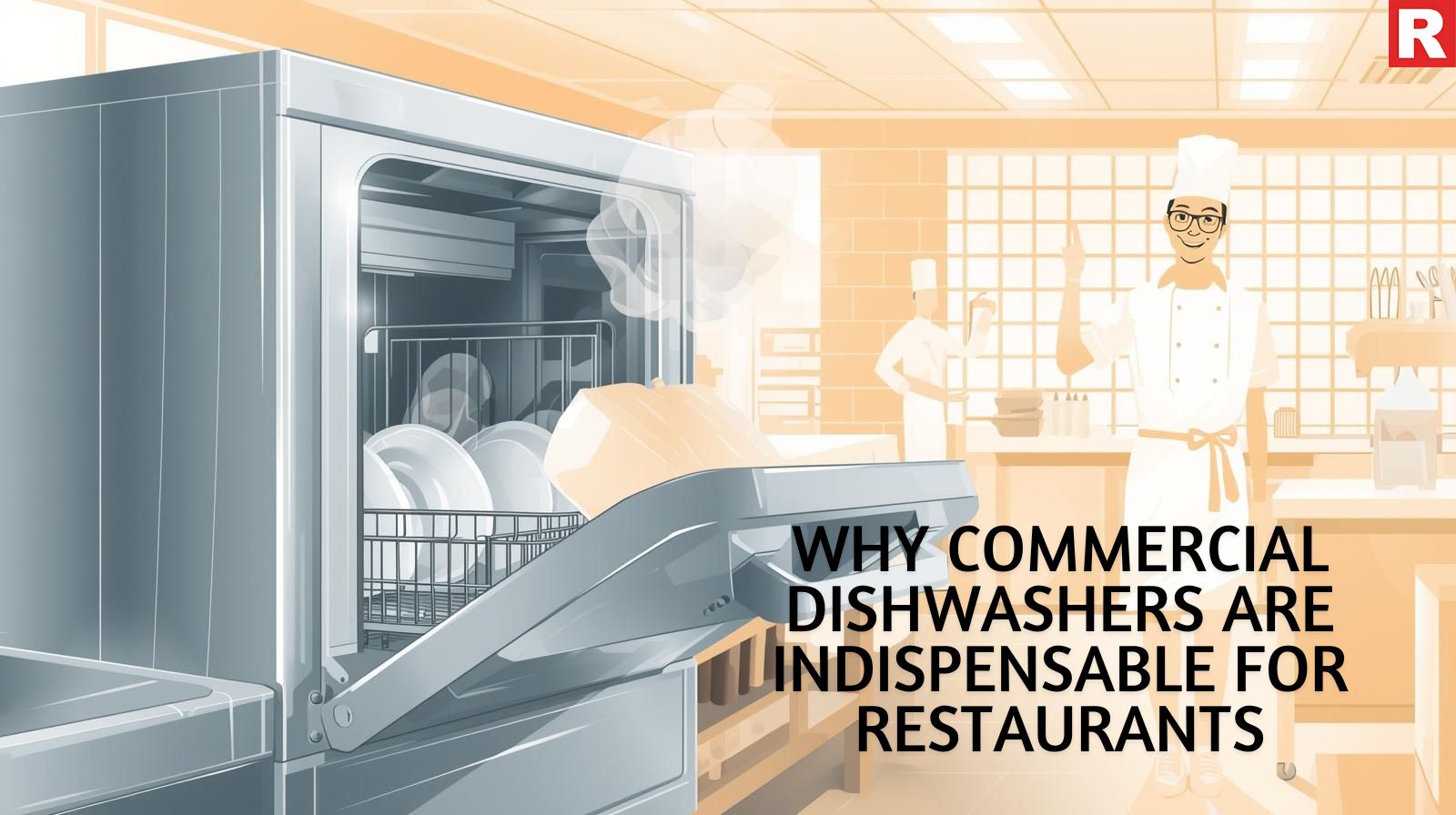
A commercial kitchen has significantly higher dishwashing requirements than a domestic kitchen. Commercial dishwashers are specifically made to handle the particular issues faced by restaurants:
- Volume and Speed: A restaurant must clean hundreds or even thousands of dishes, glasses, and silverware items every hour. In order to guarantee a steady supply of clean goods, commercial machines are designed for high throughput.
- Hygiene & Sanitation Standards: Strict rules govern food safety. By reaching significantly higher wash and rinse temperatures (often 80–90°C) than manual washing, commercial dishwashers successfully sterilize dishes and adhere to strict food safety regulations. It is required to prevent foodborne infections and cross-contamination.
- Labor Cost Reduction: Although a commercial dishwasher requires an initial investment, it drastically lowers the number of employees needed to wash dishes, which results in significant long-term savings in labor costs, along with other costs.
- Consistency & Quality: Human error or variations in the quality of manual washing are eliminated because every dish is consistently cleaned and sanitized. The customer's experience is directly impacted by this consistency.
- Water and Energy Efficiency (Commercial Scale): New commercial dishwashers are designed to be extremely efficient, with heating systems and water jets that are customized to minimize water consumption. This results in decreased utility costs for the company.
- Managing Tough Stains & Grease: Heavy grease and tough, dried-out food are common in restaurant plates. Commercial machines break through them with little to no pre-scraping by using strong pumps, specific detergents, and high temperatures.
- Durability & Robustness: Commercial dishwashers are made of industrial-grade stainless steel and parts that are meant to endure the demands of a busy kitchen. They are built for heavy-duty, continuous use.
Key Types of Commercial Dishwashers for Restaurants
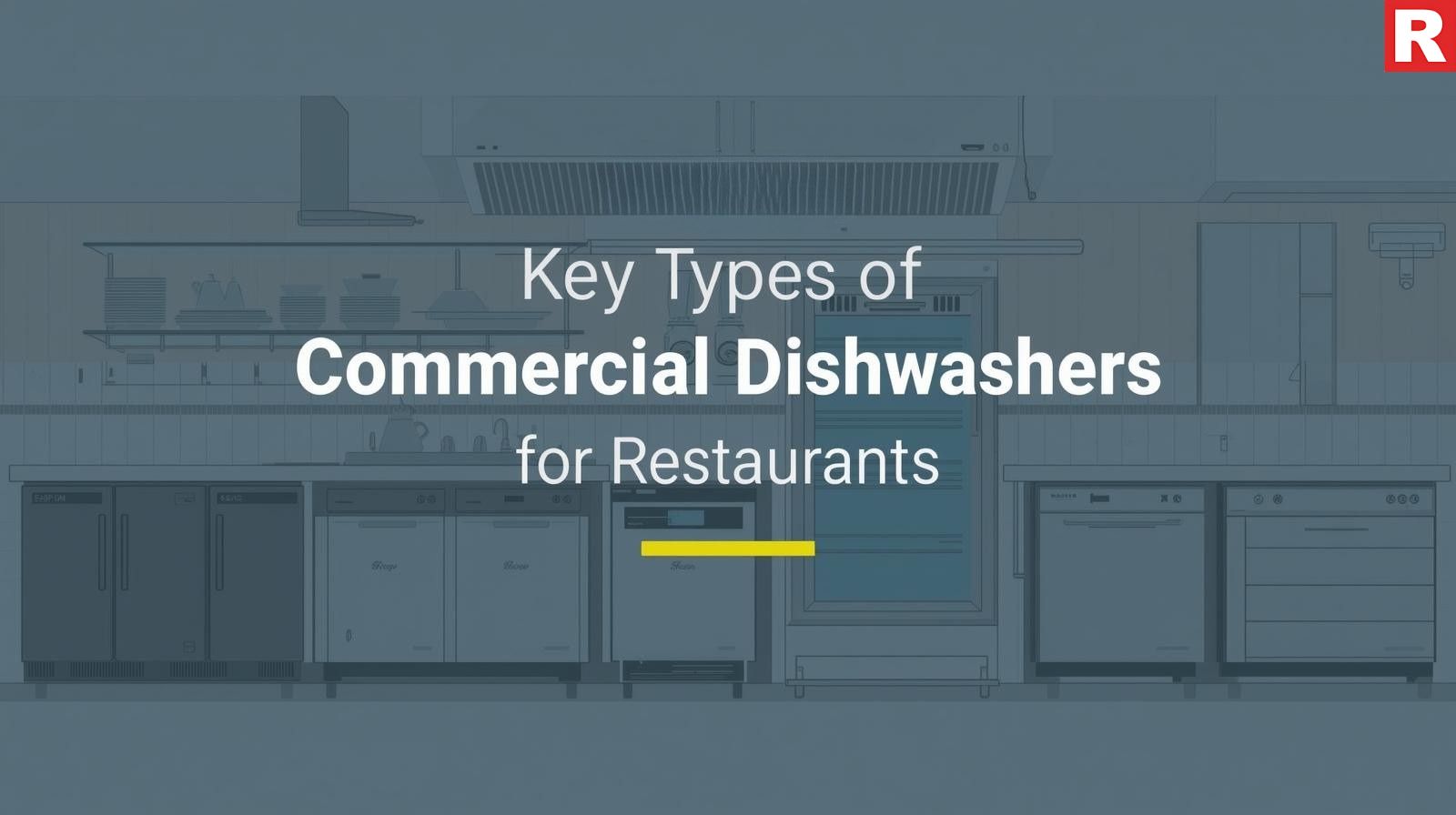
Various types of commercial dishwashers come in different sizes and capacities, each suited for different restaurant sizes and operational scales.
Undercounter Dishwashers:
Description: Designed for commercial use, these small units are similar in size to domestic dishwashers and fit beneath typical counters.
Ideal for: Supplemental units for glass washing in larger establishments, small cafés, bars, and snack counters.
Cycle Time: Typically 2-4 minutes per rack.
Capacity: 20-30 racks/hour.
Hood-Type / Pass-Through Dishwashers:
Description: Standalone devices with manual racks that are pushed into a hood that descends during the washing cycle. Frequently, dishes are manually pre-rinsed at the nearest sink.
Ideal for: Institutional kitchens with greater volumes, banquet halls, and medium-to-large restaurants.
Cycle Time: 1-2 minutes per rack.
Capacity: 60-120 racks/hour.
Conveyor/Flight-Type Dishwashers:
Description: Large, computerized machines that transfer dishes through pre-wash, main wash, and rinse zones either straight onto a conveyor belt or onto specialized racks.
Ideal for: Extremely high-volume activities, such as central kitchens, hospital kitchens, catering businesses, and big hotels.
Cycle Time: Continuous flow.
Capacity: 200+ racks/hour, up to several thousand dishes.
Glasswashers:
Description: Under-counter glassware-specific machines with softer cycles and often lower rinse temperatures to avoid clouding and enable instant handling.
Ideal for: Bars, pubs, and high-volume beverage counters.
Know more: 10 Tips to choose the best Dishwasher for your restaurant
Essential Technologies & Features for Commercial Use

Consider these important factors while selecting commercial dishwashers:
- High Temperature Wash & Rinse: Sanitization requires high-temperature washing and rinsing. Seek out devices that can reach temperatures of 60–65°C for washing and 82–85°C for rinsing.
- Strong Pumps & Spray Jets: To efficiently remove fat and baked-on food.
- Water softeners and descalers: These are essential in hard water areas (like India) to avoid lime scale buildup and to guarantee maximum performance and durability.
- Drain Pump: If the drain exit is above the base of the machine, a drain pump is required.
- Chemical Dispensers: Integrated automatic dispensers that guarantee proper dosage for detergents and rinse enhancers.
- Heat recovery systems: They use waste heat to pre-heat incoming cold water, saving electricity.
- Self-Cleaning Cycles: To minimize manual cleaning efforts and preserve internal hygiene.
- Durability & Material: It is crucial that the entire machinery, including the tanks and wash arms, be built of heavy-gauge stainless steel.
- Service & Support: Avoiding interruption requires a robust local service network.
What's new: Top Air Purifier Brands for Restaurants in India
Top Commercial Dishwashing Machine Brands in India for Restaurants
The most well-known and popular brands of commercial dishwashing machines in the Indian food service sector are included in the list here; they are known for their dependability, effectiveness, and suitability for restaurant operations.
Bosch

The well-known German engineering company Bosch has a significant and trustworthy market share in India and has expanded its reputation for reliability to include commercial dishwashing products. Bosch is well-known for its superior construction quality, cutting-edge cleaning technologies, and strong attention to efficiency and hygiene in restaurants throughout India. Bosch is well-known for producing high-quality dishwashers for homes, but it also provides commercial-grade under-counter units and solutions made especially for the harsh conditions of professional kitchens. High-temperature wash and rinse cycles that adhere to strict sanitization regulations, EcoSilence Drive motors for silent yet effective operation, and DuoPower spray arms for superb water distribution are frequently highlighted characteristics of their products. Water softening systems are a common feature in Bosch commercial dishwashers, which is a significant benefit in places with hard water. For small to medium-sized restaurants, cafés, and bars looking for dependable performance and a brand with a variety of service support, their longevity and energy efficiency help to reduce operating expenses over time.
Winterhalter

German professional warehouse washing expert Winterhalter is known for its unmatched cleaning capabilities and creativity. Winterhalter is well-known in the Indian market for its state-of-the-art technology, superb wash quality, and emphasis on maximum hygiene. Specialized features like Mediamat filter systems for continuous self-cleaning of wash water, VarioPower for adjustable wash pressure, and Active Energy Management for lower running costs are frequently included in their machines. In addition, Winterhalter provides custom solutions, such as water treatment systems made especially to address the hard water problems that are common in many Indian cities. They are especially preferred by luxury restaurants, hotels, and airline catering services that need to maintain spotless glassware and fine china while guaranteeing complete cleaning for bulky objects. Their machines are a wise long-term investment because of their reputation for precision engineering and longevity.
Check out: Best Online Ordering Platform Providers in India
Best Bar Chair and Stool Brands for Indian Bars & Lounges
Electrolux Professional

One of the biggest names in commercial kitchen equipment, including dishwashing machines, is the Swedish multinational Electrolux Professional. They are renowned for fusing modern technology with sturdy construction, a strong emphasis on energy conservation and comfort, and more. A wide variety of commercial dishwashers, including undercounter, hood, and rack models, are available from Electrolux Professional. Their equipment frequently incorporates Green & Clean technology, which prioritizes energy and water efficiency without sacrificing cleaning effectiveness. This is a crucial component for restaurants trying to cut expenses. Their high-end models also frequently use heat pump technology, which increases energy efficiency even more. They are a smart option because of their self-cleaning features, robust stainless steel structure, and easy-to-use interfaces. Electrolux Professional offers dependable, effective, and innovative solutions for a variety of Indian restaurants, from busy cafés to spacious hotel kitchens, supported by a sizable service network.
IFB

An Indian multinational corporation called IFB has been at the forefront of bringing modern household appliances to the Indian market and has expanded its expertise by including solutions for businesses. IFB commercial dishwashers are well-known for their dependability, sturdy design, and special adaptation to the particular difficulties faced by Indian chefs in restaurants all throughout the country. With strong wash cycles and unique spray arms, their machines are made to efficiently clean appliances like pressure cookers and kadhai, even the toughest oil and residue from Indian cooking. Aqua Energie is a popular key technology for better detergent dissolution and successful washing in hard water conditions, which is a prevalent worry in many regions of India. IFB is a great option for small to medium-sized cafés and restaurants because of its wide range of undercounter and hood-type models, which strike a mix between performance, durability, and cost. Their wide service network throughout India adds to their appeal by providing prompt and easily available assistance to reduce downtime.
Read this: Best Commercial Mixer & Blender Brands For Restaurants
Voltas Beko
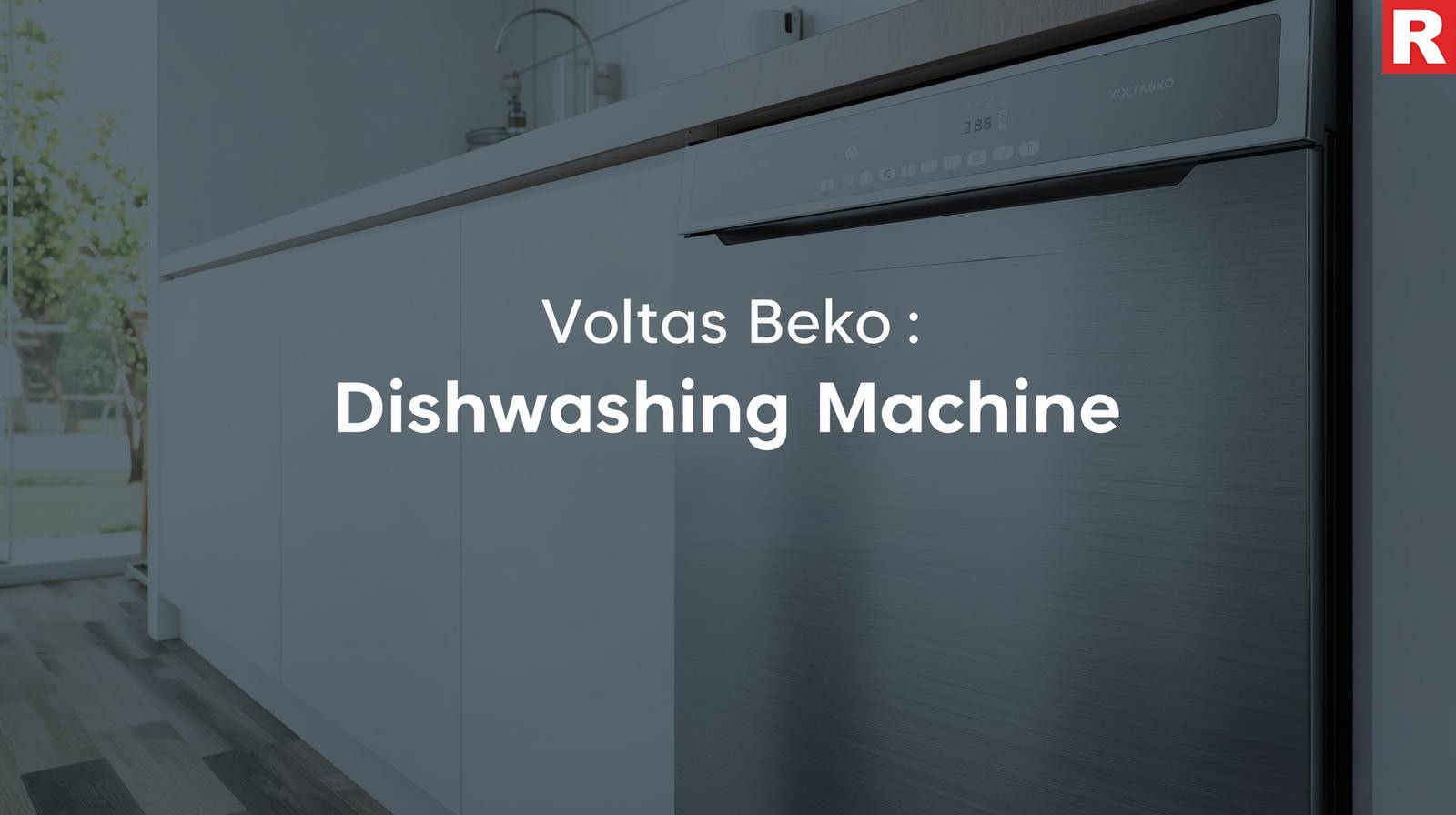
A joint venture between Turkey's Beko and India's Voltas Limited, Voltas Beko combines local market knowledge with international technology. Voltas Beko dishwashers are becoming more popular in India's business market and are well-known for providing advanced technology at affordable prices. While undercounter units ideal for cafes, bars, and smaller restaurants may be the main focus of their commercial range, these machines frequently include features like Aqua Intense technology for powerful cleaning, even against stubborn stains, and a ProSmart Inverter Motor for quiet and efficient operation. Their emphasis on innovative drying technology and energy efficiency offers restaurants substantial operating advantages. Given the cost sensitivity of the Indian food service sector, Voltas Beko seeks to offer dependable and easily accessible solutions. They are a sensible option for restaurants looking for modern design and good value because of their growing service network, which takes advantage of Voltas's strong presence.
A Clean Plate for Success
Commercial dishwashing machines are now considered strategic investments rather than luxury items in the demanding field of Indian food service. It supports operational effectiveness, guarantees vital food safety, and eventually improves a restaurant's standing. From crowded cafes to high-volume hotels, the washing process must be done quickly, hygienically, and consistently. The market provides a range of trustworthy options to fit every size and price range. Restaurant owners may make a well-informed choice by carefully weighing aspects including capacity, cutting-edge wash technology, water treatment capabilities, energy efficiency, and most importantly, the quality of local after-sales service.

When it comes to professional baking and pizza, the quality of the finished product depends on the quality of its most basic component, flour. Choosing the correct flour has a significant impact on a variety of aspects for Indian chefs, bakers, and restaurateurs, ranging from the texture and rise of a dough to the final product's flavor profile and shelf life. There are many different flour brands available in the Indian market because of their varied cuisine and rising demand for real Italian pizza and handcrafted baked items. But not every flour is made equally. The ideal flour for a robust sourdough loaf and a light, fluffy croissant is not the same as the one for a chewy Neapolitan pizza.
This comprehensive article explores the science of flour and lists the top flour brands available in India for bakeries and pizza joints. We will look at the qualities that make a flour appropriate for particular uses, analyze the major market sellers, and offer advice to help restaurateurs make a calculated decision that improves their culinary productions.
Read more: Best Online Ordering Platform Providers in India
Understanding the Science of Flour

It's important to comprehend the factors that influence flour's behavior before delving into the brands. Gliadin and glutenin are the two crucial proteins. These proteins come together to produce gluten, the elastic network that gives dough its structure, flexibility, and chewiness, when flour and water are combined.
- Protein Content: The protein content of flour is its most crucial statistic.
- Low-Protein Flours (7-9%): These "soft" flours are perfect for biscuits, cakes, and pastries that call for a crumbly, soft feel.
- Medium-Protein Flours (10–12%): "All-purpose" flours that can be used for a variety of recipes, such as fast breads and cookies.
- High-Protein Flours (12-14%+): "Hard" flours that are high in proteins that produce gluten are known as high-protein flours (12–14%+). These are necessary for breads, pizzas, and other goods that need to have a good rise and a sturdy, elastic structure. We will concentrate on this niche for pizzas and a variety of other baked goods.
- Ash Content: The mineral content that remains after burning flour is referred to as the "ash content." It serves as a measure for the quantity of bran and germ. A flour with a lower ash level is whiter, and one with a greater ash content is more delicious and whole-grain. For instance, Italian Tipo 00 flour is well-known for having a very low ash level, which helps to create a smooth, fine texture.
- W Index: The W index (W), a less widely used but extremely important indicator, measures the strength of a flour. It is a crucial sign of its resistance to fermentation and its water absorption ability. While a lower W index (e.g., 180-250) is appropriate for doughs that respond more quickly, a higher W index (e.g., 300-400) suggests a very strong, elastic flour perfect for long-fermented doughs like Neapolitan pizza.
Know more: Best Bar Chair and Stool Brands for Indian Bars & Lounges
Top Flour Brands in India for Pizza & Bakery Restaurants
After laying the theoretical groundwork, let's examine some of the leading brands in the Indian professional food sector.
Caputo

Protein Content: 12.5%
W index: 220-240
Perhaps the most well-known flour brand in the world, particularly in the Neapolitan pizza industry, is Caputo. Despite not being an Indian brand, many experts choose it because of the vast importation of its products and the availability of specialty suppliers in India. A Tipo 00 flour with a protein content of about 12.5% and a W index of 220-240, Caputo is well-known for its Antimo Caputo Pizzeria (blue bag), which is ideal for a light, supple, and flawlessly blistered Neapolitan crust. For prolonged fermentation and bread-making, they also provide a stronger Caputo Cuoco (red bag) with a higher W index (300-320) for longer fermentation and bread-making. A benchmark for quality and consistency, the brand's reputation is based on generations of milling knowledge. This is important for restaurants that require their dough to perform well consistently.
Pillsbury

Protein Content: 10-11%
W index: Not Specified
With its Pillsbury Atta and other flours, Pillsbury, a brand that has long been connected to home baking, has also made a big entry into the commercial market. Pillsbury is well known for its whole wheat goods for rotis and chapatis, but it also sells maida, a refined flour that is frequently used in tiny cafés and bakeries. The brand is well-known for being widely accessible, high-quality, and reliable. Their refined maida flour has a decent medium-protein content, usually between 10 and 11 percent. Although the W Index is not formally defined, it is typically lower than professional bread flours, making it appropriate for a variety of uses, including general-purpose bread and cakes, and biscuits. Although it might not possess the unique qualities of imported Italian flours for a genuinely authentic Neapolitan pizza, a premium refined maida from a reputable company like Pillsbury can be a dependable and affordable option for a wide range of bakery goods, especially for businesses that require a flexible flour for a varied menu.
What's new: Top Air Purifier Brands for Restaurants in India
Ashirvaad
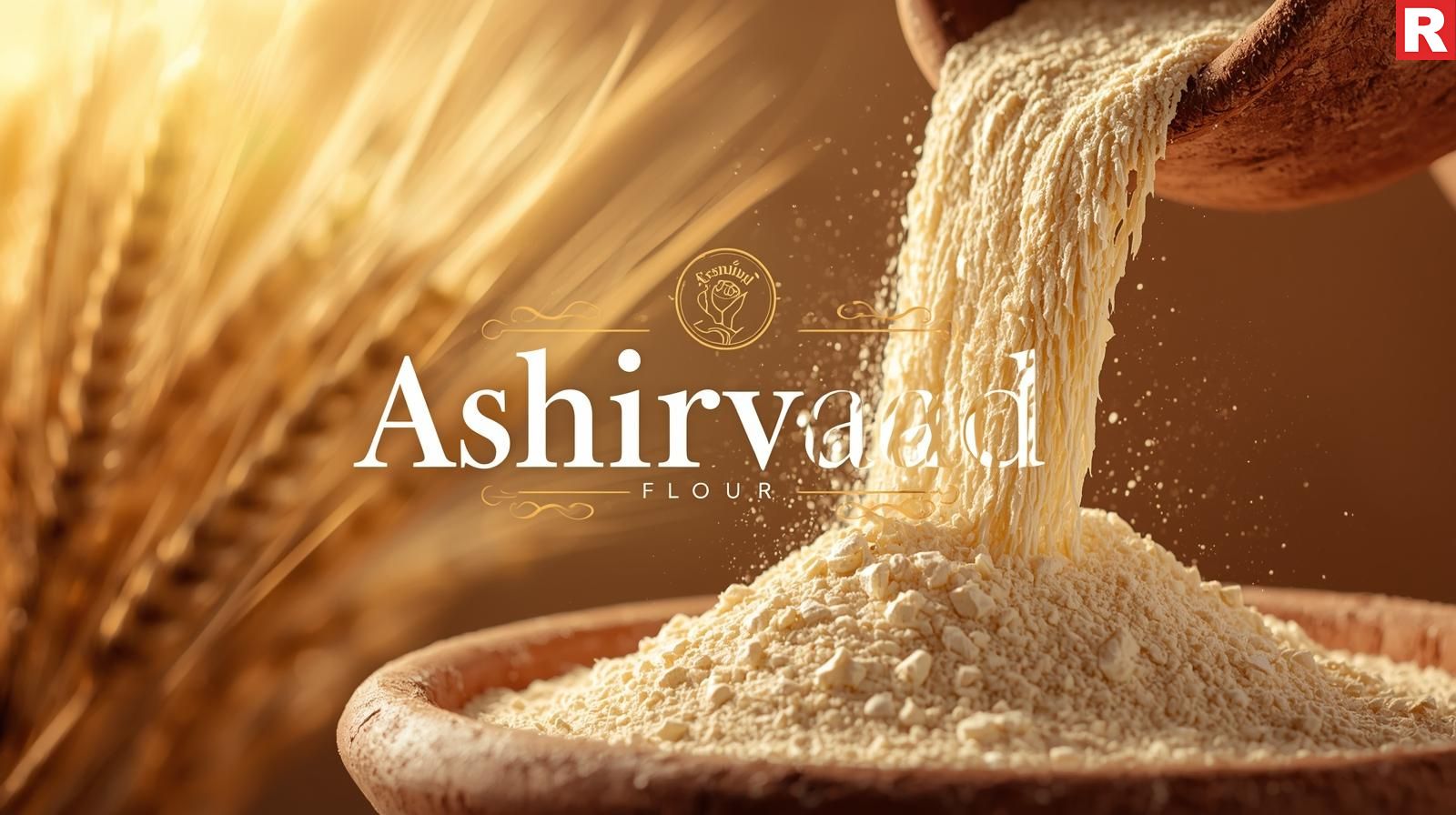
Protein Content: 11-12%
W index: medium-high strength
Ashirvaad, which is well-known in India for its atta (whole wheat flour), has similarities to Pillsbury. Nevertheless, the professional kitchen has also adopted its maida, or refined flour of commercial grade. For high-volume bakeries, Ashirvaad's well-known brand awareness and reliable quality are important. Bread, pastries, and general-purpose baking are just a few of the many uses for their maida flour, which is dependable and versatile. Ashirvaad refined flour's protein content is often between 11 and 12%, which is higher than average for an all-purpose flour. This makes it a flexible choice for both naan and kulchas as well as regular bread. The W Index is not explicitly mentioned, but its performance shows it has a medium-high strength, making it a dependable pick. Businesses that require a flexible and reasonably priced flour for various purposes can use it because of its dependability and reasonable pricing.
Baker's Choice
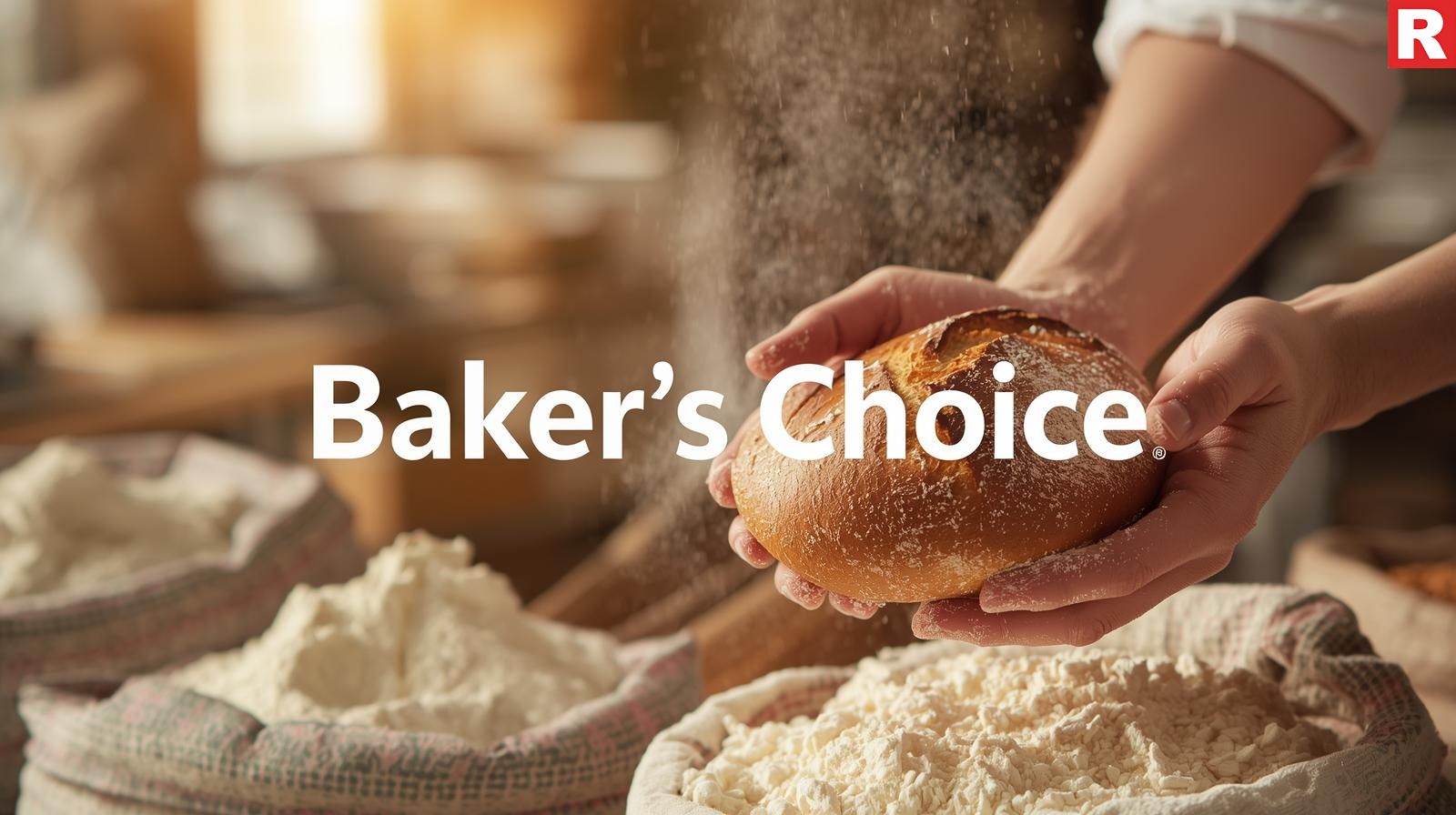
Protein Content: 13–14%
W index: can range from 250 to 300+
In addition to the well-known brands, there are an increasing number of smaller Indian companies serving the professional pizza and baking market. Companies such as Baker's Choice have established themselves by providing high-protein maida that is especially developed for pizza and bread. These companies are well-known for offering a domestic substitute for pricey imported flours. Their professional-grade flour usually has a protein content of 13–14% and a W Index that, depending on the product, can range from 250 to 300+. They are, therefore, a good option for many goods that need a strong gluten structure. Additionally, a lot of these businesses have specialty flours for use in pastries, croissants, and other kinds of bread, so professional bakers can select a product that suits their requirements. Their increasing presence suggests that the Indian market is growing and that there is a higher need for high-quality ingredients.
Check out: Best Commercial Mixer & Blender Brands For Restaurants
Top Tea Brand options to consider for Restaurateurs in India
Weikfield
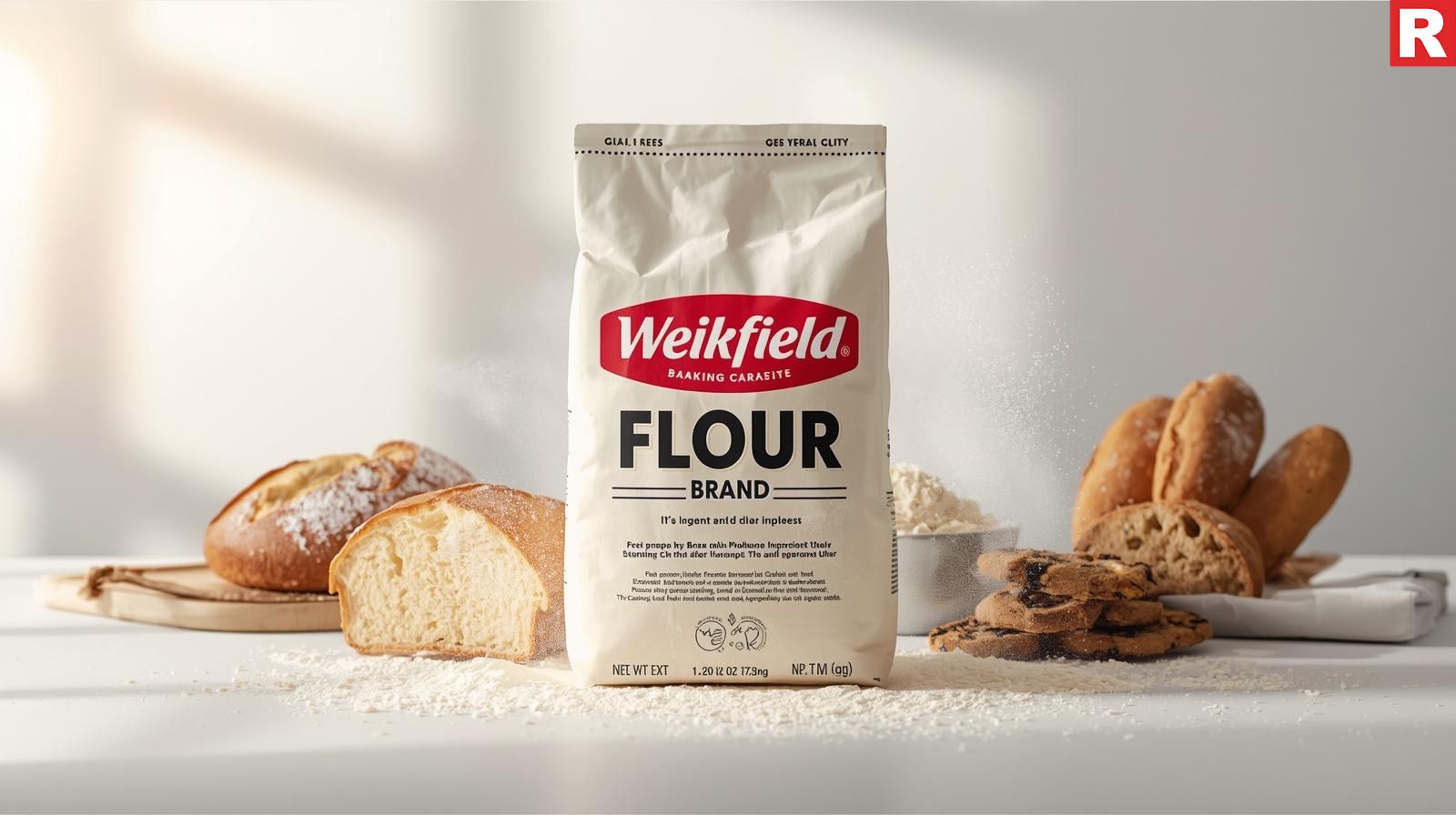
Protein Content: 11-12%
W index: not officially published
Another well-known brand in the Indian market is Weikfield, which is mostly associated with baking supplies like yeast and baking powder. They do, however, also provide a variety of refined flours and other bakery-related items that are utilized in industrial cooking facilities. Many skilled bakers trust Weikfield's flour because of its reputation for dependability and constant quality. Their medium-protein refined maida is appropriate for a variety of baked goods, including bread and cakes, and pastries. Their products are a reliable option for a bakery that needs a diverse, consistent, and reasonably priced flour, even though they might not have specific flours for different kinds of pizza. Although the W Index is not formally recorded and the protein content is typically between 11 and 12%, it works well as a general-purpose baking flour.
The Strategic Choice: Beyond the Brand Name

Selecting flour for a professional food business is a strategic choice that extends beyond brand loyalty. Getting the correct flour for the proper product is the key.
- For authentic Italian pizza: It is important to purchase imported Tipo 00 flour from a company such as Italica or Caputo. The qualities of this flour are closely related to the texture, flavor, and chewiness of the crust, and there is no alternative for a pizzeria striving for genuine authenticity.
- For General Bakery & Bread: Commercial products from Pillsbury or Ashirvaad, or even a robust, high-protein maida from a reputable domestic brand like Bakers Choice, might be excellent options. These flours work reliably for bread and pastries, and they are widely accessible and reasonably priced.
- For Artisanal Sourdough & Specialty Breads: In order to produce the ideal open crumb and robust flavor, many professional bakers are now choosing to use specialty domestic flours or even import particular types of flour.
Read this: How to Choose the Perfect Spooky Theme for Your Restaurant
Conclusion
In the end, the ideal flour for a restaurant is the one that is regularly accessible, affordable, and yields a high-quality product. From the high-end, specialty flours for fancy pizzerias to the adaptable and reliable options for busy bakeries, the brands featured in this article provide a variety of solutions. Selecting the appropriate flour is the first and most crucial step in producing a culinary masterpiece in a market where quality is the key to success.

With the growing concern over air pollution, the market for air purifiers has expanded significantly. This includes air purifiers for both commercial and domestic use. This also includes the food & beverage sector. Air quality is an unseen factor that increasingly determines a customer's comfort and sense of hygiene in India's vibrant food culture, where flavors attract and scents seduce. Maintaining a good and healthy indoor atmosphere is no longer merely a gesture of respect for restaurants; it is now essential to customer satisfaction, employee health, and compliance with laws. Commercial-grade air purifiers are now essential equipment for contemporary Indian restaurants, as they can filter out dust, allergens, and airborne pathogens in addition to fighting smoke and cooking aromas. In urban areas with high pollution levels, such as New Delhi, a restaurant's dedication to clean air can make a big difference.
In addition to highlighting the best air purifier brands for Indian restaurants, this detailed article discusses the critical role that excellent air quality plays in the food service industry. In order to help restaurateurs make smart decisions and give their customers and employees a sense of security, we will examine the key features, technology, and suitability of these brands.
Why Air Quality Matters in Restaurants

Many different components make up the air in a restaurant. Even while the aroma of paneer tikka or biryani is delightful, the dining experience can be rapidly ruined by residual cooking smells, tandoor smoke, and other indoor air pollution. There are important operational and health factors in addition to comfort:
- Customer Comfort & Experience: Stuffiness, unpleasant smells, or visible smoke give the wrong impression. The dining experience is improved by clean, fresh air, which promotes longer stays and return visits.
- Health and Hygiene: Restaurants see a lot of foot traffic. By removing dust, pollen, fur from pets (if any), and—above all—airborne bacteria and viruses, air purifiers help create a healthier atmosphere for customers and staff members alike. This factor has become more significant than ever in the post-pandemic period.
- Employee Well-Being & Productivity: Long-term exposure to heat and cooking odors is especially harmful to kitchen staff members. Improved working conditions, fewer respiratory problems, and more productivity are all benefits of cleaner air.
- Preventing Odor Transfer: By keeping strong cooking smells out of the dining room and other areas of the business, air purifiers can maintain a constant and comfortable environment.
- Equipment Longevity: Cleaner kitchen appliances and HVAC systems can last longer due to a reduction in dust and grease in the air.
- Regulatory Compliance & Brand Reputation: Local laws related to indoor air quality may tighten as awareness increases. In addition to compliance, a restaurant with a reputation for having clean air frequently has a better reputation.
Read more: Best Bar Chair and Stool Brands for Indian Bars & Lounges
Key Technologies in Commercial Air Purifiers

Understanding the core technologies helps in selecting the right purifier for a restaurant's specific needs:
- HEPA (High-Efficiency Particulate Air) Filters: The best method for removing airborne particles is to use HEPA (High-Efficiency Particulate Air) filters. Dust, pollen, mold spores, some germs, and viruses are among the 99.97% of particles as small as 0.3 microns that HEPA filters can capture. These are essential for eliminating physical contaminants.
- Activated carbon filters: These are essential for eliminating odors. Because of the amount of pores, activated carbon efficiently absorbs gases, organic substances, and scents from cooking, such as smoke and grease.
- UV-C Light: As air flows through the device, ultraviolet-C germicidal irradiation can destroy bacteria, viruses, and mold spores. It works well as a sterilizing layer, particularly in situations where hygienic conditions are crucial.
- Ionizers/PlasmaWave/PlasmaCluster: To clump particles together and make them simpler for filters to catch or cause them to fall out of the air, Ionizers, PlasmaWave, and PlasmaCluster technologies release charged ions into the atmosphere. Selecting models with little or no ozone emission is crucial since, despite their effectiveness, some may emit ozone.
- Pre-filters: These thick filters prolong the life of the more fragile HEPA and carbon filters by capturing bigger particles, including hair, lint, and large dust.
Factors to Consider When Choosing an Air Purifier for a Restaurant
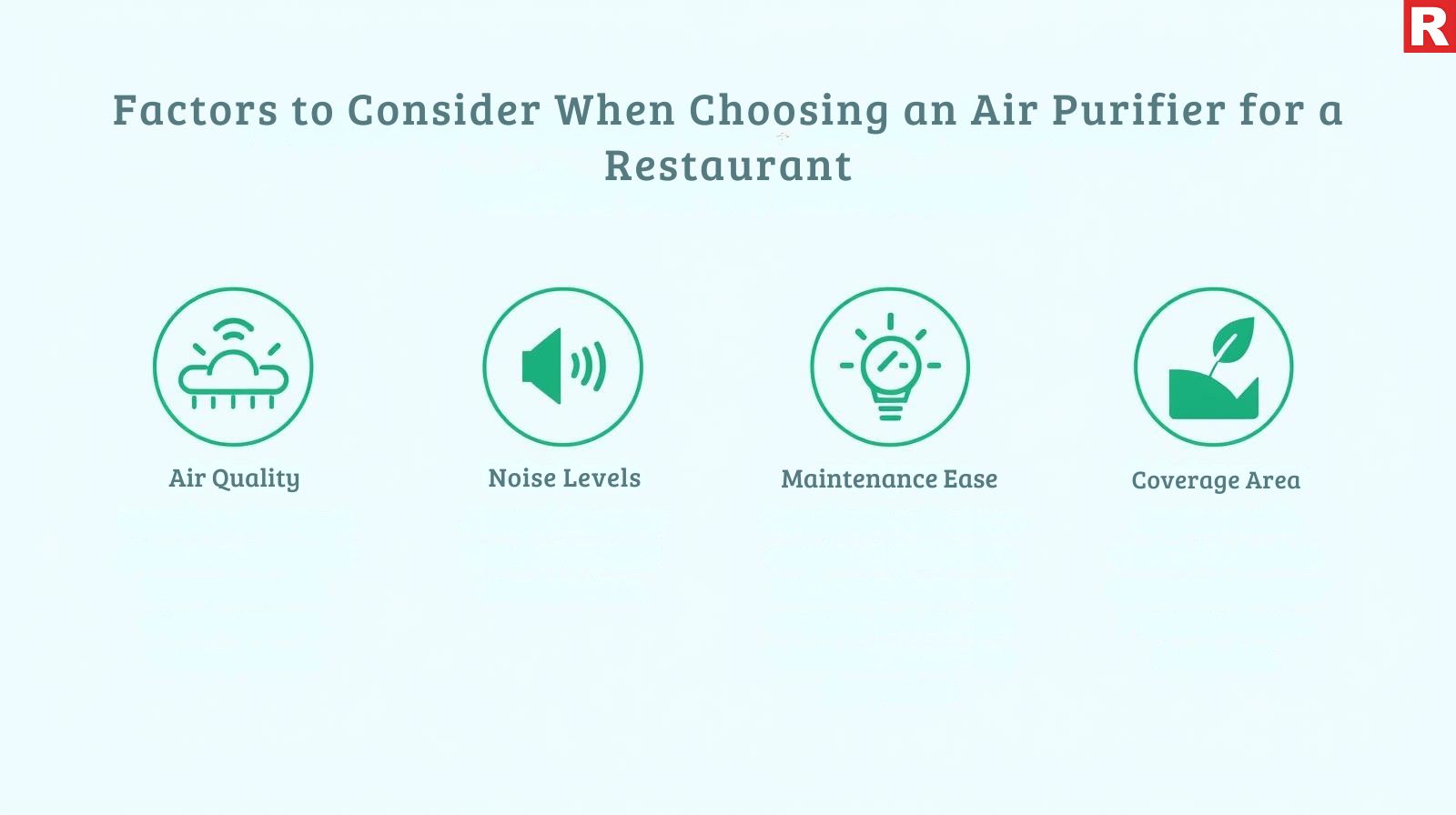
Choosing a brand is only one aspect of choosing the best air purifier. The following are crucial factors for Indian restaurants:
- Coverage Area (CADR): A measure of the purifier's speed at cleaning a room, expressed in Clean Air Delivery Rate (CADR). Larger kitchens and dining areas will require a high CADR. To get an approximate CADR target, multiply the square footage of your room by two-thirds.
- Filter Type & Lifespan: Restaurants are not allowed to use a multi-stage filtration system that consists of a pre-filter, HEPA, and activated carbon. Examine the lifespan and cost of filter replacements, as these add to operating costs.
- Noise Level: Very important in dining rooms. Select models with low decibel ratings, particularly when the fan speed is lowered.
- Commercial Grade & Durability: Restaurant environments are harsh. Select sturdy, commercial-grade devices that are designed to run continuously.
- Maintenance Ease: Replacing a filter should be simple. Pre-filters that are simple to clean reduce overall maintenance effort.
- Smart Features: Air quality sensors, auto mode, app control, and Wi-Fi connectivity can all improve efficiency and convenience.
- Aesthetics & Placement: The device should be discreetly positioned or mixed in with the interior design of your restaurant.
- Reputation of the Brand and After-Sales Service: In India, a robust local presence, dependable warranty, and effective service network are critical for reducing downtime.
Know more: Best Commercial Mixer & Blender Brands For Restaurants
Top Air Purifier Brands for Restaurants in India
Each of the most popular and widely recognized air purifier brands in the Indian food service sector has something special to offer, and this list has been carefully chosen keeping that in mind.
Blueair

The Swedish company Blueair is widely recognized as the leading name in the air purification industry. It has a significant global presence and is expanding in India. Blueair units for restaurants are well-known for their patented HEPASilent technology, which blends mechanical and electrical filtration. This makes them perfect for dining spaces where ambiance is important because they can give high Clean Air Delivery Rates (CADR) with very low noise levels. Their multi-stage filtration usually consists of a main particle filter, a washable pre-filter, and a combination particle and activated carbon filter (commonly impregnated with coconut shell carbon for better odor elimination).
In addition to significantly reducing cooking aromas, smoke, and volatile organic compounds (VOCs) that are frequently seen in restaurant environments, this sturdy system is also good at capturing dust, allergens, and airborne particles. Although Blueair purifiers are more expensive, fine dining venues, high-end restaurants, and health-conscious cafes that value the best possible air quality will find that their longevity, energy economy, and exceptional performance make the investment worthwhile. Additionally, their clean, European style enables them to blend in perfectly with modern interiors.
What's new: Best Online Ordering Platform Providers in India
Honeywell

A well-known American multinational corporation, Honeywell has a sizable manufacturing and service presence in India and also provides a wide selection of commercially usable air purifiers. They are well-known for their dependability, powerful filtration, and excellent value for money ratio. Commercial-grade air purifiers from Honeywell usually use a multi-stage filtering system that includes an activated carbon filter, a high-grade HEPA filter (usually H13 medical-grade), and a pre-filter. This technology is very successful at eliminating smoke, cooking aromas, and other indoor pollutants.
A UV-C lamp is also included in several models to provide additional bacterial protection. Because of its well-established service network and availability of spare parts, Honeywell is a reputable brand for restaurants in India. Their purifiers are built to last and run continuously, which makes them a sensible option for cafés, mid-to-large restaurants, and QSRs (Quick Service Restaurants) that require reliable air purification without going over budget. In order to effectively cover bigger spaces, their commercial series frequently have higher CADR ratings.
Check out: Top Tea Brand options to consider for Restaurateurs in India
How to Choose the Perfect Spooky Theme for Your Restaurant
Coway

The South Korean environmental home appliance manufacturer Coway, which is well-known for its sophisticated design and cutting-edge filtration technology, has made significant progress in the Indian market. They are well-known for their advanced features and extensive filtering systems. Coway air purifiers frequently have an advanced multi-stage filtration system that consists of True HEPA filters that can capture tiny dust particles, activated carbon filters for odor removal, and pre-filters. For better virus and bacteria elimination, some advanced versions even have their exclusive GreenHEPA filter and an antibacterial filter, which is a big plus for hygienic restaurant settings. Their appliances are also known for their energy-efficient, silent operation and innovative features like auto modes that change fan speed in response to air quality and real-time air quality indicators. For contemporary cafés, lounges, and fine dining restaurants looking for a blend of superior performance, elegant design, and clever management to give customers a first-rate experience, Coway is a great option.
Dyson

The British tech firm Dyson has completely changed how people think about a lot of household products, and their air purifiers are no different. Dyson purifiers are well-known for their unique, elegant designs, cutting-edge filtration, and frequently multipurpose (purifying, heating, and cooling) features, making them ideal for premium dining establishments and luxurious lounges. Their larger versions provide strong air purification that is appropriate for smaller, private business venues or as additional units in larger ones, even though they are primarily made for home usage. A fully sealed HEPA and activated carbon filtration system is a common characteristic of Dyson purifiers, which capture allergens, gases, smells, and ultrafine particles. Their innovative airflow projection technology makes sure that the room's cleaned air circulates efficiently. Their innovative design, cutting-edge technology, and frequently extra features are reflected in the high price point. For businesses that value design and innovative technology as components of their brand identity, Dyson provides an intriguing, if expensive, option.
Read this: Top Eco-friendly Packaging Brands for Restaurants
A Breath of Fresh Air for Your Business
In the fiercely competitive restaurant business in India, where every little thing affects the customer's experience, having excellent air quality is quickly turning into a must. Purchasing an excellent industrial air purifier is not only about keeping your space clean; it's also about protecting your health, improving comfort, and confirming your brand's dedication to quality. Restaurant owners can choose the ideal air purification system by carefully weighing elements, including coverage area, filtration technology, noise level, and after-sales service. Offering some fresh air can greatly improve the eating experience and drive customers to stay longer, come back more frequently, and fully enjoy their time in your restaurant.

In the highly competitive and quickly changing Indian food service sector, having a digital presence has become essential rather than optional. The days of just walk-ins and orders placed by phone are long gone. Customers today are accustomed to a smooth ordering process via their smartphones, tech-savvy, and convenience-driven. For restaurants, coffee shops, and cloud kitchens, this has meant adopting online ordering systems that are ideal for data-driven growth, customer interaction, and brand building, in addition to facilitating transactions. For a food business, selecting the appropriate platform can be the most crucial choice, affecting everything from profitability to operational effectiveness.
This in-depth article explores the essential purpose of these platforms and lists the top Indian suppliers of online ordering systems. In order to assist restaurateurs in making a strategic choice that will enable their business to prosper in the digital era, we will examine the key characteristics, unique selling points, and target market of these major names.
What are Online Ordering Platform Providers?

An online ordering platform provider is a tech business that provides restaurants with software to set up and run their own branded online store. They provide a private label service, in contrast to food aggregators such as Swiggy and Zomato, which function as a broad marketplace for multiple restaurants. This means your logo, colors, and unique menu presentation are all fully branded to your restaurant, giving customers a smooth and consistent brand experience. These platforms offer a mobile-friendly page, a separate website, or a complete mobile application that allows customers to place purchases with you directly. From order placing and safe payment processing to customer service and order tracking, they manage the full digital transaction process.
Read more: Top Draft Beer Dispenser Brands in India for the Perfect Pour
How They Help Restaurants
Restaurants benefit greatly from online ordering platforms, which solve some of the most important issues in the present-day food industry.
- Increased Profit Margins: Restaurants can avoid paying the hefty commissions that food aggregators demand by having their own direct ordering channel, which enables them to keep a far higher portion of their earnings.
- Direct Customer Relationships & Data Ownership: You are in complete control of your customers' names, order histories, and other data when you have your own platform. With the help of this data, you can directly and consistently connect with your most loyal customers and customize the marketing efforts.
- Total Brand Control: You have total control over the digital identity of your brand when you use a private platform. The appearance and user experience can be customized to precisely fit the theme of your restaurant, guaranteeing that every digital interaction captures the essence of your brand.
- Enhanced Marketing & Loyalty Programs: To promote repeat business and cultivate a community of devoted customers, you may develop complex, data-driven marketing campaigns, send customized offers, and establish your own loyalty programs.
- Operational Efficiency: A restaurant's current Point of Sale (POS) system can be easily integrated with a number of online ordering systems, which simplifies the order management procedure and lowers the possibility of human mistakes.
What to Look for When Choosing an Online Ordering Platform Provider

Selecting the best online purchasing platform is a crucial business choice. Locating a partner who shares the unique requirements and objectives of your business is more important than simply choosing a service.
- Usability: The platform needs to provide a user-friendly interface on both sides. Customers should be able to place orders quickly and easily. The back-end dashboard should have a short learning period and be easy to use for your employees.
- Pricing Structure: Find out if there is a fixed monthly subscription charge or a commission based on a percentage of each order. Ask about any possible hidden costs, including setup fees or further payments for marketing tools.
- Integration Capabilities: Your current technology, especially your point-of-sale system, should be able to connect easily with a genuinely successful online ordering platform. This is essential for optimizing processes, guaranteeing order correctness, and offering an overall view of your business's success.
- Customization and Branding: Your brand is reflected in your online ordering system. Choose a supplier that gives you extensive customization options so you can manage the menu layout, color scheme, design, and images.
- Customer Service and Dependability: Pick a supplier who has a solid track record of providing exceptional customer service and dependable platforms. To reduce downtime and guarantee that your digital activities are always operating efficiently, you need a responsive support staff.
Know more: Best Commercial Mixer & Blender Brands For Restaurants
The Best Online Ordering Platform Providers in India
Now that you know what to look for, let's examine some of India's largest and popular suppliers of online ordering platforms, each with unique plans for digital transformation.
Thrive: Commission-Free Ordering

Consider a platform that pays you for the money you have been donating to aggregators. That's the promise of Thrive, a brand that has swiftly established itself as a symbol of helping restaurants go direct. Thrive, a Bengaluru-based company, has made a name for itself as a major force because of its smooth, commission-free platform that gives restaurateurs back control. Their main product is an ordering system that is fully branded and accessible online and on smartphones, which seems and feels like a natural extension of the restaurant's own brand. Businesses with large quantities to order find Thrive's fixed monthly fee pricing model appealing since it enables them to precisely forecast their costs and save a substantial amount on commissions.
The seamless connection of Thrive with well-known POS systems like POSist, Petpooja, and Gofrugal is what makes it a great option. This eliminates errors and manual entry by ensuring that orders placed by customers on your Thrive-powered website appear immediately on the POS screen in your kitchen. With its wide range of marketing tools, which includes creating promo codes and running SMS/email campaigns, this robust and user-friendly platform does more than just handle orders; it also helps you cultivate customer loyalty and promote repeat business. Thrive provides a free and lucrative option for any restaurateur who has been annoyed by aggregator fees.
What's new: Best Bar Chair and Stool Brands for Indian Bars & Lounges
Dotpe: The Simplicity of the QR Code

A straightforward approach is frequently the most appealing approach when it comes to online ordering. With its straightforward yet effective QR code-based approach, Dotpe, which has its headquarters in Gurugram, has completely transformed the digital ordering industry. Their strategy is simple and brilliant: customers are directed immediately to the restaurant's customized menu for ordering by scanning a QR code that is displayed on the dining table, on fliers, or on a social media website.
Because of its well-known zero-commission policy and remarkably simple setup process, Dotpe is especially appealing to small and medium-sized businesses looking to launch their websites rapidly without having to deal with the hassles or excessive expenses of a traditional platform. Dotpe provides a central order management interface, a variety of safe payment methods, and insightful customer data for delivery, dine-in, and takeout. Its emphasis on providing local businesses with an affordable and easy-to-use solution has made it a national favorite, particularly for those seeking a quick yet effective entry into the world of digital ordering.
Petpooja: The All-in-One POS Solution
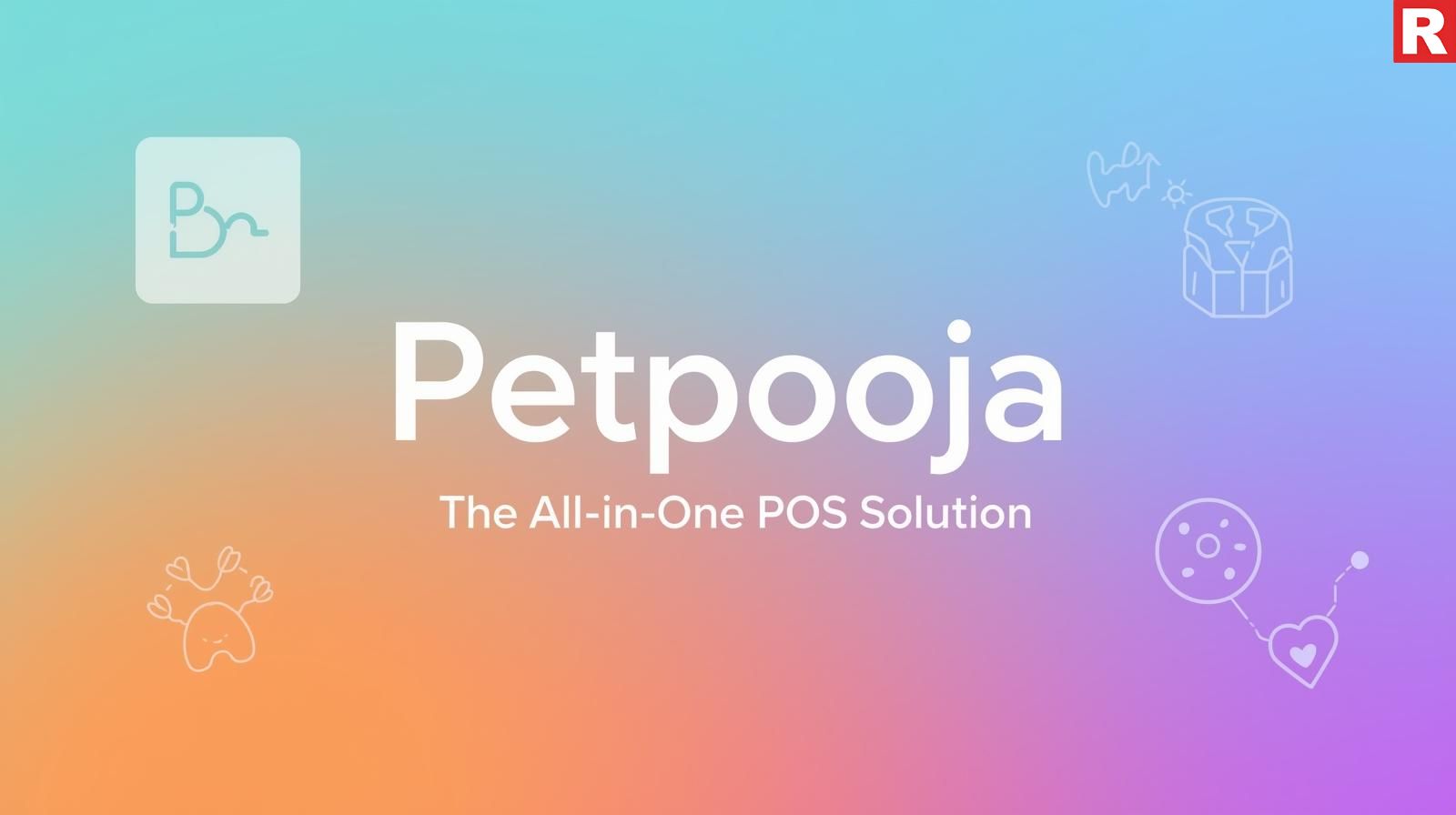
For a business searching for a complete IT solution, Petpooja stands out. Known primarily as one of Ahmedabad's top providers of point-of-sale software, it has developed into a full-fledged digital ecosystem with an integrated online ordering platform. This means allowing online ordering for current Petpooja users only requires turning on a switch.
The ability to manage online orders, inventory, reporting, and paying from a single, centralized dashboard is a huge benefit of seamless connectivity. A crucial part of Petpooja's offering is its online ordering capability, which lets restaurants design their own branded website and application. It is a strong and practical option for businesses seeking a single platform for all of their operational requirements, from front-of-house to back-of-house, since it offers crucial capabilities for order administration, customer relationship management (CRM), and analytics.
Check out: Top Tea Brand options to consider for Restaurateurs in India
How to Choose the Perfect Spooky Theme for Your Restaurant
Blinkit: The Speed & Simplicity of Delivery

Blinkit began as a local delivery service but has since grown to offer an advanced and easy online ordering system for restaurants. Blinkit, which is now a part of Zomato, is well-known for emphasizing simplicity and quickness. The platform is made for businesses that wish to go online with the least amount of hassle. It focuses on fast delivery management, has a clear interface, and is quick and simple to set up.
Restaurants that use both platforms can have a smooth experience because of the strong connection that Blinkit and Zomato have built. Blinkit is a strong choice for companies seeking a simple, uncomplicated online ordering system with a dependable delivery network that can quickly get you up and running.
UrbanPiper: The Connecting Master

For a busy restaurant, navigating the many screens and dashboards from many aggregators can be a nightmare. This issue is resolved by Bengaluru-based UrbanPiper. This connecting technology is well-known for its capacity to link a restaurant's point-of-sale system with both its own branded website and all of the main online food aggregators. This eliminates the need for several tablets and tedious data entry by allowing a restaurant to receive and manage orders from Swiggy, Zomato, and its own direct channel on a single screen.
Additionally, UrbanPiper offers restaurants a toolset to create their own websites for online ordering. Their system is incredibly flexible and adaptable, making it suitable for both major chains with complex online ordering systems and single-outlet restaurants. UrbanPiper is an amazing business-grade solution that serves as a central nerve system for all of your digital orders, giving much-needed efficiency to a hectic kitchen. It is ideal for restaurants looking to optimize their online order processes while also developing a direct ordering channel.
Read this: Top Eco-friendly Packaging Brands for Restaurants
Conclusion
Selecting the best online ordering platform is a calculated decision that requires carefully balancing the platform's features with the objectives of a restaurant. While a tiny café or cloud kitchen would favor a simpler, less expensive solution, a large, well-established restaurant with a lot of customers might prioritize an all-in-one solution or advanced middleware to speed complex operations.
In addition to cutting expenses, businesses that establish a direct channel are gaining loyal customers and an immense amount of data that can be used to boost future expansion. The success of a restaurant is fueled by the appropriate online ordering platform.
Copyright © 2009 - 2025 Restaurant India.





